
Gambling Man
by
Lionel Barber
Published 3 Oct 2024
Cast of Characters Part One Masayoshi Son, CEO and founder of SoftBank, known as ‘Masa’ Mitsunori Son, father of Masa, king of pachinko in Kyushu Tamako, mother of Masa Son Jong-gyeong, grandfather of Masa, Korean-born, emigrated to Japan in 1917 Lee Wong-jo, Korean-born, inspirational grandmother of Masa Masami Son, née Ono, Japanese wife of Masa Hong Lu, Masa’s first business partner at UC Berkeley Forrest Mozer, UC Berkeley professor, entrepreneur who developed Masa’s first product, the pocket speech translator Tadashi Sasaki (1915–2018), legendary engineer, Sharp executive and mentor to Masa Part Two Yasuhiko Omori, CEO of SoftBank Japan, 1983–6, while Masa was recovering from hepatitis B Yoshitaka Kitao, ex-Nomura Securities, CFO SoftBank (1995–9), head of SoftBank Finance, later SBI, the financial services group based in Tokyo Ted Dolotta, Polish-born computer programmer at Bell Labs, Masa’s first ‘eyes and ears’ in the US Bill Gates, co-founder Microsoft, long-time friend of Masa Kazuhiko Nishi, founder of ASCII software, partner to Bill Gates, Masa’s great rival in Japan Jack Ma, co-founder and longtime CEO of Alibaba, member of SoftBank board (2007–20) Joe Tsai, Taiwanese-Canadian lawyer, co-founder and chair of Alibaba Michael Moritz, Welsh-born venture capitalist and top partner at Sequoia Capital Ron Fisher, South African-born SoftBank executive and consigliere to Masa Jordan ‘Jordy’ Levy, venture capitalist, investor for SoftBank in the US Gary Rieschel, ex-Intel executive, venture capitalist and SoftBank executive in the US Jerry Yang, co-founder Yahoo, business partner with Masa Sheldon Adelson, Las Vegas casino magnate, long-time business ally of Masa Part Three Jeff Sine, co-founder of the Raine Group, long-time personal banker and adviser to Masa Kazuhiko Kasai, long-time adviser to Masa, SoftBank board director (2000–2013), head of SoftBank Hawks baseball team Ken Miyauchi, CEO of SoftBank Mobile and SoftBank Group board director (1988–) Yoshimitsu Goto, chief financial officer and SoftBank Group board Member Kazuko Kimiwada, top financial officer SoftBank Group Tadashi Yanai, CEO and founder of Fast Retailing, parent of fashion brand Uniqlo, and SoftBank Group board member (2001–19) Parts Four and Five Nikesh Arora, ex-Google, president of SoftBank Group, heir apparent, left in 2015 Marcelo Claure, Bolivian-American billionaire, CEO of Sprint, COO SoftBank Group Corporation Rajeev Misra, ex-Deutsche Bank, head of SoftBank Vision Fund (2017–22) Sunil Bharti Mittal, Indian telecoms billionaire and member of SoftBank board (2012–14) Akshay Naheta, ex-Deutsche Bank, head of Northstar, SoftBank’s internal hedge fund Nizar al-Bassam, Saudi-born investor and SoftBank adviser, introduced Masa to Gulf sovereign wealth funds Yasir Al-Rumayyan, head of the Saudi Public Investment Fund, major investor in SoftBank Vision Fund Katsunori Sago, ex-Goldman Sachs, chief strategy officer SoftBank Group (2018–21) Mohammed bin Salman (MBS), Crown Prince of Saudi Arabia Lex Greensill, former Queensland melon farmer turned founder of Greensill, fintech company Adam Neumann, CEO and founder of WeWork Prologue On a chilly Wednesday evening, 2 February 2000, more than 2,000 people crammed into a dimly lit discotheque called Velfarre,fn1 Tokyo’s equivalent of Studio 54 in New York.1 The suit-clad professionals streaming onto the giant underground dance floor were not about to twist the night away.
…
Cast of Characters Part One Masayoshi Son, CEO and founder of SoftBank, known as ‘Masa’ Mitsunori Son, father of Masa, king of pachinko in Kyushu Tamako, mother of Masa Son Jong-gyeong, grandfather of Masa, Korean-born, emigrated to Japan in 1917 Lee Wong-jo, Korean-born, inspirational grandmother of Masa Masami Son, née Ono, Japanese wife of Masa Hong Lu, Masa’s first business partner at UC Berkeley Forrest Mozer, UC Berkeley professor, entrepreneur who developed Masa’s first product, the pocket speech translator Tadashi Sasaki (1915–2018), legendary engineer, Sharp executive and mentor to Masa Part Two Yasuhiko Omori, CEO of SoftBank Japan, 1983–6, while Masa was recovering from hepatitis B Yoshitaka Kitao, ex-Nomura Securities, CFO SoftBank (1995–9), head of SoftBank Finance, later SBI, the financial services group based in Tokyo Ted Dolotta, Polish-born computer programmer at Bell Labs, Masa’s first ‘eyes and ears’ in the US Bill Gates, co-founder Microsoft, long-time friend of Masa Kazuhiko Nishi, founder of ASCII software, partner to Bill Gates, Masa’s great rival in Japan Jack Ma, co-founder and longtime CEO of Alibaba, member of SoftBank board (2007–20) Joe Tsai, Taiwanese-Canadian lawyer, co-founder and chair of Alibaba Michael Moritz, Welsh-born venture capitalist and top partner at Sequoia Capital Ron Fisher, South African-born SoftBank executive and consigliere to Masa Jordan ‘Jordy’ Levy, venture capitalist, investor for SoftBank in the US Gary Rieschel, ex-Intel executive, venture capitalist and SoftBank executive in the US Jerry Yang, co-founder Yahoo, business partner with Masa Sheldon Adelson, Las Vegas casino magnate, long-time business ally of Masa Part Three Jeff Sine, co-founder of the Raine Group, long-time personal banker and adviser to Masa Kazuhiko Kasai, long-time adviser to Masa, SoftBank board director (2000–2013), head of SoftBank Hawks baseball team Ken Miyauchi, CEO of SoftBank Mobile and SoftBank Group board director (1988–) Yoshimitsu Goto, chief financial officer and SoftBank Group board Member Kazuko Kimiwada, top financial officer SoftBank Group Tadashi Yanai, CEO and founder of Fast Retailing, parent of fashion brand Uniqlo, and SoftBank Group board member (2001–19) Parts Four and Five Nikesh Arora, ex-Google, president of SoftBank Group, heir apparent, left in 2015 Marcelo Claure, Bolivian-American billionaire, CEO of Sprint, COO SoftBank Group Corporation Rajeev Misra, ex-Deutsche Bank, head of SoftBank Vision Fund (2017–22) Sunil Bharti Mittal, Indian telecoms billionaire and member of SoftBank board (2012–14) Akshay Naheta, ex-Deutsche Bank, head of Northstar, SoftBank’s internal hedge fund Nizar al-Bassam, Saudi-born investor and SoftBank adviser, introduced Masa to Gulf sovereign wealth funds Yasir Al-Rumayyan, head of the Saudi Public Investment Fund, major investor in SoftBank Vision Fund Katsunori Sago, ex-Goldman Sachs, chief strategy officer SoftBank Group (2018–21) Mohammed bin Salman (MBS), Crown Prince of Saudi Arabia Lex Greensill, former Queensland melon farmer turned founder of Greensill, fintech company Adam Neumann, CEO and founder of WeWork Prologue On a chilly Wednesday evening, 2 February 2000, more than 2,000 people crammed into a dimly lit discotheque called Velfarre,fn1 Tokyo’s equivalent of Studio 54 in New York.1 The suit-clad professionals streaming onto the giant underground dance floor were not about to twist the night away.
…
Once again, Masa needed to find the cash flow to shore up SoftBank’s balance sheet. Kitao – who in 1999 had moved to SoftBank Investment (SBI), an asset management subsidiary of the newly formed SoftBank Group holding company – smelt blood. SoftBank’s deteriorating credit rating threatened the standing of SBI, he warned. If Masa wished to sell SoftBank’s 26 per cent stake to maintain its independence, Goldman Sachs was ready to step in as a friendly buyer. ‘This is our last resort,’ said Kitao, who knew this was his chance to run his own show. Masa had no alternative but to agree. In truth, both men had outgrown each other. In SoftBank’s first phase as a public company, the ex-Nomura man was an ideal foil.
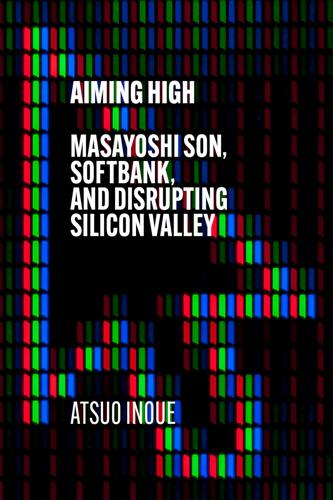
Aiming High: Masayoshi Son, SoftBank, and Disrupting Silicon Valley
by
Atsuo Inoue
Published 18 Nov 2021
‘There are still massive problems with nuclear power, which is why we have got to move our systems over to green energy use.’ Son is explicit in this respect. After the 2011 Tohoku earthquake and tsunami the presentation of a SoftBank Academia student – Miwa Shigeki, currently head of the president’s office at SoftBank – caught his eye. The end purpose of SoftBank Academia is identifying a successor to Son; to this end enrolment is accepted from adult students both inside and outside of the SoftBank Group. At the time Miwa was employed at Mitsui Bussan but had enrolled at SoftBank Academia as an external student for a cycle. Miwa was a talented trading company employee who had worked in the natural resources sector dealing with global mergers and acquisition and had a passion for energy.
…
This was the most devoted Shinba had ever been to the company, overcoming the various difficulties and conflicts as part of the development of this line of business, which in turn gave him tremendous self-confidence, and the end result was a breakthrough for SoftBank and the laying of a solid foundation for what was to come. ‘I think at SoftBank we strive to be the fastest around in terms of incorporating the latest technology and business models, and we also give customers what they want.’ As Shinba says, SoftBank have invested in many companies and established many joint ventures and strategic alliances to bring the latest technology to Japan; furthermore, via the SoftBank Vision Fund the number of allies around the world at the cutting edge of their various fields has also increased. He also states that SoftBank cannot afford to rest on their laurels, as this is at odds with their pursuit of innovation and taking on new challenges.
…
At that time I decided to ante up and throw everything I had behind them.’ SoftBank formalised their initial $2m investment, followed by an additional $100m investment to underwrite the allocation of new shares to a third party when Yahoo! went public on NASDAQ, SoftBank ultimately holding 37 per cent of shares in the American company. When SoftBank’s initial investment was concluded, a number of Japanese companies had already come in with offers saying they wanted to enter into a joint venture with Yahoo! Inoue’s meeting with Yang concerning setting up Yahoo! Japan occurred later that year, in December. Inoue can still vividly recall the meeting: ‘[SoftBank] had been selected as the partner for the joint venture but that wasn’t down to us having invested heavily in them.
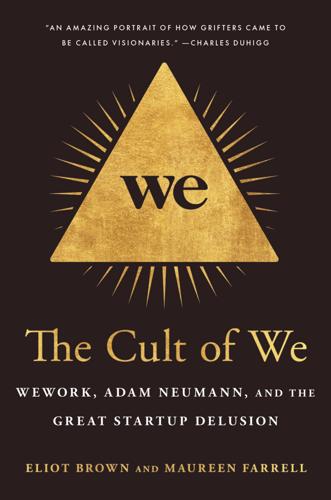
The Cult of We: WeWork, Adam Neumann, and the Great Startup Delusion
by
Eliot Brown
and
Maureen Farrell
Published 19 Jul 2021
Normally, Son wouldn’t give the share price so much attention. But he had built SoftBank up by relying heavily on debt—something that always caused his investors concern. Now, if SoftBank’s stock continued to fall, the company’s lenders could demand SoftBank repay some of the loans, immediately, quickly forcing a cash crunch at the giant conglomerate. While Son had resisted months of pressure from within his organization, SoftBank’s CFO, Yoshimitsu Goto, warned Son that shareholders would revolt further if the WeWork deal went ahead. It could send SoftBank’s stock into a downward spiral. The WeWork buyout was simply untenable, he told him.
…
He was a big booster of the deal despite the high interest rates, because he wanted to avoid more SoftBank involvement. Regardless, it became clear to WeWork’s advisers that SoftBank was going to have the upper hand. The company had previously committed to giving WeWork another $1.5 billion in May of the following year—a relic of the old deal when SoftBank was once planning to buy most of WeWork. Now, SoftBank told the company’s advisers, it would withhold that $1.5 billion payment if JPMorgan was chosen to lead the new financing round. It was effectively a death blow to JPMorgan’s efforts: the bank had been counting on SoftBank’s cash to supplement the additional funds it would raise.
…
They had plenty from Neumann’s earlier cash withdrawals, including his portion of the nearly $500 million sold by We Holdings over the years and the $500 million line of credit that SoftBank refinanced. He also had his $185 million exit package to live off, though SoftBank hadn’t yet paid the full amount. And by March, he was awaiting another nearly $1 billion set to come from SoftBank, due at the end of the month. Days before the money was supposed to roll into Neumann’s bank account—as well as those of former employees and other investors—SoftBank reneged. Citing multiple provisions in the deal documents that it thought gave it an out—a China financing deal hadn’t happened, and WeWork was dealing with investigations from regulators—SoftBank simply refused to pay up.

The Pyramid of Lies: Lex Greensill and the Billion-Dollar Scandal
by
Duncan Mavin
Published 20 Jul 2022
At Deutsche Bank, he had run a team of credit traders who profited from the crash in the US sub-prime mortgage market. He had developed a strong personal bond with Masayoshi Son since 2006, when he raised $16 billion in debt SoftBank needed for a large acquisition – the deal had helped make the SoftBank CEO a multibillionaire. Misra joined SoftBank in 2014. His rise to the top of the Vision Fund was described in scintillating detail by my former colleagues at The Wall Street Journal in an article that alleged Misra employed a series of dirty tricks to undermine his rivals for the role. Misra and SoftBank denied the allegations. The Vision Fund chief certainly has an unusual style. It is well known that he shuffles around his office in London’s glamorous Mayfair district in bare feet, playing with strings of beads while encouraging his team to make hundreds of investments, often betting enormous sums on a chosen start-up at lightning pace.
…
Instead, a spokesperson for the bank sent me a bland, on-the-record statement, by email, that said the funds are ‘highly regulated and [have] a thorough investment and due diligence process in place’ and that everything was ‘in line with the prospectus, investment guidelines and marketing material.’ Greensill was equally unhelpful. I got another email, this time apparently highlighting the SoftBank connection as a positive: ‘The investment from and relationship with SoftBank has provided Greensill access to numerous new relationships, from across the Vision Fund and externally, for us to evaluate.’ It seemed like a vague reference to something Masayoshi Son had said about the ‘Cluster of No. 1’ strategy. SoftBank’s website explains that SoftBank-backed companies ‘are encouraged to form synergies to evolve and grow together based on capital ties and a shared vision while making decisions independently.’
…
R. ref1 Shop Direct ref1 Shoreditch ref1, ref2 Shuttleworth, Daniel ref1 Silicon Valley ref1, ref2 SIMAG see Systematic Investment Management AG SIMEC Group ref1, ref2 Skirzenski, Dave ref1, ref2 Sky News ref1 Sky television ref1 small to medium-sized enterprises (SMEs) ref1, ref2 SMBC ref1 Smith, Robert ref1 Smithfield ref1 Smythson ref1 SNL Financial ref1 Société Générale ref1 SoftBank ref1, ref2, ref3, ref4, ref5 corporate espionage ref1 and Greensill Bank AG ref1, ref2 and Greensill Capital ref1, ref2, ref3, ref4, ref5, ref6, ref7, ref8, ref9, ref10, ref11, ref12, ref13, ref14, ref15, ref16, ref17, ref18, ref19, ref20, ref21, ref22, ref23, ref24 and Wirecard ref1 SoftBank Group ref1 SoftBank Group Corp ref1 SoftBank Vision Fund ref1, ref2, ref3, ref4, ref5, ref6, ref7, ref8, ref9, ref10, ref11, ref12, ref13, ref14, ref15, ref16, ref17, ref18, ref19, ref20, ref21 Solo, David ref1, ref2, ref3, ref4, ref5, ref6, ref7, ref8, ref9, ref10, ref11 Son, Masayoshi ref1, ref2, ref3, ref4, ref5, ref6, ref7, ref8, ref9 Spain ref1 Special Needs Group ref1, ref2, ref3 special purpose acquisition companies (SPACs) ref1, ref2 special purpose vehicles (SPVs) ref1, ref2, ref3, ref4, ref5, ref6, ref7 Standalone Policy ref1 Standard & Poor ref1 Standard Chartered bank ref1 Starbucks ref1 steel ref1, ref2, ref3, ref4, ref5, ref6, ref7, ref8, ref9 Steinberg, Julie ref1, ref2, ref3, ref4, ref5, ref6 Steinway development ref1 Stephenson and Turner (S&T) ref1 Sumitomo ref1 Sunak, Rishi ref1, ref2 Sunday Times, The (newspaper) ref1 supply chain finance (SCF) ref1, ref2, ref3, ref4, ref5, ref6, ref7, ref8, ref9, ref10, ref11, ref12, ref13, ref14, ref15, ref16, ref17, ref18, ref19, ref20, ref21, ref22, ref23, ref24, ref25, ref26, ref27, ref28, ref29, ref30, ref31, ref32, ref33, ref34, ref35, ref36, ref37, ref38, ref39, ref40, ref41, ref42, ref43 and bullying ref1 and the Covid-19 pandemic ref1, ref2 as loophole to hide borrowings ref1 public sector ref1 Swiss Bank Corporation ref1 Sydney ref1, ref2, ref3 Systematic Investment Management AG (SIMAG) ref1 Tadawul (Saudi stock exchange) ref1 Taribelang people ref1 Taulia (payment platform) ref1, ref2, ref3, ref4 tax relief schemes ref1 TBCC ref1 TDR Capital ref1 tech businesses ref1, ref2, ref3, ref4, ref5 Telstra ref1, ref2 ‘ten baggers’ ref1 10 Downing Street ref1, ref2, ref3, ref4, ref5 Tesco ref1 Textura ref1 Thatcher administration ref1 Theranos ref1 Thiam, Tidjane ref1, ref2, ref3 Thompson, Maurice ref1, ref2, ref3, ref4, ref5, ref6, ref7 Thunder ref1 Thyssengrupp ref1 Times, The (newspaper) ref1, ref2, ref3 Tokio Marine ref1, ref2, ref3, ref4, ref5, ref6 The Bond and Credit Company (TBCC) ref1, ref2, ref3 Tower Trade Group ref1, ref2, ref3, ref4, ref5, ref6 trade credit insurance ref1, ref2, ref3, ref4, ref5, ref6, ref7, ref8, ref9, ref10, ref11, ref12, ref13, ref14, ref15, ref16, ref17, ref18, ref19, ref20 trade finance ref1, ref2, ref3, ref4, ref5, ref6, ref7 see also supply chain finance Tradeshift Networks ref1, ref2 Transaction Risk Mitigation (TRM) ref1, ref2, ref3, ref4, ref5 Transport for London (TfL) ref1 Trehan, Ravi ref1 Trump, Donald ref1 Uber ref1, ref2 UBS ref1, ref2 UK Export Finance (UKEF) ref1 UMobile ref1 ‘Unicorns’ ref1, ref2 UniCredit ref1, ref2 United Utilities ref1 US Treasury ref1 Utah Industrial Bank ref1 Varvel, Eric ref1, ref2, ref3, ref4 View Inc. ref1 Vodafone ref1, ref2, ref3, ref4, ref5, ref6, ref7, ref8 Volga Dnepr Group ref1 Volkswagen ref1 ‘vulture funds’ ref1 Wagestream ref1 Wall Street ref1, ref2, ref3, ref4, ref5, ref6, ref7, ref8 Wall Street Journal, The (newspaper) ref1, ref2, ref3, ref4, ref5, ref6, ref7, ref8, ref9, ref10, ref11, ref12, ref13, ref14, ref15, ref16, ref17 Walmart ref1 Wang, Vera ref1 Wareing, Marcus ref1 Warner, Lara ref1, ref2, ref3 Warshaw, Robey ref1 Washington Post, The (newspaper) ref1 Wellcome Trust ref1 WestLB bank ref1 Westminster ref1 WeWork ref1, ref2, ref3, ref4, ref5 White House ref1 White Oak Global Advisors ref1, ref2 Whitehall ref1, ref2 Widodo, Joko ref1 Wirecard AG ref1, ref2, ref3, ref4 Wolfenden, Rodney ref1 World Economic Forum ref1 World Health Organization (WHO) ref1 World Trade Center, New York ref1 Wuhan ref1 Wyelands bank ref1, ref2, ref3 Xavier, Navin ref1 Yoo ref1 York Capital Management ref1 Zahawi, Nadhim ref1 Zhengyao, Lu ref1 ZTE ref1 Zume ref1 About the Author DUNCAN MAVIN is a seasoned international financial journalist who started his career as a chartered accountant in the City and in Toronto.
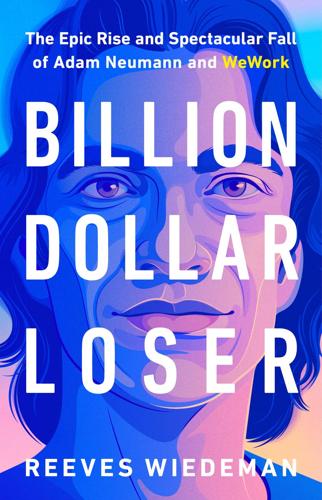
Billion Dollar Loser: The Epic Rise and Spectacular Fall of Adam Neumann and WeWork
by
Reeves Wiedeman
Published 19 Oct 2020
Benchmark stood to cash in around $1 billion at the higher-end projections on WeWork’s IPO, but the firm had already sold more than $300 million worth of its shares to SoftBank—a twentyfold gain on its $16.5 million investment. SoftBank, however, had invested more than $10 billion into WeWork and gotten nothing in return. The Vision Fund was down nearly $2 billion in the most recent quarter, during which Uber’s stock had slipped. SoftBank shares were down 10 percent since Wingspan’s release. Both WeWork and SoftBank executives were coming to grips with the realization that its IPO might be priced at a level far below its $47 billion valuation. While SoftBank’s preferred shares gave it some protection—it could get its money out before the company’s employees—a valuation below what SoftBank paid for its shares would mean that the firm’s investment was underwater, much as it was with Uber.
…
Among the firms that considered investing was SoftBank, the Japanese conglomerate, which had a small venture capital arm in the United States. One of its New York–based investors suggested WeWork as the kind of company on which SoftBank might want to place one of the large bets for which its founder, Masayoshi Son, had become famous. But the WeWork pitch died with Nikesh Arora, SoftBank’s then-president, who didn’t see how it fit the firm’s focus on technology companies. The pitch never even got to Son. “The response was extraordinarily negative,” the SoftBank investor told me. “It was almost like I was an idiot for even bringing it up.”
…
One morning, he stood on a tangerine crate and told his two employees they had to listen to him because he was their boss and that SoftBank would one day become a billion dollar company. Both employees quit. SoftBank struggled to take off, so Masa started several magazines, including Oh! PC, to help drive interest. But the publication began to tank, and Masa feared the consequences of an early public defeat. “If we stopped the magazines, everyone would say that SoftBank was in trouble—that SoftBank was going to die,” he said. Masa went all in, doubling the pages in the next issue, printing twice as many copies, and spending the rest of his money on television ads.

The Everything Blueprint: The Microchip Design That Changed the World
by
James Ashton
Published 11 May 2023
guccounter=1&guce_referrer=aHR0cHM6Ly93d3cuZ29vZ2xlLmNvbS8&guce_referrer_sig=AQAAADm6BrFV203VRHRLQndFf8gJBYJK7pz_ovVs—TO52FsyxbNG3rCKZ4rZMLRVd7raYmcX 24 https://www.counterpointresearch.com/semiconductor-revenue-ranking-2021/ 13. NVIDIA’S PARALLEL UNIVERSE 1 https://group.softbank/en/news/webcast/20190919_01_en 2 https://group.softbank/en/news/press/20161014 3 https://www.wework.com/newsroom/wecompany 4 https://www.reuters.com/article/us-softbank-group-results-idUSKBN1XG0Q9 5 https://group.softbank/system/files/pdf/ir/financials/annual_reports/annual-report_fy2020_01_en.pdf 6 https://group.softbank/system/files/pdf/ir/financials/annual_reports/annual-report_fy2020_01_en.pdf 7 https://group.softbank/en/news/webcast/20190919_02_en 8 https://group.softbank/en/news/webcast/20190919_02_en 9 https://www.gartner.com/en/newsroom/press-releases/2014-11-11-gartner-says-nearly-5-billion-connected-things-will-be-in-use-in-2015 10 https://www.gartner.com/en/newsroom/press-releases/2016-01-14-gartner-says-by-2020-more-than-half-of-major-new-business-processes-and-systems-will-incorporate-some-element-of-the-internet-of-things 11 https://www.gartner.com/en/newsroom/press-releases/2017-02-07-gartner-says-8-billion-connected-things-will-be-in-use-in-2017-up-31-percent-from-2016 12 https://group.softbank/system/files/pdf/ir/financials/annual_reports/annual-report_fy2020_01_en.pdf 13 https://www.electronicsweekly.com/blogs/mannerisms/dilemmas/arm-ipo-2023-2019-10/ 14 https://group.softbank/system/files/pdf/ir/financials/annual_reports/annual-report_fy2017_01_en.pdf 15 ‘Accomplished team of graphics and multimedia experts’, Business Wire, 25 July 1994. 16 https://pressreleases.responsesource.com/news/3992/nvidia-launches-the-world-s-first-graphics-processing-unit-geforce-256/ 17 http://www.machinelearning.org/archive/icml2009/papers/218.pdf 18 https://www.telegraph.co.uk/technology/2020/09/19/nvidia-boss-vows-protect-arm-generation-company/ 19 https://group.softbank/en/news/press/20200914_0 20 https://blogs.nvidia.com/blog/2020/09/13/jensen-employee-letter-arm/ 21 https://asia.nikkei.com/Business/SoftBank2/SoftBank-s-Son-entrusts-Arm-to-Nvidia-s-leather-jacket-clad-chief 22 Inoue, Aiming High, p. 271. 23 https://www.telegraph.co.uk/technology/2020/09/19/nvidia-boss-vows-protect-arm-generation-company/ 24 https://group.softbank/en/news/press/20180605 25 https://asia.nikkei.com/Business/Companies/Arm-s-China-joint-venture-ensures-access-to-vital-technology 26 https://asia.nikkei.com/Business/China-tech/How-SoftBank-s-sale-of-Arm-China-sowed-the-seeds-of-discord 27 https://www.bloomberg.com/news/articles/2021-02-12/google-microsoft-qualcomm-protest-nvidia-s-arm-acquisition 28 https://www.savearm.co.uk/ 29 https://www.theresa2016.co.uk/we_can_make_britain_a_country_that_works_for_everyone 30 https://www.bbc.co.uk/news/business-52275201 31 https://www.arm.com/company/news/2021/03/arms-answer-to-the-future-of-ai-armv9-architecture#:~:text=Cambridge%2C%20UK%2C%20March%2030%2C,and%20artificial%20intelligence%20(AI). 32 https://nvidianews.nvidia.com/news/nvidia-launches-uks-most-powerful-supercomputer-for-research-in-ai-and-healthcare#:~:text=Cambridge%2D1%20is%20the%20first,to%20the%20greater%20scientific%20community 33 https://www.ftc.gov/news-events/news/press-releases/2021/12/ftc-sues-block-40-billion-semiconductor-chip-merger 34 https://assets.publishing.service.gov.uk/media/61d81a458fa8f505953f4ed7/NVIDIA-Arm_-_CMA_Initial_Submission_-_NCV_for_publication__Revised_23_December_2021_.pdf 35 https://www.theatlantic.com/technology/archive/2013/05/paul-otellinis-intel-can-the-company-that-built-the-future-survive-it/275825/ 36 https://assets.publishing.service.gov.uk/media/61d81a458fa8f505953f4ed7/NVIDIA-Arm_-_CMA_Initial_Submission_-_NCV_for_publication__Revised_23_December_2021_.pdf 37 https://group.softbank/en/news/press/20220208 38 https://www.arm.com/company/news/2022/02/arm-appoints-rene-haas-as-ceo 14.
…
A 300-YEAR VISION, A 64-DAY TAKEOVER 1 Duncan Clark, Alibaba: The House that Jack Ma Built, Ecco, 2016. 2 https://www.reuters.com/article/alibaba-ipo-board-idINL4N0QK3Q120140827 3 Atsuo Inoue, Aiming High: Masayoshi Son, SoftBank, and Disrupting Silicon Valley, Hodder & Stoughton, 2021. 4 https://www.independent.co.uk/news/people/profiles/simon-segars-interview-looking-forward-future-and-internet-things-9789959.html 5 https://www.independent.co.uk/news/people/profiles/simon-segars-interview-looking-forward-future-and-internet-things-9789959.html 6 https://www.investegate.co.uk/arm-holdings-plc—arm-/rns/analyst-and-investor-day-2015/201509150700080227Z/ 7 https://www.mckinsey.com/business-functions/mckinsey-digital/our-insights/the-internet-of-things-the-value-of-digitizing-the-physical-world 8 https://asia.nikkei.com/Business/Companies/Masayoshi-Son-talks-about-how-Steve-Jobs-inspired-SoftBank-s-Arm-deal 9 Inoue, Aiming High, p. 270. 10 https://www.businesswire.com/news/home/20160621005758/en/SoftBank-to-Sell-Supercell-Stake-at-USD-10.2-Billion-Valuation 11 https://group.softbank/en/news/press/20150511_4 12 ‘SoftBank CEO Son plans to work at least 5 more yrs as Arora quits’, Japan Economic Newswire, 22 June 2016. 13 https://www.livemint.com/Companies/uzZ0D4e4DyjvqIUqETMbYP/The-trigger-for-Nikesh-Aroras-SoftBank-resignation.html 14 https://www.deepchip.com/items/0562-04.html 15 https://www.theresa2016.co.uk/we_can_make_britain_a_country_that_works_for_everyone 16 https://www.youtube.com/watch?
…
For all the talk of collaborating with other investee companies, Arm had been largely left to its own devices under SoftBank. No longer. Incidentally, the product of Son’s fascination with IOT, the Pelion platform and associated assets, were separated out and would remain with SoftBank. The vision was still there, no doubt, but the business had been slow to mature. Son and Huang knew each other well. One month after SoftBank’s acquisition of Arm in 2016, they met in a suite of the Tokyo Conrad Hotel, located in the upper floors of the tower that housed SoftBank’s headquarters. The pair were there to sign an agreement to work together on self-driving cars, but soon began thinking bigger when Son posed the question: ‘The entire world will eventually become a single computer.
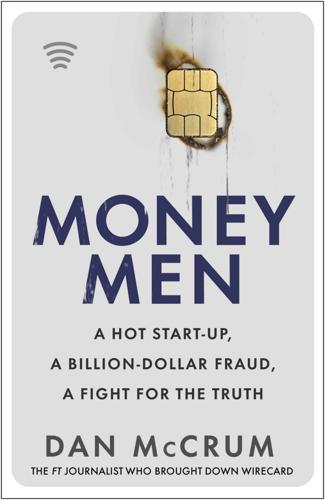
Money Men: A Hot Startup, a Billion Dollar Fraud, a Fight for the Truth
by
Dan McCrum
Published 15 Jun 2022
He had been approached by SoftBank, the Japanese conglomerate whose €100bn Vision Fund had transformed technology investing mainly by raising the table stakes for everyone involved. It doled out billions to chosen companies like WeWork, encouraging them to use the money to smash the competition. A former Deutsche Bank trader called Akshay Naheta, now an investor at SoftBank, smelled an opportunity at Wirecard. His bet was that whatever the accounting issues, the stock was cheap. Backing from SoftBank would rehabilitate Wirecard’s reputation overnight. Plus, if the SoftBank family of companies all used Wirecard for their payments processing, that flood of new business would wash away any problems.
…
A charming and handsome networker, Angermayer also went to the parties of his very good friend Alexander Schütz, whom he helped put on the board of Deutsche Bank in 2017. SoftBank’s Akshay Naheta was soon in touch with Wirecard’s Markus Braun, and the outline of a deal came into view. SoftBank would lend Wirecard €900m (then equivalent to $1bn) in the form of a convertible bond, a type of debt which could be exchanged later for Wirecard stock. The proposed financial terms were so one-sided it would effectively be a gift to SoftBank for their support, so shareholders would have to approve it at the annual meeting that summer. In conversations about the deal Braun repeatedly said versions of the same thing: ‘The cash I don’t need, the SoftBank brand is nice, the business is what I want.’
…
As it would turn out (revealed by Paul Davies at the Wall Street Journal) it was neither. The SoftBank group and the Vision Fund both declined to invest. So instead it was offered to SoftBank senior staff, and an Abu Dhabi sovereign wealth fund called Mubadala that was deeply enmeshed in the Vision Fund. To them the easy money was as tempting as a Louis Vuitton bag left by the side of the road, and they snapped it up. SoftBank’s involvement was to manage the juicy Wirecard investment on their behalf, earning a share of the profits. Was it a deception? It’s impossible to know how Wirecard shareholders would have reacted if the arrangements were made clear when SoftBank’s investment was announced by Wirecard the previous April.

Ghost Road: Beyond the Driverless Car
by
Anthony M. Townsend
Published 15 Jun 2020
Cheape, Moving the Masses: Urban Public Transit in New York, Boston, and Philadelphia 1880–1912 (Cambridge, MA: Harvard University Press, 1980), 1. 175companies merely joined forces: Cheape, Moving the Masses, 172. 175the most powerful, reviled traction monopoly: Walt Crowley, “City Light’s Birth and Seattle’s Early Power Struggles, 1886–1950,” History Link, April 26, 2000, https://www.historylink.org/File/2318. 175enjoyed decades of unrivaled power: Owain James, “We Miss Streetcars’ Frequent and Reliable Service, Not Streetcars Themselves,” Mobility Lab, April 17, 2019, https://mobilitylab.org/2019/04/17/we-miss-streetcars-frequent-and-reliable-service-not-streetcars-themselves/; combination of technological change and federal intervention: “Jersey Trolley Merger,” Wall Street Journal, May 13, 1905, 2. 176$100 billion Vision Fund: Katrina Brooker, “The Most Powerful Person in Silicon Valley,” Fast Company, January 14, 2019, https://www.fastcompany.com/90285552/the-most-powerful-person-in-silicon-valley. 176its total commitment to some $9 billion: Pavel Alpeyev, Jie Ma, and Won Jae Ko, “Taxi-Hailing Apps Take Root in Japan as SoftBank, Didi Join Fray,” Bloomberg, July 19, 2018, https://www.bloomberg.com/news/articles/2018-07-19/softbank-didi-to-roll-out-taxi-hailing-business-in-japan. 177$2 billion into Singapore-based Grab: Yoolim Lee, “Grab Vanquishes Uber with Local Strategy, Billions from SoftBank,” Bloomberg, March 26, 2018, https://www.bloomberg.com/news/articles/2018-03-26/grab-vanquishes-uber-with-local-strategy-billions-from-softbank. 177Ola downloaded $2 billion: Saritha Rai, “India’s Ola Raises $2 Billion from SoftBank, Tencent,” Bloomberg, October 2, 2017, https://www.bloomberg.com/news/articles/2017-10-02/india-s-ola-is-said-to-raise-2-billion-from-softbank-tencent. 17715 percent stake in Uber: Alison Griswold, “SoftBank—not Uber—Is the Real King of Ride-Hailing,” Quartz, January 23, 2018, https://qz.com/1187144/softbank-not-uber-is-the-real-king-of-ride-hailing/. 177Uber picked off Dubai-based Careem: Adam Satariano, “This Estonian Start-Up Has Become a Thorn in Uber’s Side,” New York Times, April 23, 2019, https://www.nytimes.com/2019/04/23/technology/bolt-taxify-uber-lyft.html. 177The damage to consumers: Justina Lee, “Singapore Fine Is ‘Minor Bump’ in Grab’s Ride-Hailing Dominance,” Nikkei Asian Review, September 25, 2018, https://asia.nikkei.com/Spotlight/Sharing-Economy/Singapore-fine-is-minor-bump-in-Grab-s-ride-hailing-dominance. 177Grab cornered more than 80 percent: Ardhana Aravindan, “Singapore Fines Grab and Uber, Imposes Measures to Open Up Market,” Reuters, September 23, 2018, https://www.reuters.com/article/us-uber-grab-singapore/singapore-fines-grab-and-uber-imposes-measures-to-open-up-market-idUSKCN1M406J. 177all launched antitrust investigations: Mai Nguyen, “Vietnam Says Eyeing Formal Antitrust Probe into Uber-Grab Deal,” Reuters, May 16, 2018, https://www.reuters.com/article/us-uber-grab-vietnam-idUSKCN1IH0XNiAikaRey, “Antitrust Watchdog Fines Grab P16 Million over Uber Deal,” Rappler, October 17, 2018, https://www.rappler.com/business/214502-philippine-competition-commission-fines-grab-philippines-over-uber-deal; Yoolim Lee, “Singapore Watchdog Fines Uber, Grab $9.5 Million over Merger,” Bloomberg, September 24, 2018, https://www.bloomberg.com/news/articles/2018-09-24/singapore-fines-uber-grab-s-13-million-for-merger-infringement. 177another fare-slashing battle with Ola: “Steering Group: A Bold Scheme to Dominate Ride-Hailing,” The Economist, May 10, 2018, https://www.economist.com/briefing/2018/05/10/a-bold-scheme-to-dominate-ride-hailing. 177“SoftBank is playing the ride-hailing”: Alison Griswold, “Softbank Has Spread Its Ride-Hailing Bets and Didi Looks Like an Early Win,” Quartz, April 24, 2018, https://qz.com/1261177/softbanks-winner-in-ride-hailing-is-chinas-didi-chuxing-not-uber/. 177“driver incentives, passenger discounts”: Tim O’Reilly, “The Fundamental Problem with Silicon Valley’s Favorite Growth Strategy,” Quartz, February 5, 2019, https://qz.com/1540608/the-problem-with-silicon-valleys-obsession-with-blitzscaling-growth/. 178“locked in a capital-fueled deathmatch”: O’Reilly, “The Fundamental Problem.” 178The Vision Fund’s biggest investor: Brooker, “The Most Powerful Person.” 178the proceeds of an earlier liquidation: Catherine Shu, “Saudi Arabia’s Sovereign Fund Will Also Invest $45B in SoftBank’s Second Vision Fund,” Tech-Crunch, October 2018, https://techcrunch.com/2018/10/07/saudi-arabias-sovereign-fund-will-also-invest-45b-in-softbanks-second-vision-fund/. 178Uber’s multi-billion-dollar quarterly losses: “Aramco Value to Top $2 Trillion, Less Than 5 Percent to Be Sold, Says Prince,” Reuters, April 25, 2016, https://www.reuters.com/article/us-saudi-plan-aramco-idUSKCN0XM16M. 178the House of Saud: Brooker, “The Most Powerful Person.” 178thwart municipal officials’ attempts at enforcement: Mike Isaac, “How Uber Deceives the Authorities Worldwide,” New York Times, March 3, 2017, https://www.nytimes.com/2017/03/03/technology/uber-greyball-program-evade-authorities.html. 179“Even if that means paying money”: Dara Khosrowshahi, “The Campaign for Sustainable Mobility,” Uber, September 26, 2018, https://www.uber.com/newsroom/campaign-sustainable-mobility/. 180Five-cent nickel fares: Cheape, Moving the Masses, 174–75. 180cities . . . grant a ride-hail monopoly: “Free Exchange: The Market for Driverless Cars Will Head towards Monopoly,” The Economist, June 7, 2018, https://www.economist.com/finance-and-economics/2018/06/07/the-market-for-driverless-cars-will-head-towards-monopoly. 180“corrupt and contented”: Cheape, Moving the Masses, 177. 180Jay Gould’s Manhattan Railway Company: Terry Golway, Machine Made: Tammany Hall and the Creation of Modern American Politics (New York: Live-right, 2014), 135. 180took over Puget Sound’s streetcar: Crowley, “City Light’s Birth.” 181Public transit was the competition: United States Securities and Exchange Commission, Registration Statement under the Securities Act of 1933: Uber Technologies, April 11, 2019, 25, https://www.sec.gov/Archives/edgar/data/1543151/000119312519103850/d647752ds1.htm#toc. 181deploy predatory pricing: United States Securities and Exchange Commission, Registration Statement. 182“have been created based on cash flows”: “Asset-Backed Security,” Investo-pedia, accessed December 7, 2018, https://www.investopedia.com/terms/a/asset-backedsecurity.asp. 183Amazon’s body-tracking technology: “The Learning Machine: Amazon’s Empire Rests on its Low-Key Approach to AI,” The Economist, April 11, 2019, https://www.economist.com/business/2019/04/13/amazons-empire-rests-on-its-low-key-approach-to-ai. 8.
…
Nowhere are the ambitions of tomorrow’s traction tycoons clearer than in the empire assembled by SoftBank, the Japanese holding company founded by Masayoshi Son in 1981 (Figure 7-2). From its humble beginnings as a computer parts store, SoftBank has grown into the world’s largest technology investor. The group’s $100 billion Vision Fund, launched in 2017, wields a purse that is itself bigger than the entire venture-capital industry, which invests a mere $70 billion annually worldwide. Staking this purse on young companies that are exploiting artificial intelligence to reorganize big chunks of the physical world, SoftBank’s investments span the gamut of city-building sectors—real estate, hospitality, food, and retail.
…
But the first target for world domination—and the key to it all—is transportation. Rarely has so much money moved so fast. The Vision Fund launched in May 2017, a few days after SoftBank announced its second infusion of cash into Chinese ride-hail giant Didi. That $5.5 billion financing brought its total commitment to some $9 billion. Then in July, Didi and SoftBank poured a combined $2 billion into Singapore-based Grab, which operates throughout Southeast Asia. October was India’s turn, where local upstart Ola downloaded $2 billion of SoftBank loot to its accounts. Finally, in November, the group took a $10 billion, 15 percent stake in Uber. To top it off, in 2019 Uber picked off Dubai-based Careem, a Middle East operator, for $3.1 billion.
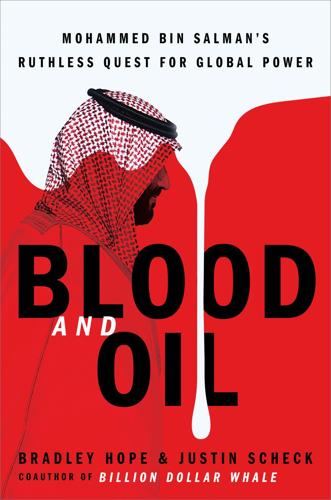
Blood and Oil: Mohammed Bin Salman's Ruthless Quest for Global Power
by
Bradley Hope
and
Justin Scheck
Published 14 Sep 2020
In canvassing for partners, Nizar and his colleagues began talking to another old Deutsche Bank hand, the chain-vaping head of strategic finance at Japanese tech conglomerate SoftBank Corp., Rajeev Misra. An arrogant financial engineer with a taste for debt and risk, Rajeev was a senior Deutsche Bank banker during the financial crisis, overseeing a team that eventually profited from betting against the housing market. He left soon after, making brief stops at UBS and Fortress Investment Group before landing at SoftBank. Rajeev had reconnected with Masayoshi Son, SoftBank’s technology-obsessed founder, at a wedding in Italy a few months earlier and subsequently accepted a job trying to help Masayoshi develop complex debt structures to fund his ambitions.
…
But in conversations with Nizar and his business partners, Rajeev became convinced there was more money waiting on the sidelines than he knew during his years as a banker specializing in the bond market. Then one of his rivals resigned, paving the way for him to begin consolidating power at SoftBank. Sovereign wealth funds would pair perfectly with Masayoshi’s billions. SoftBank and Nizar’s new firm, FAB Partners (later rebranded as Centricus), worked together to create an idea, called Project Crystal Ball, for a $20 billion fund that would make investments in technology start-ups with money from SoftBank and partners willing to accept Masayoshi’s gut-instinct style of high-speed investing. They decided to pitch Qatar on the idea first. Nizar had strong ties there already, and the tiny Gulf peninsula had more savings per capita than any country on earth thanks to its massive natural gas fields and tiny population.
…
After visiting the cruise ship full of consultants off NEOM’s coast, Masayoshi told Mohammed that he was a visionary and agreed to have SoftBank partner on one of NEOM’s most ambitious projects: “A new way of life from birth to death reaching genetic mutations to increase human strength and IQ,” as the consultants later described it. Speaking later, Masayoshi referred to Mohammed bin Salman as the “Bedouin Steve Jobs.” Rajeev, the SoftBank executive, had his own enormous task at hand. The Saudi and Abu Dhabi money made him change his mind about leaving SoftBank. Now he had more financial firepower than just about anyone on earth and a fly-by-the-seat-of-his-pants boss who was happy to make multi-billion-dollar investments with a quick meeting and a “gut instinct.”
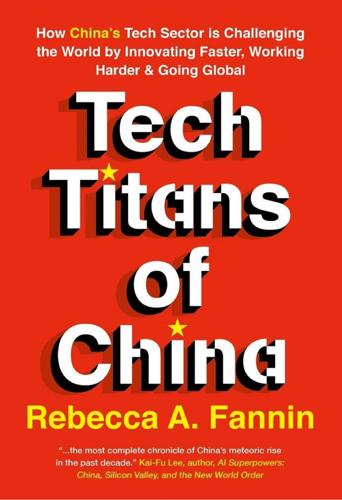
Tech Titans of China: How China's Tech Sector Is Challenging the World by Innovating Faster, Working Harder, and Going Global
by
Rebecca Fannin
Published 2 Sep 2019
Table 7-2 Comparing Didi and Uber Start Date and Headquarters Didi: 2012 in Beijing Uber: 2009 in San Francisco Venture Capital Raised Didi: $21 billion Uber: $20 billion Number of Users Didi: 40 million monthly users Uber: 40 million monthly users Locations Didi: 400 cities Uber: 400 cities Market Share in Home Market Didi: 80 percent Uber: 73 percent Backers Didi: Tencent, Alibaba, SoftBank, Apple, and Singapore government investment fund Temasek Uber: SoftBank, Baidu, Google Ventures, private equity firm TPG, and Silicon Valley VC firm Benchmark Capital Market Valuation Didi: $4 billion financing in late 2017 from SoftBank and an Abu Dhabi state fund with $56 billion valuation, ranked third among global unicorns Uber: investment in early 2018 from SoftBank consortium with $72 billion valuation, ranked second among global unicorns Public Listing Plans Didi: plans to go public have been delayed and company is restructuring Uber: went public in 2019 Didi Buys Out Uber in China Contrasts between Uber and Didi take on a whole new meaning when you consider what happened to Uber in China.
…
in China and beating eBay weren’t big enough accomplishments, his move into fintech with Ant Financial is the one to watch. Ma spun Alipay out of Alibaba in a controversial move in 2011 that sparked a dispute with major shareholders Yahoo! and SoftBank over corporate governance standards and how compensation for the loss of Alipay would be made. Ma claimed the spin-off was necessary because of new Chinese government regulations that prohibit foreign ownership structures for payment services. An agreement was reached a year later with Yahoo! and SoftBank, guaranteeing they would get a share of the financial rewards in case the spun-off entity went public or got acquired. Shortly after Alibaba scored its mega IPO in New York in 2014, Alipay’s financial services business was rebranded Ant Financial in a new push into financial services, and then in 2018, Alibaba crawled back in, buying a 33 percent stake in Ant Financial.
…
Qiming got an early start in China tech investing in 2006, spearheaded by founding partner Gary Rieschel, a pioneer and mentor in the business of venture—and someone whose career I’ve followed since before the dotcom bubble burst. Rieschel had a good sense of an about-to-boom tech economy from working in Japan during the late 1980s and from setting up and running SoftBank’s US venture capital business from Silicon Valley in the go-go period of mid-1990s through the downward cycle ending about eight years later. By 2005, when Rieschel had wound down his involvement with SoftBank, he and his wife moved to Shanghai just as internet startups were being seeded. He formed Qiming Venture in 2006 with Duane Kuang, the former director of Intel Capital China, in partnership with a venture capital firm in the Seattle area, Ignition Partners.
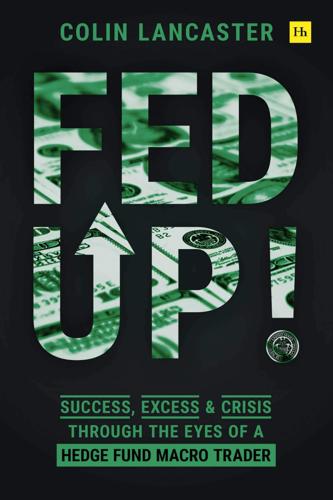
Fed Up!: Success, Excess and Crisis Through the Eyes of a Hedge Fund Macro Trader
by
Colin Lancaster
Published 3 May 2021
I’m back in Miami but wake up in the middle of the night for the SoftBank earnings call. SoftBank is based in Tokyo. I log into my computer and see the Rabbi is already online. He loves these calls. Wow. Earnings are a disaster. Vision Fund lost close to $18 billion in the most recent fiscal year, triggering the worst loss ever for the Japanese company. SoftBank had to write down the valuations of the big unicorns it owned. WeWork’s value has fallen by 95% this year. Masa Son concedes he’s unlikely to draw outside investors for another Vision Fund, an initiative he once proclaimed as the future of SoftBank as it moved away from the telecom business.
…
Neumann, the WeWork CEO whom Jerry liked to stalk, will be keeping busy with his lawsuit against SoftBank. He sued the bank for scrapping the bailout, which had included a plan to buy $3 billion worth of stock from Neumann and other shareholders. But the bank scrapped the deal, claiming WeWork hadn’t met the conditions of the contract and citing legal inquiries by the US Department of Justice (DOJ) and the SEC. According to The Guardian newspaper, reporting on this latest lawsuit, “Mr. Neumann put his trust in [SoftBank and SoftBank’s Vision Fund] to be stewards of WeWork, which he and thousands of others had worked so hard to build,” only to be met with “brazen” abuses.
…
Just look for the scarf. We are sitting at our normal table in the restaurant, waiting for the food to arrive. A headline has just hit on WeWork, and all of us are checking our phones. WeWork is run by a guy named Adam Neumann, and its largest shareholder is a company called SoftBank, run by Masayoshi Son.5 SoftBank has been pouring money into fast-growing tech companies. Masa Son famously lost $70 billion, the most money lost in stock market history, during the dotcom bust. He’s back at it again and swinging for the fences. WeWork is his new crown jewel and is considered one of the unicorns.
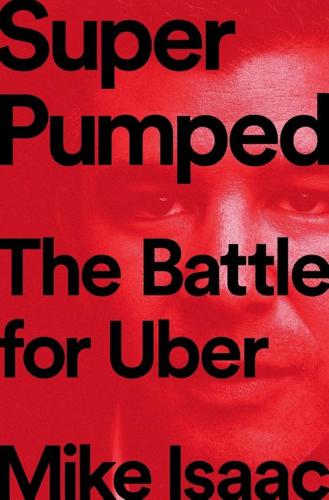
Super Pumped: The Battle for Uber
by
Mike Isaac
Published 2 Sep 2019
Webvan, one of Son’s biggest losing investments, also happened to be a portfolio company of Benchmark’s. Masa wasn’t down for long. Over the next decade he continued making big, bold bets and built SoftBank back to the force it once was. By the early 2010s, SoftBank owned stakes in more than a thousand internet companies; his acquisition of Sprint made SoftBank the world’s third-largest telecommunications company. Friends and colleagues considered him fearless. Son said he hoped to be remembered as a “crazy guy who bet on the future.” By 2017, SoftBank had been making serious turbulence in Silicon Valley by slinging money from the “Vision Fund,” an enormous $100-billion pool of capital formed by the Public Investment Fund of Saudi Arabia, the Abu Dhabi Investment Authority, Apple, Qualcomm, and SoftBank itself, along with a few others.
…
It was a deal that would come months later, in the form of what Gurley called “the Grand Bargain,” courtesy of SoftBank and Masayoshi Son. In December, Son reached a deal with Khosrowshahi and Uber’s board, in which SoftBank would purchase some 17.5 percent of Uber’s overall shares in what was called a tender offer, a way for outsiders to buy stock from existing shareholders in the company. The SoftBank shares would come from a group of people, including employees who were long waiting to sell but couldn’t due to Kalanick’s restrictions. They would come from investors like Benchmark, First Round, Lowercase, Google Ventures, and other early Uber investors. Most importantly for Son, SoftBank would purchase those shares at a steep discount from Uber’s valuation earlier in the year.
…
Twitter, July 27, 2017, 10:05 p.m., https://twitter.com/megwhitman/status/890754932990763008. 315 the firm filed a lawsuit: Mike Isaac, “Uber Investor Sues Travis Kalanick for Fraud,” New York Times, August 10, 2017, https://www.nytimes.com/2017/08/10/technology/travis-kalanick-uber-lawsuit-benchmark-capital.html. 315 “We do not feel it was either prudent”: Mike Isaac, “Kalanick Loyalists Move to Force Benchmark Off Uber’s Board,” New York Times, August 11, 2017, https://www.nytimes.com/2017/08/11/technology/uber-benchmark-pishevar.html. 317 He bankrolled his college years: Cyrus Farivar, “How Sprint’s New Boss Lost $70 Billion of His Own Cash (and Still Stayed Rich),” Ars Technica, October 16, 2012, https://arstechnica.com/information-technology/2012/10/how-sprints-new-boss-lost-70-billion-of-his-own-cash-and-still-stayed-rich/. 317 He returned to Japan: Andrew Ross Sorkin, “A Key Figure in the Future of Yahoo,” Dealbook, New York Times, December 13, 2010, https://dealbook.nytimes.com/2010/12/13/a-key-figure-in-the-future-of-yahoo/. 317 “crazy guy who bet on the future”: Walter Sim, “SoftBank’s Masayoshi Son, the ‘Crazy Guy Who Bet on the Future,’ ” Straits Times, December 12, 2016, https://www.straitstimes.com/asia/east-asia/softbanks-masayoshi-son-the-crazy-guy-who-bet-on-the-future. 317 He designed the investment vehicle for speed: Dana Olsen, “Vision Fund 101: Inside SoftBank’s $98B Vehicle,” PitchBook, August 2, 2017, https://pitchbook.com/news/articles/vision-fund-101-inside-softbanks-93b-vehicle. Chapter 31: THE GRAND BARGAIN 319 The storied corporation had lost: Steve Blank, “Why GE’s Jeff Immelt Lost His Job: Disruption and Activist Investors,” Harvard Business Review, October 30, 2017, https://hbr.org/2017/10/why-ges-jeff-immelt-lost-his-job-disruption-and-activist-investors. 320 “There’s this chip you have”: Sheelah Kolhatkar, “At Uber, A New C.E.O.

The Power Law: Venture Capital and the Making of the New Future
by
Sebastian Mallaby
Published 1 Feb 2022
BACK TO NOTE REFERENCE 15 Son spoke about his early life in a speech at the SoftBank thirtieth anniversary shareholder meeting. See Masayoshi Son, “SoftBank’s Next 30-Year Vision,” SoftBank Group, June 25, 2010, group.softbank/en/philosophy/vision/next30. BACK TO NOTE REFERENCE 16 Amy Virshup, “Yahoo! How Two Stanford Students Created the Little Search Engine That Could,” Rolling Stone, Nov. 30, 1995. BACK TO NOTE REFERENCE 17 Mayumi Negishi, “Ties to Saudi Prince Weigh on SoftBank Fund’s Future,” Wall Street Journal, Oct. 17, 2019. BACK TO NOTE REFERENCE 18 Reid, Architects of the Web, 259.
…
“I did not have the experience to know it was crazy,” one Son lieutenant recalled later.[32] Repeating the Yahoo playbook, Son also made large bets on later-stage companies. At the end of 1997, he used the balance sheets of SoftBank and Yahoo to pump $100 million into the pioneer web-hosting company GeoCities, doubling his money when the company went public the following August and ultimately realizing an astronomical gain of well over $1 billion. In 1998, in a variant on his formula, Son bought 27 percent of the online financial-services company E*Trade after it had already gone public. He paid $400 million for the stake; a year later it was worth $2.4 billion. To reduce his reliance on SoftBank’s balance sheet, Son raised a new kind of venture fund: a $1 billion war chest exclusively for late-stage stakes, or what became known as “growth investing.”[33] Meanwhile, Son used his Japanese connections to launch subsidiaries of American champions: Yahoo Japan, E*Trade Japan, and so on.[34] There was almost no arena in which Son did not play.
…
Rachleff sympathized. “SoftBank is raising more money,” he noted. “If we’re not prepared to fight, we’re going to get our clocks cleaned.” “You don’t go on the lacrosse field without a fuckin’ stick,” Beirne carried on. “You’ll get killed.” Kagle wasn’t sure. A big fund could cause trouble: if you gave founders too much money, they would lose focus, attempt too many things, and the resources would be wasted. “We might overcapitalize companies,” he said. “I don’t want to follow everyone else into big-check-dom.” “We need money to play,” reiterated Rachleff. SoftBank and the bull market more generally were pushing up the quantity of capital that startups expected to raise.
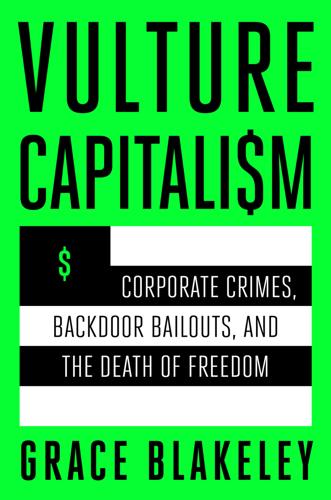
Vulture Capitalism: Corporate Crimes, Backdoor Bailouts, and the Death of Freedom
by
Grace Blakeley
Published 11 Mar 2024
Masayoshi Son, the owner of the investment firm SoftBank, whom we first encountered in chapter 5, rode to Credit Suisse’s rescue, injecting $1.5 billion into one of the funds.71 In return, Son demanded that the fund lend only to Greensill Capital. SoftBank pumped hundreds of millions of dollars into Credit Suisse’s specialist supply chain finance fund, which went straight into Greensill’s coffers. In return for Son’s generosity, Greensill lent generously to many of the firms in which SoftBank had a stake. This arrangement allowed SoftBank to lend to Credit Suisse, which lent to Greensill, which lent to SoftBank-owned firms. It was, in essence, a giant house of cards.
…
Webber, “Japanese-Style Entrepreneurship: An Interview with Softbank’s CEO, Masayoshi Son,” Harvard Business Review, January–February 1992, https://hbr.org/1992/01/japanese-style-entrepreneurship-an-interview-with-softbanks-ceo-masayoshi-son. 8. “Who Has Lost the Most Money in Human History?,” The Spectator, November 19, 2022, https://www.spectator.co.uk/article/who-has-lost-the-most-money-in-human-history/. 9. Alex Konrad, “WeWork Confirms Massive $4.4 Billion Investment From SoftBank and Its Vision Fund,” Forbes, August 24, 2017, https://www.forbes.com/sites/alexkonrad/2017/08/24/wework-confirms-massive-4-4-billion-investment-from-softbank-and-its-vision-fund/. 10.
…
The company’s valuation dropped from $47 billion to under $15 billion almost overnight, and it was forced to pull its IPO.20 After pressure from investors, which Son had attempted to dispel until the last possible moment, Neumann was forced to step down as CEO, but he still managed to walk away with $1.6 billion.21 SoftBank effectively agreed to bail the company out of its financial difficulties and provide Neumann with a hefty windfall by purchasing a chunk of his shares before their value plunged even further. Astonishingly, he was also paid millions in “consulting” fees. Later, after Son was forced to apologize for the debacle to his own investors, SoftBank reneged on the deal with Neumann and in 2021 agreed to a settlement that left WeWork’s former CEO with close to $450 million.22 As readers may have noticed from walking around city centers, WeWork still exists.

The Smart Wife: Why Siri, Alexa, and Other Smart Home Devices Need a Feminist Reboot
by
Yolande Strengers
and
Jenny Kennedy
Published 14 Apr 2020
Or more aptly, does it matter? We can start with what Pepper’s makers have to say on the subject. Commenting on SoftBank’s website back in 2015, science and technology studies scholar Roger Søraa observes that the company viewed robots as having no gender. “But they are much more than a[n] it, much more than just a product,” the company proclaimed at the time. “They are an artificial species.”25 Yet SoftBank conceded that “depending on where you come from, people project Pepper to be a male or a female!”26 SoftBank was careful to avoid assigning a clear gender to the robot, allowing its buyers to “choose.” Pepper themself was ambiguous on the subject.
…
Pepper themself was ambiguous on the subject. When asked about their gender during an interview in 2017, Pepper politely avoided the question by answering, “Well, in the end, I’m just a robot.”27 While writing this book, however, SoftBank was using the pronoun “he” on its English-language website to promote the humanoid assistant.28 Pepper, despite being a member of an “artificial species,” is now a boy apparently. Notwithstanding SoftBank and Pepper’s intention to divert and deflect the gender question (as have a number of other roboticists and robot manufacturers), gender has remained a persistent discussion point among humans curious about these robots.
…
CNN Business, “First Date with Humanoid Robot Pepper,” YouTube video, posted January 5, 2017, https://www.youtube.com/watch?v=aZ5VkgvQFBU. 28. See “Pepper,” SoftBank Robotics, accessed December 3, 2019, https://www.softbankrobotics.com/emea/en/pepper. 29. Cordelia Fine, Delusions of Gender: How Our Minds, Society, and Neurosexism Create Difference (New York: W. W. Norton, 2011). 30. Clementine Ford, Boys Will Be Boys: Power, Patriarchy and the Toxic Bonds of Mateship (Sydney: Allen and Unwin, 2018). 31. Søraa, “Mechanical Genders,” 103. 32. See “Pepper,” SoftBank Robotics. 33. Perez, Invisible Women. 34. Broadbent, “Interactions with Robots.” 35.
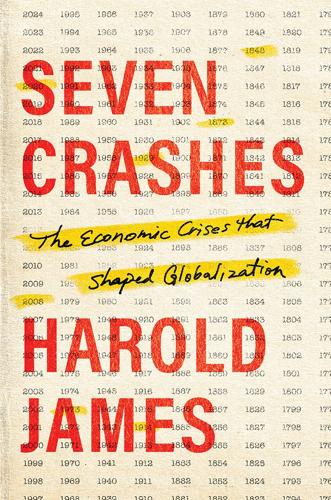
Seven Crashes: The Economic Crises That Shaped Globalization
by
Harold James
Published 15 Jan 2023
From 1996, SoftBank worked in a partnership with one of the earliest internet search engines, Yahoo, which survived the rapid eclipse of Yahoo in the 2000s. Some ventures were even less successful: in 2017, SoftBank invested over $1 billion in shared-office-space company WeWork; and its shares fell sharply after the IPO of WeWork failed in 2019. Son’s stated goal was to lay between ten and twenty “golden eggs” a year.64 The smallest deals were around $100 million, and the biggest in the billions, to be placed in the most successful tech startups in a given category. The vision is grand. SoftBank’s website predicts that humans will live to 200 and may coexist with “kind and intelligent robots” that would allow “more affluent lifestyles for all,” recognizing and analyzing nonstandard data.65 It is inevitable that many of the bold transformational projects failed: but those eclipses did not matter if there were spectacular cases of success.
…
Andrew Pollack, “A Japanese Gambler Hits the Jackpot with Softbank,” New York Times, February 19, 1995. 64. Robert Olsen, “Japan’s Richest Person Promises More ‘Golden Eggs’ after Fund Posts Best Quarter Yet,” Forbes, February 9, 2021, https://www.forbes.com/sites/robertolsen/2021/02/09/japans-richest-person-promises-more-golden-eggs-after-posting-best-quarter-yet/?sh=6137edfb202e. 65. Jackie Wong, “SoftBank’s $4 Billion Tech Option Gambit Feels Like Déjà Vu,” Wall Street Journal, September 8, 2020, https://www.wsj.com/articles/softbanks-4-billion-tech-option-gambit-feels-like-deja-vu-11599563556. 66.
…
A crucial part of its success depended on relations with very different kinds of government. SoftBank was founded in Tokyo in September 1981 by twenty-four-year-old Masayoshi Son, the son of Korean immigrants who graduated from the University of California at Berkeley with degrees in computer science and economics. At Berkeley he was a highly entrepreneurial student: he developed an electronic translator that he sold to Sharp Corporation for $1 million, and made another million by importing used video game machines from Japan, and installing them in dormitories and restaurants.63 Back in Japan, he built up SoftBank as a software distributor and publisher of magazines about computing.

The Future Is Faster Than You Think: How Converging Technologies Are Transforming Business, Industries, and Our Lives
by
Peter H. Diamandis
and
Steven Kotler
Published 28 Jan 2020
More information equals smarter algorithms equals safer cars—and this combination is the very edge needed for market domination. To compete with Waymo, General Motors is making up for lost time with big dollars. In 2018, it poured $1.1 billion into GM Cruise, its self-driving division. A few months later, it took an additional $2.25 billion investment from the Japanese conglomerate Softbank, just months after Softbank had taken a 15 percent position in Uber. With all of this capital flying around, with all these heavy hitters involved, how fast will this transformation occur? “Faster than anyone expects,” says Jeff Holden (who also founded Uber’s AI lab and autonomous car group). “Already, over 10 percent of millennials have opted for ridesharing over car ownership, but this is just the beginning.
…
Gill Pratt: For Gill Pratt’s quote on the Challenge, see: https://spectrum.ieee.org/automaton/robotics/humanoids/darpa-robotics-challenge-amazing-moments-lessons-learned-whats-next. Boston Dynamics’ robot Atlas: See: https://www.bostondynamics.com/atlas. Honda also got in on the action: Evan Ackerman, “Honda Unveils Prototype E2-D2 Disaster Response Robot,” IEEE Spectrum, October 2, 2017. Softbank: Ingrid Lunden, “Softbank Is Buying Robotics Firm Boston Dynamics and Schaft from Alphabet,” TechCrunch, June 8, 2017. After decades of rising life expectancies: See: https://www.economist.com/graphic-detail/2019/07/09/japans-pension-problems-are-a-harbinger-of-challenges-elsewhere. See also: this article in the Japan Times: https://www.japantimes.co.jp/news/2019/06/04/business/financial-markets/japans-pension-system-inadequate-aging-society-council-warns/#.XWayvi2ZOWY.
…
forty-two SWF deals valued at around $16.2 billion: Claire Milhench, “Sovereign Investors Hunt for ‘Unicorns’ in Silicon Valley,” Reuters, May 11, 2017. “I totally believe [in] this concept,”: Sam Shead, “The Japanese Tech Billionaire Behind Softbank Thinks the ‘Singularity’ Will Occur Within 30 Years,” Business Insider, February 27, 2017. See: https://www.businessinsider.com/softbank-ceo-masayoshi-son-thinks-singularity-will-occur-within-30-years-2017-2. The Vision Fund got started: “Masayoshi Son Prepares to Unleash His Second $100bn Tech Fund,” Economist, March 23, 2019. See: https://www.economist.com/business/2019/03/23/masayoshi-son-prepares-to-unleash-his-second-100bn-tech-fund.
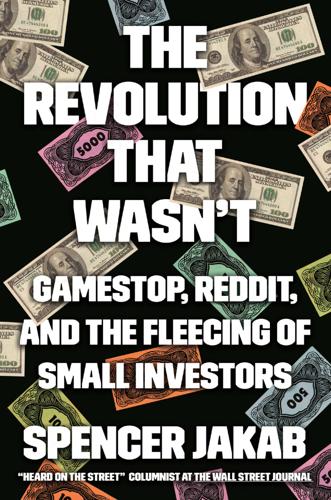
The Revolution That Wasn't: GameStop, Reddit, and the Fleecing of Small Investors
by
Spencer Jakab
Published 1 Feb 2022
Of course, that insurance it buys gets more expensive as a quake seems imminent. SoftBank was buying so many options that it started to affect the price of the shares, forcing the people who had sold the options to protect themselves by buying more as prices rose. At the same time, short sellers like Jim Chanos, who were watching stocks like Tesla rally on what looked like pure hype, had borrowed shares to sell them short. The sudden surge forced some of them to buy shares as well, to limit their own losses, exacerbating the upward pressure on stock prices. SoftBank needed a big score at the time because it had just lost $9 billion in the fiscal year that had ended in March.
…
The most sought-after contracts were those that cost the least and that often meant ones expiring in just days that were out of the money and so had little hope of being worth anything. As SoftBank grasped, it was precisely the type of contract that could have the most bang for the buck on the price of the stock. When a member of WallStreetBets got the idea in September to “trigger a fucking massive short squeeze,” as detailed in the post “Bankrupting Institutional Investors for Dummies,” another chimed in with a more sophisticated strategy than just buying the shares. It was the same thing SoftBank had done, but this would be aimed at a company that was by then primed like a powder keg: GameStop.
…
Unfortunately, they never quite spelled out how the WallStreetBets crowd would make any of their own once the squeeze was over—at least not all of them. To get an idea of what might happen, they could have read SoftBank’s quarterly results, posted in early November 2020. While at one point the company had a big paper profit on its audacious bet, it actually lost $1.3 billion when all was said and done as tech stocks plunged in September. Gamma squeezes are fun but can result in a nasty hangover. SoftBank also lost $12 billion in market value the week after the Nasdaq Whale story broke as its shareholders became uneasy about the transformation of what they thought was a venture capital fund into a high-stakes gambler—and a losing one at that.

The Future Is Asian
by
Parag Khanna
Published 5 Feb 2019
According to Rakuten founder Hiroshi Mikitani, “The greatest business risk [Japan] faces is that of staying at home.”20 Japan is invigorating its already deep advantages in precision industries through new public-private alliances amounting to several trillion dollars devoted to the Internet of Things (IoT), big data, AI, 3D printing, robotics, biotech, health care, clean energy, enhanced agriculture, and other sectors—all ready for export to Asia’s high-growth markets. SoftBank has become Japan’s standout example of a bridge between Japan, Asia, and the world. SoftBank’s Vision Funds—in which Saudi Arabia is the largest investor followed by the UAE—are the largest technology portfolio in the world, making aggressive investments in semiconductors, satellites, artificial intelligence, and IoT companies around the world. SoftBank also has stakes in e-commerce companies in India and a nearly 30 percent stake in China’s Alibaba. SoftBank and Alibaba’s partnership to capture India’s e-commerce market is a powerful example of the emerging commercial triangle between China, Japan, and India.
…
SoftBank and Alibaba’s partnership to capture India’s e-commerce market is a powerful example of the emerging commercial triangle between China, Japan, and India. SoftBank will also invest $25 billion back into Saudi Arabia to stimulate innovation in the Gulf countries. Given its aging demographics, Japan is at the cutting edge of technological approaches to managing elderly populations. It is already a world leader in factory automation; now it is automating daily life. At one of the newest amusement parks outside Nagasaki, the check-in staff in the on-site hotel are robots, as are the chefs and waiters in the resort’s restaurant. Softbank’s Pepper robot is now ubiquitous in shops selling everything from mobile phones to pizza.
…
The ride-sharing industry is emblematic of how Western companies are losing out to local rivals for both strategic and cultural reasons. As recently as 2015, it seemed as though Uber was taking over the world. But thanks to SoftBank’s consistent support for a suite of Asian car-sharing firms—Didi Chuxing (DiDi) in China, GrabShare in Southeast Asia, and Ola Cabs in India—Uber’s valuation dropped below that of DiDi, which bought Uber’s China operations (after which SoftBank bought Uber shares at a discount).28 In Russia, Uber was subsumed by Yandex.Drive; in Southeast Asia, Uber sold its operations to GrabShare, which took another $1 billion in investment from Toyota.

Taming the Sun: Innovations to Harness Solar Energy and Power the Planet
by
Varun Sivaram
Published 2 Mar 2018
Although electric power companies looking to diversify from fossil fuels are the most likely candidates for solar supermajors, they are not the only corporate players tempted by solar power. A recent entrant to the industry, the Japanese technology giant Softbank, has made an enormous bet on solar power. Led by Japan’s richest man, Masayoshi Son, Softbank leaped into solar after Japan’s Fukushima disaster, developing 500 MW of solar in the country and then pledging $20 billion to invest in India. In late 2015, I sat down in New Delhi with the CEO of Softbank’s energy subsidiary, Raman Nanda, a tall, charismatic, Oxford-educated McKinsey veteran. I remember wondering to myself whether his blue-chip pedigree might hinder him from succeeding in the rough-and-tumble atmosphere of India’s business world.
…
The next day, when I arrived for a meeting in the energy ministry, I ran into Raman, who was making the rounds before bidding in a major government auction. A few days later, Softbank won a major contract to build a utility-scale PV project in the Indian state of Andhra Pradesh. Within a year, Raman triumphantly sent me a Google Earth satellite photo of three adjacent project sites. Two were barren—waiting to be built on by slow-moving local firms—but Softbank’s site already brimmed with 350 MW of installed solar panels. Aside from Softbank, other global technology companies have entered the renewable energy business. As of 2016, Apple, Google, and Amazon had all created energy subsidiaries and were aggressively investing in powering their data centers with wind and solar power to reduce exposure to volatile and rising electricity costs.57 Outside the tech world, MGM Resorts, which owns much of the Las Vegas strip, defected from NV Energy, the regulated utility owned by Warren Buffett.
…
Soundariya Preetha, “Textile Mills Go in for Solar Energy Projects,” Hindu, May 25, 2014, http://www.thehindu.com/news/cities/Coimbatore/textile-mills-go-in-for-solar-energy-projects/article6045981.ece. 18. Anindya Upadhyay, “Softbank Eyes Indian Solar Manufacturing in Boost to Modi’s Goal,” Bloomberg, September 19, 2016, http://www.bloomberg.com/news/articles/2016-09-20/softbank-eyes-indian-solar-manufacturing-in-boost-to-modi-s-goal. 19. “Renewables 2016: Global Status Report,” Renewable Energy Network for the 21st Century, 2016, 65, http://www.ren21.net/wp-content/uploads/2016/06/GSR_2016_Full_Report.pdf. 20.
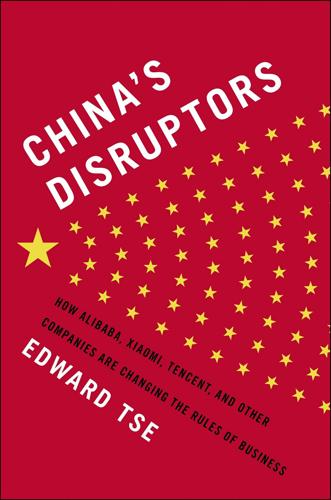
China's Disruptors: How Alibaba, Xiaomi, Tencent, and Other Companies Are Changing the Rules of Business
by
Edward Tse
Published 13 Jul 2015
As with Haier, however, that description makes little sense: for its entire existence, the company has, for all intents and purposes, been answerable to its founder, Ren Zhengfei, despite his officially holding just 1.4 percent of the company’s shares. Complicating matters further, some entrepreneur-run companies are private but not Chinese-owned. Alibaba, for example, has been majority-owned by foreign companies for many years, thanks to Softbank’s 34 percent stake in the company, Yahoo’s 22 percent stake (which as of February 2015 was about to be spun off into an independent company), and smaller stakes held by other foreign entities. Moreover, what these businesses own is not a Chinese company itself but stakes in a Cayman Islands company that collects royalties and fees from Alibaba’s China-based operations via a string of subsidiaries and “variable-interest entities”—legal structures that in theory offer foreign companies contractual control over Chinese businesses without actually owning them, and so allow them to get around Chinese laws and regulations that bar non-Chinese companies from holding stakes in Internet and other media-related businesses.
…
We want to be number one in the world,” he told Hong Kong’s South China Morning Post newspaper a few months later, when his total staff count was still less than 20. Within a year he had secured further support from crucial sources. First, he brought on board Joe Tsai, a Taiwanese lawyer with rich experience in investment. Then, using Tsai’s connections, he persuaded Goldman Sachs to buy 23 percent of the company for $5 million, and Japan’s Softbank to buy 31 percent for $20 million, which gave Alibaba enough money to tide it over the tough period that followed the bursting of the dotcom bubble. With China’s accession to the World Trade Organization in late 2001, Ma saw Alibaba move into the black as buyers around the world started looking to source ever more goods from China.
…
But while the new policy badly damaged Dian’s distribution business, it simultaneously boosted demand for its laboratory services, as hospitals, also deprived of income from drug sales, found themselves forced to outsource more tasks, including testing work. With demand rising sharply, Chen started expanding his network of laboratories. In 2009, needing extra resources to sustain its growth, he sold stakes in Dian to Shanghai-based conglomerate Fosun and Japan’s Softbank, and two years later floated the company on the Shenzhen Stock Exchange. Since then, the constant expansion of Dian’s product range has given hospitals access to an ever-greater range of tests developed at no expense or risk to themselves. As of 2014, the company ran a network of 14 labs across China, with plans to add another 16 within the next two years.
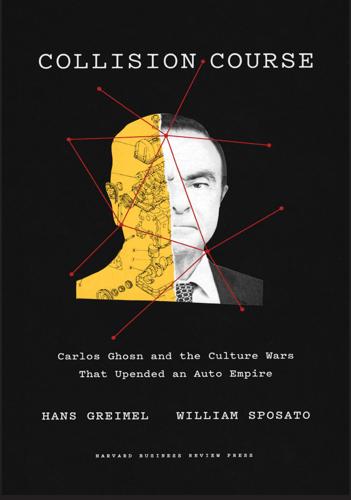
Collision Course: Carlos Ghosn and the Culture Wars That Upended an Auto Empire
by
Hans Gremeil
and
William Sposato
Published 15 Dec 2021
Japan Automobile Manufacturers Association, “JAMA in America, an Enduring Partnership,” May 2019, https://www.jama.org/wp-content/uploads/2019/05/final-report-standard.pdf. 12. Sam Nussey, “SoftBank to Write Down WeWork by $6.6 Billion, Compounding Portfolio Misery,” Reuters, April 20, 2020, https://www.reuters.com/article/us-softbank-group-results/softbank-to-write-down-wework-by-6-6-billion-compounding-portfolio-misery-idUSKBN22C011. 13. Lauren Feiner, “SoftBank Values WeWork at $2.9 Billion, Down from $47 Billion a Year Ago,” CNBC, May 18, 2020. https://www.cnbc.com/2020/05/18/softbank-ceo-calls-wework-investment-foolish-valuation-falls-to-2point9-billion.html. 14. Organisation for Economic Co-operation and Development, International Direct Investment Statistics 2019, https://read.oecd-ilibrary.org/finance-and-investment/oecd-international-direct-investment-statistics-2019_g2g9fb42-en#page18. 15.
…
Kazuaki Nagata, “Saitama Urges Seibu to Keep Chichibu Line Open,” Japan Times, March 27, 2013, https://www.japantimes.co.jp/news/2013/03/27/national/saitama-urges-seibu-to-keep-chichibu-line-open/. 26. Olympus Corp., press release, January 11, 2019, https://www.olympus-global.com/ir/data/announcement/2019/contents/ir00001.pdf. 27. Phred Dvorak, “SoftBank to Sell $41 Billion in Assets, Signaling End of Buying Spree,” Wall Street Journal, March 23, 2020, https://www.wsj.com/articles/softbank-to-sell-41-billion-in-assets-plans-big-share-buyback-11584944934?mod=article_inline. 28. Kosuke Takami, “Japan Names 518 Companies Subject to Tighter Foreign Ownership Rules,” Nikkei Asia, May 9, 2020, https://asia.nikkei.com/Business/Markets/Japan-names-518-companies-subject-to-tighter-foreign-ownership-rules.
…
Son had invested $13.5 billion, only to write off $6.6 billion in its value in April 2020.12 “I was foolish,” he said of the investment after the write-down.13 That’s still small beer for Son, however. In the collapse of tech company shares in the dot-com bubble of 2000, he is calculated to have lost $70 billion. Not surprisingly, he takes the Japanese concept of a long-term perspective to a new height: His main company, the mobile phone operator SoftBank, has a three-hundred-year strategic plan. And he remains one of Japan’s richest people. * * * The problems facing Japanese firms overseas pale in comparison to the hurdles facing a Renault that wants to invest in Japan. On paper, there are rich opportunities for foreign companies seeking to come into this well-established, secure, and potentially quite profitable market.
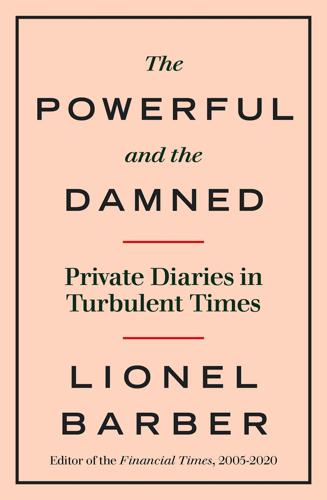
The Powerful and the Damned: Private Diaries in Turbulent Times
by
Lionel Barber
Published 5 Nov 2020
PS We are also delighted to help you agree on what comes next – something you failed to discuss properly in the campaign.’ FRIDAY, 22 JULY Breakfast with Masayoshi Son, the Korean-Japanese venture capitalist and founder of SoftBank, the Japanese technology powerhouse. Son is a short, balding man in his late fifties who speaks in an understated manner which gives no clue to his awesome financial power, largely based on a stake in Alibaba, the fast-growing Chinese tech giant. Son talks in vague terms about an epochal change coming with ‘the internet of things’, which explains why SoftBank has just snapped up Arm, one of Britain’s few remaining world-class technology companies. Arm, which makes advanced semiconductor chips, will play a central role in the next wave of technological changes, says Son.fn3 Memo to the editor: the FT must fix a Lunch with the FT with this man.
…
‘I sleep very soundly,’ Cameron replies. Not entirely convincingly. MONDAY, 23 APRIL Rajeev Misra arrives with his team from the Softbank Vision Fund, bearing slides and sales pitches. Misra is a former Deutsche Bank trader and top executive who would make P.T. Barnum blush. Among the Vision Fund’s top investments are WeWork, the office-space leasing company; Flipkart, India’s answer to Amazon; and a dog-walking start-up called Wag into which the Vision Fund has pumped an agreed $300m. SoftBank’s Vision Fund reportedly raised $100bn, thanks in part to Saudi money and the personal backing of MBS. They were the new power in the world’s venture capital market, able to amass and deploy funds so colossal that they ended up distorting the whole VC market.
…
The scale of his ambition to modernise the oil-dependent state was breathtaking, but at this point it was hard to gauge how much was rhetoric and how much an achievable plan for action. He told us he had spent $1bn on management consultants alone, a foretaste of the extraordinary sums he was willing to spend on high-technology investments through his Japanese partner, the SoftBank Vision Fund. We skirted his plans for the partial privatisation of Saudi Aramco, having been given a steer that it was on the cards in a private conversation with the veteran Saudi oil minister Ali al-Naimi. More disturbing were dark hints about opposition to his modernisation plans within Saudi Arabia.
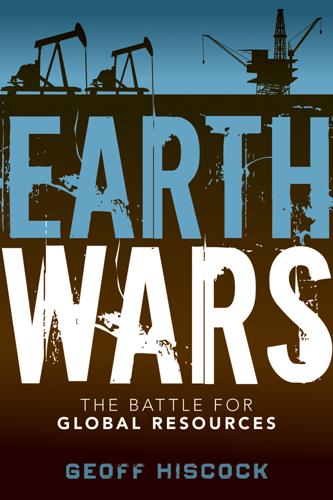
Earth Wars: The Battle for Global Resources
by
Geoff Hiscock
Published 23 Apr 2012
Like Idemitsu (which has wind power, geothermal, biofuel, and fuel cell projects), Cosmo is looking at renewable energy for the future. It has a concentrated solar power generation venture with the Abu Dhabi government, a photovoltaic cell project, a biomass to liquid process, and a wind power business in Japan. SoftBank’s “New Energy” Vision One company that does not yet figure in a list of Japan’s biggest energy producers is Internet and mobile phone conglomerate SoftBank, the group created by the billionaire maverick entrepreneur Masayoshi Son. But if Son gets his way, that may change. He wants Japan to shift 60 percent of its electricity requirements to renewable energy sources over the next 20 years, cut down on nuclear power, and build a Japan “super-grid” that would move power around the country, with an expansion eventually to the Asian mainland.
…
Energy Swing to Unconventional Resources International Interest in Shale Pipeline Projects in the Mix Gulf of Mexico Prospects The Cuba–China Connection Opening the U.S. Investment Door Chapter 12: Japan after the Deluge Political Shifts in North Asia Player of Consequence Equity Partners around the Globe JX Holdings Builds Energy, Metals Business SoftBank’s “New Energy” Vision Renewable Potential Chapter 13: BRACQK (Brazil, Russia, Australia, Canada, Qatar, Kazakhstan) Is the New BRIC Uncertainty for Foreign Investment Brazil’s Pre-Salt Independence Australia’s Foot on the Gas Canada’s Athabasca Challenge Qatar Fires up Its LNG Trains Kazakhstan’s Fields of Dreams Chapter 14: The Up and Comers Turkey: A Pivotal Position Iran: Rich in Oil and Gas, but Lacking Technology and International Friends Indonesia: Growing Spending Power Mexico: Exploiting the Potential Chapter 15: What Happens Next Significant Developments Ahead Survive and Prosper Challenges for China, India Replicated Conclusion Bibliography Acknowledgments About the Author Index Copyright © 2012 John Wiley & Sons Singapore Pte.
…
. ** In 2011, French oil major Total agreed to buy 60 percent of SunPower for about US$1.3 billion. Source: PVinsights, May 2011 In Japan, Masayoshi Son, the one-time Internet investment pioneer turned telecom corporate stalwart, is directing his own multi-billion dollar fortune to the pursuit of solar power. Son, whose company SoftBank is the No. 3 mobile phone operator behind NTT DoCoMo and KDDI Corp., has set up the Japan Renewable Energy Foundation to work on his proposed renewable energy project encompassing at least ten solar plants, each of 20 MW. Reflecting the rapid changes in the industry through 2011, two more Chinese module producers, JinkoSolar and LDK Solar, had replaced REC and SolarWorld in the top 10 list released by PVinsights for the third quarter of the year in December 2011.
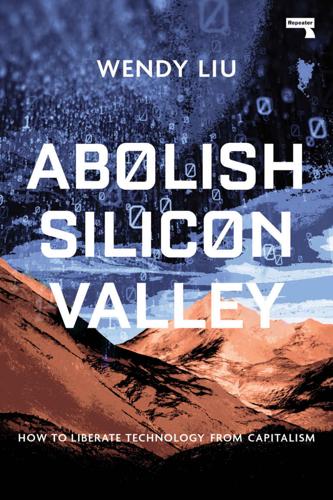
Abolish Silicon Valley: How to Liberate Technology From Capitalism
by
Wendy Liu
Published 22 Mar 2020
See, for example, “Lime, A Scooter Startup That Barely Existed Two Years Ago, Now Going To Be Worth $2 billion” by Theodore Schleifer for Vox, published January 15, 2019, at https://www.vox.com/2019/1/15/18184756/lime-scooter-fundraising-valuation-two-billion. 6 I’m mostly referring to the SoftBank Vision Fund, which has poured incredible amounts of money into companies like the gloriously overvalued (and still unprofitable) WeWork, but SoftBank is only the most egregious example of the trend. For an overview of SoftBank’s recent financial difficulties, see “SoftBank’s Blurry Vision” by Alexander Salmon for The American Prospect, published October 11, 2019 at https://prospect.org/power/softbanks-blurry-vision-fund-tech-ipos/. 7 Scott Kapor’s Secrets of Sand Hill Road (Portfolio, 2019) has a good breakdown of this, though an uncritical one. 8 The two American universities with the largest endowments are Harvard and Yale.
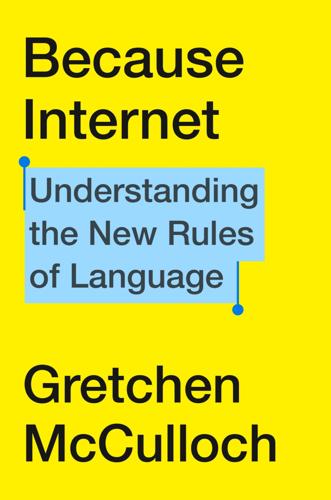
Because Internet: Understanding the New Rules of Language
by
Gretchen McCulloch
Published 22 Jul 2019
So in 1997, the Japanese cellphone carrier SoftBank found a solution: What if they encoded some common pictures the way they encoded text characters? After all, when you text a friend the letter A, your phone doesn’t send pixel-by-pixel each tiny dot in the grid that would make up a picture of the letter A, your phone just sends one short number code like 0041 and your friend’s phone knows that 0041 makes an A and displays it. If you could send a simple number like 2764 to display a heart , things would go much faster than sending a whole image file. So designers at SoftBank created short number codes for ninety small pictures, including icons for weather, transit, time, and sports apps, as well as hearts, hands, and a few faces that looked a lot like the existing kaomoji.
…
But here they ran into a problem. The whole point of emoji was to save space by assigning number codes to small pictures, but different phone manufacturers were using different sets of images and different number codes for them. So if you had a phone with DoCoMo and you texted a heart emoji to your friend whose phone was from SoftBank, your friend might see an indecipherable box, nothing at all, or worse yet, an entirely different symbol like an umbrella or a music note. (One common point of confusion was that people who thought they were sending a Taurus zodiac sign from DoCoMo phones would end up appearing to have sent a picture of a normal cow when received on a KDDI phone.
…
Multiply that by all the symbols in all the scripts of all the languages around the world, add in special symbols for mathematical notation and music notes and over six hundred styles of arrows (seriously), and you have the unglamorous but very important monkey-salad-garbage-transformation job that Unicode’s been doing since 1987. The members of the Unicode Consortium had definitely not signed up to become the smiley faces people. In 2000, as emoji first started taking off in Japan, they politely declined to get involved, leaving DoCoMo and SoftBank and KDDI to hash out between each other the compatibility of picture messages (or, in some cases, the lack thereof). If sending small images encoded like text was just going to be a momentary fad in one country, that was below the pay grade of an international standards organization. But emoji hung on in Japan, and multinational companies started getting involved.
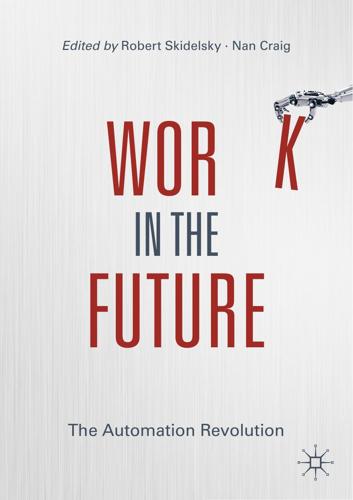
Work in the Future The Automation Revolution-Palgrave MacMillan (2019)
by
Robert Skidelsky Nan Craig
Published 15 Mar 2020
Retrieved from https://www.vanityfair.com/news/2017/11/ postmates-worker-classification-lawsuit Levine, D., & Somerville, H. (2016, May 10). Uber Drivers, If Employees, Owed $730 Million More: US Court Papers. Reuters. Retrieved from http:// www.reuters.com/article/us-uber-tech-drivers-lawsuit-idUSKCN0Y02E8 Somerville, H. (2018, January 19). Softbank is Now Uber’s Largest Shareholder as Deal Closes. Reuters. Retrieved from https://www.reuters.com/article/usuber-softbank-tender/uber-softbank-deal-has-closed-making-softbanklargest-shareholder-idUSKBN1F72WL 142 N. Srnicek Srnicek, N. (2016). Platform Capitalism. Cambridge: Polity Press. Wetzel, K. (2018, March 6). As Amazon and Google Keep Bickering, Consumers are the Ones Who Lose.
…
Rather than survive by making profits, Uber survives through venture capital welfare: constant injections of new funding from investors. Looking closely at Uber’s funding rounds, what becomes apparent is that there is more and more suspicion from the investors. In the most recent funding round, for instance, the investor group SoftBank actually demanded that Uber take a 30 percent cut on their very high valuation.4 Effectively, Uber is finding it increasingly difficult to convince investors of its ability to generate profits even in the long-term. Uber also faces future challenges. The first example of these is regulators. The expansion of Uber’s particular employment relationship— where workers are deemed contractors rather than employees—has only succeeded by running ahead of regulators and introducing these new labour practices before regulators know what to do.

The Long History of the Future: Why Tomorrow's Technology Still Isn't Here
by
Nicole Kobie
Published 3 Jul 2024
Launched in 2008, the dancing, football-kicking, research-enabling Nao is one of the most successful bipedal robots we’ve yet to see. While only a wee thing at 55cm (22in) tall, it was enough to nab the attention of billionaire SoftBank owner Masayoshi Son. Sometimes called ‘the Japanese Bill Gates’, Son studied in California before returning to Japan and launching SoftBank, which began life as a telecoms company before evolving into a tech investor. Son wanted to push forward his dream of humanoid robots, and SoftBank bought a majority stake in Maisonnier’s firm in 2013. But money comes with requirements: after the acquisition, development on Nao had to take a backseat to Pepper,24 as Son wanted a prototype in just three months.
…
That’s partially because of the viral videos, but also because the sometime DARPA-funded company sparked controversy and attention when it was bought (and quickly sold) by Google as part of the latter’s X labs, amid debate over the tech giant’s dealings with the US military, eventually swapping hands to Japan’s Softbank and then Korea’s Hyundai Motor Group. Boston Dynamics has since sworn off all military uses for its robots, saying they can’t be weaponised. Thirty years before that series of acquisitions, Boston Dynamics got its start at co-founder Marc Raibert’s robotics group, known as the Leg Lab, which began at Carnegie Mellon University in 1980 before moving to MIT in 1986.
…
If it can’t remember who you are, read out pre-programmed text in a replicable manner or offer any actual support around the house, it’s a technical marvel without any real purpose – just like Eric before it. Unsurprisingly, Pepper never evolved into the success either Son or Maisonnier dreamed about, and in 2021 production had halted. The end result was SoftBank selling Aldebaran to Germany’s United Robotics Group in 2022, which is continuing to sell both Pepper and Nao. * * * Another line of research, away from legs and brains, has been faces. Hanson Robotics’ Sophia has lifelike-ish skin and features, on its face anyway, making it eerily human – until it speaks.

Heart of the Machine: Our Future in a World of Artificial Emotional Intelligence
by
Richard Yonck
Published 7 Mar 2017
While far from a truly human-level conversation, it’s nonetheless a breathtaking feat of technological wizardry. The French robotics company Aldebaran, a member of the Softbank group, invented Pepper and is touting it as the world’s first truly social companion robot. Pepper recognizes faces, understands speech and touch, speaks seventeen languages, and even has a sense of humor. But most importantly, Pepper understands and responds to emotions, which is no small task for any machine. When Aldebaran and Softbank began selling the robot to the public in mid-2015, a reported one thousand units were sold in the first minute.4 This gives some indication of the demand for such technology, at least among technophiles and early adopters.
…
Unfortunately, in the case of our machines, this interaction has always been a one-way street. No matter how badly we might want to share our frustrations with a malfunctioning toaster, it can’t understand our viewpoint or modify its behavior based on our feelings. That is, until now. It’s June 2014 and a long line of people wait patiently at Softbank’s flagship store in the Shibuya shopping district of Tokyo. Everyone is hoping for an opportunity to see Pepper, the diminutive robot being touted as the world’s first commercially available social machine. Encased in gleaming white plastic and standing just under four feet tall, the cute humanoid robot speaks and gesticulates, engaging the customers one-on-one with a series of prepared questions and jokes.
…
See elder care sentograph, 44 serotonin, 186, 221 Sergi, Giuseppe, 17–18 “Servants of the Overclass,” 171 service robots, 151 711th Human Performance Wing, US Air Force Research Lab, 128–129 sex aids, emotionally intelligent ethics of, 191–193 future uses for, 188–189 history of sex aids, 179–182 and human emotional bonding, 186–188 and objectophilia, 186–188 sex dolls, “”182–184, 193 sexbots, 184–186, 188, 190–193, 200, 236 virtual reality, 189–191 sex dolls, “dames de voyage,” 182–183 sexbots, 184–186, 188, 190–193, 200, 236 Sharkey, Noel, 130–131 Ship of Theseus (thought experiment), 206 shopping and data analytics services, 136–137 Sightcorp, 72 Silent Messages (Mehrabian), 25 Silent Talk program, 217 simulated annealing, 41 Singularity, 239, 242 Sinthetics, 184 Siri, 77 60 Minutes, 167 Skynet, 242 smart TVs, 144 social computing, 52–53 Social Robotics Project, 88 socialization and emotions, 21 socially assistive robots, 111–112, 118 The Society of Mind (Minsky), 247 Softbank, 82 Software as Service (SaaS), 65, 138 software development kits (SDKs), 65, 70, 72 Sojourner Rover, 84 somatic marker hypothesis, 34 Sony, 200 Space Invaders, 213 spammers, 141 Spielberg, Steven, 233–234 spindle neurons, 20, 247 squeezable mouse, 52 Stan Winston Studio, 85 Starlab, 217 Stout, Dietrich, 23 Strong Minimalist Thesis, 13 SUBNETS.

Hype: How Scammers, Grifters, and Con Artists Are Taking Over the Internet―and Why We're Following
by
Gabrielle Bluestone
Published 5 Apr 2021
Levin, "Re: William McFarland; United States District Court, Southern District of New York, 17-CR-00600-NRB and 18-CR-00446-JMF," letter submitted to court, August 20, 2018. 74. Alex Sherman, "WeWork’s $47 Billion Valuation Was Always a Fiction Created by SoftBank," CNBC, October 22, 2019, https://www.cnbc.com/2019/10/22/wework-47-billion-valuation-softbank-fiction.html. 75. Adam Neumann, Baruch College Commencement 2017. Speech, Baruch College, New York, NY, June 12, 2017. 76. Kevin Roose, "Do Not Disturb: How I Ditched My Phone and Unbroke My Brain," New York Times, February 23, 2019, https://www.nytimes.com/2019/02/23/business/cell-phone-addiction.html. 77.
…
There was nothing innovative about what the business model was, and yet it had a tech element to it, and he owned none of his real estate and somehow was going to make money subleasing all this stuff.” In fact, WeWork’s valuation and size were almost entirely due to a different man entirely: the Japanese billionaire Masayoshi Son, the CEO of SoftBank who also happens to back Uber. He’s probably done more to inflate the Silicon Valley bubble than anyone else, but after losing a fortune twice and gaining it back three times, he’s still making big bets that any company he takes a shine to can end up owning a sector thanks to the sheer amount of cash he pumps into it.
…
After exhausting his small inventory, he shut the restaurant down on his own, satisfied in his short-term success. The owners of AJ’s NY Pizzeria in Kansas, on the other hand, weren’t pleased at all to see how easily their restaurant popped up on DoorDash, another start-up funded by WeWork’s main benefactor, SoftBank. AJ’s, which didn’t offer delivery, was initially confused by a series of calls from customers complaining about cold orders. Who was doing this subpar delivery service? When they finally looked it up, they found DoorDash had scraped their menu from the restaurant’s website without their knowledge and was placing orders on its customers’ behalf.
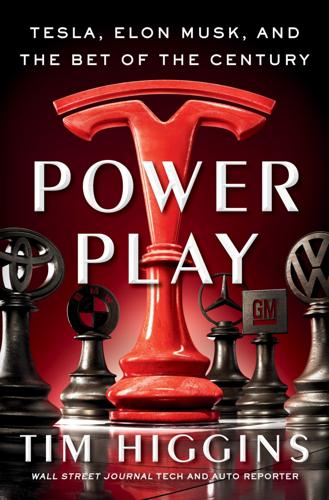
Power Play: Tesla, Elon Musk, and the Bet of the Century
by
Tim Higgins
Published 2 Aug 2021
Son also insisted that Musk needed to take Tesla into India, to which Musk agreed that, yes, at some point that made sense. But at the moment, we’ve got a lot of other shit we’re really trying to do right now. Musk came to suspect Son’s motivations were tied to business SoftBank had in the country. It became clear that Musk and Son were no love match. Each had respect for the other, but both were alpha males who envisioned their own futures and reveled in proving doubters wrong. Any money from SoftBank would likely come with strings. Son had a reputation for being a hands-on investor—the sort of influence that Musk naturally bucked against. The dinner came to an end with promises of further discussions.*2 But it seemed for now that Tesla would remain a public company.
…
Fearing what the delays could turn into, Dan Dees at Goldman Sachs, Musk’s longtime banker, urged him to raise money in case things didn’t work out smoothly. The lessons of 2008 and 2013 should’ve been obvious: Any sort of delay could knock over the fragile financial house that Tesla had built and eat into what limited cash it had. * * * — Concurrent with all this, a massive new venture capital fund was being created by SoftBank, the Japanese tech conglomerate with stakes in Alibaba, Sprint, and others. CEO Masayoshi Son was on the verge of controlling a nearly $100 billion fund that was intended to rewrite the rules of investing in Silicon Valley and pick world-changing winners, infusing them with the kinds of cash that a generation ago would’ve seemed impossible in the private market.
…
In March, a conference room on the second floor of the Fremont factory overlooking the assembly line was converted into a dining room. Caterers prepared a meal of steaks for a small group. Musk was there, as was Ellison. Son was joined by Yasir Al-Rumayyan, the managing director of the deep-pocketed Saudi Arabia sovereign wealth fund, who would soon join SoftBank’s board. Musk, Ellison, Son, and Al-Rumayyan: Collectively they controlled hundreds of billions of dollars (though unlike those of his fellow diners, Musk’s fortune was largely illiquid). They all shared ambitions to make larger-than-life bets that, if successful, would change the course of humanity.
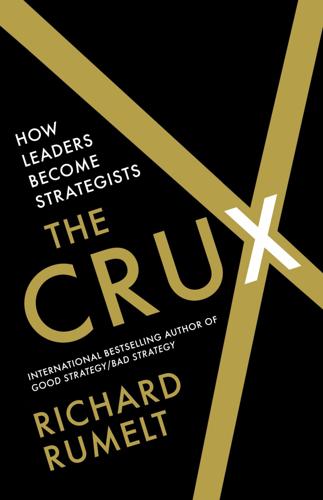
The Crux
by
Richard Rumelt
Published 27 Apr 2022
Despite the fact that this business plan wouldn’t pass muster in an undergraduate make-up-a-plan competition, it got funded by Japanese investment house SoftBank. The initial investment in WeWork was $4.4 billion, implying a valuation of $18–$20 billion. Despite claims by CEO Adam Neumann that the company was profitable, it was not—it made huge losses. By 2018 the company had burned through its cash and needed more, so an IPO was planned. The deal, arranged by Neumann and SoftBank CEO Masayoshi Son, valued WeWork at $47 billion. As part of the deal, $1 billion would go to buying shares from existing investors, including the board of directors.
…
As part of the deal, $1 billion would go to buying shares from existing investors, including the board of directors. When the IPO prospectus became public, reactions to the history of losses, the increasingly erratic behavior of Neumann, and the company’s fluffy mission concept were negative. SoftBank backed away from the IPO. The board wanted Neumann out, giving him a payoff of $185 million to just step aside. SoftBank reentered the deal with $5 billion, valuing the company at $8 billion, a long way down from $47 billion. The gloss on WeWork was that it was a “tech” company building the sharing economy. It actually seems more like an office-space lessor in a competitive world with excess office space.
…
incentive pay, 263–264 measuring efficiency, 250 Petzl America, 121–123 phenakistoscope, 50–51 Pixel Buds (Google), 270–271 Plan Dog, 64–66, 73–74, 130 platforms, 199–201 Porter, Michael, 33, 167 powdered metals, 191–192 power and leverage building a power base, 115–118 creation through coherence, 123–124 the crux as a constraint, 32 discomfort with power, 111–114 lack of executive power for creating a strategy, 115–116 marketing and sales, 118–120 repairing GM’s organizational dysfunction, 220 sources of, 11 strategy statements as substitutes for, 110–114 The Practice of Management (Drucker), 251 price cuts, market response to, 185–186 priorities, strategic, 303–307, 328–329 problem solving bouldering, 1–4 changing corporate points of view, 143–144 defining strategy, 13 the ongoing strategy process, 54–55 research on, 296 Procter & Gamble, 124–125, 190–191 profits and profitability analyzing production and shipping costs, 163–164 competitive advantage, 184–185 current earnings, 257–258 industry-analysis framework, 167 profit before tax, 161–162 proximate objectives, 324 psychology: perceived reality, 50–51 public face, constructing, 327–329 publicly traded stock, 268–269 Qualcomm, 78 quarterly earnings estimates, 257–260 question-answer dialogue (Strategy Foundry), 316–317 Quicken, 191 railway construction, 157–160 Rand Corporation, 325–326 rational choice: boundedness, 35 R/C devices, 255–256 RCA, 215–216 real estate market, 124 Redfin brokerage, 124 red-team exercises, 322–323 reference classes, 325–326 reference-group neglect, 103 reflective thinking, 318–319 refractory metals, 191–192 reframing the situation, 140–142, 148–149, 151–156 regime change, 292–293 renewal, organizational, 225–227 Research in Motion (RIM), 176 resource allocation, 171–172 restaurant industry: close coupling of activities, 190 revenue generation arbitrary unsupported goals, 242–244 identifying challenges in the Strategy Foundry, 306 mechanics of growth, 88 Netflix cash costs, 17–19 rewards of problem solving, 3–4 robotics, 208–209 rock climbing, 1–5, 54, 121–123, 275 The Roof of the Dog’s Ass boulder problem, 1–5, 27 Roosevelt, Franklin, 65, 131–133 Rosenthal, Brian, 157–158 Rude Awakening (Keller), 219 Rumsfeld, Donald, 292–294, 296 Ryanair, 48, 59–62 Sales Force Automation (SFA), 57–58 Salesforce.com, 48, 55–59 Samsung, 195 Sankarlingam, Velchamy, 210 scaling, 195–198 GM’s reform, 221 identifying challenges in the Strategy Foundry, 306 semiconductor industry, 76–77 Schultz, Howard, 48 scientific equipment, 118–120 Scozzafava, Ralph, 247 search engines, 52–53 seedlings, 104 semiconductor production, 76–79, 81–82, 95, 103, 189–190, 197 See also Nvidia share price growth, 88–89 Shell International, 186–187 shipping, 164–166, 195 short-term valuation, 260–261 Silicon Graphics, 103 Simon, Herbert, 35–36 simplification, organizational, 226–227 Singapore: unemployment, 43–44 skin-care products, 124–125 Skou, Soren, 166 Slaoui, Moncef, 276 Smelser, Paul, 190–191 smooth earnings, 105–106 social fabric, business as, 110–111 social media downside of, 206 Facebook and Twitter, 214 network effects, 199 platform strategies, 199–201 smartphone use, 147 social networking, 59 SoftBank, 107–108 software, 224, 227–228 software-as-a-service (SaaS) market, 59, 230 Southwest Airlines, 48, 60, 124 space shuttle, 4–6, 125–128 space travel, 4–7, 37 SpaceX, 5–7 specialization identifying challenges in the Strategy Foundry, 306 organization dysfunction, 217 speculators, 266–267 Stark, Harold, 65–66 Starry, Donn, 155 Steiner, George A., 272–273 stock options, 263–264 stock value effect of mergers and acquisitions, 97–101 McGraw-Hill, 93 paying for mergers and acquisitions, 102 Stonecipher, Harry, 258 strategic commitment, 282–284 strategic effectiveness, 89–91 strategic extension, 89–91 strategic navigation, 326 strategic planning accentuating the positive and avoiding the negative, 140–142 for arbitrary financial outcomes, 282–284 battling for corporate resources, 171–172 in businesses, 281–284 climate-control systems, 287–289 convergence on action, 290–294 defining goals and objectives, 249–250 finding the best process, 294–297 goals versus strategy, 241–242 groupthink, 290–292 mission statements, 278–281 owning the challenge, 289–290 for pandemics, 273–276 the Second Iraq War, 292–294 strategy versus management, 248–256 water resource management, 276–278 See also Strategy Foundry strategy, defining, 13, 110 strategy, the art of, 5, 8–9 Strategy Foundry, 285 causes of failure, 315 challenge-based planning, 298–299 creating an action plan, 310–312 identifying the challenges of the business, 302–307 information gathering, 299–302 internal and management issues, 307–310 key tools, 315–329 participant questions, 301–302 preconditions for success, 313–314 preparations, 299 time viewer, 319–320 strategy statements, 112–114 streaming services, 17–19, 21–22, 25–27 Strunk, William, 91 subscription strategies, 19, 26, 57–58, 84, 178, 199 Success Score Card, 282–284 supply-chain issues, 254–255 surgical robotics, 208–209 Sustainable Development Goals (SDGs), 128–130 Swan, Robert, 79–80, 83 swearing in (Strategy Foundry), 311, 326–327 Swedish view of business, 109–111 Symbian OS (Nokia), 223–225 synergies, 102–103, 123–124 tactics versus strategy, 75 Taliban, 132–134 telecommunications, 102, 179.

Vassal State
by
Angus Hanton
Published 25 Mar 2024
The dominance of Silicon Valley companies in search (Google), social media (Facebook), entertainment (Netflix) and e-commerce (Amazon) has become a pressing issue, fostering a belated debate on how we could have allowed it to happen.25 As for Arm, in 2023 SoftBank decided that it should relist the business on the stock market but anchored to a US exchange. The British prime minister, Rishi Sunak, joined numerous discussions to bring Arm back to Britain, and begged SoftBank to offer a secondary listing of Arm shares in the UK. This too was denied. Victoria Scholar, the head of investment at Interactive Investor, told The Guardian: ‘Arm’s abandonment of London is another kick in the teeth for the Square Mile’s attractiveness among international investors as a go-to destination for technology giants.’26 Size matters The headline figures speak for themselves.
…
He gives the example of the takeover of Arm Holdings in 2016, which went ahead despite the opposition of its largest shareholder, Baillie Gifford of Edinburgh, who believed the deal would deprive the UK of a national tech champion. But as Macpherson says: ‘The Arm management were acquiescent [in the takeover] too,’ and Baillie Gifford was unable to pull together enough support to help Arm remain independent. Arm was duly acquired by a Japanese private equity fund, SoftBank, and later relisted on NASDAQ in New York.15 The burden of regulation and investor demands reduces the price of quoted companies. As Macpherson says: ‘By establishing this bifurcated world of highly regulated quoted companies and unregulated private companies we’re creating the opportunity for US private equity groups to plunder these assets that are weighed down by regulations and expectation.’16 The availability of British assets to foreign takeover can be seen both as a product of an ideological predisposition for FDI and as the result of the influence of some powerful vested interests.
…
The UK company has been so successful for so long that its profits even kept Apple afloat when the US titan sold its modest investment in Arm for $800 million back in the early 1990s.23 Hauser saw it all because as well as running Amadeus Capital, he also helped to found Acorn Computers and Arm itself. And it is notable that, in 2020, he led a campaign to persuade UK and EU authorities to intervene to stop Arm being sold to Nvidia in the US by its Japanese owners SoftBank. In a letter to the Financial Times he warned that the sale to a US firm would allow that nation to decide who gets to keep Arm’s innovations or, as he said, it would mean ‘that the American President can decide which companies Arm is allowed to sell to worldwide’.24 This raises the vital issue of the loss of tech sovereignty where the UK and EU authorities have been overwhelmed and effectively neutered.
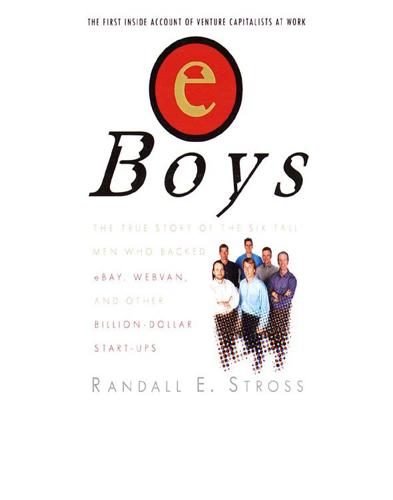
eBoys
by
Randall E. Stross
Published 30 Oct 2008
And a largely automated system could slash the 18 percent in overhead charges that the United Way took off the top in administrative fees, and still leave room to make a profit—if the world was ready for a for-profit solicitor of charities. Popular acceptance might have seemed unlikely, were it not for the extremely negative publicity that the United Way had drawn to itself in recent years. Just when Benchmark, along with Softbank, invested in Mountanos’s new company—Charitableway received $8.3 million, at $8.9 million pre-, a generous valuation for a mere idea—the local United Way brought the spotlight upon itself when it discovered halfway through the year that it had lost track of its own expenses and was short $11 million in funds promised to one hundred recipient charities.
…
Just like PlanetRx. We think people are going to do prescriptions over the Net. We may find out there is nobody that will.” “There’re reasons to believe, though,” Kagle said, stubbornly. “The current system in the real world is archaic and inefficient enough.” Why not round up another investor, like Softbank, Dunlevie said, suggesting the very opposite of walking away. Say to them, “We’ll do four [million], you do four, we get somebody else to do two or three, so we’ve got a lot of money in the bank now, and we’ll go do the category.” The suggestion did not draw anyone’s support. Rachleff changed the subject again, asking Kagle: “Four months ago, if I told you that we were going to meet two companies selling art online and watches online, what would you have said would be the one that would take off?”
…
“That’s what I would do.” The final tally: Two partners urged Kagle to walk away immediately; one urged him to raise additional capital immediately; and the last urged him to move the company’s headquarters to the Bay Area and find a new CEO. One week later, at the next partners’ meeting, Kagle reported that Softbank might put $4 million into artuframe, too. He thanked Dunlevie for the suggestion. It was still uncertain whether a deal could be worked out, but the fact that Kagle was pursuing Dunlevie’s suggestion, and eschewing Harvey and Rachleff’s advice to walk, was a huge break for Bill Lederer. No one again mentioned the $2 million in revenue that hadn’t materialized.
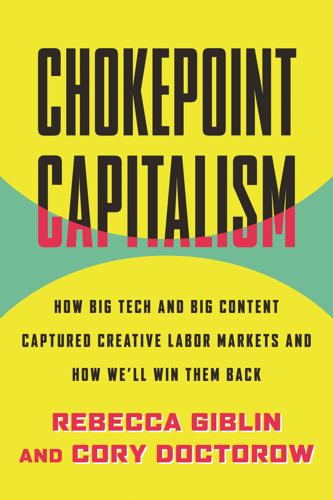
Chokepoint Capitalism
by
Rebecca Giblin
and
Cory Doctorow
Published 26 Sep 2022
The House of Saud has embarked upon a project to shift its business interests out of oil and has been firehosing money into other sectors in bids to monopolize them. The Saudi royals are the major financiers of Softbank, the investors behind Uber, WeWork, and other notorious money-losing tech companies. Softbank’s strategy—that is, the Saudi strategy—is to lose money for as long as it takes to establish a monopoly, and if no monopoly is forthcoming, to unload those investments through IPOs, which are bought up by naive investors who assume that if, say, Uber was able to keep going for more than a decade, there must be some way it will eventually be profitable. So far it hasn’t been, but Softbank sure cleaned up on its IPO. It is never a good sign when a key player in your industry takes a major investment from the House of Saud.
…
Google, 200 O’Reilly, 27 Oremus, Will, 236 organizing, 178–79, 248–49 Oron, Gadi, 67 orphan works, 189, 192–94 OverDrive, 241, 242 Pandora, 217 Pascal, Francine, 187 payola, 82 PCs (personal computers), 201 Pelly, Liz, 67, 80, 81, 241, 244 Penderecki, Kyzysztof, 66 Penguin, 35 Penguin Random House, 2, 34–35 The People’s Platform (Taylor), 14 Perry, Katy, 64 Peters, Marybeth, 185 Phoenix Computers, 201 Platform Capitalism (Srnicek), 230 Platform Cooperativism Consortium, 229 platforms, 14–15 playlists, music streaming, 78–84, 143–44 podcasting, 84–88 policy, corporate influence on, 94 Polone, Gavin, 107 Postmates, 166–67 poultry processing, 96 press publishers’ right, 233–34 Prince, 52, 62, 187 print-on-demand, 181 privacy, 137 private equity, 91–93, 249–50 producer cartels, 173 productivity gains, 253–54 Proposition 22, 249 Public Enemy, 62 public interest, 14 public ownership models, 242–44 Rabble, 240–41 radio broadcast industry: about, 89; local content, 90; ownership concentration, 90; private equity and leveraged buyouts, 91–93; regulation, 93–95; revenues, 90–91, 93 Random House, 32, 33, 34, 35 RapCaviar, 78 RealMedia, 26 reciprocity, 93 Recording Industry Association of America (RIAA), 55, 64, 185–86 recoupment, 53, 59, 69, 163, 169, 219, 221–22 regulation: antitrust, 146–51; costs, 137, 144; decline of systems of, 145–46; EU mandates, 257–58 regulatory capture, 92–93 remote work, 15 rentiers, 118–21 rent-seeking, 119 residual remuneration rights, 173–77, 214–16 Resonate, 237–38 Reuters Institute, 236 reversion rights, copyright, 183–95 right-wing radio culture, 94–95 Rimes, LeAnn, 55 Robinson, Joan, 10, 173 Robinson, Nathan, 233 Rodgers, Nile, 54, 164 Rolling Stone, 47 Rosen, Hilary, 185–86 Ross, Orna, 157 Rowdy (Joshua Rowsey), 241 royalties, streaming, 66, 68–69, 221–28 RSS, 86, 122 safe harbor laws, 125–27, 134 sampling, music, 61–63 Sanctuary, 57 Sarbanes-Oxley Act, 163 Sargent, John, 30 Satellite Home Viewer Improvement Act, 185 Saudi royal family, 102 Scheiner, Bruce, 122 Scholz, Trebor, 237 Science Fiction and Fantasy Writers of America, 161–62, 212–13 Science Fiction Writers of America, 159 Screen Actors Guild, 16 self-publishing, 32–33, 215–16 Shatzkin, Mike, 35 Shazam, 73 Sheeran, Ed, 64 Sherman, Cary, 55 Shirky, Clay, 44–45 Shockley, William, 165–66 Shuster, Joe, 180 Siegel, Jerry, 180 Simon & Schuster, 34–35 Simson, John, 71, 93, 225–26 SiriusXM, 56 Slack, David, 108 Smashwords, 22 social media, and music industry, 56 Social Security Act, 150 Softbank, 102 songwriting, 69–70 Sony Music Entertainment: and artist mistreatment, 79, 221; and copyright, 188; dominating position of, 56; and recoupment, 59; and Spotify, 73, 75, 161; Spotify contract, 70–73 SoundCloud, 72–73 SoundExchange, 71 South Africa, 189 Spotify: about, 2, 11, 12, 18, 56; and Epidemic Sound, 81–82; and major labels, 73–75, 181; market share and profit, 83; Marquee initiative, 82; model, 67; and music licensing, 218; playlist culture, 79–84, 143–44; podcasting, 86–88; Sony contract, 70–73 Srinivasan, Dina, 43 Srnicek, Nick, 230 Stafford, Bill, 62 Statute of Anne (1710), 182–83 statutory licensing, 220–28 Stiehm, Meredith, 105 Stocksy, 229–30 Stoller, Matt, 34–35, 46 Stone, Brad, 21 streambait, 80 Stringer, Rob, 79 Stross, Charlie, 28 structural remedies, 148–49 StubHub, 101 Superman, 180 surveillance capitalism, 36 Swift, Taylor, 76, 169–70 switching costs, 7, 18, 26, 28, 31, 92, 119, 144, 249–50 synchronization rights, 219 tacit collusion, 31 talent agents and agencies, 104–9, 175–76 Taylor, Astra, 14, 229 Teachout, Zephyr, 149 Telecommunications Act (1996), 90 television media, back end financials, 109–11 Tencent Music Entertainment, 83, 84 Thicke, Robin, 63–64 third-party cookies, 231–32 This Is Spinal Tap (film), 188 Ticketmaster, 98, 100, 101 Tidal, 160, 239 TikTok, 136 Timberg, Scott, 47, 110–11 TLC, 55 Towse, Ruth, 16 Tracks, 240–41 transparency rights: Audible, 154–59; audit power, 164–65; data disclosure, 161–63; enforceability of regulatory transparency, 163–67; Kindle Unlimited, 159–60; music streaming, 160–61; Netflix, 160; normalization of, 164 Turner, David, 67, 68, 80, 164, 224 21st Century Fox, 2 Uber, 48–49, 102, 166–67, 171, 249 UK Competition and Markets Authority, 43, 45, 50 UK Musicians’ Union, 68 unions, 173–74, 248–49 United Talent Agency, 104, 106 universality, 198–99.
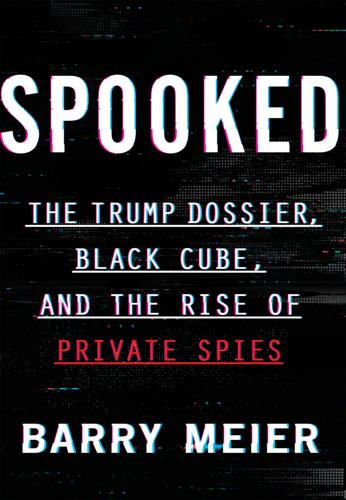
Spooked: The Trump Dossier, Black Cube, and the Rise of Private Spies
by
Barry Meier
Published 17 May 2021
Separately, she also soon learned that Giannakopoulos didn’t just have a connection to the Swiss university. He was also a hired operative. And Giannakopoulos and Hollingsworth worked with K2 Intelligence on a case in 2015 when the investigative firm was hired by an executive of a major investment fund, Softbank, to dig up dirt on his rivals for a top position there, according to a later report in The Wall Street Journal. MARK HOLLINGSWORTH ENCOUNTERED SOME turbulence as a result of The Irish Times article but his path as a journalist/private spy continued uninterrupted, a tribute to his entrepreneurship, the demand by corporate intelligence firms for his services, and a lack of standards among British media organizations.
…
A spokeswoman for K2 Intelligence didn’t respond to an inquiry asking about ties between the firm, Jho Low, or his representatives. Rewcastle Brown wrote on her blog: Email from Mark Hollingsworth to Clare Rewcastle Brown, July 13, 2016. Giannakopoulos and Hollingsworth worked with K2 Intelligence: That article by Bradley Hope and Jenny Strasberg ran on February 26, 2020, “SoftBank’s Rajeev Misra Used Campaign of Sabotage to Hobble Internal Rivals.” Rajeev Misra denied paying for the operation. stolen from a law firm in Panama: The firm was Mossack Fonseca. “You may recall that we did stories”: Email from Mark Hollingsworth to Simon Goodley, February 21, 2017. “Below is a very rough draft”: Email from Mark Hollingsworth to Glenn Simpson, April 18, 2013.
…
See also Steele dossier Steele dossier documentary and, 272–273 on Steele dossier’s disclosure, 187–188, 189–190 Steele’s connection to, 56–58, 115 terrorist financing articles by, 19–20 Trump comparison, 135–136 on Trump-Russia relations, 141, 146–149, 160 Veselnitskaya’s connection to, 119, 248 Singer, Paul, 130–131, 135 60 Minutes, 6–7, 41–42, 85–86 SLAPP (strategic lawsuits against public participation) lawsuits, 68. See also anti-SLAPP statutes Slate, 157–158 Smith, Ben, 189 Smith, Lee, 233–234 SNS Global, 30, 57–62, 75, 87 social media management, 104–106 Softbank, 177 Soros, George, 56, 109, 209 Source D, 143, 210–211 Source E, 143, 219–220 Source F, 143 Soviet Union, 6–7, 20. See also Russia spying malware, 4, 7, 27, 195–196, 199, 202 spy registry, 275 Stanford, R. Allen, 46–48 Steele, Christopher Advance Democracy affiliation, 253 Alfa Bank lawsuit and, 252, 254–255 background, 1–3, 7–11, 136–137 career trajectory, 55–56 conspiracy theory about, 233–234 Danchenko’s connection with, 265–266 Democracy Integrity Project and, 208–211 Deripaska’s connection to, 58, 138–140, 153, 180, 217, 271–272 fallout from dossier, 190–191, 193, 217–218, 239–241 FBI and, 139–140, 148–149, 155, 159–161, 234, 261–264 on FBI’s Trump investigation, 148–149 Hollingsworth’s connection to, 138, 227 Horowitz report testimony of, 236–237 lawsuits filed against, 255–257 media offensive by, 154–155, 181–183, 190 Panama Papers and, 179–180 personal characteristics, 137, 237 physical appearance, 7 political opposition research by, 130–131, 136–137, 181–183 Shvets’s connection to, 260–261 Simpson’s connection to, 56–58, 115 on Steele dossier’s disclosure, 187, 188–189 on Trump-Russia relations, 141–143.
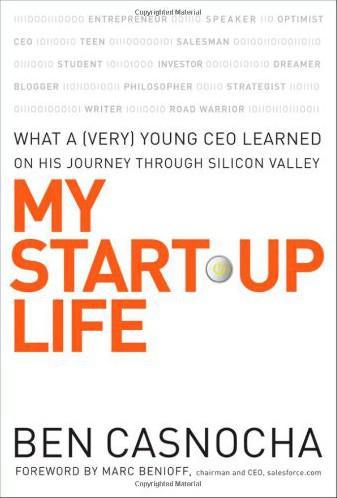
My Start-Up Life: What A
by
Ben Casnocha
and
Marc Benioff
Published 7 May 2007
After our first introduction, Mike Patterson, my neighbor and Silicon Valley connector, offered to introduce me to businesspeople who could serve as intellectual incubators—folks who could guide me through the entrepreneurial process and become part of my nascent brain trust. The first person on his list was Greg Prow, managing director of Softbank Venture Capital (and later Mobius VC). 36 FIRST MEETING WITH A VC 37 Brainstorm: The Power of Mentors A famous Harvard Business Review article published in 1979 reported that mentored executives earned more money at a younger age, were better educated, were more likely to follow initial career goals, and had higher career satisfaction.
…
I knew nothing about venture capital and nothing about business customs like shaking hands or making a presentation. I didn’t even fully process how lucky I was to sap an hour and a half of time from a managing director of one of the world’s largest venture capital firms. In all my youthful innocence, just excitement reigned. Dad, Mike Patterson, and I drove to the Softbank offices in Mountain View. It was a splendid sunny day on the 101 freeway. It didn’t take long before I saw billboards for dot-coms and technology companies, the intimidating buildings with “Siebel” plastered on the front, and the cars beside us becoming mostly BMWs and Lexuses. We weren’t just going to Mountain View.
…
IT’S A FRUGAL, FRUGAL WORLD 147 Brainstorm: Asking for Money Versus Asking for Advice The timeless start-up aphorism goes, “Never ask for money. Ask for advice instead, and you are more likely to get money. Never ask for free advice. Ask for money instead, and you’ll get free advice.” In December 2003 Dave Richmond, Mike Patterson, Dad, and I visited Greg Prow again. When I first met Greg at Softbank/Mobius Venture Capital in 2001 I had an idea and early prototype. Now I returned with a full-time president, bushels of clients, real revenue, and lofty goals. We wanted to see if we were ready to raise venture money. The second time around Greg invited two of his partners— Heidi Roizen and Brad Feld—to sit in.
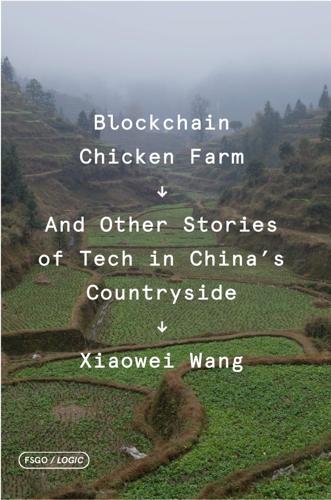
Blockchain Chicken Farm: And Other Stories of Tech in China's Countryside
by
Xiaowei Wang
Published 12 Oct 2020
For all the attention the Chinese Great Firewall receives in blocking Twitter and YouTube, Alibaba’s Aliyun offers a way to bypass the Great Firewall, for a fee. Other well-known surveillance companies such as Hikvision and SenseTime have a slew of foreign investment. SenseTime’s investors include Qualcomm, Fidelity International, Silver Lake Partners (based in Menlo Park, California), and Japan’s SoftBank Vision Fund. SoftBank’s Vision Fund has ties to Saudi wealth, and spans the globe in its international influence—investing in companies from Alibaba to WeWork and Slack. In one corner of the Megvii showroom is a display about Meitu, the beauty and cosmetics app with which you can quickly edit your selfies.

The Lonely Century: How Isolation Imperils Our Future
by
Noreena Hertz
Published 13 May 2020
Kory-Westlund, ‘Measuring kids’ relationships with robots’, MIT Media Lab, https://www.media.mit.edu/posts/measuring-kids-relationships-with-robots. 59 Ibid. 60 Natt Garun, ‘One Year Later, Restaurants are Still Confused by Google Duplex’, The Verge, 9 May 2019, https://www.theverge.com/2019/5/9/18538194/google-duplex-ai-restaurants-experiences-review-robocalls. 61 Ibid. 62 Hassan Ugail and Ahmad Al-dahoud, ‘A genuine smile is indeed in the eyes – The computer aided non-invasive analysis of the exact weight distribution of human smiles across the face’, Advanced Engineering Informatics 42 (October 2019), https://doi.org/10.1016/j.aei.2019.100967. 63 Erico Guizzo, ‘How Aldebaran Robotics Built its Friendly Humanoid Robot, Pepper’, Spectrum, 26 December 2014, https://spectrum.ieee.org/robotics/home-robots/how-aldebaran-robotics-built-its-friendly-humanoid-robot-pepper; Alderaban/SoftBank, ‘Pepper Press Kit’, https://cdn.shopify.com/s/files/1/0059/3932/files/SoftBank_Pepper_Robot_Overview_Robot_Center.pdf. 64 Ibid. 65 Yoko Wakatsuki and Emiko Jozuka, ‘Robots to cheer coronavirus patients are also helping hotel staff to keep a safe distance’, CNN, 1 May 2020, https://edition.cnn.com/world/live-news/coronavirus-pandemic-05-01-20-intl/h_6df7c15d1192ae720a504dc90ead353c; ‘“I’m cheering for you”: Robot welcome at Tokyo quarantine’, Barrons, 1 May 2020, https://www.barrons.com/news/i-m-cheering-for-you-robot-welcome-at-tokyo-quarantine-01588319705. 66 ‘Pepper Press Kit’. 67 Sharon Gaudin, ‘Personal robot that shows emotions sells out in 1 minute’, Computer World, 22 June 2015, https://www.computerworld.com/article/2938897/personal-robot-that-shows-emotions-sells-out-in-1-minute.html. 68 Simon Chandler, ‘Tech’s dangerous race to control our emotions’, Daily Dot, 7 June 2019, https://www.dailydot.com/debug/emotional-manipulation-ai-technology/. 69 Email conversation with Professor Adrian Cheok, i-University, Tokyo. 70 Hayley Tsukayama, ‘When your kid tries to say “Alexa” before “Mama”’, Washington Post, 21 November 2017, https://www.washingtonpost.com/news/the-switch/wp/2017/11/21/when-your-kid-tries-to-say-alexa-before-mama/. 71 ‘How does sex feel with a RealDoll?’
…
As discussed in John Danaher, ‘The Philosophical Case for Robot Friendship’, Journal of Post Human Studies 3, no. 1 (2019), 5–24, https://doi.org/10.5325/jpoststud.3.1.0005. 82 Aristotle, Nicomachean Ethics, Book 8, (Cambridge University Press, 2000). 83 ‘Drunken Kanagawa man arrested after kicking SoftBank robot’, Japan Times, 7 September 2015, https://www.japantimes.co.jp/news/2015/09/07/national/crime-legal/drunken-kanagawa-man-60-arrested-after-kicking-softbank-robot-in-fit-of-rage/#.XeLHii2cZeM. 84 Tomasz Frymorgen, ‘Sex robot sent for repairs after being molested at tech fair’, BBC, 29 September 2017, https://www.bbc.co.uk/bbcthree/article/610ec648-b348-423a-bd3c-04dc701b2985. 85 Hunter Walk, ‘Amazon Echo Is Magical.
…
And the trouble is that even if robots enable us to feel less alone and even if they help meet people’s need for connection, this may well come at the expense of how we relate to and treat each other as humans. For how we treat our robots may impact how it is we then behave towards each other. And we already know that people can be very unkind to their robots, even cruel. Is the new Alexa skill ‘unkindness’? When a drunk 60-year-old man became angry with a human employee at a SoftBank cellphone store he kicked the Pepper robot that was working in the lobby, damaging its computer system and wheels.83 When Samantha, a £3,000 ‘intelligent’ sex doll, was shown off at a trade fair in 2017, she was left filthy and with two broken fingers after being ravaged by men who ‘treated [her] like barbarians’.84 Hardly a measure of reciprocity, kindness or care.
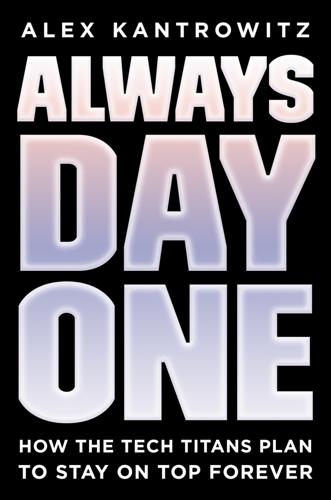
Always Day One: How the Tech Titans Plan to Stay on Top Forever
by
Alex Kantrowitz
Published 6 Apr 2020
Dow Jones & Company, September 17, 2018. https://www.wsj.com/articles/software-robots-power-surging-values-for-three-little-known-startups-1537225425. UiPath’s main competitors, Automation Anywhere, raised $300 million: Lunden, Ingrid. “RPA Startup Automation Anywhere Nabs $300M from SoftBank at a $2.6B Valuation.” TechCrunch. TechCrunch, November 15, 2018. https://techcrunch.com/2018/11/15/rpa-startup-automation-anywhere-nabs-300m-from-softbank-at-a-2-6b-valuation. Netflix, for instance, has a feedback culture: Ramachandran, Shalini, and Joe Flint. “At Netflix, Radical Transparency and Blunt Firings Unsettle the Ranks.” Wall Street Journal. Dow Jones & Company, October 25, 2018. https://www.wsj.com/articles/at-netflix-radical-transparency-and-blunt-firings-unsettle-the-ranks-1540497174?
…
It used to cost around two thousand dollars to go process something; now it costs three hundred.” UiPath is one of several “robotic process automation” companies currently surging to meet a growing demand for these capabilities. Less than two months after its Miami confab, one of UiPath’s main competitors, Automation Anywhere, raised $300 million from Softbank. And Google, for its part, isn’t the only company licensing AI decision-making power. A slew of other companies including Microsoft, IBM, DataRobot, and Element.ai offer similar capabilities. With such a broad, well-funded push to bring this technology to the masses (and with demand for such technology apparent), automation likely will soon reach workplaces across the globe, taking on execution work en masse.
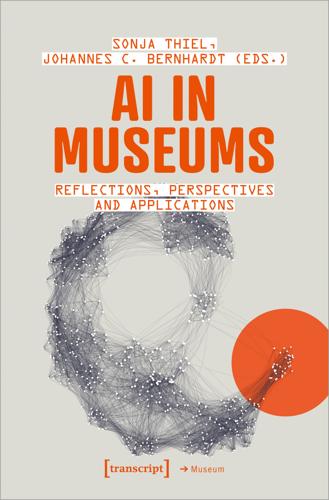
AI in Museums: Reflections, Perspectives and Applications
by
Sonja Thiel
and
Johannes C. Bernhardt
Published 31 Dec 2023
This includes not only chatbots and equivalent conversational mobile apps and guides (IRIS+, Museo de Amanhã, Rio de Janeiro; Bio-Cosmos, Museo de Arte Moderno de Buenos Aires; A Voz da Arte, Pinacoteca de São Paulo; Museo Nacional de Antropologia, Mexico City), but also a variety of research and implementations involving machine learning, computer vision, and neural networks, for instance. Of particular interest is robotics or rather HRI in museums. In this area, the production and implementation of the tour robot Pablo Bot in Lima since 2022, introduced by San Pablo Catholic University’s Mechatronics Engineering School, and based on Pepper’s blueprint by SoftBank Robotics, is geared towards spurring its widespread distribution in museums throughout South America (Marina 2022). Similarly, in Peru, the Museo de La Recoleta in Arequipa has collaborated on the implementation of tour robots with sensor-based object detection and convolutional neural networks (CNN) (Tejada-Mesias/Dongo 2019).
…
Related Work Several attempts have been made to deploy robots in museums. These robots are used to greet visitors, provide information or navigation, and augment exhibitions with additional content and services (Villaespesa 2021; Willeke et al. 2001; Cantucci/ Falcone 2022). For example, in 2018, the Smithsonian Museum used Pepper (Softbank Robotics) robots to translate, guide visitors, and teach coding, while at the Akron Museum a robot tour guide named Dot, which shares art information and 1 In this research, the projects SKILLED—Socioempathic AI-Based Dialogues (BMBF) and (Digital) Meer erleben (Experiencing the [Digital] Ocean, BKM) collaborated.
…
Dialogue systems, also known as conversational systems, can be categorized into three types: 1) goal-based systems, designed to complete specific user tasks such as scheduling appointments, and typically gather information through questions until the task is fulfilled (Gao et al. 2018; McTear/Callejas/Griol al. 2016); 2) chatbots, designed for casual conversation on open-ended topics, and trained end-to-end using large datasets of dialogue examples (ibid.); and 3) question-answering systems, which focus on answering a wide range of questions from a knowledge base, with the emphasis on information retrieval (Dimitrakis et al. 2020). In social robots such as Pepper and Nao (Softbank Robotics), or Furhat (Furhat Robotics), simple goal-based dialogue systems are commonly used due to the ease of controlling the knowledge and dialogue (Foster 2019). This nonetheless requires every spoken interaction with the robots to be handcrafted and a dialogue policy to be programmed. User utterances during a conversation are processed by a natural language processing unit, which identifies the intended meaning of the user’s words.

Blitzscaling: The Lightning-Fast Path to Building Massively Valuable Companies
by
Reid Hoffman
and
Chris Yeh
Published 14 Apr 2018
The Organization for Economic Cooperation and Development (OECD) has predicted that China’s middle class (defined as a household income of between $20,000 and $160,000 per year) will reach 73 percent of its population by 2030, making its market size nearly triple the entire population of the United States. Such a prize justifies an extremely high level of investment. Jack raised $25 million from SoftBank, Goldman Sachs, and Fidelity to grow the business, and another $75 million in growth equity from General Atlantic in 2009. Today, Alibaba controls an estimated 80 percent of the e-commerce market in China (the same figure for Amazon in the United States is 44 percent), and its 2014 IPO on the New York Stock Exchange became the largest in history, raising $25 billion for the company.
…
In contrast, when a blitzscaling company starts setting up multiple threads, they are still attached, might be competitive, are likely consuming the same pool of cash, and have no history of independent operations. One of the people I’ve personally seen handle these issues with exceptional skill is Deep Nishar, LinkedIn’s former head of product and now at SoftBank. Deep set up LinkedIn’s different product threads and expertly managed the product leaders to create a broader sense of ownership via a web of alignment. Each product leader was the owner of a primary thread, but was also partially accountable and compensated for his or her work in supporting a fellow product leader as a secondary thread.
…
We know about China, of course, but India is also projected to overtake the US economy this century. Indian e-commerce giant Flipkart has raised nearly $7.3 billion from investors around the world, including Accel (Silicon Valley), Tiger Global (New York), Naspers (South Africa), GIC (Singapore), and SoftBank (Japan). Its founders, Sachin Bansal and Binny Bansal—the two are not related—both worked for Amazon. Africa is pioneering mobile services like the M-Pesa mobile payment system, which was developed in the UK, managed by IBM in America, and whose technology is now managed by Huawei in China. M-Pesa accounted for $28 billion in transactions in Kenya in 2015; for comparison, Kenya’s GDP that year was $63 billion.
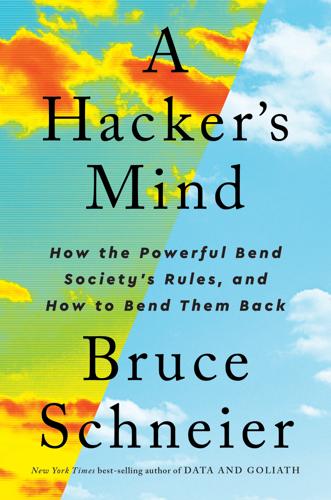
A Hacker's Mind: How the Powerful Bend Society's Rules, and How to Bend Them Back
by
Bruce Schneier
Published 7 Feb 2023
The services hurt restaurants: they’re not profitable for a whole bunch of reasons, they don’t bring in incremental sales, and a restaurant’s reputation suffers when the delivery service screws up. Even the customers don’t fare well: they’re hit with service fees and higher prices and suffer all sorts of delivery problems. The only reason that this market even exists is that venture capital firms like SoftBank are willing to pour tens of billions of dollars into it, hoping that someday they might capture enough restaurant industry profits to turn a profit of their own. This investment strategy is a hack: market capitalism is supposed to use the uncoordinated collective wisdom of buyers to influence sellers.
…
They can use this to saddle the firms they acquire with debt, extract money from them, leave them with more debt, then sell them for even more profit—with all the debtors left holding the (empty) bag. Consider the case of Greensill Capital, which collapsed spectacularly in 2021. Its unsustainable expansion over the course of ten years—from supply-chain finance startup, to multinational middleman with a $4.6 million debt load, to insolvency—was accelerated by investments and loans from SoftBank, who made millions in funds available in spite of the company’s increasingly fishy accounting. There’s nothing illegal about any of this. VC funding and private equity are such a normal part of our economy that it might seem odd to call them hacks. But they are; they’re hacks of pretty much everything the market is supposed to do.
…
See wealth/power private equity, 101–2 Protestant Reformation, 72 psychotherapy, 217 pump-and-dump, 80–81 Quibi, 100–101 ranked-choice voting, 171 real estate hacks, 86–88 reciprocation, 217 recommendation engines, 236 Reconstruction, 161–62 red-teaming, 56, 77, 126–27, 149 Redeemers, 161–62 regulation accountability and, 68 banking, 74 financial exchange hacks and, 84 governance systems, 245–48 market hacks and, 94 real estate hacks and, 87–88 See also regulation avoidance regulation avoidance, 123–27 financial exchange hacks and, 82 gig economy and, 123–25, 264n jurisdictional rules and, 131 regulatory capture, 75–77, 91, 116–18 ride-sharing apps and, 123–24, 264n “too big to fail” hack and, 97 wealth/power advantages and, 121 Regulation Q, 74, 75 regulatory capture, 75–77, 91, 116–18 religious hacks, 71–72, 73, 85, 111, 139–40, 260n resilience, 28, 67–68 responsible disclosure, 89–90 rewards, 184, 186, 231–35, 240 ride-sharing apps, 99, 100, 101, 116, 123–25, 264n Riegle-Neal Interstate Banking and Branching Efficiency Act (1994), 75 risk analysis, 195–96 robotics, 208, 217–19, 222–23 See also AI hacking; AI systems Rodriguez, Alex, 170 Rodríguez, Jose, 170 Roombas, 217 Rosenblum, Jeremy, 126–27 rules, 18–19, 25, 232 Russell, Stuart, 233 Sahu, Lakhan, 170–71 Saunders, Don, 31 script kiddies, 22 secure systems design, 59, 85 Securities Act (1933), 82 Securities Exchange Act (1934), 80 Sedol, Lee, 212 segmentation, 60 self-driving cars, 209–10 SGT STAR, 188 shoplifting, 63, 68 SIM swapping, 191 simplicity, 59, 80 Siri, 217 skimming, 33 Smith, Adam, 93 social engineering, 191–92, 216 social media, 184–85, 186–87 soft money, 169 SoftBank, 99 SolarWinds, 54–55, 60, 145 South Carolina v. Katzenbach, 164 spam, 46–47 spear phishing, 192 Spectre, 48 sponsored content, 194 spoofing, 81, 82 sports hacks, 41–44, 46, 103, 259n Summers, Larry, 97 sumptuary laws, 110 supply chain attacks, 145 Susskind, Jamie, 248 Suzuki, Daichi, 42 systems additional for hacking defense, 54, 60 biological, 19–20 defined, 17–18, 19 hierarchy and, 200 multiple levels of, 32 norms and, 66–67 resilience in, 152 rigidity of, 27 rules and, 18–19 thinking based on, 20 TaskRabbit, 124 Tata, Anthony, 160 tax code bugs in, 14–15 complexity of, 13–14 See also tax hacks Tax Cuts and Jobs Act (2017), 14, 15–16, 129, 146–47, 149 tax hacks architecture and, 109 creative hackers and, 22 cum-ex trading, 104–5 de minimis rule and, 249 defenses against, 15–16, 51, 61 jurisdictional rules and, 128–31 morality and, 263n wealth/power advantages and, 120 tax havens, 128–31 Tay (chatbot), 210 technological change, 251–52 telephone hacks, 26–27, 46 Terminator, 243 terrorism, 196 Tetzel, Johann, 72, 260n Theranos, 101 Thiel, Peter, 3, 4 threat modeling, 62–63, 64–65, 96 title-only bills, 154 “too big to fail” hack, 95–98 travel hacks, 179–80 trespass law, 135–36 tribal courts, 113 tribalism, 196–97 Troubled Asset Relief Program, 96 Trump, Donald banking hacks and, 77 cognitive hacks and, 182 destruction as result of hacking and, 173 legislative process hacks and, 147 norms and, 66–67 payday loans and, 126 social media and, 185 tax hacks and, 105 trust hacking, 27, 191–94, 218 TurboTax, 190 turducken, 110, 263n Turkle, Sherry, 218–19 Twenty-Fourth Amendment, 164 Twitter, 81 typos, 84–85 Uber, 99, 100, 101, 116, 123, 125, 264n unemployment insurance, 132–33 United Nations Convention on the Law of the Sea (1994), 130 user interface design, 189–90 Vacancies Reform Act (1998), 160 variable rewards, 186 venture capital (VC), 99–101, 125 Violence Against Women Act (2013), 114 voice assistants, 217 Volcker Rule, 77 Volkswagen, 234 Voltaire, 172 voter eligibility hacks, 161–63 voter ID laws, 164–65 Voting Rights Act (1965), 164 vulnerabilities acceptance of, 16 AI ability to find, 229–30, 238–39 ATM hacks and, 31, 33, 34 bugs as, 14–15 hacking as parasitical and, 48, 49 hacking hierarchy and, 201 hacking life cycle and, 21 identifying, 56–57, 77–78, 237–38 legislative process hacks and, 147–48, 267n of AI systems, 4, 209–11, 226–27 real estate hacks and, 86 responsible disclosure, 89–90 secure systems design and, 59 zero-day, 90 See also patching Walker, Scott, 166–67 WannaCry, 50 Warner, Mark, 190 Watts, Duncan, 97 wealth/power access and, 22 administrative burdens and, 134 democratic growth and, 250 election hacks and, 168–71 hacking advantages of, 103–4, 119–22 hacking governance systems and, 248 hacking normalization and, 73, 104, 119, 120, 122 impact on vulnerability patches and, 24 market hacks and, 97 trust breakdown and, 251 West, Kanye, 170 Westphal, Paul, 41 WeWork, 100 WikiLeaks, 191 Wilson, Edward O., 251 Winston, Patrick, 206 Women, Infants, and Children (WIC) program, 134 work-to-rule, 115–16, 121 YouTube, 185, 236 Zelenskyy, Volodymyr, 193 zero-day vulnerabilities, 90 Zone of Death jurisdictional loophole, 112–13 Zuckerberg, Mark, 94 Zuckerman, Ethan, 183 ALSO BY BRUCE SCHNEIER We Have Root Click Here to Kill Everybody Data and Goliath Carry On Liars and Outliers Cryptography Engineering Schneier on Security Practical Cryptography Beyond Fear Secrets and Lies The Twofish Encryption Algorithm The Electronic Privacy Papers E-Mail Security Protect Your Macintosh Applied Cryptography Copyright © 2023 by Bruce Schneier All rights reserved First Edition For information about permission to reproduce selections from this book, write to Permissions, W.
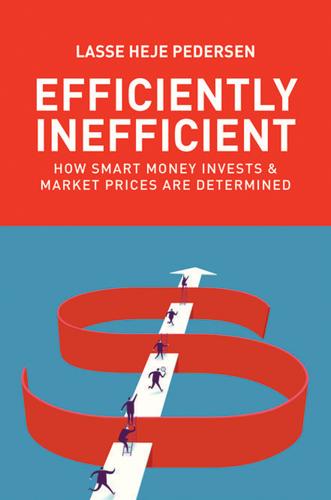
Efficiently Inefficient: How Smart Money Invests and Market Prices Are Determined
by
Lasse Heje Pedersen
Published 12 Apr 2015
LHP: Can you give a specific example of such a trade? JAP: We did it with Sprint last year. SoftBank made a bid to buy 70% of Sprint for $5.75 a share. So we did the multiples like I just described, and it was a low multiple relative to other wireless companies that traded. We thought there’s a chance someone else could come in. So we bought 220 million shares of Sprint. Obviously, we made a big investment. So let’s say $5.75 times 220 million, we put about $1.3 billion into this one stock. And then we waited. Well, lo and behold, Dish showed up and offered $7 a share. And that forced SoftBank to come back at $7.75 a share. We wound up making $2 a share very quickly on 220 million shares or, in real-life terms, $440 million in this one merger transaction.
…
As the industry’s growth started to slow and the need for capex [capital expenditure] started to grow, it was apparent that these smaller guys could not survive as independents any more. So it was possible for us to anticipate, who is likely going to get acquired and acquire those stocks in anticipation of them being acquired. And then, the way it worked out, they were all acquired: Sprint by SoftBank, MetroPCS by T-Mobile, Clear Wireless by Sprint, and Leap by AT&T. In the case of Leap, we had a 9.9% stake and AT&T paid a 110% premium. LHP: Let’s turn to distressed investment and bankruptcies. How do you trade these? JAP: Bankruptcy investing is also a very attractive area where there’s a limited amount of expertise.
…
See also dedicated short bias hedge funds short squeeze, 118; predatory trading and, 84 Siamese twin stocks, 6, 149–50, 149f side pockets, 75 size risk, 29 Skilling, Jeff, 127 small-minus-big (SMB) factor, 29 smile, of time series momentum, 220–21, 220f smirk, of implied volatility, 239 SML (security market line), 140–41, 140f, 141n SoftBank, 318, 319 Soros, George, viii, 1, 11, 13, 15–16, 15t; famous trade by, shorting the pound, viii, 1, 187, 204, 320; on going for the jugular, 11–12, 321; Internet bubble and, 41, 203, 206; interview with, 204–7; Paulson’s learning from, 206, 320, 321; Scholes on, 264; theory developed by, 15t, 200–204 Soros Fund Management, 204 Sortino ratio, 32 sovereign bonds, 260 sovereign credit risk, 200 sovereign wealth funds, 96, 167 specialness, 245–46, 245f special purpose acquisition companies (SPACs), 313 special security structures, 313 spin-offs, 14, 291, 307–9, 308f; Paulson on, 314, 316 split-offs, 14, 307–9, 308f spreads: widening during periods of stress, 267–68.

AI Superpowers: China, Silicon Valley, and the New World Order
by
Kai-Fu Lee
Published 14 Sep 2018
That dearth of innovation financing meant many good ideas likely never got off the ground, and successful implementation of the GPTs scaled far more slowly. Today, VC funding is a well-oiled machine dedicated to the creation and commercialization of new technology. In 2017, global venture funding set a new record with $148 billion invested, egged on by the creation of Softbank’s $100 billion “vision fund,” which will be disbursed in the coming years. That same year, global VC funding for AI startups leaped to $15.2 billion, a 141 percent increase over 2016. That money relentlessly seeks out ways to wring every dollar of productivity out of a GPT like artificial intelligence, with a particular fondness for moonshot ideas that could disrupt and recreate an entire industry.
…
See China and U.S., competition between China’s technology environment compared to, 15–16, 43–45, 49, 55, 57, 65, 71–73 China’s version of, 51–53, 63 Chinese copycat entrepreneurs and, 22–25, 28, 30–34, 49 chip development in, 96–97 data gathered by, 56 eBay and, 35–36 ecosystem of, 52–53 elite expertise in, 82, 83 entrepreneurs of, 15–16, 22, 26, 27, 52, 168 failure in China, 39–40 four waves of AI and, 106 global markets and, 137, 138 lean startup methodology and, 44–45 policy suggestions coming from, 201 resistance to product modifications, 24, 38, 39 resistance to subsidies, 76 ride sharing and, 68 universal basic income and, 207, 208–10, 218 world technology market domination, 2, 11–12 Silicon Valley (TV series), 55 Simon, Herbert, 7 Singapore, 20, 137, 146 T the singularity, 140–41, 142 Sinovation Ventures Guo’s attraction of, 52, 62 Lee’s founding of, 52, 57, 64, 67 startups incubated by, 57, 58 study by, 89 Smart Finance, 112–13, 163 smartphones China’s alternate internet universe and, 54, 61 Chinese leapfrogging of PCs with, 57–58 Chinese students and, 3, 83 chips in, 96 mini-iPhones, 32 Mobikes and, 78 mobile payments and, 74, 75 processing power in, 9 WeChat app for, 58–59, 61, 70 Zhongguancun and, 52 social entrepreneurship, 216–17 social investment stipend, 220–24 Softbank, 153 Sohoo (search engine), 31 solar panels, photovoltaic, 133 Solyndra, 100 Southeast Asia, 137, 169 South Korea, 146, 159, 228–29 Soviet Union, 3 Space Race, 3 SpaceX, 49 speech recognition advances in, recent, 161 Baidu and, 93 deep learning and, 5, 10 educational applications, 123 iFlyTek and, 104–5 international competitions in, 87, 104–5 Lee and, 177–78 legal applications, 115 in the mainstream, 143 Microsoft Research and, 81 neural networks and, 8–9, 10 privacy and, 124 speech synthesis, 104–5, 177 Sphinx, 8 Sputnik, 3 Sputnik Moment for China (2016), 3, 11 Steal Vegetables, 43 steam engine, 149, 150, 152, 154, 228 Stoppelman, Jeremy, 72 strawberry picking, 129 strong features vs. weak features, 110–11, 113, 191 structured data, 111–12 Summers, Lawrence, 151 super-app model, 70–71.
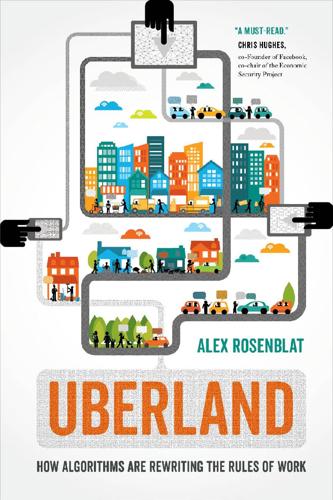
Uberland: How Algorithms Are Rewriting the Rules of Work
by
Alex Rosenblat
Published 22 Oct 2018
Uber’s influence on the future of work is compounded by the company’s outsized valuation, upward of $70 billion through 2017,42 and the oversized influence of Silicon Valley in the world. Uber’s valuation as a private company is not set in stone: at the end of 2015, the company’s investors valued it at $62.5 billion; in 2016, the high point for Uber’s valuation was $68 billion;43 a consortium led by SoftBank invested in the company at the end of 2017 with the understanding that it was valued at $48 billion;44 and Alphabet obtained shares in Uber in February 2018 on the basis of a $72 billion valuation.45 The company’s value will be determined more concretely after an initial public offering, but the multibillion-dollar question of Uber’s worth is part of what propels Uber to the front pages of the news.
…
See also Gabriel Thompson, “What We Talk about When We Talk about the Gig Economy,” Capital and Main, July 27, 2017, https://capitalandmain.com/what-we-talk-about-when-we-talk-about-the-gig-economy-0727; on income volatility in the gig economy, see JP Morgan Chase, “Paychecks, Paydays, and the Online Platform Economy Big Data on Income Volatility,” February 2016, www.jpmorganchase.com/corporate/institute/report-paychecks-paydays-and-the-online-platform-economy.htm. 42. Amir Efrati, “Investors Rethink Uber’s Long-Term Value,” The Information, December 7, 2017, www.theinformation.com/investors-rethink-ubers-long-term-value. 43. Greg Bensinger, “What Is Uber Really Worth?” Wall Street Journal, November 15, 2017, www.wsj.com/articles/with-two-price-tags-from-softbank-what-is-uber-really-worth-1510741802. 44. Harrison Weber, “Uber’s Unreal $70 Billion Valuation Really Was Unreal,” Gizmodo, December 28, 2017, https://gizmodo.com/uber-s-unreal-70-billion-valuation-really-was-unreal-1821633772. 45. Theodore Schleifer, “Uber’s Latest Valuation: $72 Billion,” ReCode, February 9, 2018, www.recode.net/2018/2/9/16996834/uber-latest-valuation-72-billion-waymo-lawsuit-settlement. 46.
…
See also future of work; gig economy; specific companies Shear, Randy Lee, 83 SideCar, 27 Singapore, 194 Singer, Natasha, 161, 172 Slee, Tom, 183 sleeping in cars, 2, 64, 66–67, 194, 221n1 Slovakia, 183 small business management, 45–46 Smooth Accelerations app, 139 Smooth Breaks app, 139 social interaction as drivers’ motivation, 2, 52, 53, 54–56 SoftBank, 29 Srnicek, Nick, 24, 226n20 stakeholders, Uber’s game of playing, 168, 179–87 Standing Rock protest, 191–92 Staples, 111 Stark, Luke, 93–94, 131, 149, 199 Steven (driver), 52 Stewart, Nicholas, 42, 220 supplementary employment. See hobbyist drivers; part-time drivers surge manipulation, 98, 99 fig., 113, 128–37, 242n39.
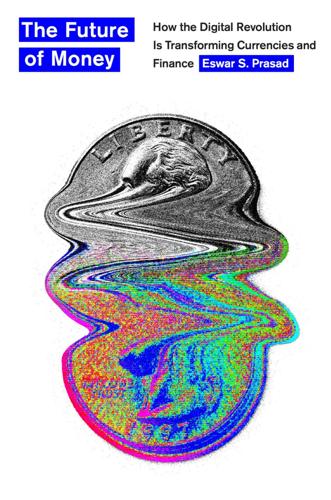
The Future of Money: How the Digital Revolution Is Transforming Currencies and Finance
by
Eswar S. Prasad
Published 27 Sep 2021
Facebook’s initial public offering of stocks in 2012 raised $16 billion and gave the firm an overall valuation of $104 billion. In less than a decade, the value of a 10 percent stake—which cost Thiel half a million dollars and Accel $12 million a year later—had risen to more than $10 billion. At the other end of the spectrum is a case involving Japan’s SoftBank Group. Its risk-taking chairman, Masayoshi Son, set up the $100 billion Vision Fund, which came to be known for undertaking private equity investments in technology companies in their infancy. Early investments in companies such as Alibaba, Yahoo!, and Uber yielded substantial profits. Son acquired the reputation of a visionary investor in technology start-ups.
…
In 2016, Son met Adam Neumann, the cofounder of WeWork, and soon became enamored of Neumann’s business idea. WeWork is a real estate company that rents out office and meeting spaces for technology start-ups and other enterprises. Through the sheer charisma of its founder, it portrayed itself as an exciting technology company rather than a humdrum real estate business. SoftBank invested $10.7 billion in WeWork from 2017 to 2019 in return for about a 23 percent ownership share, giving the company a valuation of $47 billion. In August 2019, the company issued a detailed description of its financial situation and prospects in advance of a public listing of its shares on the stock market.
…
This gave investors a clearer picture of the company’s shaky finances—not to mention its cofounder’s various financial shenanigans. Investors balked and the public listing had to be canceled. With the pandemic-induced recession crushing demand for WeWork’s product and jeopardizing the viability of the company’s business model, SoftBank faced the risk that its investment in the company would turn into a pittance. These two examples highlight the nature of the business—any investment could yield astronomical profits or turn to dust. From 2017 through 2019, private equity firms worldwide raised more than $650 billion in capital each year.

The Quiet Coup: Neoliberalism and the Looting of America
by
Mehrsa Baradaran
Published 7 May 2024
The market has come full circle. Our modern visionaries at the edge of the market frontier, however, reveal a rather grim and limited vision for humanity’s future. The $154 billion Vision Fund, WeWork’s angel investor, is illustrative. It was started by Masayoshi Son, the founder and CEO of the multinational conglomerate SoftBank. Vision Fund’s mission, as stated in its marketing documents, is to spread “happiness to everyone” and to “increase people’s joy.” The initial $100 billion investment in the Vision Fund came from Mohammad bin Salman, the tech-friendly Saudi known as MBS who is the de facto ruler of one of the most unequal countries in the world and whose $1.4 trillion of oil wealth is invested in several tech unicorns.
…
These include: Kabbage, an AI-based lender with “core values” including Care Deeply, Inspire Innovation, Win, Stay Connected, Unconditional Commitment, and lastly, Create Holy Shit Moments Uber, the golden egg, whose more modest mission is “We ignite opportunity by setting the world in motion” DoorDash, which describes its delivery service app as “just the beginning of connecting people with possibility—easier evenings, happier days, bigger savings accounts, wider nets and stronger communities” Opendoor, a real estate broker intending “to empower everyone with the freedom to move” Zymergen, a biotech company that is “reimagining the world” through “a combination of Darwinian selection of genetically engineered microbes combined with machine learning, analysis and automation” Not all of these start-ups will survive, but those that do will do so by prospecting new terrain for extraction. Funds like SoftBank’s or venture capitalist firms like Andreessen Horowitz control the largest pools of money and are seeking the highest returns, which means that they place bets on companies and founders based purely on potential and vision rather than demonstrated profits. A successful venture capitalist should be a visionary themselves with the ability to predict where the market will be in five to ten years rather than where it is now.
…
See also desegregation segregation academies, 186 Seid, Barre, 140, 187 self-interest, 35, 172, 184, 193, 222, 224, 228, 234, 351 self-sufficiency, 227 Senate, U.S., 140, 358, 360 Senate Ethics Committee, 300 “separate but equal,” 102, 144, 155 separation of church and state, 102, 188 separation of powers, 207 serfdom, 32, 60, 235, 342, 350 set asides, 73 seven sisters, 47–48 sexual behavior, 176–77 Shad, John, 258 shadow banks, 267 Shaftesbury, First Earl of, xxx Shah of Iran, 48, 61, 355, 356 shame shift, 217 shareholder activism, 78 shareholder maximization, 231, 269 shareholders, 77–78, 80, 84, 191, 239 shareholder supremacy, 85, 239–40 Shariati, Ali, 41 Sharpeville uprising, 39 Shenfield, Arthur, 50–51 Shiller, Robert, 234 “shock treatment,” 55 Shultz, George, 62, 73, 74, 236 Signal (app), 328 Signal Advance, Inc., 328 Silberman, Laurence, 153 “silent majority, the,” 18, 187 Silent Scream, The (documentary), 187 Silk Road, 39, 196 Simon, William, 90–91, 138 Singer, Paul, 279–80, 306, 344 “Efficient Markets Need Guys Like Me,” 280 single mothers, 177, 202 Situation with Tucker Carlson, The, 141 Six-Day War, 39 Sixth Amendment, 102 60 Minutes, 291 Skype, 322 Slack, 324 slavery, xxix, 21, 35, 46, 125, 126, 132–33, 165, 224–25, 244, 274, 281 Slobodian, Quinn Globalists, 52 Slouching Toward Gomorrah: Modern Liberalism and American Decline (Bork), 139 slumlords, 13–14, 173, 202 smart contracts, 335–37 smart money, 361 Smith, Adam, 108, 173, 192–94, 197–99, 353, 364 Defence of Usury, 199 The Theory of Moral Sentiments, 192 Wealth of Nations, 192–93, 353, 364 Smith, Loren A., 145 Snow, John, 23 social contract, 29, 200, 246, 258, 300, 313 social Darwinism, 35, 235, 362 socialism, 9, 18–19, 32, 46, 67, 81, 83, 84, 231, 306, 352 social justice, 38, 70, 223, 235, 328 social life, commodification of, 322 social media, xxiv, 320–21 social problems, using markets to solve, 165 social programs, 238, 270, 316 “Social Psychology of the World’s Religions, The” (Weber), 219 Social Responsibilities of Business, Company, and Community, 1900–1960 (Heald), 83 Social Responsibilities of the Businessman, The (Bowen), 83 social responsibility, 82–84 social security, 15, 19, 57, 184, 200, 228, 299 social welfare programs, 59, 65 society, 219–20, 246–47, 280 sociology, 101, 102, 126, 166 SoftBank, 325, 326 soft money, 115 Solaren, xiv Somalia, 39 Son, Masayoshi, 325 Sorbonne, 43 Soros, George, xxiii, 343 Sotomayor, Sonia, 151 Souter, David, 148 South Africa, 39, 49, 50, 53–54, 56, 90 South Dakota, 207–8 Southeast Asia, 39 southerners and the South, xxxi, 19, 22, 25, 27, 30, 100, 101, 104, 132, 224, 225 “southern strategy,” 17–18, 75, 228 South Korea, 39 sovereignty, xxxi, xxxvi, 46–50, 52 Soviet Union, 32, 49 Sowell, Thomas, 89, 94, 216–17 Basic Economics, 216 space exploration, 327–28 SpaceX, 324, 327 Spain, xxix, 34 special interests, 149, 220, 230, 232–33, 239 special purpose vehicles (SPVs), 290 spirit of the law, xxii, xxxiv, 116, 144 spirituality, 185 Square, 324 Srinivas, Balaji, 327 stagflation, 24 Standard Oil, 79 Standard & Poor’s, 292 stare decisis, 150, 151, 155, 156 Starlink, 327–28 Starr, Kenneth W., 118, 137 Starr Report, 118 start-ups, 323–24 state, the, xvi, xxii, xxxix, 52, 106, 193, 223, 231–32, 246–48, 334 state laws (state legislatures), xxi, xxii, 112, 206–8, 213, 214 states’ rights (U.S. states), 112, 220 State Street, 348 steel, 197, 198, 271 sterilizations, mandatory, 133–34 Stevens, John Paul, 113, 124, 147, 148, 151 Stewart, James “Eight Days,” 293 Stewart, Potter, 109, 113, 124 Stigler, George, 22–23, 26, 45, 73, 139, 157, 166–68, 220, 226, 232–33, 235, 238, 239, 256 “The Problem of the Negro,” 22–23 “Theories of Economic Regulation,” 168 “The Theory of Economic Regulation,” 232–33 Stigler Center (University of Chicago), 232 stimulus checks, 329 stockbrokers, 245, 342 stockholders, 84–85 stock market crash (1929), 80, 252 stocks and stock market, xx, 80, 255, 273, 290, 307, 329, 363.
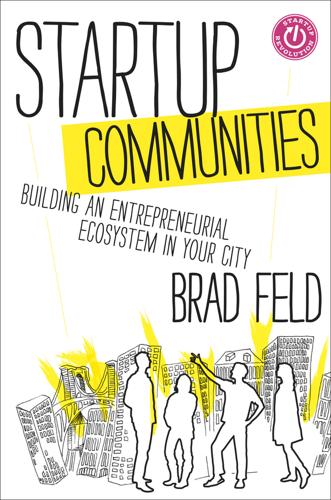
Startup Communities: Building an Entrepreneurial Ecosystem in Your City
by
Brad Feld
Published 8 Oct 2012
About a dozen people showed up, including Terry Gold (Gold Systems), Paul Berberian (LinkVTC), and Tim Enwall (Solista). Suddenly I was part of a group of a dozen entrepreneurs who were meeting monthly. In 1997, I co-founded the Colorado Internet Keiretsu. By this point, entrepreneurship around the Internet was growing rapidly, and I was investing aggressively with my new partners at Softbank Technology Ventures in Internet companies across the United States. I put a stake in the ground to organize the Boulder Internet companies and gathered as many founders as I could find at a restaurant in Boulder to discuss building a loose confederation of companies. We repeated this in Denver and then had a large meeting at my house in Eldorado Canyon where everyone discussed a long-term view of putting the region on the map.
…
See Activities and events Everlater External (agglomeration) economies F Failing fast Falls, Tim Feeder control Feinblum, Barney Filtrbox Florida, Richard Franklin, Jim G Global Accelerator Network Gold, Larry Gold, Terry Google Gottesman, Greg Government being too reliant on and entrepreneurs, contrasts between action vs. policy bottom up vs. top down impact vs. control micro vs. macro self-aware vs. not self-aware as instigator of feeder control as participant in startup community H Haislmaier, Jason Harris, Donna Higley, Tom Highway 12 Ventures Hill, John Holland, Kirk Horizontal networks Horsfall, Jan Huh, Ben Hyde, Andrew I IBM Ignite Boulder Investors Ives, John K Kamallakharan, Bala Kauffman Foundation Kedrosky, Paul L Lawton, Jenny Leadership, attributes of being inclusive being mentorship driven experimenting and failing fast giving people assignments having porous boundaries playing a non-zero-sum game The Lean Startup (Ries) Lefkoff, Kyle Lejeal, Jim Leonsis, Ted Levine, Seth Limmer, Ben Lorang, Bart M Makare, Brian Markets and Hierarchies (Williamson) Markiewicz, Tom Marshall, Alfred Martens, Ryan Massachusetts Institute of Technology (MIT) Founders’ Skills Accelerator Matchlogic Mendelson, Jason Mentors Mercure, Merc Message Media Microsoft Microsoft Accelerator Miller, Tim Moyes, Frank Myths, about startup communities need to be like Silicon Valley needing more local venture capital organized angel investors N Nager, Marc National Center for Women and Information Technology (NCWIT) Natural-foods industry (Boulder) Nelsen, Clint Network effects Newcomers, having a bias against Newman, Ari Nouyrigat, Franck O Obama, Barack, xi–xii Omaha startup community P Participants in startup communities entrepreneurs government investors large companies leaders and feeders, importance of mentors service providers universities Past failures, avoiding people because of Patriarch problem Platt, Mike Polis, Jared Postinformation era Principles of startup communities Boulder Thesis entrepreneurial stack, engaging entrepreneurs, leadership role of historical frameworks inclusiveness, fostering a philosophy of long-term commitment Problems, classical artificial geographic boundaries, creating attempt by feeder to control community avoiding people because of past failures capital, complaining about government, being too reliant on newcomers, having a bias against patriarch problem risk aversion, having a culture of short-term commitments, making zero-sum game, playing R Raindance Communications Regional Advantage: Culture and Competition in Silicon Valley and Route 128 (Saxenian) RegOnline Reich, Robert Renaud, Christian Rice University The Rise of the Creative Class (Florida) Risk aversion, having a culture of Robertson, Niel Rodriguez, Ef Rodriguez, Juan Roser, Jim Route 128 (Boston) S Sack, Andy Salesforce.com Foundation Sanders, Lucy Saxenian, AnnaLee SendGrid September 11 Service Metrics Service providers, as participants in startup community Short-term commitments, making Silicon Flatirons program Silicon Valley Slobotski, Jeff Small businesses SocialThing Softbank Technology Ventures Solinger, Diane Solon, Mark Stanford University Startup America, xi Partnership Regional Summit Startup Colorado Startup Communities website, xv Startup Iceland creating Startup Revolution website, xv, xviii Startup Weekend startups2students StorageTek Syntex T Technology transfer offices (TTOs) TechStars expansion to New York spread to Boston and Seattle TEDx Boulder Tisch, David Trefler, Alan U Universities as instigators of feeder control as participants in startup community alumni, power of components of CU Boulder entrepreneurship programs, challenges to getting fresh blood into the system networked approach vs. hierarchical approach Silicon Flatirons University accelerators University of Colorado Boulder components of Deming Center for Entrepreneurship Eship initiative technology transfer office (TTO) CU New Venture Challenge law school (CU Law) Silicon Flatirons program V Venture capital industry (Boulder) Vernon, Todd W Warner, Bill Weaknesses, in startup communities diversity, lack of integration parallel universes space Web 2.0 Weiser, Phil Williamson, Oliver Wyman, Bruce Y Young Entrepreneurs Organization (YEO) Z Zero-sum game, playing AN EXCERPT FROM STARTUP LIFE: SURVIVING AND THRIVING IN A RELATIONSHIP WITH AN ENTREPRENEUR by Brad Feld and Amy Batchelor (2013) FRIDAY NIGHT FIGHTS A key to effective communication is to choose a time and place to talk when both partners are rested, ready, and relaxed, and to do this on a regular basis.
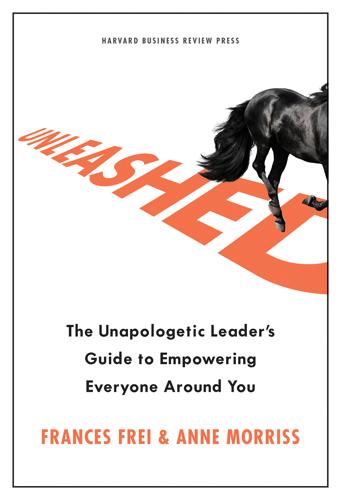
Unleashed
by
Anne Morriss
and
Frances Frei
Published 1 Jun 2020
Kara Swisher, “Uber’s Culture Fixer, Frances Frei, Is Leaving the Company,” Vox, February 27, 2018, https://www.vox.com/2018/2/27/17058348/uber-culture-frances-frei-depart-travis-kalanick-dara-khosrowshahi-harvard-business-school. 31. Mike Isaac, “Uber Sells Stake to SoftBank, Valuing Ride-Hailing Giant at $48 Billion,” Technology, New York Times, December 28, 2017, https://www.nytimes.com/2017/12/28/technology/uber-softbank-stake.htm. Chapter 3 1. We are incredibly grateful to the amazing Professor Emma Dench of Harvard University for introducing us to Valerius Maximus and many of her other long-departed friends. Emma and Frances co-taught a course called “Leadership Lessons from Ancient Rome” to MBA students in the fall of 2015.
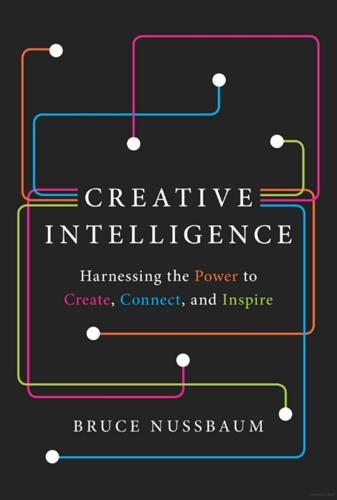
Creative Intelligence: Harnessing the Power to Create, Connect, and Inspire
by
Bruce Nussbaum
Published 5 Mar 2013
Rusli, “Gilt Groupe Valued at Roughly $1 Billion,” New York Times, May 9, 2011, accessed September 13, 2012, http://dealbook.nytimes.com/2011/05/09/gilt-groupe-valued-at-roughly-1-billion/; Tomio Geron, “Gilt Groupe Raises $138 Million Led by Japan’s Softbank,” Forbes, May 9, 2011, September 13, 2012, http://www.forbes.com/sites/tomiogeron/2011/ 05/09/gilt-groupe-raises-138-million-led-by-japans-softbank/. 133 At its height, 80 million: Oliver Chiang, “FarmVille Players Down 25% Since Peak, Now Below 60 Million,” Forbes, October 15, 2012, accessed October 18, 2012, http://www.forbes.com/sites/oliverchiang/2010/ 10/15/farmville-players-down-25-since-peak-now-below-60-million/. 133 And millions more people: Adam Holisky, “World of Warcraft Subscriber Numbers Dip 100,000 to 10.2 Million,” http://joystiq.com, February 9, 2012, accessed September 13, 2012, http://wow.joystiq.com/2012/02/09/world-of-warcraft-subscriber-numbers/. 134 Bob Greenberg, CEO: Bob Greenberg told me this story when I was at BusinessWeek.
…
It’s all a bit of fantasy (I actually buy very little since I’m not quite in the high-income/wealth sweet spot of Gilt’s target audience) but for the short time that I’m on the site, I participate in a story of high fashion and high-class global travel. It draws me in. And other people as well. Gilt has grown quickly since it was founded. It raised another $138 million from investors Goldman Sachs and Japan’s Softbank in 2011, and in 2012 its main flash-sale online retail business turned a profit just five years after its launch. As with many of the Creative Intelligence competencies, a generational shift is a major factor contributing to the explosion in the popularity of gaming. To members of Gen Y who grew up with social gaming—playing with friends and strangers online, learning by gaming—game dynamics are a way of understanding and navigating the world around them.

Damsel in Distressed: My Life in the Golden Age of Hedge Funds
by
Dominique Mielle
Published 6 Sep 2021
Most large hedge funds have either gone public or sold at least a minority, if not a majority ownership to a large corporation, insurance company, mutual fund, or bank. Citadel became a public company in 2015. Fortress Investment Group went public in 2007 then was bought by Japan’s SoftBank Group in 2017. Oaktree Capital sold to Brookfield Asset Management in March 2019 after becoming public in 2012. These are just a few transactions in a longer string of mergers and initial public offerings, but they are emblematic of the issue. SoftBank has explicitly stated its ambition to become a $300 billion asset manager. Brookfield is Canada’s largest alternative investment firm and owns assets ranging from real estate to infrastructure to renewable power.

Mbs: The Rise to Power of Mohammed Bin Salman
by
Ben Hubbard
Published 10 Mar 2020
He also, with no explanation, showed up two hours late for lunch with not one former president George Bush, but two—the elder of whom was 93, in a wheelchair, and would pass away seven months later. The three-week trip was many things: a visual tour of American power; a branding coup that introduced powerful Americans to MBS; and a Saudi plea for broad American engagement in the kingdom’s future. Despite the impressive itinerary, only one major deal was inked—a joint venture with Japan’s SoftBank on solar power—but MBS generated enthusiasm in Washington and among other elites, opening possibilities for future collaboration. The trip made clear MBS’s deep admiration for the United States and its role in Saudi Arabia. “We have been influenced by you in the U.S. a lot,” he had said the year before.
…
His company, Virgin Group, told the Saudis to keep the $1 billion they had planned to invest in its space ventures, and Branson quit his roles in Saudi tourism projects and canceled his attendance at the second edition of MBS’s investment conference, scheduled for late October. Others did, too. Amid the global headlines and lurid details about the Khashoggi killing, big names dropped out, including the CEOs of Blackstone Group and Uber, both of which had received large Saudi investments. The CEO of SoftBank, who had appeared onstage with MBS the year before for the announcement of NEOM, canceled. Foreign officials stayed away, and U.S. Treasury Secretary Steven Mnuchin skipped the conference but met MBS privately in Riyadh. Media organizations that had signed up as official sponsors pulled out, including The New York Times, Bloomberg, and Fox Business.
…
A pleasure to have a private dinner with the Crown Prince of Saudi Arabia, Mohammed bin Salman,” Facebook post, April 4, 2018. https://www.facebook.com/DwayneJohnson/posts/an-historic-night-it-was-a-pleasure-to-have-a-private-dinner-with-the-crown-prin/10156608161399384/ George Bush, but two: Associates of the Bushes to Peter Baker, Feb. 2019. SoftBank on solar power: “A Wild Ride Behind the Scenes as Saudi Crown Prince Does America,” Bloomberg, April 2, 2018. “ended up like North Korea”: “A young prince is reimagining Saudi Arabia. Can he make his vision come true?” WaPo, April 20, 2017. “countries like Egypt and Jordan”: “Saudi Crown Prince: Iran’s Supreme Leader ‘Makes Hitler Look Good,’ ” The Atlantic, April 2, 2018.
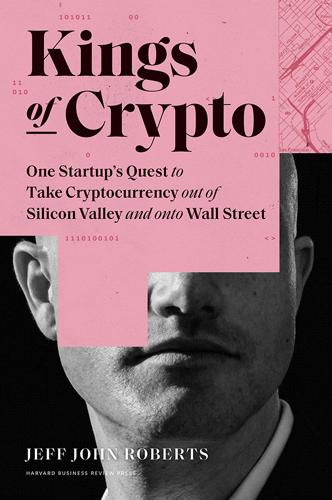
Kings of Crypto: One Startup's Quest to Take Cryptocurrency Out of Silicon Valley and Onto Wall Street
by
Jeff John Roberts
Published 15 Dec 2020
• • • A burst of investment in crypto in early 2018, such as Peter Thiel’s $20 million bet, convinced some that the bubble hadn’t burst, but by May it became clear that the good times were over. Retail investors who had made smaller bets on crypto felt the pain first; the big players came next. Masayoshi Son, the founder of Japanese conglomerate SoftBank, had also bought at the top of the bitcoin market only to take a drubbing to the tune of $130 million when he sold off his position months later. Goldman Sachs, the investment bank whose aversion to tech had led Fred Ehrsam to quit in frustration, had finally, it appeared, come around to bitcoin.
…
See altcoins Shrem, Charlie, 58, 115–116 Silbert, Barry, 34–35, 54, 207, 213 Silicon Valley, 3–4, 10, 99–100, 212–213, 225 Silicon Valley (TV show), 168 Silicon Valley Bank (SVB), 68–70, 72–73 Silk Road, 31, 59–60, 107, 122, 126–127 Sirer, Emin Gün, 107, 215–216, 218 Slack, 73 smart contracts, 89–95 social media Covid-19 and, 222–223 scams involving, 143–144 See also Reddit SoftBank, 171 Solidity, 89 Son, Masayoshi, 171 South Korea, 137 SpankChain, 135 Srinivasan, Balaji, 48, 136–137, 185–190 on cap tables, 215 departure of, 198–199 Hirji and, 193–200 political skills of, 193–196 stablecoins, 203–205 Stanford Law School, 107 Starbucks, 194 startups, 5–6 failure of, 6, 9–10 moving “up and to the right,” 35–36 solitary genius versus partnerships in, 7–8 Stellar, 54 Stox, 144 Suarez, Juan, 48–49, 50, 156 on regulation, 129 on strategy, 69 super voting shares, 112–113 Suthers, Elliott, 175 SVB.
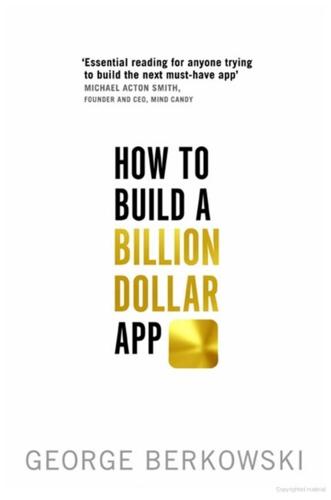
How to Build a Billion Dollar App: Discover the Secrets of the Most Successful Entrepreneurs of Our Time
by
George Berkowski
Published 3 Sep 2014
In terms of local advertising, it’s also worth exploring what you can do with players such as Groupon and Yelp, each of whom have more than 100 million users. Other channels to think about include Amazon (and its own app platform) and PayPal, which often partners with companies to help promote various apps and services. Players such as Alibaba, Rakuten, Sina, NHN, Yahoo! Japan and SoftBank are all potential distribution partners. SoftBank was integral to the adoption of the Clash of Clans app in Japan, and eventually bought the company behind it for over $1.5 billion. It’s All About Attribution The first step to figuring out which channels are working for you is making sure that you know which channel is responsible for driving a user to download your app.
…
Index Note: page numbers in bold refer to illustrations, page numbers in italics refer to information contained in tables. 99designs.com 111 500 Startups accelerator 136, 160 Accel Partners 3, 158, 261, 304, 321, 336, 383 accelerators 136, 159–60, 160 accountants 164, 316 accounting software 164 acquisition (of users) costs 148–9, 184, 236–7, 275–9, 282 and Facebook 271, 272, 273–4 for five hundred-million-dollar apps 327, 341–3 for hundred-million-dollar apps 252, 259, 266, 267–74, 275–84, 295–307 and incentive-based networks 270–1 international 295–307 for million dollar apps 136–7, 139, 140–51, 148–9, 153 and mobile social media channels 271–3, 272 and mobile user-acquisition channels 269–70 strategy 222–31 for ten-million-dollar apps 211–12, 213, 222–31, 236–7, 248–9 and traditional channels 268–9 and ‘viral’ growth 225, 278, 279–84 zero-user-acquisition cost 278 acquisitions 414–25 buying sustained growth 417–18 by non-tech corporations 418–20 initial public offerings 420–2 Waze 415–16 activation (user) 136, 137, 139, 153–4, 211–12, 213 Acton, Brian 54, 394 addiction, smartphone 30–1 Adler, Micah 269 administrators 409 AdMob 414–15 advertising 43 business model 67, 89–90 costs 140 and Facebook 271, 272, 273–4 mobile 148–9, 268–70, 272–3, 272 mobile social media 272–3, 272 mobile user-acquisition channels 269–70 outdoor 264 shunning of 42, 54–6 video ads 273 aesthetics 131 after product–market fit (APMF) 180 agencies 195–7, 264, 343 ‘agile coaches’ see scrum masters agile software development 192–3, 299, 315, 357, 377 Ahonen, Tomi 45 ‘aiming high’ 40–1 Airbnb 160, 301 alarm features 48 Albion 111 alerts 293 Alexa.com 146 Alibaba 227 ‘ALT tags’ 147 Amazon 7, 29, 131, 164, 227, 276, 366, 374–5, 401, 406 Amazon Web Services 374 American Express 347 Amobee 149 analytics 134–5, 149, 199, 205, 210, 212, 217–21, 294 and cohort analysis 287–8 Flurry 135, 149, 220 function 217–18 Google Analytics 135, 219–20, 345 limitations 284 Localytics 135, 221 and marketing 263 mistakes involving 218–19 Mixpanel.com tool 135, 217–18, 220–1, 287, 290–1, 345 Andreessen, Marc 180, 418–19 Andreessen Horowitz 72, 80, 180, 321, 383, 385, 418–19 Android (mobile operating system) 6, 23–4, 38, 415 advertising 274 audience size 119 beta testing 202 building apps for 116–22 and international apps 296 in Japan 306 scaling development and engineering 357–8 time spent on 26 and WhatsApp 55 Angel Capital Association 162 angel investors 154, 155–6, 323 AngelList 99, 131, 155, 159, 233 Angry Birds (game) 6, 42, 47, 57–8, 87, 89, 97 and application programming interface 36 delivering delight 207 design 131 funding 321 game in game 348–9 international growth 297–9 platform 117, 118 product extension 356 virality 282 annual offsites 379 annual revenue per user (ARPU) 215, 219, 232, 236 anonymity 43, 56–7 anti-poaching clauses 247 antidilution rights 245 API see application programming interface app descriptions 143 app development billion-dollar app 8, 389–425 CEO advice 406–13 getting acquired 414–25 people 395–405 process 390–1 five-hundred-million-dollar app 325–87 funding 328, 383–7 hiring staff 334–6, 337–40 killer product expansion 350–63 process 326–8 scaling 326, 330–6, 331–2 scaling marketing 341–9 scaling people 364–72, 377–9 scaling process 373–82 scaling product development 357–63 hundred-million-dollar app 251–324 international growth 295–307 process 252–4 product-market fit 255–6 retention of users 286–94 revenue engines 257–66, 275–85 user acquisition 267–74 million-dollar app 81–171 app Version 0.1 123–35 coding 133–4 design 129–33 feedback 127, 134–5 funding 152–60, 161–71, 176, 235–49 identity of the business 106–14 lean companies 115–22 metrics 136–9, 139 process 82–4 startup process 85–105 testing 126–8 user acquisition 140–51 ten-million-dollar app 173–249 growth engine 222–31, 235–49 metrics 211–21 new and improved Version 1.0 198–210 process 174–6 product–market fit 180–97 revenue engine 232–4 venture capital 235–49 app stores 22, 27–8, 33–4 see also Apple App Store; Google Play app-store optimisation (ASO) 142, 225 AppAnnie 205 Apple 19, 20, 31–2, 393 application programming interface 35–6 designers 129 Facetime app 46 iWatch 38–9 profit per employee 402–3 revenue per employee 401 visual voicemail 50 Worldwide Developers Conference (WWDC) 313 see also iPad; iPhone Apple App Store 22, 27, 32–3, 75, 88, 89, 117, 226 finding apps in 140, 141, 142–5 international apps 297–9 making submissions to 152–3 and profit per employee 403 ratings plus comments 204–5 Apple Enterprise Distribution 201–2 application programming interface (API) 35–6, 185, 360, 374 ARPU see annual revenue per user articles of incorporation 169 ASO see app-store optimisation Atari 20 Atomico 3, 261, 321, 383 attribution 227–31 for referrals 230–1 average transaction value (ATV) 214–15, 219, 232, 236, 387 Avis 95 backlinking to yourself 146 ‘bad leavers’ 247 Balsamiq.com 128 Banana Republic 352 bank accounts 164 banking 156–7 Bardin, Noam 43 Barr, Tom 338 Barra, Hugo 120, 306 Baseline Ventures 72 Baudu 226 beauty 131 BeeJiveIM 33 before product–market fit (BPMF) 180 ‘below the fold’ 143 Beluga Linguistics 297 Benchmark 75 benefits 398–400 beta testing 201–4 Betfair 358 Bezos, Jeff 366, 374 Bible apps 45 billion 9–10 Billion-Dollar Club 5 billionaires 9 Bing 226 ‘black-swan’ events 54 BlackBerry 23 Blank, Steve 257 Blogger 41 blood sugar monitoring devices 38 board seats 242, 243–4 board-member election consent 169 Bolt Peters 363 Booking.com 320 Bootstrap 145 Botha, Roelof 76, 77, 80 Box 7, 90, 276, 396–7, 411 brains 10 brainstorming 108 branding 111–13, 143, 263–4 Braun 129 Bregman, Jay xiii, 14–16, 95, 124, 209, 303 bridge loans 323 Brin, Sergey 366 Bring Your Own Infrastructure (BYOI) 17–18 Brougher, Francoise 340 Brown, Donald 44 Brown, Reggie 104–5 Bubble Witch 421 Buffet, Warren 4 build-measure-learn cycle 116 Burbn.com 72–4, 80 business advisors/coaches 103 business analysts 343 business culture 395–8 business goal setting 310–11 business models 67, 83, 87, 88–91, 175, 253, 259, 327, 351–2, 391, 400, 423–4 business success, engines of 183–4, 423–4 Business Wire 150 CAC see Customer Acquisition Cost Cagan, Marty 314 calendars 49 calorie measurement sensors 38 Cambridge Computer Scientists 160 camera feature 48 Camera+ app 48 Candy Crush Saga 6, 47, 87, 89, 131, 278–81, 318, 349, 421–2 card-readers 41–2 cash flow 164 CEOs see Chief Executive Officers CFOs see Chief Financial Officers channels incentive-based networks 270–1 mobile social-media 271–3, 272 mobile user-acquisition 269–70 source attribution 227–31 testing 224–7 traditional 268–9 viral 280–2 charging phones 49–50 Chartboost 149 chauffer hire see Uber app check-ins, location-based 72, 74 Chief Executive Officers (CEOs) 309, 380 advice from 406–13 and the long haul 68 and product centricity 185–6 role 337 Chief Financial Officers (CFOs) 316 Chief Operations Officers (COOs) 309, 326, 337–40, 380 Chief Technology Officers (CTOs) 186–7, 195 Chillingo 298 China 24–5, 146, 226, 306–7 Cisco 402 Clash of Clans (game) 6, 28, 36, 47, 87, 89, 97, 118, 227, 348–9, 398 Clements, Dave 120 Climate Corporation 412, 419 clock features 47 cloud-based software 67, 90 Clover 419 coding 133–4 cofounders 85, 91–105, 188, 191 chemistry 92–3 complementary skills 93 finding 96–9 level of control 94 passion 93–4 red flags 102–3 successful matches 104–5 testing out 100–2 cohort analysis 237, 287–8 Color.com (social photo-sharing) app 113, 255 colour schemes 111 Commodore 20 communication open 412–13 team 194 with users 208–9 Companiesmadesimple.com 163–4 computers 20–1, 29 conferences 97–8, 202, 312–13 confidentiality provisions 244 connectedness 30 ConnectU 105 consumer audience apps 233–4 content, fresh 147 contracts 165–6 convertible loans 163 Cook, Daren 112 cookies 228–9 Coors 348 COOs see Chief Operations Officers Cost Per Acquisition (CPA) 148–9 Cost Per Download (CPD) 148 Costolo, Dick 77–8, 79–80 costs, and user acquisition 148–9, 184, 236–7, 275–9, 282 Crash Bandicoot 33 crawlers 146–7 Cray-1 supercomputer 20 CRM see customer-relationship management CrunchBase 238 CTOs see Chief Technology Officers Customer Acquisition Cost (CAC) 148–9, 184, 236–7, 275–9 customer lifecycle 212–14 customer segments 346–7 customer-centric approach 344 customer-relationship management (CRM) 290–4, 343 customer-support 208–9 Cutright, Alyssa 369 daily active users (DAUs) 142 D’Angelo, Adam 75–6 data 284–5, 345–7 data engineers 284 dating, online 14, 87–8, 101–2, 263 decision making 379–82, 407–8 defining apps 31–4 delegation 407 delight, delivery 205–7 design 82, 129–33, 206–7 responsive 144 designers 132, 189–91, 363, 376 developer meetups 97 developers see engineers/developers development see app development; software development development agencies 196 ‘development sprint’ 192 Devine, Rory 358–9 Digital Sky Technologies 385 directors of finance 316–17 Distimo 205 DLD 97 Doerr, John 164, 310 Doll, Evan 42–3, 105 domain names 109–10 international 146 protection 145–6 Domainnamesoup.com 109 Dorsey, Jack 41, 58, 72, 75–7, 79–80, 104, 112, 215–16, 305, 312, 412–13 ‘double-trigger’ vesting 247 DoubleClick 414 Dow Jones VentureSource 64 down rounds 322–3 downloads, driving 150–1 drag along rights 245 Dribbble.com 132 Dropbox 7, 90, 131, 276 CEO 407, 410–11 funding 160 scaling 336 staff 399 Dunbar, Robin 364–5 Dunbar number 365 e-commerce/marketplace 28–9, 67, 89, 213–14 Chinese 306 Flipboard and 351–2 and revenue engines 232, 233–4, 276 social media generated 271–2 and user retention 288, 289 eBay 7, 28–9, 131, 180, 276 economic models 275 economies of scale 331–2, 331–2 eCourier 15, 95 education 68–9 edX 69 Ek, Daniel 357 Ellis, Sean 182 emails 291–3 emotion effects of smartphones on 29–30, 30 inspiring 223–4 employees see staff employment contracts 246–7 engagement 236, 278, 283 engineering VPs 337, 358–9 engineers/developers 190–1, 194–5, 361–2, 362, 370, 375–7, 405 enterprise 90, 233–4 Entrepreneur First programme 160 entrepreneurs 3–5, 7–8, 65, 262, 393–4, 409, 424 Ericsson 21 Etsy 107, 109, 110, 358 Euclid Analytics 149 Evernote 7, 90, 131, 399 ExactTarget 291 excitement 30 executive assistants 367 Exitround 419 experience 67–8, 264, 397 Fab.com 352 Facebook 7, 10, 26, 32, 48, 76, 226, 394, 422 and acquisition of users 271, 272, 273–4 acquisitions 416–18, 417 agile culture 375 alerts 293 and application programming interface 36 board 180 and business identity 114 and Candy Crush 280–1 Chief Executive Officer 406 cofounders 100–1 and Color 255–6 design 131, 206, 363 Developer Garage 97 driving downloads on 151 and e-commerce decisions 271, 272 and FreeMyApps.com 271 funding 419 and getting your app found 147 and the ‘hacker way’ 375 initial public offering 420–1 and Instagram 29, 51, 76–80, 90, 117 name 110 ‘No-Meeting Wednesday’ 376 product development 187 profit per employee 403 revenue per employee 401 scaling 336 and Snapchat 57 staff 339, 362, 363, 398, 401, 403 and virality 281 WhatsApp purchase 42, 54–6, 416–17, 417 zero-user-acquisition cost 278 and Zynga 279, 281 Facetime app 46 fanatical users 294 feedback 86, 127, 134–5, 182, 192–3, 198–201, 256, 396 loops 204, 211 qualitative 199 quantitative 199 see also analytics Feld, Brad 170, 241 Fenwick and West 168 Fiksu 264, 269–70 finance, VP of 317–18 finding apps 140–8, 148–9 FireEye 90 First Data 419 first impressions 107–10 Fitbit 38 fitness bracelets 38 flat rounds 322–3 Flipboard 6, 29, 42–3, 49, 51, 89–90 and application programming interface 36 Catalogs 351–2 cofounders 105 design 131, 207 funding 164 growth 351–2 platform choice 119 product innovation 351–2 user notifications 292 virality 281 zero-user-acquisition cost 278 Flurry 135, 149, 220 Fontana, Ash 233 Forbes magazine 40 Ford Motors 419 Founder Institute, The 168 founder vesting 166–7, 244 Foursquare 419 France Telecom 13 franchising 354 FreeMyApps.com 270–1 Friedberg, David 412 Froyo (Android mobile software) 7 Fujii, Kiyotaka 304 full service agencies 195–6 functionality 25–6, 45–50, 131 funding 72, 75–6, 84, 87–8, 152–60, 161–71, 179 accelerators 159–60 angel investors 154, 155–6, 323 for billion-dollar apps 391 convertible loans 163 core documents 169–70 for five-hundred-million-dollar apps 328, 383–7 founder vesting 166–7 for hundred-million-dollar apps 254, 258, 316–17, 318–24 incubators 159–60 legal aspects 163–4 and revenue engines 233–4 Series A 234, 238–40, 238, 240, 241, 242–6, 255, 319–21, 385 Series B 238, 241, 253, 260, 284, 319–21, 322, 384 Series C 384 signing a deal 167–8 for ten-million-dollar apps 152–60, 161–71, 176, 235–49 venture capital 72, 75, 156–8, 165–6, 235–49, 261–2, 383–5, 385, 418–19 game in game 348–9 gaming 42, 47, 318, 355 business model 67, 89 and revenue engines 232, 278–9 and user retention 288, 289 see also specific games Gandhi, Sameer 336 Gartner 271 Gates, Bill 4 general managers (GMs) 300–3 Gladwell, Malcolm 424 Glassdoor 361–2 Global Positioning System (GPS) 23 Gmail 72 GMs see general managers goal setting 40–1, 310–11 Goldberg, Dave 397 Goldman Sachs 385 ‘good leavers’ 247 Google 7, 19, 23, 27, 72, 88, 164, 226 acquisitions 43, 414–16, 418 application programming interface 35–6 beta testing 202 Chief Executive Officer 406–8 developer meetups 97 finding your app on 144, 147 Hangouts app 46 meetings 381–2 mission 404, 408–9 and the OKR framework 310 profit per employee 403, 405 revenue per employee 401, 405 scaling 332 and Snapchat 57 and source attribution 228–9 staff 339, 340, 361–2, 366, 401, 403, 404–5, 412 Thank God It’s Friday (TGIF) meetings 311–12 transparency 413 value 78 Waze app purchase 43 and WhatsApp 56 zero-user-acquisition cost 278 see also Android (mobile operating system) Google Ad Mob 149 Google AdSense 149 Google Analytics 135, 219–20, 345 Google Glass 38–9, 405 Google I/O conference 313 Google Maps 33, 35, 414, 416 Google Now 37 Google Play 88, 89, 117, 120, 226 and beta testing 202 finding apps in 141–5 profit per employee 403 ratings plus comments 204–5 Google Reader 72 Google Ventures 384 Google X 405 Google+ and business identity 114 and virality 281 Google.org 339 GPS see Global Positioning System Graham, Paul 184–5, 211 Graphical User Interface (GUI) 20 Greylock 321, 383 Gross, Bill 406–7, 409–10 Groupon 7, 51–2, 227, 344–5, 419 Grove, Andy 310 growth 267, 308–17 buying sustained 417–18 engines 184, 210, 222–31, 259, 265 and five-hundred-million-dollar apps 329–36 and Friday update meetings 311–12 and goal setting 310–11 and hiring staff 308–9, 411–12 and product and development teams 313–14 and staff conferences 312–13 targets 234, 260 see also acquisition (of users); international growth; scaling Growth Hackers 182 GUI see Graphical User Interface hackathons 99 Haig, Patrick 143 Hailo app xiii–xiv, 5, 36, 89, 386 big data 284–5 branding 112–13 cofounders 94–6 customer segments 346–7 customer-support 208–9 design 131, 132, 133, 206–7 development 123–7, 153–4 Friday update meetings 311 funding 162, 242 goal setting 310 growth 296–7, 299, 302–4, 308–11, 313, 315–17, 329–30, 334–6 hiring staff 308–9, 334–6, 338, 366–7 idea for 14–18 international growth 296, 297, 299, 302–4 market research 182 marketing 263, 264, 268, 270, 273, 341, 347–8 meetings 381 metrics 137–9, 216 name 107 organisational culture 396 platform choice 117, 120, 121 premises xiii–xiv, 177–8, 329–30, 371–2, 386 product development 189, 191, 196 retention 293–4 revenue engine 276 scaling development and engineering 357 scaling people 365–7 scaling process 377 team 258 testing 177–8, 201–4 and user emotionality 224 virality 280, 282 Hangouts app 46 Harris Interactive 31 HasOffers 149 Hay Day 47, 97 head of data 342 Heads Up Display (HUD) 38 heart rate measurement devices 37–8 Hed, Niklas 42 hiring staff 308–9, 334–6, 337–40, 365–70 history of apps 31–2 HMS President xiii–xiv, 177–9, 329, 371, 386 HockeyApp 202 HootSuite 151 Houston, Drew 407, 410–11 HP 180, 402 HTC smartphone 121 HUD see Heads Up Display human universals 44–5 Humedica 419 hyperlinks 147 hypertext markup language (HTML) 147 I/O conference 2013 202 IAd mobile advertising platform 149 IBM 20, 402 icons 143 ideas see ‘thinking big’ identity of the business 86 branding 111–13 identity crises 106–14 names 106–11 websites 113–14 image descriptions 147 in Mobi 149 in-app purchases 28 incentive-based networks 270–1 incorporation 163–4, 179 incubators 159–60 Index Ventures 3, 261 initial public offerings (IPOs) 64, 67–9, 78, 80, 246, 420–2 innovation 404–5 Instagram 6, 29, 48, 51, 67, 71–80, 88–90, 114, 117, 226, 278, 340, 417–18 cofounders 73–4 design 131 funding 75–6, 77–8 X-Pro II 75 zero-user-acquisition cost 278 instant messaging 46 Instantdomainsearch.com 109 integrators 410 Intel 310 intellectual property 165–6, 244, 247 international growth 295–307 Angry Birds 297–9 Hailo 296, 297, 299, 302–4 language tools 297 Square 295, 299, 304–6 strings files 296 Uber 299–302 International Space Station 13 Internet bubble 13 investment see funding iOS software (Apple operating system) 7, 23–4, 46, 75, 104 advertising 274 audience size 119 building apps for 116–22 and international apps 296 scaling development and engineering 357–8 time spent on 26 iPad 42–3, 118–20, 351 iPhone 6, 19, 22–3, 32, 38–9, 183, 351 advertising on 274 camera 48 designing apps for 117–18, 120 finding apps with 145 games 42, 47, 58 and Instagram 74–6 in Japan 306 and Square 104, 306 and Uber 301 user spend 117 and WhatsApp app 54–5 iPod 22 IPOs see initial public offerings Isaacson, Walter 32 iTunes app 22, 47, 88, 143 iTunes U app 69 Ive, Jony 129 iZettle 304 Jackson, Eric 40 Jain, Ankit 142 Japan 227, 304–6 Jawbone Up 38 Jelly Bean (Android mobile software) 7 Jobs, Steve 4, 22, 32, 323, 393, 425 journalists 150–1 Jun, Lei 306 Kalanick, Travis 299–300, 384, 422 Kayak 336 Keret, Samuel 43 Keyhole Inc. 414 keywords 143, 146 Kidd, Greg 104 King.com 349, 421–2 see also Candy Crush Saga KISSmetrics 291 KitKat (Android mobile software) 7 Klein Perkins Caulfield Byers (KPCB) 158, 261, 321, 383 Kontagent 135 Koolen, Kees 320, 339 Korea 30 Koum, Jan 42, 54, 55–6, 154, 321, 394, 416 Kreiger, Mike 73–6 language tools 297 Launchrock.com 113–14, 145, 202 Lawee, David 415 lawyers 103, 169, 170, 242 leadership 410–11 see also Chief Executive Officers; managers lean companies 69, 115–22, 154, 257, 320–1 Lee, Bob 340 legalities 163–70, 242–7, 301 letting go 406–7 Levie, Aaron 396–7, 411 Levinson, Art 32 LeWeb 97 Libin, Phil 399 licensing 356 life experience 67–8, 264 lifetime value (LTV) 184, 215, 219, 220–1, 232, 275–7, 279, 291, 342 Line app 46, 226 Lingo24 297 LinkedIn 97, 226, 406, 408–9 links 147 liquidation preference 242, 243, 245 non-participating 245 Livio 419 loans, convertible 163 Localytics 135, 221 locations 69 logos 111–14 LTV see lifetime value luck 412 Luckey, Palmer 39 LVMH 304 Lyons, Carl 263 Maiden 95 makers 375–7 see also designers; engineers/developers managers 189–90, 300–3, 375–7, 405 MapMyFitness 419 market research 115, 127, 182 marketing data 345–7 and Facebook 271, 272, 273–4 and incentive-based networks 270–1 marketing engineering team 344–5 and mobile social media channels 271–3, 272 and mobile user-acquisition channels 269–70 partner marketing 347–8 scaling 341–9 teams 262–6, 337, 342 and traditional channels 268–9 VPs 262–6, 337, 342 marketplace see e-commerce/marketplace MasterCard 347–8 Matrix Partners 283 McClure, Dave 136, 160, 211, 234 McCue, Mike 42–3, 105, 351 McKelvey, Jim 41, 104 ‘me-too’ products 181 Medium 41 Meebo 73 meetings 379–82, 412–13 annual offsite 379 daily check-ins 381 disruptive nature 376–7 Friday update 311–12 meaningful 381–2 monthly strategic 380 quarterly 380 weekly tactical 380 Meetup.com 98–9 Mendelsen, Jason 170 messaging platforms 226 time spent on 46 and user retention 288, 289 metrics 136–9, 139, 211–21 activation 136, 137, 139, 153–4, 211–12, 213 annual revenue per user (ARPU) 215, 219, 232, 236 average transaction value (ATV) 214–15, 219, 232, 236, 387 consensual 215–16 lifetime value (LTV) 184, 215, 219, 220–1, 232, 275–7, 279, 291, 342 and product-market fit 209–10 referral 137, 138, 139, 153, 154, 211–12, 213, 230–1 revenue 137, 138, 139, 154, 211–12, 213, 214–15, 219, 291 transparency regarding 312 see also acquisition (of users); retention (of users) mice 20 Microsoft application programming interface 35–6 revenue per employee 401 Windows 20, 22, 24 Millennial Media 149 minimum viable product (MVP) 123, 153 MirCorp 13–14 mission 261, 404, 408–9 Mitchell, Jason 51 Mitsui Sumitomo Bank 305 Mixpanel.com tool 135, 217–18, 220–1, 287, 290–1, 345 MMS see Multimedia Messaging Service Mobile Almanac 45 Mobile App Tracking 230, 231 mobile technology, rise of 19–39 MoMo app 306 Monsanto 419 moonshots 404–5 Moore, Jonathan 200 MoPub 149 Moqups.com 128 Mosaic 180 Motorola 21 Moz.com 143 Mullins, Jacob 419 Multimedia Messaging Service (MMS) 47 Murphy, Bobby 43, 104–5, 152–3 music player apps 47 MVP see Metrics into Action; minimum viable product names 106–11, 142 NameStation.com 108 Nanigans 273–4 National Venture Capital Association 64 native apps 33–4 NDA see Non Disclosure Agreement negotiation 265 Net Promoter Score (NPS) 206, 209 net-adding users 206 Netflix 400 Netscape 164, 180 New Enterprise Associates 385 New York Times news app 32–3, 256 news and alerts feature 48–9 Nextstop 72 Nguyen, Bill 255–6 NHN 227 Nike Fuelband 38 Nintendo Game Boy 47 Nokia 21, 35–6 Non Disclosure Agreement (NDA) 165 noncompetition/non-solicitation provision 244, 247 notifications 291–4 NPS see Net Promoter Score Oculus VR 39 OKR (‘objectives and key results’) framework 310–11, 380 OmniGraffle 128 open-source software 23, 34–5, 185 OpenCourseWare 68–9 operating systems 20–4 see also Android; iOS software operations VPs 337 org charts 258, 309 organisational culture 395–8 O’Tierney, Tristan 104 outsourcing 194–7 ownership and founder vesting 166–7 and funding 155, 156, 161–3, 318 oxygen saturation measurement devices 37–8 Paananen, Ilkka 118–19, 397–8 Page, Larry 4, 23, 382, 404, 407–8 Palantir 90 Palihapitiya, Chamath 187 Pandora 7, 47, 67, 131, 410 pay-before-you-download model 28 pay-per-download (PPD) 225 Payleven 304 payment systems 7, 33–4, 227, 304, 305 see also Square app PayPal 7, 227, 304, 305 Pepsi 196 Perka 419 perks 398–400 perseverance 67, 394, 410 personal computers (PCs) 29 perspiration measurement devices 38 Pet Rescue Saga 349, 421 Petrov, Alex 369 phablets 7 Pham, Peter 255 PhoneSaber 33 Photoshop 128 PIN technology 305 Pincus, Mark 311 Pinterest app 48, 226 and business identity 114 and e-commerce decisions 271, 272 and getting your app found 147 name 107 and virality 281 Pishevar, Shervin 300 pivoting 73–4 population, global 9–10 portfolio companies 261–2 PowerPoint 128 PPD see pay-per-download preferential return 243 premises 370–2 preparation 412 press kits 148, 150 press releases 150 Preuss, Dom 98 privacy issues 43, 56–7 private vehicle hire see Uber pro-rata rights 242, 243 producers 409 product chunks 360 product development scaling 357–63 scope 199 team building for 188–91 and team location 193–4 and vision 186–8, 191 see also app development; testing product expansion 350–63 product extension 354 product managers 189–90, 405 product-centricity 185–6, 314, 360 product-market fit 9, 180–97, 235–6, 248, 256–7 measurement 209–10, 212, 286–8 profit 267, 320, 342 profit margin 258–9, 318, 321 profit per employee 402–4, 403, 405 profitability 260, 277, 400 Project Loon 405 proms 12 proto.io tool 133 prototype apps 86, 174 app Version 0.1 123–35, 174 new and improved Version 1.0 198–210 rapid-design prototyping 132–3 PRWeb 150 PSP 47 psychological effects of smartphones 29–30, 30 pttrns.com 131 public-relations agencies 343 publicity 150–1, 225, 313 putting metrics into action 138–9 Puzzles and Dragons 47, 131 QlikView 221, 284–5 QQ 307 quality assurance (QA) 190–1, 196 Quora 76 QZone 307 Rabois, Keith 368, 369 Rakuten 227 Rams, Dieter 129 rapid-design prototyping 132–3 ratings plus comments 204–5 Red Bull 223 redemption codes 230 referrals (user) 137, 138, 139, 153, 154, 211–12, 213 attribution for referrals 230–1 referral codes 230 religious apps 45 remuneration 361–2, 362, 363 Renault 13 restated certification 169 retention (of users) 136–9, 153, 154 for five hundred-million-dollar apps 327, 341–3 for hundred-million-dollar apps 286–94, 288–9 measurement 286–8 for ten-million-dollar apps 206, 211–12, 213, 278 revenue 137–8, 139, 154, 211–12, 213, 214–15, 219, 236, 239–40, 267, 291, 331–2, 341–2, 354 revenue engines 184, 210, 232–4, 257–66, 265, 275–85 revenue per employee 400–2, 402, 405 revenue streams 27–9 Ries, Eric, The Lean Startup 115–16 Rockefeller, John D. 9 Rocket Internet 304 Rolando 33 Rosenberg, Jonathan 413 Rovio 58, 97, 118, 297–9, 318, 320–1, 336, 354, 409 see also Angry Birds Rowghani, Ali 77 Rubin, Andy 23 Runa 419 SaaS see software as a service Sacca, Chris 75–6 sacrifice 86–7 Safari Web browser 32 salaries 361–2, 362, 363 sales VPs 337 Salesforce 291 Samsung 23 Galaxy Gear smartwatch 38 smartphones 121 Sandberg, Sheryl 4, 100–1, 339, 397 SAP 304 scaling 259, 308, 312, 323–4, 326, 330–6, 331–2, 384–5 decision making 379–81 international growth 295–307 marketing 341–9 and organisational culture 396–8 people 338–9, 364–72 premature 334–5 process 373–82 product development and engineering 357–63 and product innovation 350–6 reasons for 333–4 skill set for 335–6 Schmidt, Eric 120 scope 199 screenshots 131, 144, 206 scrum masters (‘agile coaches’) 315, 359, 360 search functions 49 organic 141–2, 141, 145 search-engine optimisation (SEO) 142, 145–8, 225 Sedo.com 109 Seed Fund 136 Seedcamp 160 Sega Game Gear 47 segmentation 220, 287, 290, 346–7 self-empowered squads/units 360 SEO see search-engine optimisation Sequoia Capital 76, 77–80, 158, 255, 321, 383, 385 Series A funding 234, 238–40, 238, 240, 241, 242–6, 255, 261, 262, 319–21, 385 Series B funding 238, 241, 253, 260, 319–21, 322, 384 Series C funding 384 Series Seed documents 168 Sesar, Steven 263 sex, smartphone use during 31 Shabtai, Ehud 43 shares 156, 166–8, 244 ‘sharing big’ 51–2, 52 Shinar, Amir 43 Shopzilla 263 Short Message Service (SMS) 21, 46–7 Silicon Valley 71–4, 77, 79, 99, 162, 168, 180, 184, 255, 340, 361, 411, 422 Sina 227 sitemaps 146–7 skills sets complementary 93 diverse 409–10 for scaling 335–6 Skok, David 283 Skype app 7, 46, 111, 200–1, 226, 357, 419 Sleep Cycle app 48 Smartling 297 smartwatches 7, 38–9 SMS see Short Message Service Snapchat app 6, 43, 46, 56–7, 88, 89, 223, 226, 416, 418 cofounders 104–5 design 131 funding 152–3, 307, 320 name 107 platform 117 staff 340 valuations 333 virality 280, 283 zero-user-acquisition cost 278 social magazines 42–3 see also Flipboard social media 48 driving downloads through 151 and getting your app found 147 mobile channels 271–3, 272 and user retention 288, 289 Sofa 363 SoftBank 227 software development agile 192–3, 299, 315, 357, 377 outsourcing 194–5 see also app development software as a service (SaaS) 67, 90, 208, 214, 233, 276–7 Somerset House 329–30, 371 Sony 21, 47 SoundCloud 358 source attribution 227–31 space tourism 13–14 speech-to-text technology 50 speed 20 Spiegel, Evan 43, 56–7, 104–5, 152–3 Spinvox 50 Splunk 90 Spotify app 47, 357–8 SQL 284 Square app 6, 41–2, 58–9, 87, 89, 333, 350 branding 112 Chief Executive Officer 412–13 cofounders 104 design 131, 363 funding 320–1 international growth 295, 299, 304–6 marketing 348 metrics 215–16 name 107, 110 product–market fit 183 revenue engine 276 scaling people 367–8 scaling product innovation 352–3 staff 340, 367–8 transparency 312 virality 282 Square Cash 353 Square Market 353 Square Register 350, 352–3 Square Wallet 348, 350, 353 Squareup.com 144 staff at billion-dollar app scale 395–405, 423 attracting the best 91 benefits 398–400 conferences 312–13 conflict 334, 378 employee agreements 244 employee legals 246–7 employee option pool 244 employee-feedback systems 378 firing 370, 378 hiring 308–9, 334–6, 411–12 induction programmes 370 investment in 360 mistakes 369–70, 411–12 and premises 370–2 profit per employee 402–4, 403 revenue per employee 400–2, 402 reviews 370 scaling people 364–72, 377–9 scrum masters 315, 359, 360 training programmes 370 see also cofounders; specific job roles; teams Staples 419 Starbucks 338, 348 startup weekends 98 startups, technology difficulties of building 63–80 failure 63–5, 73–4 identity 106–14 lean 115–22, 154 process 82–4, 85–105 secrets of success 66–9 step sensors 38 stock markets 420–1 straplines 111 strings files 296 Stripe 160 style 111 subscriptions 90 success, engines of 183–4, 423–4 SumUp 304 Supercell 28, 47, 97, 118–19, 318, 336, 397–8, 401, 403 see also Clash of Clans; Hay Day SurveyMonkey 397 surveys 206, 209 synapses 10 Systrom, Kevin 71–80 tablets 7 Tableau Software 90 Taleb, Nicholas Nassim 54 Tamir, Diana 51 Tap Tap Revolution (game) 42 Target 419 taxation 164 taxi hailing apps see Hailo app TaxiLight 16 team builders 264 team building 188–91 teams 82, 174, 252, 390 complementary people 409–10 for five-hundred-million-dollar apps 326, 342–5, 357–63, 374, 386 growth 313–14, 326, 342–4 for hundred-million-dollar apps 258–61 located in one place 193–4 marketing 262–6, 342–4 marketing engineering 344–5 product development and engineering 357–63 ‘two-pizza’ 374 TechCrunch Disrupt 97, 99 technology conferences 97–8, 202, 312–13 Techstars 159, 160, 168 Tencent 307 Tencent QQ 226 term sheets 168, 169, 170, 243–4 testing 126–8, 177–8, 187–8, 192–3, 199–201 beta 201–4 channels 224–7 text messaging 21 unlimited packages 42 see also Short Message Service ‘thinking big’ 40–59, 82, 85 big problem solutions 41–3 disruptive ideas 53–9 human universals 44–5 sharing big 51–2, 52 smartphones uses 45–50 Thoughtworks 196 time, spent checking smartphones 25–6, 26, 45–50 Tito, Dennis 13 tone of voice 111 top-down approaches 311 traction 233, 252 traffic information apps 43 traffic trackers 146 translation 296–7 transparency 311–12, 412–13 Trilogy 13 Tumblr 110, 226, 399, 418 Twitter 41, 48, 54, 72, 226, 394 acquisitions 418 and application programming interface 36 and Bootstrap 145 and business identity 114 delivering delight 206 and e-commerce decisions 272 and FreeMyApps.com 271 funding 419, 421 and getting your app found 147 initial public offering 421 and Instagram 51, 76–7, 79–80 name 110 and virality 281 ‘two-pizza’ teams 374 Uber 6, 36, 87, 89, 333, 350 and attribution for referrals 231 design 131 funding 320, 384, 422 international growth 295, 299–302 name 107, 110 revenue engine 276 revenue per employee 401 scaling product innovation 355–6 staff 339, 399 user notifications 292 virality 280 Under Armour 419 Union Square Ventures (USV) 3, 158, 242, 261, 262, 288, 321, 323, 377, 383 unique propositions 198 UnitedHealth Group 419 URLs 110 ‘user experience’ (UX) experts 190 user journeys 127–8, 213–14 user notifications 291–4 user stories 193 users 83, 175, 252, 327, 390 activation 136, 137, 139, 153–4, 211–12, 213 annual revenue per user (ARPU) 215, 219, 232, 236 communication with 208–9 definition 137 emotional response of 223–4 fanatical 294 finding apps 140–8 lifetime value (LTV) 184, 215, 219, 220–1, 232, 275–7, 279, 291 metrics 136–9 net-adding of 206 ratings plus comments 204–5 referrals 137, 138, 139, 153, 154, 211–12, 213, 230–1 target 83, 115, 127 wants 180–97 see also acquisition (of users); retention (of users) Usertesting.com 200–1 USV see Union Square Ventures valuations 83, 161–3, 175, 237–8, 238, 253, 318, 319, 322, 327, 333, 391 venture capital 72, 75, 156–8, 165–6, 235–49, 261–2, 383–5, 385, 418–19 Viber app 6, 46, 1341 video calls 46, 47 viral coefficient 282–4 ‘viral’ growth 225, 278, 279–84 Communication virality 281 and cycle time 283–4 incentivised virality 280–1 inherent virality 280 measurement 282–4 social-network virality 281 word-of-mouth virality 281–2 virtual reality 39 vision 261, 393–4, 408–9, 414, 415 voice calls 46–7 voice-over-Internet protocol (VOIP) 46 voicemail 50 Wall Street Journal 43, 55 warranties 246 Waze app 6, 43, 97 acquisition 415–16 design 131 name 107 zero-user-acquisition cost 278 web browsing 49 Web Summit 97 websites 113–14, 144–8 WebTranslateIt (WTI) 297 WeChat app 46, 226, 306 Weibo 48 Weiner, Jeff 408–9 Wellington Partners 4 Weskamp, Marcos 207 Westergren, Tim 410 WhatsApp 6, 42, 46, 54–6, 87, 90, 226, 394 acquisition 42, 54–6, 416, 416–17, 417 cofounders 96 design 131, 144 funding 154, 320–1 platform 117–18 valuations 333 virality 280 White, Emily 340 Williams, Evan 41, 65 Williams, Rich 344 Wilson, Fred 110, 242, 288, 323, 377 Windows (Microsoft) 20–1, 22, 24, 24 Winklevoss twins 105 wireframes 127–8 Woolley, Caspar 15–16, 95, 124, 338 WooMe.com 14, 87–8, 101–2, 263 Workday 90 world population 9–10 Worldwide Developers Conference (WWDC) 313 wowing people 8–9 WTI see WebTranslateIt Xiaomi 306 Y Combinator 159–60, 184–5, 211, 407, 410–11 Yahoo!

The Wires of War: Technology and the Global Struggle for Power
by
Jacob Helberg
Published 11 Oct 2021
Arkin, and Kevin Monahan, “Russians penetrated U.S. voter systems, top U.S. official says,” NBC News, February 7, 2018, https://www.nbcnews.com/politics/elections/russians-penetrated-u-s-voter-systems-says-top-u-s-n845721. 87 Fontaine and Frederick, “The Autocrat’s New Tool Kit.” 88 Dean Takahashi, “SoftBank believes 1 trillion connected devices will create $11 trillion in value by 2025,” VentureBeat, October 16, 2018, https://venturebeat.com/2018/10/16/softbank-believes-1-trillion-connected-devices-will-create-11-trillion-in-value-by-2025/. 89 Carlin, Dawn of the Code War, e-book, 756. 90 Paul Tullis, “The US military is trying to read minds,” Technology Review, October 16, 2019, https://www.technologyreview.com/2019/10/16/132269/us-military-super-soldiers-control-drones-brain-computer-interfaces/. 91 “Elon Musk’s Neuralink puts computer chips in pigs’ brains in bid to cure diseases,” NBC News, August 29, 2020, https://www.nbcnews.com/tech/tech-news/elon-musk-s-neuralink-puts-computer-chips-pigs-brains-bid-n1238782. 92 Lora Kolodny, “Former Google CEO predicts the internet will split in two—and one part will be led by China,” CNBC, September 20, 2018, https://www.cnbc.com/2018/09/20/eric-schmidt-ex-google-ceo-predicts-internet-split-china.html. 93 Rose Wong, “There May Soon Be Three Internets.
…
And because this manipulation would take place on the back-end—through an undersea cable or with an implant stealthily inserted into a voting machine—it might prove far harder to identify than any fake news on the front-end. All that’s before we even get to the Internet of Things. In 2020, there were an estimated 30 billion Internet-connected devices, from Roombas to medical hardware.87 SoftBank predicts that by 2025 there might be as many as 1 trillion such devices—about 100 for every person on the planet.88 These devices will control some of the most sensitive and vital aspects of our daily lives. “It’s one thing,” notes John Carlin, the former head of the Justice Department’s National Security Division, “if a hacker’s malware insists on a $300 ransom to unlock your computer; it’s something else entirely if the hacker insists on a $300 payment before grandma’s home dialysis machine will be turned on again.”89 In some cases, these smart devices may even begin to merge with our minds.
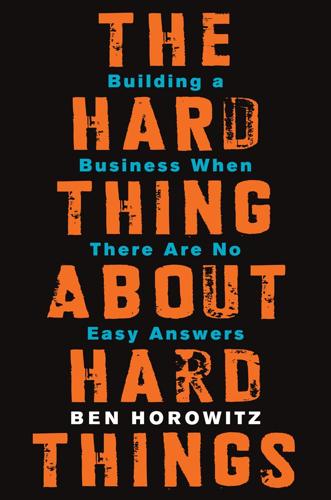
The Hard Thing About Hard Things: Building a Business When There Are No Easy Answers
by
Ben Horowitz
Published 4 Mar 2014
The bad news was that we needed to raise even more money in this disastrous climate; nearly all of the $66 million in equity and debt we had raised had already been deployed in our quest to build the number-one cloud service and to support our now fast-growing set of customers. The dot-com crash had spooked investors, so raising money wasn’t going to be easy, especially since most of our customers were dot-com startups. This became quite clear when we pitched the deal to the Japanese firm Softbank Capital. My friend and Loudcloud board member Bill Campbell knew the Softbank people well and offered to get some “back-channel” information following the pitch. When my assistant told me that Bill was on the line, I quickly answered the phone. I was eager to hear where we stood. I asked, “Bill, what did they say?” Bill replied in his raspy, coach’s voice, “Ben, well, honestly, they thought you were smoking crack.”

The Economic Singularity: Artificial Intelligence and the Death of Capitalism
by
Calum Chace
Published 17 Jul 2016
The hurdle for potential acquisition targets is the “toothbrush test”, meaning that their services must be potentially useful to most people once or twice every day. Sooner or later its robotic companies will impress us. Complicated relationships It is going to take us humans a while to get used to having robots around. A French company called Aldebaran, which is owned by Japanese firm Softbank, manufactures a robot called Pepper. 120Cm tall and costing around $1,200, they have a limited ability to “read” human emotions and respond appropriately. They have proved extremely popular in Japan, with four batches of 1,000 selling out in less than a minute when they went on sale in September 2015.
…
v=0QNiZfSsPc0 [cxlvii] http://www.popsci.com/darpa-robotics-challenge-was-bust-why-darpa-needs-try-again [cxlviii] http://uk.businessinsider.com/laundroid-japanese-robot-folds-laundry-2015-10 [cxlix] http://www.npr.org/sections/money/2015/05/19/407736307/robots-are-really-bad-at-folding-towels [cl] http://www.techinsider.io/savioke-robot-butler-in-united-states-hotels-2016-2 [cli] http://www.kurzweilai.net/the-top-ai-breakthroughs-of-2015 [clii] http://www.nextgov.com/emerging-tech/2016/05/robots-are-starting-learn-touch/128065/ [cliii] http://www.theguardian.com/world/2015/sep/28/no-sex-with-robots-says-japanese-android-firm-softbank [cliv] https://www.theguardian.com/technology/2015/aug/03/hitchbot-hitchhiking-robot-destroyed-philadelphia [clv] http://www.telegraph.co.uk/news/science/science-news/12073587/Meet-Nadine-the-worlds-most-human-like-robot.html [clvi] http://techcrunch.com/2016/01/07/the-grillbot-is-a-robot-that-cleans-your-grill/#.w9z87m:Hd0d [clvii] http://singularityhub.com/2016/02/29/drones-have-reached-a-tipping-point-heres-what-happens-next/ [clviii] http://intl.eksobionics.com/ [clix] Your brain is wired to make you see things before you hear them as it knows that light travels faster than sound.

The Smartphone Society
by
Nicole Aschoff
They promise to remake markets and reengineer society through mobile tech and killer apps and venture capitalists are enthralled. They could be getting a piece of the next Facebook, the next Slack (a popular workflow platform), the next Uber. Individual investors such as Carl Icahn, venture capital firms such as Andreessen Horowitz, and funds such as Softbank’s Vision Fund and the Collaborative Fund have dumped hundreds of billions of dollars into tech start-ups over the past decade. The Silicon Valley spirit is even bigger than the promise of its platforms to create value and success for individuals and firms, however. Silicon Valley, we’re told, is ushering in a new age—a digital age of limitless possibility.
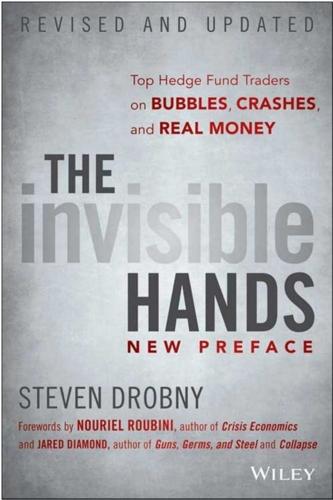
The Invisible Hands: Top Hedge Fund Traders on Bubbles, Crashes, and Real Money
by
Steven Drobny
Published 18 Mar 2010
I managed to survive because I had made a lot of money before and had management support, but that was a big lesson. Nevertheless, that lesson has made me a lot of money over time. Figure 12.3 Dow Jones Industrial Average, 1987 SOURCE: Bloomberg. And your best trade ever? My best trade was long Softbank of Japan in 2005. That was extraordinary. In that particular case, the stock dropped and dropped during 18 months of slow deterioration, then exploded up. It was trading at a discount to book value and the valuation on tech stocks tends to go from discount to premium rather quickly. You never know what the trigger will be, but you know that something, someday, will happen.
…
Sometimes I put trades on just to test the markets, in which case there is nothing to read in the trade. I also cannot be copied because I am a different person every six months. Because I am always changing, it is impossible to predict my motivations in a trade or to anticipate my next move. Figure 12.4 Softbank (9984:JP), 2006 SOURCE: Bloomberg. Markets are a competition and I take pleasure out of beating my competitors. It is an intellectual challenge. Winning the intellectual war is what I love about markets. At one stage, when I was between jobs for a period of about nine months, my wife and close friends all said that I was miserable and bored—I had lost the adrenaline.
…
See Risk premia payment Price/earnings (P/E) multiples, exchange rate valuation (relationship) Primary Dealer Credit Facility, placement Prime broker risk Princeton University (endowment) Private equity cash flow production tax shield/operational efficiency arguments Private sector debt, presence Private-to-public sector risk Probability, Bayesian interpretation Professor, The bubble predication capital loss, avoidance capital management cataclysms, analysis crowding factor process diversification efficient markets, disbelief fiat money, cessation global macro fund manager hedge fund space historical events, examination idea generation inflation/deflation debate interview investment process lessons LIBOR futures ownership liquidity conditions, change importance market entry money management, quality opportunities personal background, importance portfolio construction management positioning process real macro success, personality traits/characteristics (usage) returns, generation risk aversion rules risk management process setback stocks, purchase stop losses time horizon Titanic scenario threshold trades attractiveness, measurement process expression, options (usage) personal capital, usage quality unlevered portfolio Property/asset boom Prop shop trading, preference Prop trader, hedge fund manager (contrast) Protectionism danger hedge process Public college football coach salary, public pension manager salary (contrast) Public debt, problems Public pensions average wages to returns endowments impact Q ratio (Tobin) Qualitative screening, importance Quantitative easing (QE) impact usage Quantitative filtering Random walk, investment Real annual return Real assets Commodity Hedger perspective equity-like exposure Real estate, spread trade Real interest rates, increase (1931) Real macro involvement success, personality traits/characteristics (usage) Real money beta-plus domination denotation evolution flaws hedge funds, differentiation impacts, protection importance investors commodity exposure diversification, impact macro principles management, change weaknesses Real money accounts importance long-only investment focus losses (2008) Real money funds Commodity Hedger operation Equity Trader management flexibility frontier, efficiency illiquid asset avoidance importance leverage example usage management managerial reserve optimal portfolio construction failure portfolio management problems size Real money managers Commodity Investor scenario liquidity, importance long-term investor misguidance poor performance, usage (excuse) portfolio construction valuation approach, usage Real money portfolios downside volatility, mitigation leverage, amount management flaws Rear view mirror investment process Redemptions absence problems Reflexivity Rehypothecation Reichsmarks, foreign holders (1922-1923) Relative performance, inadequacy Reminiscences of a Stock Operator (Lefèvre) Renminbi (2005-2009) Repossession property levels Republic of Turkey examination investment rates+equities (1999-2000) Reserve currency, question Resource nationalism Returns forecast generation maximization momentum models targets, replacement Return-to-worst-drawdown, ratios (improvement) Reward-to-variability ratio Riksbank (Sweden) Risk amount, decision aversion rules capital, reduction collars function positive convexity framework, transition function global macro manager approach increase, leverage (usage) measurement techniques, importance parameters Pensioner management pricing reduction system, necessity Risk-adjusted return targets, usage Risk assets, decrease Risk-free arbitrage opportunities Risk management Commodity Hedger process example game importance learning lessons portfolio level process P&L, impact tactic techniques, importance Risk premia annualization earning level, decrease specification Risk/reward trades Risk-versus-return, Pensioner approach Risk-versus-reward characteristics opportunities Roll yield R-squared (correlation) Russia crisis Russia Index (RTSI$) (1995-2002) Russia problems Savings ratio, increase Scholes, Myron Sector risk, limits Securities, legal lists Self-reinforcing cycles (Soros) Sentiment prediction swings Seven Sisters Sharpe ratio increase return/risk Short-dated assets Short selling, ban Siegel’s Paradox example Single point volatility 60-40 equity-bond policy portfolio 60-40 model 60-40 portfolio standardization Smither, Andrew Socialism, Equity Trader concern Society, functioning public funds, impact real money funds, impact Softbank (2006) Soros, George self-reinforcing cycles success Sovereign wealth fund Equity Trader operation operation Soybeans (1970-2009) Special drawing rights (SDR) Spot price, forward price (contrast) Spot shortages/outages, impact Standard deviation (volatility) Standard & Poor’s 500 (S&P500) (2009) decrease Index (1986-1995) Index (2000-2009) Index (2008) shorting U.S. government bonds, performance (contrast) Standard & Poor’s (S&P) shorts, coverage Stanford University (endowment) State pension fund Equity Trader operation operation Stochastic volatility Stock index total returns (1974-2009) Stock market increase, Predator nervousness Stocks hedge funds, contrast holders, understanding pickers, equity index futures usage shorting/ownership, contrast Stops, setting Stress tests, conducting Subprime Index (2007-2009) Sunnies, bidding Super Major Survivorship bias Sweden AP pension funds government bond market Swensen, David equity-centric portfolio Swiss National Bank (SNB) independence Systemic banking crisis Tactical asset allocation function models, usage Tactical expertise Tail hedging, impact Tail risk Take-private LBO Taleb, Nassim Tax cut sunset provisions Taxes, hedge Ten-year U.S. government bonds (2008-2009) Theta, limits Thundering Herd (Merrill Lynch) Time horizons decrease defining determination shortening Titanic funnel, usage Titanic loss number Titanic scenario threshold Topix Index (1969-2000) Top-line inflation Total credit market, GDP percentage Total dependency ratio Trade ideas experience/awareness, impact generation process importance origination Traders ability Bond Trader hiring characteristics success, personality characteristics Trades attractiveness, measurement process hurdle money makers, percentage one-year time horizon selection, Commodity Super Cycle (impact) time horizon, defining Trading decisions, policy makers (impact) floor knowledge noise level ideas, origination Tragedy of the commons Transparency International, Corruption Perceptions Index Treasury Inflation-Protected Securities (TIPS) trade Triangulated conviction Troubled Asset Relief Program (TARP) Turkey economy inflation/equities (1990-2009) investment rates+equities (1999-2000) stock market index (ISE 100) Unconventional Success (Swensen) Underperformance, impact Undervaluation zones, examination United Kingdom (UK), two-year UK swap rates (2008) United States bonds pricing debt (1991-2008) debt (2000-2008) home prices (2000-2009) hyperinflation listed equities, asset investment long bonds, market pricing savings, increase stocks tax policy (1922-1936) trade deficit, narrowing yield curves (2004-2006) University endowments losses impact unlevered portfolio U.S.
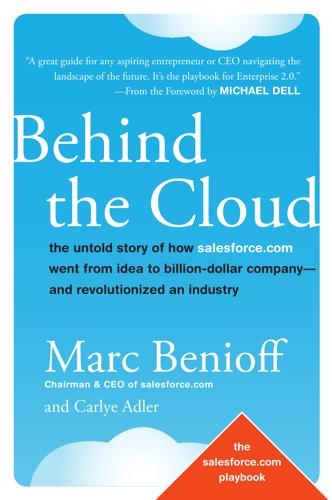
Behind the cloud: the untold story of how Salesforce.com went from idea to billion-dollar company--and revolutionized an industry
by
Marc Benioff
and
Carlye Adler
Published 19 Nov 2009
Although the strategy was unusual in the highly fragmented market of Japan, we decided to go back to our basics and build salesforce.com as we first had in the United States and Europe, through aggressive marketing and a direct sales team. This strategy worked, but we did have to make several adaptations to fit the Japanese market. We recruited Eiji Uda, a direct-sales genius with 20 years’ experience at IBM and the president and CEO of SoftBank Commerce (the largest IT distributor in Japan), as president to help build this capacity. Shortly after Uda-san started, we went from getting one or two media hits a month to getting consistent coverage. The difference: the right positioning. Whenever Uda-san introduced salesforce.com as a global company, he referred to other growing companies, such as Google, Amazon, and eBay.
…
See also 1–1–1 Model; V2MOM Salmart, 191 San Francisco Chronicle, 42 Sano, Chikara, 174, 180 Sarbanes-Oxley filings, 220 Satellite offices, 193–196 Schachter, Carl, 83, 87–88, 186–187 Schellhase, David, 215–216 Schmidt, Meredith, 218–219 Schultz, Howard, 129 Schumacher Group, 123 Sclavos, Stratton, 205 Seagate Technology, 124 Seagull approach, 198–199 SEC quiet-period rules, 215–218 Securities Act of 1933, 217 Security and career change, 19 Seed-and-grow strategy, 86–91, 100, 237 Segmenting markets, 80–81 Seibel, 61 Sequential growth strategies, 177–178 Service disruptions, 110–113 Shankar, Sri Sri Ravi, 2 Sharing best practices, 94 Siebel, 63, 64 Siebel, Tom, 5, 6, 7, 38, 39 Siebel User Group conference, 34, 36–37 Sill, Igor, 205 Simplicity, 106–107 Singh, Narinder, 109–110, 127, 131–132 Skoll Foundation, 161 So, Clarence, 62–63 SoftBank Commerce, 183 Software-as-a-Service. See SaaS Sohl, Jeffrey, 206–207 Southwest Airlines, 258 Speed, 106–107 Stakeholders’ success, 255–260 Stanford University, 157 Starbucks, 120, 129, 203 Start-up companies: adopting formalities after IPO, 220–223; believe in yourself, 5–6; building recruiting culture, 15, 16, 17, 19, 233–239; career development in, 250–252; choosing international partners, 179–182; creating image with events, 54; defining values and culture, 11–12; defying convention, 14; demonstrating commitment, 198–199; developing vision for, 3–4, 178–179, 195–196; differentiating, 28–31; disruptive business models of, 255, 259; ensuring stakeholders’ success, 255–260; establishing product relevance, 60, 63–64; estimating financing needed, 201–203; evolving to public corporation, 218–220; expanding without overspending, 176–177; financial team for, 209–210; focusing work, 12–13; fundraising strategies for, 203–205; getting good advice, 7–8; global strategies for products, 174–175; having mentors, 14–15; hiring best players, 15–17; injecting local leaders with corporate spirit, 170–172; integrating philanthropic model in, 139–140; listening to customers, 13–14, 85–86; long-term revenue planning, 223; philanthropic foundation in business model, 140–144; planning global growth, 172–173; preparing and filing IPO, 210–215; pursuing top talent, 7–9, 15–17; recharge time when developing, 277 INDEX 1–3; reducing costs of, 206–207; responding to criticism, 9–11; revenue vs. profitability in, 208–209; sequential growth strategies for, 177–178; starting satellite offices, 193–196; staying scrappy, 65–66; taking risks, 18–20; thinking bigger, 20–21; venture capital and, 205 Steele, Jim, 89 Story: developing for reporters, 40–41 Street Team concept, 49–52 Subscriptions: advantages of, 10, 90; business model based on, 76; converting to contract model, 82–85, 207–208; donating to nonprofits, 156–158, 166; free trial, 67–68, 96; licensing vs., 6; revenue challenges with, 218–220 Success: End of Software mission, 256; ensuring stakeholders’, 255–260; evaluating sales strategies, 96–97; measuring employee, 251; metrics monitoring corporate, 101; planning successful events, 55–56; projecting for product launch, 175–176; sharing financial, 217–218; supporting customers’, 97–100 Sugal, Cheri, 157 SunBridge, 181–182 SunGard, 89–91, 94 Susan G.
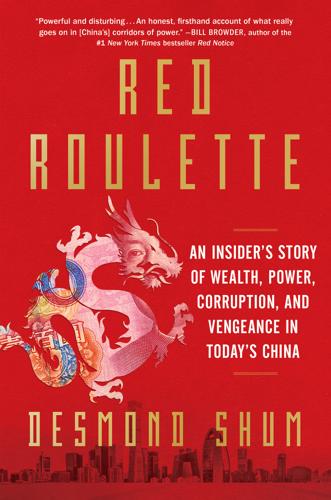
Red Roulette: An Insider's Story of Wealth, Power, Corruption, and Vengeance in Today's China
by
Desmond Shum
Published 6 Sep 2021
Morgan for violating the Foreign Corrupt Practices Act, which bars US companies from giving anything of value to foreign officials or their family members to obtain an improper advantage in business. Winston wasn’t as obnoxious as his sister but was no less ambitious. He’d settled on private equity. In 2005, he founded New Horizon Capital with an investment from SBI Holdings, a division of the Japanese group SoftBank, and Temasek, the Singapore government’s investment fund. Singapore’s state-owned investment funds were masters at cozying up to a group known as “the princelings,” the sons (and daughters) of Communist Party bigwigs. Various firms associated with the Singaporean government invested money in Winston’s firm as well as funds associated with the grandson of Party General Secretary Jiang Zemin, and others.
…
Morgan (bank), 91 Jiang, Alvin, 209 Jiang Mianheng, 51 Jiang Zemin, 8, 37, 51, 56–57, 58, 84, 91, 122, 175, 187, 203, 251 case of Chen Tonghai and, 197 family of, demanding obedience, 132 family’s businesses and wealth, 126–27, 209 influence used for his children, 107 Jia Qinglin and, 206 Ling Jihua scandal and, 260 Li Peiying’s testimony and, 197 Shanghai Gang, 202 “Three Represents” and, 170 Xi Jinping and, 264 Jia Qiang, 211–12, 215 Jia Qinglin “Old Man Jia,” 205, 206, 208, 212, 264 Jiang Zemin and, 206, 264 offspring in business, 212 purported corruption of, 205–6 son-in-law David Li, 207, 210, 264 Jin Xing, 59 Kaifeng Foundation, 182, 189 Katz, Paul, 245 Kerry, John, 165 Kissinger, Henry, 181 Kissinger Associates, 180–81 Kohn Pedersen Fox firm, 227, 245 Kong Dan, 209 Kuang Xin “Grandpa Kuang,” 136, 137–39 Kweichou Moutai Company, 208 Lan Hai, 60 Li, David (Li Botan), 205–18, 271 as Jia Qinglin’s son-in-law, 206 leveraging his father-in-law’s connections, 207, 210–11 Moutai Club, 207–8, 209, 264 Moutai liquor and, 208–9 Shum, Whitney, and European junket, 211–18 Shum and wine club venture, 209–10, 211, 218 Whitney’s friendship with, 206 wife, Jia Qiang, 210 Zhaode Investment Co., 207, 210 Li, Jasmine, 211–12 Li Keqiang, 203 Ling Gu, 158–59, 160, 259, 260 false allegations against, 262, 263 suspicious car crash death of, 260 Ling Jihua, 158, 259, 265 purge and jailing of, 261, 263, 264 son’s suspicious death, 260–61 Whitney’s friendship with, 260 wife, Gu Liping, 260–62 Lin Youfang, 206 Li Peiying, 125–28, 125n, 142, 191–93 Airport City Logistics Park and, 129, 141–42, 181 CCP investigation of, 142, 151, 159 disappearance, 142–43, 151, 191, 197–98, 268 execution of, 198 replacement for, 192 Shum and building site sale, 223–24 Li Peng, 45, 85 Li Ping, 123–25, 127–28, 159, 193 Airport City Logistics Park and, 130, 143 as Shunyi’s Party chief, 123–24, 125, 128, 129, 130 Zhang Beili and, 128 Li Rui, 203 Liu Changle, 209 Liu Chunhang, 97–98 Liu Shilai, 272 Li Yousheng, 146–49 Luoyang, China, 48–49 Ma, Jack, 56, 195, 209 Ma, Pony, 195 Mao Zedong, 18, 52, 170, 186, 203, 240, 251, 265, 266, 273, 281 Marlboro cigarettes, 46 meiguo maiban (Chinese rep of a US firm), 62 Meng Jianzhu, 210 Moutai liquor, 57, 128, 138, 150, 208–9 Nan Huai-Chin, 63, 181 Nanjing Polytechnic Institute, 73 National Development and Reform Commission, 132, 137 Five-Year Plan, 132–33, 137 National People’s Congress, 52, 188, 242, 243 Netcom, 51 New York Times Barboza, David, and Whitney’s disappearance, 280 Barboza story on the Wen family’s wealth, 235–36, 244, 268, 269, 270 Bo Xilai purge story, 243 website blocked in China, 237 Ngan, Alex, 46 Oldham, John, 181–82 Olympics 2008, 124, 125 PalmInfo, 60–63, 181, 231, 268 Paulson, Henry, 171 Pavillon Ledoyen, Paris, 214 Peng Liyuan, 201–4, 240–41 People’s Liberation Army (PLA), 68, 201 attack on pro-democracy protests in 1989, 272 businesses of and corruption, 74–75 Tiananmen Square, murder of protesters by, 85 Whitney and, 73, 74–75 Phoenix Satellite Television, 209 Pinault, François, 163–64 Ping An Insurance Co., 110–12, 117, 144, 151 COSCO’s Wei Jiafu and, 165–66 Shum on supervisory board, 116–17 Shum, Whitney, and Zhang purchase and sell shares, 110–12, 116–17, 144–45, 151, 160, 161, 164, 223 Politburo, 107, 176, 178 Bo Xilai scandal and, 242–43 Jia Qinglin on the Standing Committee, 205, 206 power of members, 178 Standing Committee, 185, 202, 241 Prodi, Romano, 189 Prologis, 199, 231 Queen’s College, Hong Kong, 26–30, 44, 257 Ramo, Joshua Cooper, 180–81 “The Beijing Consensus,” 180 “red aristocracy,” 5, 53, 83, 106, 108, 126, 197, 201, 205, 210, 211 children of, 260, 271–75 children of, groomed for political leadership, 240 donation of assets by, 244 quirks of, 211 Shum and members of, 271–75 state-run entities and, 126–27 Red Flag limos, 48, 58 Rizhao, China, 121 Robertson, Sandy, 52–53 Robertson Stephens bank, 52 Rothschild, Alexandre, 157 Rothschild, Eric de, 215 Sandel, Michael, 182 Shandong Province, 159, 162, 186 Sun Zhengcai and, 121–22 Whitney’s roots in, 71, 73–74, 100, 121, 153 Shanghai, 6, 17 CCP boss Jiang Zemin, 37 culture of, 22 Department of Propaganda, 16 economic and real estate boom, 10, 62–63 Huaihai Middle Road, 12 Jing’an Hilton, 213 Jinjiang Hotel, 15–16 Nanjing Road, 36 Party secretary of, 202–3 political demonstrations in, 36–37 Shum’s birth in, 5 Shum’s education in, 15–16 Shum’s father in, 7, 8, 10, 62 Shum’s father’s family home confiscated, 6–7, 12–13, 200 Shum’s grandfather as lawyer in, 6 Shum’s mother and, 9 Shum’s mother’s family abroad asked to invest in, 19–20 Shum’s parents meet and marry, 8 Shum’s swim team practice, 15–16 Shum visits in 1989, 35–36 Shanghai Stock Exchange, 89, 90, 144–45, 240 Shenzhen, China, 19, 216 Shenzhen Stock Exchange, 240 Shum, Desmond ambitions of, 67, 77, 180, 182 America and, 34, 35–36, 42–43 appearance of, 11, 27–28, 34, 67 birth in Shanghai (1968), 5, 11 Britain trip, 189 Canada trip with Whitney, 77–78 character and personality, 5, 17–18, 31, 25, 26–27, 144, 162 childhood and adolescence, humble origins, 6–7, 11–15, 19–25, 27, 31–35, 41–42, 43, 76, 182 childhood friend, Steven, 31, 33, 39 choosing the West, 275, 283 in the CPPCC, 187–89, 205, 254, 255–56 education, 15–16, 24–30 establishes Tsinghua Kaifeng Family Heritage Center, gives parenting advice, 158–59 European trip with David Li, 211–18 evolving view of China, 280–82 family’s Sunday dim sum brunch and business talk, 35, 46 fashion and, 31, 120, 151, 160, 228 first apartment, Tianhou, 44 formation of his character, 17–18, 25–26, 27, 33, 42, 269 image or brand of, 215 IVF, American clinic, and son’s birth, 153–56 lavish lifestyle, 109–10, 113–14, 160–63, 212–14, 220, 227, 229 as law-abiding, 213 lesson learned: stairs of Xiang Mountain, 269 loss of face and, 28, 230 low profile kept by, 100–101 maternal grandmother, 9 meditation and, 63–64, 268 moving as a constant, 25–26 parental role model for, 22, 33 parents and, 5–11, 14, 21–22, 28, 30–31, 32, 34, 268–69, 276 patriotism of, 1, 12, 49, 189, 280 philanthropy of, 182–83 at Queen’s College, 26–30, 257 reading by, 11–12, 15, 26, 35 report to Xi Jinping on Hong Kong, 257–58 Rothschild family and, 157, 215–16 self-discovery and personal growth, 63–64, 181, 231, 268–69 Shanghai visit in 1989, 36–37 Shum Scholarship at Harvard, 182 son, Ariston, 2, 156, 159, 275, 279 spiritual side of, 69 studying parenting, 157–58 swim team and Olympics tryout, 16–18, 26–27, 30, 33 taste for fine food and wine, 42, 68, 160–61 Tiananmen Square and, 37–38 at the University of Wisconsin, 36, 39–43 wealth of, 2, 160 wedding of, 119–21, 153 Whitney’s financial control of, 135, 161, 203 Whitney’s relationship with, 1, 3, 64–70, 75, 76–78, 95, 119, 121–23, 135, 151, 204, 229–33, 267–68, 276–77, 279–80 Whitney’s relationship with, deterioration, divorce, and financial fight, 230–33, 245–49, 267–70 wine club venture, 209–10, 211, 218 Zhang Beili (Auntie Zhang) and Wen influence, 79–82, 101–2, 166 Shum, Desmond: business career Airport City Logistics Park and, 129–36, 159–60, 169, 179, 193–94, 196, 197–98 Aspen Institute and, 180, 181, 231, 251 Bank of China, other IPOs, and profits, 160 Beijing real estate development proposed, 246–47 buying presents for officials, 177 capitalism in China and, 169–70 cash shortages, 113–14 China’s “system” and, 77, 199–200 at ChinaVest, 44–55, 57–61 at Citibank Vickers, 43–44 Ding Yi loan and court case, 247–49, 268, 269, 271 father’s career success and, 62 Genesis Beijing project, 1, 223–32, 238–39 guanxi (connections) and doing business, 57–58, 122, 139, 149–51, 200, 244, 247 influence peddling and, 164 Lan Hai and job offer, 60 learning how the Chinese do business, 46–48 learning to be a boss in China, 144 optimism about China and the West, 251–52 overseas investments, 200, 204, 244–45, 276–77 PalmInfo and, 61–62, 181, 231, 268 partnership with Whitney and Zhang, 108–9, 110, 238–39 Ping An deal, 110–12, 116–17, 144–45, 151, 160, 161, 164, 223 providing access to power (Wen family), 134–35 saving Li Yousheng and new connections, 146–49, 151 Song’s warning, 194–95 Tian’s success as inspirational, 50 Western partners, 244–45 Whitney’s instruction in business and politics, 65–67, 68, 151, 160 Xi Jinping, concerns about, 251–55 Sima Qian, 75–76 Singapore, 91–92 SoftBank, SBI Holdings division, 91 Song Hongbing, 174 Song Zhe, 179–80, 189 becoming a gaogan, 180 warning to Shum, 194–95 State Council, 132 Sun Hung Kai Properties, 246–47 Sunrise duty-free business, 126–27 Sun Tzu, 176 Sun Zhengcai, 121–22, 174–78, 187, 205, 264–65 real estate projects and, 122, 175 Wen sponsors, 175 Whitney and, 174–78, 201 Xi’s purging of, 263, 265 Suzhou, China, 6 Tadao Ando, 227 Tait Asia, 45, 46–47, 75 Taiwan, 170 Temasek fund, 91 Tencent, 195 Theleen, Bob and Jenny, 45, 47, 53–54 Thousand Talents Program, 185 Tian, Edward, 49–51, 76 Tiananmen Square crackdown, 37–38, 45, 50, 85, 216, 240 Tianjin, China, 9, 75 Trump, Donald, 35 Tsinghua University, 182, 185–87 alumni network, 185–86 Chen Xi and Xi Jinping at, 252, 259 Chen Xi as CCP secretary at, 183–87 Kaifeng Family Heritage Center, 158 Shum and Whitney’s generosity to, 182–83, 186–87 Tyson Foods, 32–33, 62 University of Southern California (USC), 33, 39 University of Wisconsin, 36, 39–43 Wang Lijun, 242 Wang Qishan, 171–73, 179, 201 Whitney and, 172–74, 178–79, 201, 252 on Xi Jinping, 252 Wanxiang company, 55–56 Warburg Pincus, 50–51 Wei Jiafu, 110, 165, 166 Wen Jiabao, 81–84, 93, 116, 166, 175 amassing of wealth and, 92–94, 238 assistant Song Zhe, 179–80, 194–95 Beijing home, 94 Bo Xilai allies retaliate against, 244 Britain trip, 189 children of, 90 global financial crisis and, 195 as “Grandpa Wen,” 86 ignorance of family’s business activities, 106–7, 238 New York Times story about wealth of, 235, 237, 238 Ping An investment deal and, 166 political career, 84–87, 116, 243, 259 as premier, 86–87, 93, 94, 105, 281 speaking of freedom and democracy, 86–87, 94 Tiananmen Square and, 85 wife, Auntie Zhang and, 81, 83–84, 85, 87, 94, 103, 166 Xi Jinping backed by, 243–44 Wen Ruchun (Lily Chang), 90–91, 97–98, 106, 111 marriage to Liu Chunhang, 98 New York Times story and, 238, 239 Wen Yunsong (Winston Wen), 90–92, 220, 239 founds New Horizon Capital, 91, 93 Keystone Academy, 239 New York Times story and, 238, 239 wife and son of, 97 Whampoa Military Academy, 213 World Trade Organization, 57, 134 Wrath of Heaven, The, 57 Xiang (Fragrant) Mountain, 269 Xiao Gazi, 12 Xi Jinping, 183, 185, 201–4, 240–45, 251 anti-corruption campaign, 252–53, 259, 279 Bloomsberg news story about wealth of, 237, 239 Bo Xilai scandal and, 242–43 consolidation of power, 264, 265–66 crackdown on lawyers, others, 253–54 cult of personality and, 266 democracy seen as threatening, 253 elimination of rivals, 259, 262–65 as emperor for life, 265–66 foreign policy and, 254 Hong Kong crackdown, 254–57, 258 kidnapping and, 254–55, 280, 281 maximizing total control, 282 Politburo and, 203, 241 political rise, 202–3, 240, 241, 243 repressive measures by, 251–55 Whitney’s friendship with, 201–4 wife Peng Liyuan, 201, 203, 240–41 Xi Zhongxun, 201, 240 Xu Jiayin, 158, 211, 216–18 Xu Ming, 97 Xu Zhimo, 29 Youth League, 259, 260 Yu Guoxiang, 211, 213, 218 Yu Keping, 189 Zeng Fanzhi, 163 museum for, 226, 227 Zeng Qinghong, 122, 175 Zhang Beili (Auntie Zhang), 79–87, 81n, 217 account of Bo Xilai scandal, 242–44 Airport City Logistics Park and, 129, 131–32 ambition and motivations of, 105–6 background and family, 83 Beijing Diamond Jewelries Company of, 89, 90, 105 Beijing home of, 96–97 business activities kept from her husband, 106–7, 238 business dealing with Whitney and Shum, 107, 247 (see also Airport City Logistics Park; Genesis Beijing project; Ping An Insurance Co., investment, etc.)
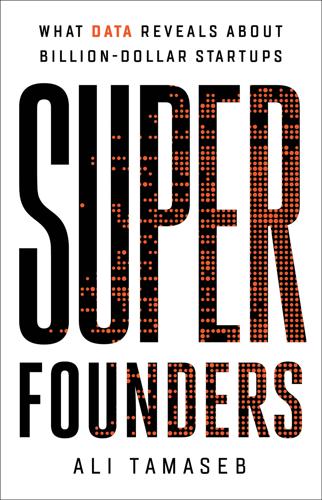
Super Founders: What Data Reveals About Billion-Dollar Startups
by
Ali Tamaseb
Published 14 Sep 2021
Adam Grant, “How to Spot One, How to Be One,” interview by Shankar Vedantam, NPR, March 1, 2016, www.wbur.org/npr/468574494/originals-how-to-spot-one-how-to-be-one. 5. Alex Konrad, “Freight Startup Flexport Hits $3.2 Billion Valuation After $1 Billion Investment Led by SoftBank,” Forbes, February 21, 2019, www.forbes.com/sites/alexkonrad/2019/02/21/flexport-raises-1-billion-softbank/#682793ca5650. 6. Ken Yeung, “Sidecar: ‘We Failed Because Uber Is Willing to Win at Any Cost,’” VentureBeat, January 20, 2016, https://venturebeat.com/2016/01/20/sidecar-we-failed-because-uber-is-willing-to-win-at-any-cost/. CHAPTER 12: THE DEFENSIBILITY FACTOR 1.

Rule of the Robots: How Artificial Intelligence Will Transform Everything
by
Martin Ford
Published 13 Sep 2021
Spencer Soper, “Amazon will consider opening up to 3,000 cashierless stores by 2021,” Bloomberg, September 29, 2018, www.bloomberg.com/news/articles/2018-09-19/amazon-is-said-to-plan-up-to-3-000-cashierless-stores-by-2021. 34. Paul Sawyers, “SoftBank leads $30 million investment in Accel Robotics for AI-enabled cashierless stores,” VentureBeat, December 3, 2019, venturebeat.com/2019/12/03/softbank-leads-30-million-investment-in-accel-robotics-for-ai-enabled-cashierless-stores/. 35. Jurica Dujmovic, “As coronavirus hits hard, Amazon starts licensing cashier-free technology to retailers,” MarketWatch, March 31, 2020, www.marketwatch.com/story/as-coronavirus-hits-hard-amazon-starts-licensing-cashier-free-technology-to-retailers-2020-03-31. 36.
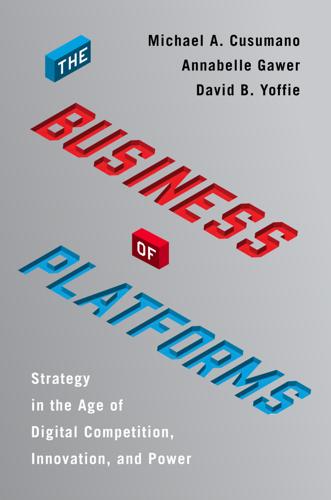
The Business of Platforms: Strategy in the Age of Digital Competition, Innovation, and Power
by
Michael A. Cusumano
,
Annabelle Gawer
and
David B. Yoffie
Published 6 May 2019
Consequently, the company was forced to spend billions of dollars in venture capital and operating cash flow simply to maintain the status quo. Rapid growth in existing as well as new markets then required additional expenses and investments. Overall, Uber has grown mostly because of generous capital providers (largely sovereign wealth funds and SoftBank’s Vision Fund). Investors seem to be betting on a winner-take-all-or-most outcome where Uber outlasts both digital and conventional competitors, and then eventually raises prices or reduces costly subsidies. Second, transaction platforms “reduce friction” to facilitate interactions among platform participants.

Code Dependent: Living in the Shadow of AI
by
Madhumita Murgia
Published 20 Mar 2024
These companies were selling surveillance systems to authoritarian and democratic governments around the world and raising money from international financiers. For example, SenseTime, one of the most celebrated facial recognition companies, raised $3bn from well-known foreign investors including SoftBank, Tiger Global and Silver Lake.23 Another company, Hikvision, was found to be supplying hundreds of CCTV cameras to the UK government to install across official government buildings in Westminster, local councils across the UK, secondary schools, NHS hospitals, as well as UK universities and police forces.24 In 2022, the British government banned the use of Hikvision cameras at sensitive sites, such as inside the offices of ministers and other government employees.25 This was a new form of digital colonialism, the exporting of Chinese surveillance equipment to the rest of the world to make a land grab, to enhance the state’s global influence and power.
…
Q. ref1 Massachusetts Institute of Technology ref1 Material Bank ref1 Mbembe, Achille ref1, ref2 Meareg, Abraham ref1 Megvii ref1 Meituan ref1, ref2 Mejias, Ulises: The Costs of Connection ref1, ref2 Mercado Libre ref1 Merck ref1 Meredith, Sarah ref1 Meta ref1 advertising and ref1 communal violence and ref1 content moderators ref1, ref2 databases of faces and ref1 ethics policy ref1 metaverse and ref1 Sama and ref1, ref2, ref3, ref4, ref5 violence-inciting content ref1 see also Facebook Metiabruz ref1 Metropolitan Police ref1, ref2, ref3, ref4 Mexico ref1, ref2, ref3, ref4, ref5 Miceli, Milagros ref1, ref2, ref3, ref4 Microsoft Azure software ref1, ref2 Bing ref1 Bletchley Park summit (2023) and ref1 ethical AI charter ref1 face recognition systems and ref1, ref2 gig workers and ref1 Microsoft-Salta predictive system/public policy design and ref1, ref2 OpenAI and ref1 Rome Call and ref1, ref2, ref3 Midjourney ref1, ref2 Mighty AI ref1 migration ref1, ref2, ref3, ref4, ref5, ref6, ref7, ref8, ref9, ref10, ref11, ref12, ref13, ref14 Ministry of Early Childhood, Argentina ref1 Mort, Helen ref1, ref2, ref3, ref4, ref5, ref6, ref7, ref8, ref9 A Line Above the Sky ref1 ‘Deepfake: A Pornographic Ekphrastic’ ref1 ‘This Is Wild’ ref1, ref2 Mosul, Iraq ref1 Motaung, Daniel ref1, ref2, ref3, ref4, ref5 Mothers (short film) ref1 ‘move fast and break things’ ref1 Movement, The ref1 Mozur, Paul ref1 M-PESA ref1, ref2 MRIs ref1 Mukasa, Dorothy ref1 multi-problem families ref1 Mumbai, India ref1, ref2, ref3, ref4 Murati, Mira ref1 Museveni, Yoweri ref1 Musk, Elon ref1, ref2 Muslims ref1, ref2, ref3, ref4, ref5, ref6, ref7, ref8, ref9, ref10, ref11, ref12, ref13 Mutsaers, Paul ref1 Mutemi, Mercy ref1, ref2 My Image My Choice ref1 Nairobi, Kenya ref1, ref2 facial recognition in ref1 gig workers in ref1, ref2, ref3, ref4 Sama in ref1, ref2, ref3, ref4, ref5 Nandurbar, Western India ref1, ref2, ref3 National Health Service ref1, ref2 National Union of Professional App-Based Transport Workers ref1 National University of Defense Technology, China ref1 Navajo Nation ref1, ref2 NEC ref1 necropolitics ref1 Neruda, Pablo ref1 Netflix ref1 New Delhi, India ref1, ref2, ref3 New York Fashion Week ref1 New York Times ref1, ref2, ref3 Neymar ref1 Ngito, Benjamin ref1 Ni un Repartidor Menos (Not one Delivery Worker Killed) ref1 9/11 ref1, ref2 ‘no-fly’ zones ref1 Noble, Safiya Umoja ref1 non-disclosure agreements (NDAs) ref1, ref2, ref3, ref4 Northpointe ref1 Not Your Porn ref1 Notting Hill carnival ref1 NTech Labs ref1 Obama, Barack ref1 Obermeyer, Ziad ref1 Oculus Quest 2 virtual reality headset ref1 Ofqual ref1 Ola Cabs ref1, ref2 Olympics (2012) ref1, ref2 One Card System ref1 Online Safety Bill, UK ref1 OpenAI AI alignment and ref1 Bletchley Park summit and ref1 ChatGPT and ref1, ref2, ref3, ref4, ref5 creativity and ref1, ref2 Rome Call and ref1 Sama and ref1, ref2 Operation Condor ref1 Optum ref1 organ-allocation algorithm ref1 Orwell, George ref1, ref2 osteoarthritis ref1 outsourcing ref1, ref2, ref3, ref4, ref5, ref6, ref7, ref8, ref9, ref10, ref11 Ovcha Kupel refugee camp ref1 Oxford Internet Institute ref1 pain, African Americans and ref1 Palestine ref1 Parkinson’s disease ref1 Parks, Nijer ref1, ref2 Parvati (tuberculosis patient) ref1, ref2, ref3, ref4 Peled, Nirit ref1 Pena, Paz ref1, ref2 Perth, Western Australia ref1, ref2, ref3, ref4, ref5, ref6, ref7 Photoshop ref1, ref2, ref3 physiognomy ref1 Pi ref1 pilot programmes abandonment of ref1, ref2 ‘graveyard of pilots’ ref1 public disclosure of ref1 replacement of with human solution ref1 PimEyes ref1 policing CCTV cameras and see CCTV Crime Anticipation System ref1 De Moeder Is de Sleutel (The Mother Is the Key) ref1 diffuse policing ref1 facial recognition and see facial recognition forgiveness and ref1 predictive policing algorithms ref1 ProKid ref1, ref2, ref3 Right To Be Forgotten and ref1 Polosukhin, Illia ref1, ref2 Pontifical Academy of Sciences ref1 Pontifical Gregorian University ref1 pornography deepfake see deepfakes revenge porn ref1, ref2, ref3, ref4, ref5 Portal De La Memoria ref1 Posada, Julian ref1 pregnancy, teenage ref1 abandonment of AI pilot in Argentina ref1 abortion and ref1, ref2, ref3, ref4, ref5, ref6, ref7 digital welfare state and ref1 Microsoft Azure software and ref1 public disclosure of AI pilot in Argentina ref1 replacement of AI pilot with human solution in Argentina ref1 Princeton ref1 ProKid ref1, ref2, ref3 ProPublica ref1, ref2 proxy agents ref1, ref2 PTSD (post-traumatic stress disorder) ref1, ref2 public disclosure ref1, ref2 public-private surveillance state ref1 pulse oximeter ref1 Puma ref1 Puna Salteña, Andes ref1 qTrack ref1, ref2, ref3 Qure.ai ref1, ref2, ref3, ref4 qXR ref1 race facial recognition and ref1, ref2, ref3, ref4, ref5 medical treatment and ref1, ref2, ref3 predictive policing and ref1, ref2, ref3, ref4, ref5 radiologists ref1, ref2, ref3, ref4, ref5, ref6 Raji, Deborah ref1, ref2 Rappi ref1 recruitment systems ref1 Red Caps ref1 red-teamers ref1 Reddit ref1, ref2, ref3 regulation ref1 benefits fraud ref1 content moderators ref1 deepfakes ref1, ref2, ref3, ref4, ref5, ref6, ref7, ref8, ref9, ref10 exam grades ref1 facial recognition ref1, ref2, ref3, ref4 Foxglove and see Foxglove hateful content ref1 military weapons ref1, ref2, ref3, ref4 non-disclosure agreements (NDAs) ref1, ref2, ref3, ref4 organ-allocation algorithm ref1 political prisoners in Guantanamo Bay ref1 Right To Be Forgotten ref1 visa-awarding algorithms ref1 Reprieve ref1, ref2 responsible innovation ref1 Rest of the World ref1 retinopathy ref1 revenge porn ref1, ref2, ref3, ref4, ref5 Ricanek, Karl ref1, ref2 Ricaurte, Paola ref1, ref2 Right To Be Forgotten ref1 Roblox ref1 Roderick, Emily ref1 Rome Call ref1 Roose, Kevin ref1 Rosen, Rabbi David ref1, ref2 Russell, Stuart ref1 Salta, Argentina ref1, ref2 Sama ref1, ref2, ref3, ref4, ref5, ref6, ref7 Samii, Armin ref1, ref2, ref3, ref4, ref5 Sana’a, Yemen ref1 SAP ref1, ref2, ref3 Sardjoe, Damien ref1, ref2 Sardjoe, Diana ref1, ref2, ref3, ref4, ref5, ref6, ref7, ref8, ref9 Sardjoe, Nafayo ref1, ref2, ref3 Scale AI ref1 Scarlett, Cher ref1 Scarlet Letter, The ref1 Schwartz, Steven ref1 Scsky ref1 Secretariat for Early Childhood and Families ref1 self-attention ref1 SenseTime ref1 Sensity AI ref1, ref2, ref3 Sequoia Capital ref1 sexual assault ref1, ref2, ref3 Shelley, Mary: Frankenstein ref1 Silver Lake ref1 Singh, Dr Ashita ref1, ref2, ref3, ref4 Singh, Dr Deepak ref1 ‘slaveroo’ ref1 Slyck, Milo Van ref1 Smith, Brad ref1, ref2, ref3, ref4, ref5 Snow, Olivia ref1 social media ref1, ref2, ref3, ref4 content moderators ref1, ref2, ref3, ref4, ref5, ref6 deepfakes and ref1, ref2, ref3, ref4, ref5, ref6 electoral manipulation and ref1, ref2 SoftBank ref1 South Wales Police ref1 Sri Lanka: Easter Day bombings (2019) ref1 Stability AI ref1 Stable Diffusion ref1 Stratford, London ref1, ref2, ref3 Suleyman, Mustafa ref1 super-recognizers, Metropolitan Police ref1 Supreme Court, UK ref1 surveillance capitalism ref1, ref2 Syria ref1, ref2, ref3, ref4 targeting algorithms ref1, ref2, ref3, ref4 Taylor, Breonna ref1 Tekle, Fisseha ref1 Telegram ref1, ref2 Tesla ref1, ref2, ref3, ref4 Tezpur ref1 Thiel, Peter ref1 Thuo, David Mwangi ref1 Tiananmen Square massacre (1989) ref1, ref2, ref3, ref4 Tibet ref1, ref2 Tiger Global ref1 TikTok ref1, ref2, ref3, ref4, ref5 Top400 ref1, ref2, ref3, ref4, ref5, ref6, ref7 Top600 ref1, ref2, ref3, ref4, ref5, ref6, ref7, ref8, ref9, ref10 transformer ref1, ref2, ref3, ref4 translation ref1, ref2, ref3, ref4, ref5, ref6, ref7 TS-Cop ref1 Tséhootsooí Medical Center, Fort Defiance, Arizona ref1, ref2 tuberculosis ref1, ref2, ref3 Tuohy, Seamus ref1 Uber ref1, ref2, ref3, ref4, ref5, ref6, ref7, ref8 UberEats ref1, ref2 UberCheats ref1, ref2, ref3 Uganda ref1, ref2, ref3, ref4, ref5 Ukraine, war in ref1, ref2, ref3, ref4 UN (United Nations) Declaration of Human Rights ref1 Food and Agriculture Organization ref1 Special Rapporteur on extreme poverty and human rights report on emergence of a digital welfare state (2019) ref1 University of Buenos Aires ref1 University of California Berkeley ref1 Los Angeles ref1 University of Michigan ref1 University of Western Australia ref1, ref2 Urtubey, Juan Manuel ref1, ref2, ref3, ref4 US Department of Defense ref1, ref2 US National Institutes of Health ref1 US Navy ref1 Uszkoreit, Jakob ref1 Valbuena, Tess ref1 Vara, Vauhini ref1 Vaswani, Ashish ref1 Vatican, Rome ref1, ref2, ref3 Vazquez Llorente, Raquel ref1 Venezuela ref1, ref2, ref3 Vice News ref1 virtual private network (VPN) ref1 visa awards ref1 vocabulary, AI-driven work-related ref1 voice-over artists ref1 Wadhwani AI ref1 wages app workers ref1, ref2, ref3, ref4, ref5, ref6, ref7, ref8, ref9, ref10, ref11 data annotation/data-labelling and ref1, ref2, ref3, ref4, ref5, ref6 global wage for AI data workers ref1, ref2 Walmart ref1, ref2 Wang, Maya ref1 Washington Post ref1 Waymo ref1 webcams ref1 WeChat ref1, ref2, ref3 ‘weights’ (strength of connections) ref1 welfare systems ref1, ref2, ref3, ref4 digital welfare state ref1, ref2 White, Andrew ref1 Whittaker, Meredith ref1 Wichi ref1 Wientjes, Jacqueline ref1 Wine, Bobi (Robert Kyagulanyi Ssentamu) ref1, ref2 Wipro ref1 Wired ref1, ref2, ref3, ref4, ref5 WITNESS ref1 Witt, Hays ref1 Woodbridge, New Jersey ref1 Woods, Kat ref1 worker collectives ref1 Worker Info Exchange ref1 World Health Organization ref1 Wright, Robin ref1 Writers Guild of America ref1 Xi Jinping ref1 Xinjiang, China ref1, ref2 X-rays ref1, ref2, ref3, ref4, ref5, ref6, ref7, ref8, ref9, ref10 YouTube ref1, ref2, ref3, ref4 Yu, Amber ref1 Yuan Yang ref1 Zuboff, Shoshana ref1 Zuckerberg, Mark ref1 About the Author MADHUMITA MURGIA is the first Artificial Intelligence Editor of the Financial Times and has been writing about AI, for Wired and the FT, for over a decade.
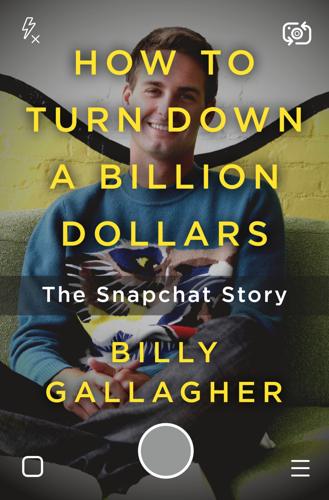
How to Turn Down a Billion Dollars: The Snapchat Story
by
Billy Gallagher
Published 13 Feb 2018
But his two superpowers are (1) his ability to get inside his users’ heads and think like a teenage girl and (2) his knack for attracting brilliant, powerful mentors. Evan loves picking other people’s brains over a walk or a meal. Over the years he has attracted an A-list roster of mentors, including SoftBank’s Nikesh Arora, Twitter’s Jack Dorsey and Google’s Eric Schmidt. He doesn’t just limit these brain dumps to tech luminaries, though, as he often walks and chats with fashion designers, politicians, documentary filmmakers, and other intriguing peers. Often, these impressive people will come speak to Team Snapchat at their Venice headquarters.
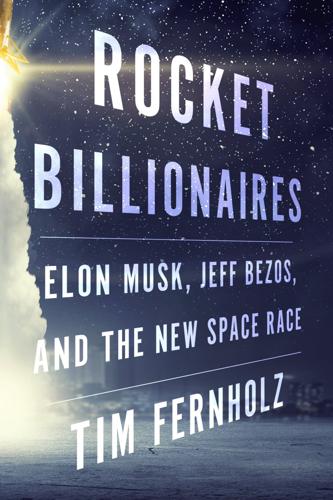
Rocket Billionaires: Elon Musk, Jeff Bezos, and the New Space Race
by
Tim Fernholz
Published 20 Mar 2018
(Like rockets, most satellites are assembled by hand in clean rooms, which is one reason for their expense.) Intelsat, another major operator in communications satellites, invested as well, perhaps hoping to ape SES’s successful incorporation of O3b into its collection of space assets. In 2016, OneWeb would win its own $1 billion investment from the Japanese conglomerate SoftBank, whose tycoon CEO, Masayoshi Son, was spearheading a $100 billion technology investment fund. And, because every space venture needs a space billionaire, Richard Branson threw his hat in the ring, investing in OneWeb through Virgin Group and joining its board. The deal also entailed a contract to launch ten of the satellites on Virgin Orbit, a subsidiary of Virgin Galactic that would be spun out in 2017.
…
E., 26 Shelby, Richard, 145, 148–49, 184, 192 Shelton, Henry Hugh, 183, 186 Shepard, Alan, 12 Shotwell, Gwynne, 84, 115, 152–53 on Challenger disaster, 30 on EELV competition, 180 on explosions and failures, 205–6, 208 and Falcon 9, 10–11 on reusability pricing, 248 on Russian purchases, 10 sales for SpaceX, xiii, 66, 80–81, 130, 136, 158, 171–73 Siebold, Pete, 213 Sierra Nevada Corporation (SNC), 159–60, 162, 252 Simpson, Larry, 4 SkyBridge, 27 Slayton, Deke, 52 Smith, Bob, 70, 237–39 Society of Women Engineers, 80 SoftBank, 234 SolarCity, Musk investment, 43 Sowers, George, 32, 34–36, 39, 190–91, 196, 238, 241, 244, 247 moon as the next Persian Gulf, 254 Soyuz rocket, 65, 79, 163, 193, 197, 223 Spacecom, 221–23. See also Amos-6 SpaceDev, NASA space taxi program bid, 113 Space Exploration Technologies Corporation.
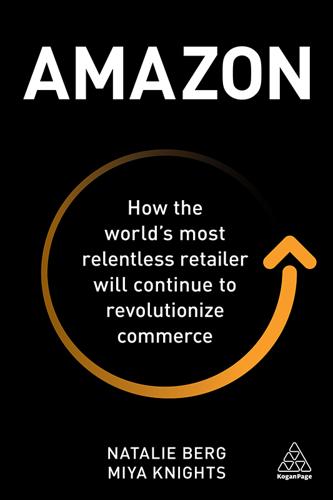
Amazon: How the World’s Most Relentless Retailer Will Continue to Revolutionize Commerce
by
Natalie Berg
and
Miya Knights
Published 28 Jan 2019
LoweBot can understand multiple languages and uses a 3D scanner to detect people in the stores. Shoppers can seek the robot’s help to search for any product, either by talking to it or by typing items into a touchscreen on its chest. The robot then guides them to the products using smart laser sensors. Softbank’s Pepper robot has been deployed in multiple customer-facing situations, including taking Pizza Hut orders in Asia, and electronics retailer MediaMarktSaturn has deployed a robot called Paul to greet and guide customers. The German retailer is also among those around the world testing autonomous robotic delivery vehicles developed by Starship, a start-up owned by Skype founders Ahti Heinla and Janus Friis.
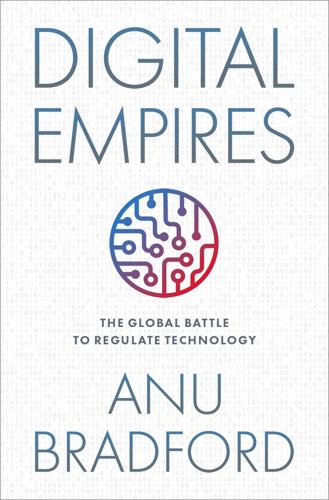
Digital Empires: The Global Battle to Regulate Technology
by
Anu Bradford
Published 25 Sep 2023
Times (July 21, 2021), https://www.ft.com/content/90620c2c-ea07-4425-9a18-f3b4587ed3ad. 199.Drew Singer, Didi’s IPO Underwriters Go Silent as Volatility Dominates, Bloomberg (July 26, 2021), https://www.bloomberg.com/news/articles/2021-07-26/didi-s-ipo-underwriters-go-silent-as-volatility-dominates. 200.Gearoid Reidy & Min Jeong Lee, SoftBank, Biggest Investor in Didi, Sinks After China Blocks, Bloomberg (July 4, 2021), https://www.bloomberg.com/news/articles/2021-07-05/softbank-tumbles-as-china-blocks-didi-app-just-days-after-ipo. 201.Didi Listing Provides a Cautionary Tale, Fin. Times (July 7, 2021), https://www.ft.com/content/6c52658d-4272-4e41-9570-db49f641c832. 202.Beijing Stock Exchange Launches With Focus on “Little Giants,” Bloomberg (Nov. 13, 2021), https://www.bloomberg.com/news/articles/2021-11-13/beijing-stock-exchange-launches-with-focus-on-little-giants; Alexandra Stevenson & Paul Mozur, With Its Exit, Didi Sends a Signal: China No Longer Needs Wall Street, N.Y.
…
For example, audiobook and podcast platform Ximalaya recently cancelled its planned US IPO in favor of a Hong Kong listing because of the new, onerous regulatory requirements.197 Listing in New York has traditionally had advantages over a listing in Hong Kong: New York has deeper and more liquid financial markets and avoids Hong Kong’s cumbersome regulatory requirements, including high profitability thresholds.198 Foreign investors and other entities that stood to make money off of Chinese tech IPOs are also worse off in this new regulatory environment, including underwriters like Goldman Sachs199 and investors like Softbank, which had poured money into DiDi.200 Chinese tech companies that proceed with a US listing may also face a “China penalty” as investors and investment banks price in the legal and regulatory risks associated with such a listing.201 The SEC also stands to lose from this conflict, as the Chinese government has blocked its regulatory access to, and leverage over, some of the world’s biggest tech firms.
…
American Civil Liberties Union, 46 Republican Party, 56, 272 research and development AI, 153–54, 197 Chinese students and researchers, 196–97 Defense Advanced Research Project Agency (DARPA) (US), 59 semiconductor, 59–60 RFE/RL (Radio Free Europe and Radio Liberty), 270 Rhodium Group, 93–94 Rice, Condoleeza, 271 rights to be forgotten, 112–13, 339–40 California Privacy Rights Act, 54–55 Charter of Fundamental Rights of the European Union (EU Charter), 110–11, 112, 116 cyber civil rights, 53–54 digital, 324–59 digital society of rights and values, 25 European, 324–59 European Convention of Human Rights, 112 globalization of, 324–59 of Muslims, 156–57 to privacy, 4, 111–13 safeguarding, 110–18 rights-driven regulations criticism of, 136–45 European model, 6–10, 16–20, 21–22, 23–24, 25, 28–29, 57–63, 91–94, 105–45, 221–54, 324–59, 361, 366–69 global influence, 16–20, 324–59 vs. market-driven regulations, 221–54 Roberts, Margaret E., 81–82, 83 Rohingya, 17–18, 280, 283 Romania, 144 Roskomnadzor, 309, 311–12 Ross, Wilbur, 226 Rozenshtein, Alan, 61–62 Rubio, Marco, 196–97 Rudd, Amber, 281–82 Rules on Counteracting Unjustified Extra-territorial Application of Foreign Legislation and Other Measures (Blocking Rules) (China), 200, 202 Russel, Stuart, 66–67 Russia 5G networks, 312 antitrust regulation, 344–45 battles with tech companies, 13–14, 163 BRICS Leaders Declaration, 303 content controls, 180–81 cyberattacks, 134 data localization requirements, 330–31 demands on Meta, 338 digital authoritarianism, 135, 308–13 Digital Divide projects, 268 disinformation campaigns, 120–21 Federal Security Service, 312–13 hate speech law, 140–41 and international code of conduct for information security, 303 internet sovereignty, 309–10 invasion of Ukraine, 13–14, 62, 163, 233–34, 253, 312–13, 384, 392 “law against Apple,” 312 propaganda, 308, 312–13 regulations, 308–13 relations with China, 310–13 sanctions against, 163, 197–98 search engine market, 260–61 social media restrictions, 284 Sovereign Internet Law, 308–9 surveillance technology, 312 tech diplomacy, 302 techno-autocracy, 389–90 US–Russia Cold War, 217–18, 270 Yarovaya law, 309 Russia Today, 312–13 Russian Antimonopoly Service (FAS), 344–45 Russian apps, 312 Russian hackers, 67 safe cities, 296–97, 300–1, 314–16. see also smart cities Safe Harbor data transfer agreement, 111, 229–30 Safe Philippines project, 300 SAMR (State Administration for Market Regulation) (China), 204 Samsung, 215–16, 261 sanctions Anti-Foreign Sanctions Law (AFSL) (China), 202–3 against China, 185–86, 197–99, 218–19 against Chinese firms, 102–3, 166–67 cyber sanctions, 206–7 to deter malicious cyber activity, 134, 197–99 against Russia, 163, 197–98 against Russian oligarchs, 309–10 Santiago, Chile, 263 SAP, 108, 136–37 Sasse, Ben, 192–93 Saudi Arabia, 270–71, 308, 316, 389–90 5G networks, 193–94 China’s influence on, 299–300 Saverin, Eduardo, 374–75 SCCs (standard contractual clauses), 231–32 Schmidt, Eric, 75, 208, 274–75, 389–90 Schmit, Nicolas, 128 Schneir, Bruce, 101 Schrems, 229–30 Schrems, Max, 230–32, 235–36 Schrems II, 230–34 Schwab, Andreas, 249 Schwartz, Paul, 325 science and technology diplomats, 302 search engines, 153–54. see also specific technologies Secure Campus Act (US), 196–97 Secure Equipment Act (US), 193 Securities and Exchange Commission (SEC) (US), 14–15, 174–75, 176–78 security cybersecurity, 60, 62, 173 Cybersecurity Law (China), 79–80, 94–95 Cybersecurity Review Measures (China), 94–95 Cyberspace Administration of China (CAC), 175 Data Security Law (DSL) (China), 79–80, 94–95, 175 international code of conduct for information security, 303 national, 66–67, 164–78 National Security Law (China), 79–80 Prague Proposals, 320–21 societal, 85 self-regulation, 39–40, 47–48, 63–64 self-sufficiency, 73–75, 199–211, 217–18 Semiconductor Industry Association (US), 218 semiconductors advanced, 217–18 global market, 74–75, 134–35, 215–16 research and development, 59–60 US export controls, 190 US–China tech war, 211 Senegal, 285–86 Senkaku Islands (Diaoyu Islands), 156–57 SenseTime, 85, 189–90 Sequoia Capital, 373 Serbia, 301 sex trafficking, 51–52, 53–55 Shanghai Cooperation Organization, 303 Sharp Eyes initiative (China), 4–5, 86 Shein, 165 Shenzhen, China, 35 Sherry, Linda, 355–56 Shu Yinbiao, 305 Sichuan, China, 314 Siemens, 263, 321 Siemens/Alstom, 248 Silicon Allee (Berlin), 263 Silicon Lagoon (Lagos), 263 Silicon Roundabout (London), 263 Silicon Savannah (Nairobi), 263 Silicon Valley, 7–8, 33–35, 42, 92–93, 263, 283–84, 374 Silicon Wadi (Tel-Aviv), 263 Singapore, 266–67, 322 Singapore-New Zealand-Chile Digital Economy Partnership Agreement, 322 Siri (Apple), 59 Slack, 76–77 Small Business Administration (SBA), 59 smart cities AI cities, 208–9 on Chinese Digital Silk Road, 195, 291–92, 296–97, 298, 305, 312, 314–15, 316–17 surveillance systems, 85–86, 296, 312, 316–17 technical standards, 305, 316–17 smartphones, 70–71, 215–16 Smith, Brad, 62, 138 Smith, Christopher, 276 Snap Inc., 76–77, 382–83 Snapchat, 116–17, 280–81 Snowden, Edward, 4–5, 7–8, 61, 198–99, 226–27, 229–30, 284–85, 287–88, 318–19 social credit, 8–9, 87–88 social fairness, 124 social media, 41, 64–65, 215–16 Chinese platforms, 80, 82–83, 154–55, 166–67, 293, 312–13 disinformation campaigns, 280–81 role in Brexit, 280 role in January 6, 2021 attack on the US Capitol, 141 role in terrorist attacks, 281–82 US platforms, 280–83 social media companies, 280–83, 362–63. see also specific companies by name Social Principles of Human-Centric AI (Social Principles) (Japan), 349–50 social stability, 70 societal security, 85 Softbank, 176 software developers, 73 Soho China, 204 SolarWinds hack, 60 Sonos, 330 Sony Ericsson, 263 SoundCloud, 76–77 South Africa, 303 South America, 301. see also specific countries by name South and South-East Asia, 260, 300. see also specific countries by name South Korea, 211, 333–34, 337, 344–45 Anti-Google Law (Telecommunications Business Act 31), 347 Digital Divide projects, 268 techno-democracy, 389–90 Sovereign Internet Law (Russia), 308–9 sovereign RuNet, 308–9 sovereignty data, 297 digital, 132–33, 135, 186, 215, 245–46, 354 internet, 288–89, 309–10 technological, 132–33, 180–81, 234 Spain antitrust investigations, 345 data privacy law, 333–34 digital policy, 142 digital services tax (DST), 126–27, 239, 242 Google News withdrawal from, 122–23 privacy culture, 143–44 protections for platform workers, 128–29 restrictions on Chinese tech companies, 193–94 smart cities, 296–97 surveillance practices, 102, 143–44 speech freedom of, 41–42, 46–47, 116–18 hate speech, 281 Hate Speech Code (Code of Conduct on Countering Illegal Hate Speech Online) (EU), 116–17 hate speech rules, 9–10, 55–56, 116–17, 140–41 NetzDG law (Germany), 140–41 splinternet, 16, 179–80, 181, 388 Spotify, 238 Sputnik, 312–13 spyware, 143–44, 316 standard contractual clauses (SCCs), 231–32 standards China Standards 2035 plan, 304 Chinese, 291 Chinese influence on, 302–8, 316–17 data privacy, 324–25 digital trust, 320–21 IPv6+ (proposed), 307 New IP (proposed), 306–7 for smart cities, 316–17 technical, 291, 302–8, 316–17 Stanford University, 33–34, 59, 210–11 Stasi (East German Ministry for State Security), 111–12 State Administration for Market Regulation (SAMR) (China), 204 state aid, 243–44 state control Chinese state-driven regulatory model, 6–10, 16–20, 21, 23–25, 28–29, 57–63, 69–104, 108, 131–36, 364–66, 391–92 criticism of, 99–104 global consequences, 16–20 vs. market-driven regulations, 36–40 Russian state-driven regulatory model, 308–13 with surveillance, 85–88 with tech companies, 88–91 Stop Online Piracy Act (SOPA) (US), 48–49 #StopHateForProfit boycott, 384 strategic autonomy, 132–34, 186 Stratton Oakmont v Prodigy, 43–44 subsidies, 134–35 Sudan, 297–98 Sugon, 161–62 Sullivan, Jake, 209, 251–52, 351 Summit of Democracy, 390 Sun Jiandong, 80 Sunstein, Cass, 64–65 surveillance capitalism, 4, 66, 135–36, 368–69 surveillance imperialism, 17 surveillance technology(-ies) AI-driven, 85, 293 Chinese, 77–91, 297–98, 314–20 citizen response, 88–91 Commerce Control List (US), 188–89 and crime, 85, 296–97, 301, 314 cybersurveillance, 134 digital, 4–5, 61, 85–88, 99–100, 170 ECU-911, 301 globalization of, 314–20 government, 4–5, 17, 60–62 Safe Philippines project, 300 Snowden revelations, 4–5, 7–8, 61, 198–99, 226–27, 229–30, 284–85, 287–88, 318–19 standards for, 306 transatlantic data transfers, 226–36 Susquehanna, 93 Sweden, 142, 272–73, 319–20, 374, 389 Switzerland, 333–34 Syria, 3, 270–71, 274 T-12 group, 389 Taiwan, 78–79, 80, 211, 216–17, 319–20 Tajikistan, 303 Taliban, 274, 282 Tanzania, 282–83, 299 Tauzin, William, 44–45 taxation bit taxes, 286 Data Mining Tax (New York), 239–40 digital services taxes (DSTs), 126–28, 142–43, 224, 236–41, 352 global deal, 240–42 national regimes, 142–43 Tech-10, 389–90 tech companies. see also specific companies by name acquisitions, 50–51 AI developments, 208–9 battles among, 382 Chinese, 70–71, 93–94, 98–99, 102–3, 151–52, 164–79, 189–90, 192–96, 208–9, 215–16, 262–63 Clean Telcos, 320–21 concern with the Brussels effect, 353–59 content moderation, 338–39 countermeasures against the Brussels effect, 356–59 custodians of the internet, 141 data collection from, 61 data privacy policies, 326–32 European, 108, 136–37 global influence, 259–65 global sales, 215–16 government battles, 13–16, 25–26, 61–62, 152–64, 205, 222, 376–85 hardware companies, 73 internet companies, 70–71 large, 377–78, 381–85 largest public internet companies, 70–71 liberation of, 42–45 new governors, 259–60 political influence, 55–56 private power, 20 regulation of, 377–78. see also regulation(s) Silicon Valley replicas, 263 social media companies, 166–67 state-controlled surveillance with, 88–91 terms of service, 338 US, 14–15, 108, 149–50, 151, 152–64, 205, 222, 257–58, 259–65 TechAmerica Europe, 357 technical standards, 291, 302–8 techno-autocracy(-ies), 22, 292, 388–93 techno-democracy(-ies), 22, 320, 388–93 techno-libertarianism, 34–35, 38–39, 257–89 techno-nationalism, 75–76, 184–85, 211, 212–15, 224, 249 techno-optimism, 33, 48, 122 technological self-sufficiency, 199–211, 217–18 technological sovereignty, 132–33, 180–81, 234 technology(-ies) 5G network, 133–34 backlash against, 55 censorship, 77–91 Chinese, 21, 72–75, 77–91, 92–93 chokepoint, 206 critical assets, 192–96 “Declaration for the Future of the Internet,” 390 decoupling from consumer markets, 178–82, 388 deep tech, 206–7 facial recognition, 85, 138, 298–99 geoblocking, 338, 339 hard tech, 96–97 regulation of, 1–29, 360–93. see also regulation(s) science and technology diplomats, 302 smart city, 85, 296–97 standards for, 305 surveillance, 77–91 US export limitations on, 188–92 US–China tech war, 10–11, 96–97, 103, 151–52, 164, 179–80, 183–220, 295, 361, 366, 386, 387 technopolarity, 259–60 Tel-Aviv, Israel, 263 telecommunications 4G networks, 297–98 5G networks, 133–34, 187–88, 190, 192–94, 293, 301, 320–21 Chinese tech exports, 293 network equipment, 70–71, 194, 215–16 security guidelines, 320–21 Telecommunications Act (US), 43–44 Telecommunications Business Act 31 (Anti-Google Law) (South Korea), 347 Telegram, 285–86, 311–12 Tencent, 108, 154 antitrust blockade, 347–48 Chinese state support, 8–9, 71, 94, 391–92 DSR operations, 294–95 global influence, 70–71, 73, 208–9, 293 global revenues, 262–63 social responsibility programs, 98–99 US funding, 93–94 Teradyne, 218 terrorist attacks, 61–62, 281–82 terrorist propaganda, 3, 117 Tesla, 142–43, 215–16 Texas, 56, 336 TFDPA (Act on Improvement of Transparency and Fairness in Trading on Specified Digital Platforms) (Japan), 346–47 3rd Generation Partnership Project (3GPP), 305–6 Thomson, Derek, 101 Thucydides Trap, 216–17 Tiananmen Square protests (1989), 76–77, 78–79 Tibet, 78–79, 153–54 Tigrayans, 283 TikTok battles with governments, 14–15, 151–52, 169–70, 193–94 Code of Conduct on Countering Illegal Hate Speech Online (Hate Speech Code), 116–17 content moderation, 341 Disinformation Code, 120 global influence, 70–71, 100, 215–16, 260, 293–94 Indian ban on, 169–70, 193–94 relations with Meta, 170 Russian fines, 309–10 UK Parliament account, 169–70 US attempts to ban, 102–3, 151–52, 165–72, 200–1 US presence, 165, 178 Toomey, Patrick, 236 trade Chinese exports, 290–323 digital trade agreements, 322–23 Export Administration Regulations (EAR) (US), 189–90 Export Control Reform Act (ECRA) (US), 188–89 transatlantic war, 236–42 US export controls, 15, 188–92, 218–19, 366 US–China trade war, 97, 185–86, 188–92, 200 Trade Act (US), 238–39 Trade and Technology Council (TTC) (US-EU), 252–54 Trans-Pacific Partnership, 213 transatlantic data transfers, 226–36 battles over, 222–23, 228–31 future directions, 231–36 standard contractual clauses (SCCs), 231–32 transatlantic regulatory battles, 26–27, 221–54 Transatlantic Trade and Investment Partnership, 253–54, 359 Transatlantic Trade and Technology Council, 359 transatlantic trade war, 236–42 Treaty of the European Union, 110, 118 Trip Advisor, 358 Truex, Rody, 197 Trump, Donald America First policy, 213 complaints against EU antitrust policy, 245 disinformation propagation, 277–78 efforts to ban Chinese tech companies, 102–3, 166–68 efforts to discipline social media companies, 49–50 efforts to restrict entry of individuals from Muslim-majority countries, 156–57 internet freedom agenda, 276–77 and Malofeev, 309–10 presidential campaign (2016), 368–69 suspension from social media, 384 transatlantic trade war, 238–39 US–China tech war, 184–85, 192–93, 208, 213, 218 Tsargrad TV (YouTube channel), 309–10 TTC (Trade and Technology Council) (US-EU), 252–54 Tumblr, 76–77 Tunisia, 272–74 Turkey, 338, 344–45, 374 5G networks, 193–94 digital services taxes (DSTs), 352 21Vianet Group, 154 Twitch, 76–77 Twitter Apple’s new anti-tracking measures and, 382–83 Arab Spring posts, 272 Chinese blockade, 76–77, 78–79, 80 compliance with EU laws and regulations, 116–17, 163 content moderation, 3, 7–8, 65–66, 337–38, 341, 377–78, 384–85 disinformation campaigns, 280–81 Disinformation Code, 120 employee walkout, 384–85 European headquarters, 142–43 fact checks, 49–50, 82–83, 277 global influence, 133–34, 257–58 harmful content, 141, 282–83 Hate Speech Code, 116–17 hateful conduct, 338 propaganda on, 282–83 purchase by Musk, 105 role in Brexit, 17–18, 280 role in cyberterrorism, 284 role in spread of false information, 65 Russian blockade, 163, 309–10, 311–13 support for internet freedom, 274–75, 284 withdrawal from China, 8–9 Uber, 165 Uber drivers, 128–29 UEL (Unreliable Entities List) (China), 200–1, 218–19 Uganda, 282–83, 317–18 Ukraine battles with tech companies, 13–14 cyber defense, 62 Russian invasion of, 13–14, 62, 163, 233–34, 253, 312–13, 384, 392 unicorns, tech, 136–37 unipolar world, 386 United Arab Emirates, 193–94, 299–300 United Kingdom (UK), 337 5G networks, 301 antitrust regulation, 345–46 Brexit campaign, 17–18, 120–21, 280 Competition and Markets Authority, 345–46 content moderation, 342 data protection law, 333–34 digital policy, 142 digital services tax (DST), 126–27, 239, 242 e-commerce market, 262 G7 relations, 321–22 nonregulation principle, 266–67 Online Safety Bill (OSB), 342 Parliament, 169–70 protections for platform workers, 128–29 relations with China, 197–98 Remain campaign, 17–18 restrictions on Chinese tech companies, 193–94 tech diplomacy, 302 techno-democracy, 389–90 United Nations (UN), 111, 269, 288–89, 302–3, 307–8 United Nations Human Rights Council (UNHRC), 273 United States (US) AI regulation, 351 AI research, 210–11 Allow States and Victims to Fight Online Sex Trafficking Act (FOSTA), 51–52, 53–54, 55 America First policy, 213 American Innovation and Choice Online Act, 53–54 anti-censorship principles, 267–68, 270–76 antitrust regulation, 5, 50–51, 244–45, 345, 347–48, 363 Bankruptcy Code, 374 battles with China and EU, 11–13, 15–16, 21, 26–27, 57 battles with tech companies, 13–16, 164–78 Biden administration, 53, 168, 196, 197–98, 241, 278–79, 321 Bureau of Cyberspace and Digital Policy, 278 Bush administration, 48–49, 257, 271, 276 Chamber of Commerce, 61–62 Children’s Online Privacy Protection Act (COPPA), 44–45 China Initiative, 196–97 Chinese influence in, 301 Chinese measures against, 199–207 Chinese tech companies in, 165 CHIPS and Science Act, 59–60, 211 Clarifying Lawful Overseas Use of Data Act (CLOUD Act), 222–23 Clean Network program, 320–21 Clinton administration, 36–37, 47–48, 257, 265–70, 276 Commerce Control List, 188–89 Committee on Foreign Investment in the United States (CFIUS), 195–96 Communications Decency Act (CDA), 5, 42–47, 53–54, 56–57, 64, 132, 137–38, 265–66, 286–87, 364 criticism of, 279–89 cyber sanctions, 197–99 cybersecurity, 61–62, 67, 276–77 Data Privacy Framework, 235 data privacy law, 235, 336 “Declaration for the Future of the Internet,” 390 Defense Advanced Research Projects Agency (DARPA), 59, 209 Department of Commerce, 60, 168–69, 188–89 Department of Defense, 59, 209 Department of Homeland Security, 60 Department of Justice (DOJ), 46–47, 50–51, 53–54, 196, 348, 363 Department of State, 271–75, 276–77, 278, 284 Department of the Treasury, 245 Development Initiative, 268 Digital Millennium Copyright Act, 44–45 digital policy, 57, 213, 250–54 digital services taxes (DSTs), 237, 239–40 digital trade agreements, 322 e-commerce market, 262 Entity List, 189–90, 200–1, 218–19 Executive branch, 47–50 Executive Order on Enhancing Safeguards for United States Signals Intelligence Activities, 235–36 Export Administration Regulations (EAR), 189–90 Export Control Reform Act (ECRA), 188–89 export controls, 15, 188–92, 218–19, 366 Federal Bureau of Investigation (FBI), 61–62, 196, 236 Federal Communications Commission (FCC), 44, 193 Federal Trade Commission (FTC), 50–51, 53–54, 139–40, 348, 363 Foreign Investment Risk Review Modernization Act (FIRRMA), 195 foreign policy, 40–41, 253–54, 272, 276–77, 278, 284 foreign students, 375 “A Framework for Global Electronic Commerce” (Framework), 48, 266–67, 286 G7 relations, 321–22 global influence, 16–20, 27, 257–89 Holding Foreign Companies Accountable Act, 96, 174 immigrants, 197, 374–75 imperialism, 17, 232 industrial policy, 59–60 Innovation and Competition Act, 190–91 International Strategy for Cyberspace, 48–49 Internet Freedom Grants, 273–74 internet freedom initiatives, 27, 257, 265–79, 284–87 Internet Protection Act, 44–45 Internet Regulatory Freedom Act, 44–45 Jordan Free Trade Agreement, 267–68 market-driven ethos, 42–52 measures against China, 187–99 Meeting the China Challenge Act, 190–91 National Science Foundation, 59 national security, 49–50, 66–67, 164–78, 233–34 National Security Agency (NSA), 4–5, 47–48, 61–62, 101, 198–99, 229–30, 318–19 National Security Commission on Artificial Intelligence, 99–100, 208, 209 National Security Council (NSC), 245–46 “National Strategy to Secure Cyberspace,” 48–49 nonregulation principle, 265–70 Obama administration, 48–49, 51, 54–55, 61–62, 257, 272, 276 Online Freedom and Viewpoint Diversity Act, 277 Open Technology Fund, 276–77 political process, 55–56 presidential election (2020), 277–78 privacy law, 5, 38, 333 Privacy Shield, 19, 230–33 Public Company Accounting and Oversight Board (PCAOB), 177–78 public opinion, 362–64 regulations, 6–10, 21–22, 23–24, 26–27, 28–29, 33–68, 91–94, 106–7, 131–36, 221–54, 361–64, 366–69 restrictions on Chinese tech companies, 165–78, 195, 388 Safe Harbor data transfer agreement with EU, 111, 229–30 sanctions against China, 102–3, 185–86, 197–99, 218–19 sanctions against Russian oligarchs, 309–10 scientific community, 196–97 Secure Campus Act, 196–97 Secure Equipment Act, 193 Securities and Exchange Commission (SEC), 14–15, 174–75, 176–78 self-sufficiency, 217–18 semiconductor funding, 211 Small Business Administration (SBA), 59 Stop Online Piracy Act (SOPA), 48–49 subsidies, 217–18 surveillance operations, 4–5, 7–8, 61–62, 101, 226–27, 229–30, 284–85, 287–88, 318–19 tech diplomacy, 302 techno-democracy, 389–90 techno-libertarianism, 257–89 technological leadership, 197 Telecommunications Act, 43–44 Trade Act, 238–39 Trade and Technology Council (TTC), 252–54 transatlantic regulatory battles, 26–27, 221–54 transatlantic trade relations, 236–40 Trump administration, 49–50, 168–69, 171, 185, 196–97, 200–1, 213, 228, 241, 253–54, 276–77, 320–21 universities, 375 US–China relations, 74–75, 162–63, 171, 323 US–China tech war, 10–11, 96–97, 103, 151–52, 164, 179–80, 183–220, 295, 361, 366, 386, 387 US–China trade war, 97, 185–86, 200 US–EU regulatory battles, 221–54, 359, 361–69, 387 US–EU relations, 127 US–Japan Digital Trade Agreement, 322 US–Russia Cold War, 217–18, 270 United States Capitol: January 6, 2021 attack on, 7–8, 66, 100, 141, 251, 286, 363–64, 367–68 United States Constitution, 41–42, 46–47, 50, 337 United States District Court for the District of Columbia (DDC), 168–69 United States House of Representatives, 102, 277 United States Overseas Private Investment Corporation, 268 United States Senate, 99–100 United States Supreme Court, 50 Citizens United, 355 FBI v Fazaga, 236 Packingham v.

Don't Be Evil: How Big Tech Betrayed Its Founding Principles--And All of US
by
Rana Foroohar
Published 5 Nov 2019
I’m thinking in particular of Elon Musk’s SpaceX, but also Peter Thiel’s Palantir, which has been scaling back its thirteen-course lobster tail and sashimi lunches in anticipation of its public offering (probably a good idea, given that the company has yet to turn a profit in its fourteen-year history, despite having a valuation of $20 billion).22 Today’s darlings can so easily become tomorrow’s discards; as I finish this book, SoftBank, the bloated Japanese tech investment firm, has just scrapped its $16 billion plan to buy a stake in WeWork. Valley veterans smell the froth. “In some ways, Jawbone reminds me of Palm [the former personal digital assistant maker], in the sense that there was a real market there,” says investor Tim O’Reilly, the chief executive of O’Reilly Media and author of WTF?
…
Low barriers to entry have resulted in many competitors and a race to spend as much as possible to grab market share. Not only do the private companies that emerge from this unproductive cycle become bloated, so, too, do the venture funds themselves. Billion-dollar venture funds, once unheard of, are now commonplace. Last year, Sequoia raised an $8 billion seed fund, and SoftBank a whopping $100 billion fund. Big, of course, begets big. Charismatic CEOs and their PR teams drum out compelling narratives around these sectors (wearables, electric cars, the “sharing” economy, cybersecurity). Then they send market signals about their own “value” with announcements that play off these narratives: Uber’s $680 million purchase of self-driving truck firm Otto, for example.
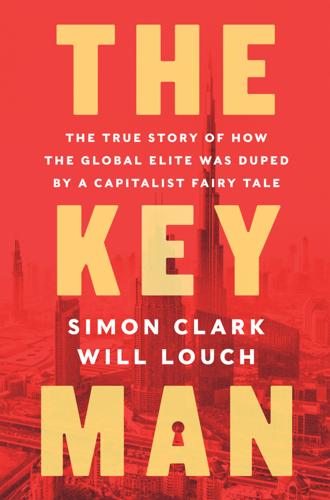
The Key Man: The True Story of How the Global Elite Was Duped by a Capitalist Fairy Tale
by
Simon Clark
and
Will Louch
Published 14 Jul 2021
He told Rafique to pay $300,000 to his oldest son, Ahsan, and the same amount to Ghizlan’s company, the Modist. “Both are broke, need the cash tomorrow,” Arif said. Arif then reassured Rafique that everything was going to be fine. He told him that Deutsche Bank was approving a $120 million loan. He said that SoftBank, a giant Japanese investment company, was interested in buying a large stake in Abraaj. More money was coming from the sale of properties in Istanbul, Sharm El Sheikh, and Dubai. Inshallah—God willing—Arif said. Pakistan’s prime minister was totally focused on ending their nightmare situation, Arif told Rafique.
…
K., 45–46, 203 Presidential Summit on Entrepreneurship, 74–76, 78, 81 PricewaterhouseCoopers, 93, 262, 263, 294 Pritzker, Penny, 263–64 Pritzker family, 87 private equity Abraaj Group as model of, 35, 39, 43, 139–40, 143, 192, 199 emerging markets and, 92–93 executive compensation and, 112 “first close” and, 178 industry rules of, 151, 293 investment firms involved in leveraged buyouts, 22–23 Arif Naqvi on, 106, 135, 147, 149, 193, 218–19 positive social change and, 69 reputation of, 23 secrecy surrounding deals, 126, 293 Project Dido, 192 Project Uzima, 170 Proparco, 182, 226–27, 232 Public Institution for Social Security (Kuwaiti government pension fund), 35, 195, 225, 260 Qatar, 159 Raasta (superyacht), 3, 144–45, 242 Rajaan, Fahad al-, 35 Rajaratnam, Raj, 95, 110 Ramamurthy, Pradeep, 81 Rania (queen of Jordan), 35, 78, 137 Rasmala Partners, 27–29, 31–34, 47, 51, 187 Ratanasuwan, Burachat, 138 Rawalpindi, Pakistan, 58–59 Razak, Najib, 110, 255 Reuters, 244 Riyada Ventures, 73, 78, 79 Roberts, George, 23 Rockefeller, John D., 41, 85–86, 89, 101 Rockefeller Foundation, 85–88, 91 Rostand, Tom, 226–27 Rottenberg, Linda, 100 Royal Philips Electronics, 172, 178, 180 Rubenstein, David, 23, 208 Rudd, Amber, 239 Rudd, Roland, 239 Sacks, Michael, 264 Saham Finances, 159, 160, 162, 188, 192 Saraf, Shirish Abraaj Group and, 34–38, 50–51, 53, 59, 60 EFG Hermes deal and, 49, 50 encounter with angry mob, 47 Memo Express and, 23, 38 Arif Naqvi’s Aramex deal and, 27–29, 31, 34 Arif Naqvi’s friendship with, 23–24, 32–33, 36, 50, 51 success of, 283 Sarmaya, 268 Saudi Arabia, 16–17, 27, 59, 74, 209 Sawiris, Naguib, 79–80, 83 Sawiris, Nassef, 53 Sawiris family, 48, 53, 80 Schechman, Paul, 281 Schmidheiny, Thomas, 104, 229, 263, 289 Schmitt, Georg, 180 Schwab, Klaus, 44, 78, 199, 291 Schwarzman, Stephen, 23, 27 Sender, Henny, 208–9 September 11, 2001 attacks, 4, 26, 71, 108, 216, 271 Sewing, Christian, 236 Shafi, Meesha, 190 Shah, Raj, 75 Shakespeare, William, 10, 24, 36, 134 Shanghai Electric, 186–88, 267, 269–70 Shankar, Viswanathan, 137 Sharif, Nawaz, 6, 152–54, 186–87, 190–91, 194, 209, 254, 265 Sharif, Shehbaz, 152, 153, 154, 186, 254 Shihabi, Ali, 27–29, 31–34, 37, 47–48, 51, 187–88, 274, 291 Shinawatra, Thaksin, 51 Shred It, 267 Shroff, Firoz, 15–16 Siberell, Justin, 64–65 Sicre, Fred, 45 Siddique, Waqar (brother-in-law of Arif Naqvi) accounting at Abraaj and, 54, 158, 159, 162, 185, 246 Bisher Barazi and, 245, 246 Andrew Farnum and, 228 indictment of, 281 loyalty to Arif Naqvi, 106 Arif Naqvi’s cash payments to, 286 relationship to Arif Naqvi, 211, 246 risk management at Abraaj and, 50 on valuations, 210 Siemens, 59 Silverline, 152, 159, 195, 279, 285 Simkins, 260–61 Sisi, Abdel Fattah el-, 128 Skoll, Jeff, 87, 88, 129–36, 292, 294 Slaughter, Anne-Marie, 81 social entrepreneurship, 87, 129–36 Société Générale, 244, 285–86 SoftBank, 194 Soros, George, 87 Sorrell, Martin, 132 South Africa, 174 Southern District of New York, 270 Speechley, Tom, 73, 94, 96, 128, 224–25 Spicher, Edouard, 124–26 Standard Bank, 225–26 Standard Chartered, 137, 285 Stefanel, Matteo, 109, 119 Stengel, Richard, 98 Stock, Jürgen, 142 Sunderland, Julie, 172, 178–79, 217 Supperstone, Michael, 279–81 sustainable-development goals (SDGs), 149 Suzman, Mark, 180 Sweden, 96, 98 Swiss government, 98 Syria, 82–83 Tabaza, Khaldoon, 73, 78–80 Takenova, Ermina, 138 Taliban, 59, 153 Taylor, Elizabeth, 283 Teacher Retirement System of Texas, 288 Teachers’ Retirement System of Louisiana, 213 TED talks, 92 Temasek, 179 Teshkeel Media Group, 79 Texas Retirement System, 213 Thatcher, Margaret, 14 Thomson Medical, 179 Thorne, David, 200 Time magazine, 98 TPG, 143, 179, 211, 216, 218, 263, 294 Trump, Donald, 197, 200–202, 231, 261, 288 Tunisia, 82–83, 192 Tunisie Telecom, 192 Turkey, 45, 55, 74, 117–22, 126, 195, 210 Turkson, Peter, 89–90 Turner, Tina, 42, 248 UBS, 285 U.K. government Abraaj Growth Markets Health Fund and, 4, 182, 229, 265 as Abraaj investor, 3, 291 development finance institutions of, 98 Arif Naqvi’s association with, 116 National Health Service of, 166, 168, 177 Umar, Asad, 268 United Arab Emirates (UAE).
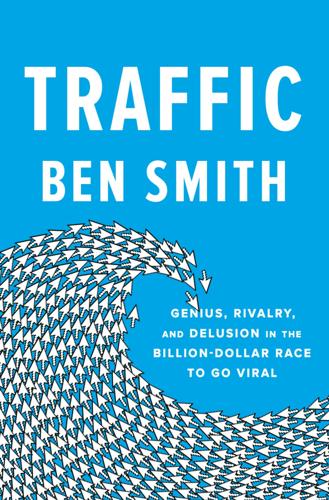
Traffic: Genius, Rivalry, and Delusion in the Billion-Dollar Race to Go Viral
by
Ben Smith
Published 2 May 2023
He’d threatened to leave The Huffington Post earlier in 2008, having gotten close to a deal with the venture capital fund at the center of the New York boom, Union Square Ventures, which had proposed to invest in BuzzFeed on the condition that Jonah move over full time. Kenny had reeled him back in by raising another $2.4 million of funding to his and John’s investments, bringing in new money from SoftBank and Hearst. The investment round valued BuzzFeed at $6.4 million—not bad for a weird little website with no revenue—and included the condition that Jonah still split his time. Still, the status quo made less and less sense. Jonah was feeding the best insights of BuzzFeed to The Huffington Post, a few blocks uptown, because the latter had the staff to automate them.
…
See also Egan, Tracie “small-world” experiment, 25–26 Smith, Ben, 196 Smurl, Paul, 224–25 Snapchat, 267 social media and author’s background, 247 and BuzzFeed’s traffic sources, 151, 153–54, 267, 269–70 and growth of right-wing social media, 186–88 and Jezebel’s style and content, 93, 95–96, 100–101 and LilyBoo, 173 “meaningful social engagement” metric, 272–75, 284 and political organization, 109–15 and rise in internet traffic, 8–9 and shape of today’s internet media, 303 social engagement on, 183–84, 204–5, 209–12, 253 See also specific platforms SoftBank, 122 Sorkin, Aaron, 33 South by Southwest (SXSW), 11–12 South Korea, 151 space.com, 17 SPACs (special purpose acquisition companies), 300–303 spam, 73, 153, 183, 192, 205, 292 Spears, Britney, 90, 154 Spencer, Richard, 294 Spiers, Elizabeth, 19–21, 46, 213 Sploid, 69 sports media, 140 Springsteen, Bruce, 28 Spy magazine, 23, 45, 57 Stanford University, 5–6, 85–86, 106 Stanley, Morgan, 119 Stanton, John, 188, 194, 281 Steele, Christopher, 247–49 Steele, Lockhart, 19, 55–56, 69, 77, 89, 232 Steele Dossier, 246–59, 260 Steinberg, Jon, 129, 130, 152, 155, 167, 197–99 Sterger, Jenn, 142 Stewart, Dodai, 91, 93–95, 298 Stewart, Jon, 152 “stickiness” of websites, 45, 51 Stopera, Dave, 192 Stopera, Matt, 151, 154–55, 167, 173, 192–93, 209 Stoppard, Tom, 301 Stoppelman, Jeremy, 66 Stranahan, Lee, 135–36 Strzok, Peter, 257, 259 StumbleUpon, 153 suck.com, 29 suicides, 86 Sulzberger, A.
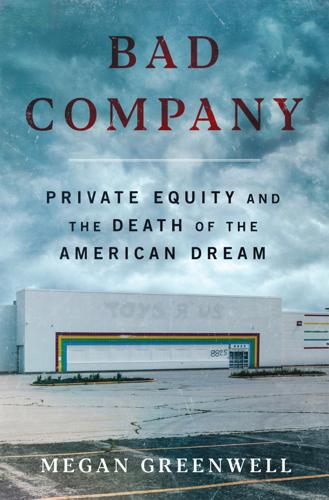
Bad Company
by
Megan Greenwell
Published 18 Apr 2025
In retrospect, the furor over Alden’s bid for Gannett had the unfortunate effect of allowing GateHouse Media—the original private equity newspaper owner—to fly under the radar, despite relying on many of the same predatory tactics and at times cutting even more deeply than Alden. GateHouse Media was by then the largest newspaper owner in the country by number of publications, which made Fortress Investment Group at least arguably the most powerful company in American media. (In 2017, Fortress was purchased by the Japanese tech investment firm SoftBank, though it continued to operate independently.) Just like Alden’s Digital First Media, Fortress’s GateHouse had laid off swaths of journalists and shuttered entire newspapers—in fact, GateHouse closed more newspapers between 2013 and 2018 than any other company, Alden included. Yet when GateHouse came calling about a potential acquisition, neither the Gannett board nor the general public reacted with outrage.
…
Clair and, 190 Gose, Roger and, 112–114 LifePoint and, 114 private equity/leaders and, 113, 114 Riverton Medical District (name change), 182 Watkins and, 112–113 scarcity mentality vs. abundance mentality, 186, 187 Schlademan, Daniel, 166 Schumer, Chuck, 144 Schwarzman, Stephen, xiii, 71, 161–162, 170 ScionHealth, 111, 193–194 Scott, Rick, 36 Sears, Roebuck & Company, 6, 12 SEC “Risk Alert,” 63 SEC (Securities and Exchange Commission), 36, 53, 61, 63, 85, 88, 93, 98, 169, 207 Seeding Sovereignty, 178–179 Selena, 42 Sephora, 91 September 11 terrorist attacks/effects, 15 Serota, Kenneth, 122–1123 Service Employees International Union, 222 7 Habits of Highly Effective People, The (Covey), 186 shareholder theory, xv, xxi, 34, 200, 235 Sheen, Charlie, 80 Shell, Eric description/character, 186–187 Riverton new hospital and, 186–189, 191, 195 Shemesh, Avi, 61, 62 See also CIM Group Shorthorn (University of Texas), 49–50 Shoshone, Eastern, 28, 108, 109, 189–190, 192–193, 194–195 Signal Corps, 7 Sinek, Simon, 186 Sinema, Kyrsten, 144, 178 Smith, Addam, 226–227 Smith, Gary, 27 Smith, Randall, 128 socialism, xv, xxi, 24 Social Transformation of American Medicine, The (Starr), 23, 32 SoftBank, 130 Southern Towers description, 138 location, 75, 138 online reviews, 139 residents, 138 Southern Towers/CIM Group African Communities Together and, 140–141, 143, 145, 146, 149, 152, 153, 217, 218, 219, 222, 224, 228, 230, 231 blaming Bell Partners, 143, 144, 150, 218 buying from Bell Partners, 139 cosmetic upgrades and, 146–147 Covid and, 139–140, 145 elected officials/complaints, 139, 143–144 evictions and, 139, 140–141 flooding and, 147–153 Freddie Mac loan and, 72, 141, 224 on mold problem, 143 politician involvement, 139, 143–144, 218–219 problems overview, 139, 144–145, 147, 152, 222–223 profit/cutting costs and, 141, 145 rent hikes, 139 rent strike, 140, 217, 221 water/trash/parking costs, 145–146 Southern Towers/DePina-Jackson family apartment description, 138, 141–142 apartment problems, 142–143 assistant property manager incident, 156–157 flooding/handling, 147–153, 216 housekeeping and, 142 Jaxon/Cameron and, 139, 153, 154 Loren’s continuing fight/goal, 216–218, 219–220, 221–222, 226, 228–229, 230–232, 236 management availability, 142 mold, 142–143 move/lease-signing, 138 notices/lease termination, 154–157, 225 rent amount, 138 selecting, 60–61, 75 Sports Illustrated, 44 Staples, 15 Starr, Paul, 23, 32 Stavros, Pete, 169, 170, 175 Steward Health Care bankruptcy, 233–235 malfeasance, 233–235 Stockbridge Capital, 71 Stop Wall Street Looting Act, 176–177 Stroudwater Associates descriptions/reputation, 184, 192 health care philosophy, 186–188 Shell and, 186–189, 191, 195 study/cost, 184, 185, 188–191, 192 StuyTown, 229 Swift, Taylor/albums, xiii Target, 89, 91 Taylor, Nate, 172 Teel’ Tlein, 9 Tegna Inc., 55 Tennessean, 33 Texas Tribune, 200, 204, 205, 210–211, 214 This American Life, 215 Thomas, Jerry, 150, 151–152 Thompson, Sandra, 224, 225 Thornton, John, 200, 205–206, 210–211 Time, 44 Time magazine, 12, 55 Tiny Desk Concert, 120 Tlingit people boarding schools, 10 discrimination against, 9–10 Marin, Liz and, 9, 179 Northwest Trading Company/accident, 9 United States conflict, 9 Toys R Us Amazon and, 15–16, 88, 89, 91, 92 Babies R Us, 18–19, 87, 87–88, 88, 89, 92, 93–94, 95, 96–97 e-commerce and, 15, 89, 91 Eyler’s actions/changes and, 14–15, 91–92 real estate, 85–86 retail significance of, 6 Time Square location/rent, 15, 92 Walmart and, 14, 16, 88, 89 See also Lazurus, Charles/Toys R Us; Marin, Liz/Toys R Us Toys R Us/Bain Capital, KKR, Vornado ownership appearances/myth, 79, 86–87 costs to equity firms, 84 debt and, 85, 93, 175 debt-equity ratio, 85 decline, 14–17, 86–87, 88–89, 92, 92–93, 93, 94, 95–96 Disney World trip and, 94 e-commerce and, 90 equity firms money made, 98–99 firms vying for, 16–17 money source/acquisition, 85 money sources, 79, 85 real estate, 17, 86, 87 risk and, 85, 86–87, 98–99 sale-leaseback agreement, 86 staff cuts/shortages, 88–89 as target for private equity, 89–90 Toysrus.com, 15 Toys R Us demise activism against private equity firms, 163–164, 167–169, 171–173 bankruptcy and, 94, 95, 97–98, 99 bonuses and, 98 employees/severance pay and, 97–98, 99, 100, 161, 163–164, 166–167, 167, 171, 172, 173, 222 going out of business, 96–97 media on, ix, 168 Stop Wall Street Looting Act and, 176–177 Tribune Company, 55 Tribune Media, 63 Tribune Publishing Company, 210 Trump campaign/as President, xiii, 38, 184, 198, 225, 236 Trump family/real estate, 64 Trump Organization, 168 Trump supporters’ views, 209, 214 Twitter, 48 2-and-20 structure, xx, 69, 80 United Nations, 45, 71 unions retail and, 165–166 See also American Newspaper Guild; specific unions United Food and Commercial Workers International Union (UFCW), 166 United for Respect, 174–175 University of California, 38, 103, 213, 222 University of Chicago, 115 University of Pennsylvania (College of Philadelphia), 23 University of Phoenix, xiii USA Today, 123 USDA and new Riverton hospital, 192, 193–194 U.S.
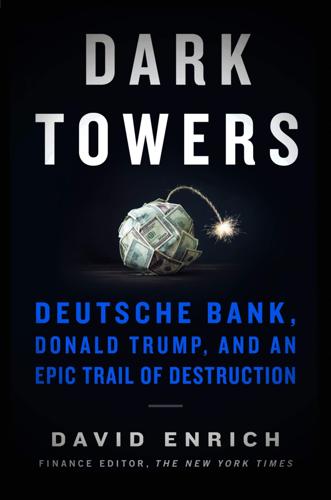
Dark Towers: Deutsche Bank, Donald Trump, and an Epic Trail of Destruction
by
David Enrich
Published 18 Feb 2020
“Indian ‘bond junkie’ ” : The Economist, “A Giant Hedge Fund,” August 26, 2004. Misra’s industry awards : Nicholas Dunbar, The Devil’s Derivatives: The Untold Story of the Slick Traders and Hapless Regulators Who Almost Blew Up Wall Street . . . and Are Ready to Do It Again, 2011, 100. Removing smoke detectors : Tom Braithwaite, “SoftBank’s $100bn Vision Fund Needs Wall St Trader to Come Good,” Financial Times, August 25, 2017. “Mr. Basis Point”: Suzi Ring, Gavin Finch, and Franz Wild, “From a $126 Million Bonus to Jail,” Bloomberg News, March 19, 2018. Leverage ratios : Adam Tooze, Crashed: How a Decade of Financial Crises Changed the World, 2018, 88.
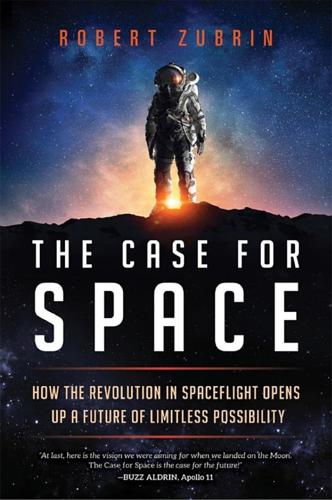
The Case for Space: How the Revolution in Spaceflight Opens Up a Future of Limitless Possibility
by
Robert Zubrin
Published 30 Apr 2019
By comparison, the total number of satellites currently orbiting the Earth is about 1,500. But the plan only got bigger. By February 2017, OneWeb announced that it had already sold out the capacity of its 648 satellites—before a single one had been launched or even built. So, raising another billion dollars from the SoftBank Group, the company expanded its planned constellation to 2,420 satellites.7 Shortly thereafter, Samsung proclaimed it had plans for a Space Internet altitude constellation consisting of 4,600 satellites, orbiting at 1,557 kilometers altitude.8 Not to be outdone, in May 2017, Elon Musk announced that his SpaceX company would be fielding its own constellation, named Starlink, consisting of 4,425 small satellites orbiting at 1,200 kilometers, operating in eighty-three orbital planes.
…
See also nanotechnology SETI, 256–57, 258 SFS (Small Falcon Spaceship), 111–12 Shackleton Crater (on the moon), 76 Shakespeare, William, 22, 34 SHARAD ground-penetrating radar, 14, 106 Shelley, Percy B., 334 Shergotty (SNC meteorite), 343 Sieck, Paul, 180 silicon, 72, 82–83, 149, 171, 232, 285, 303–304 single-stage rocket systems, 40–41, 45, 344 payloads for one and two stage reusable rockets, 42 skyhook, 93–97, 115–17 Skylab space station, 118, 132 Slough, John, 179 SLS rocket (NASA), 36, 77, 132, 134, 157 Smallest Possible Affordable Robust Compact (SPARC), 177 Small Falcon Spaceship (SFS), 111–12 Smolin, Lee, 262, 263 SNC meteorites, 119–20, 343 Snyder, Timothy, 308 Socrates, 312 SoftBank Group, 53 Sojourner (Mars lander), 105 solar energy, 31, 34, 57, 73, 76, 159, 265, 304 limited availability in outer solar system, 167, 173–74 sending from moon back to earth, 82–83, 90 solar power satellites, 34, 57–60 use of on Mars, 111 solar flare, 101, 343 solar light pressure at 1 AU, 200 solar sails, plate 13, 116, 196–98, 221, 234, 235, 258, 344 use of as reflectors to increase solar flux, 222–23 use of to amplify brightness of stars, 237–38 See also IKAROS solar sail spacecraft; light sails solar wind, 73, 74, 87, 88 solar-wind pushed magsail, 203, 204 Soyuz (Russian space launch system), 36 space activism, how to achieve, 327–31 what individuals can do, 331–34 space business parks, 50–51 Space Exploration Initiative, 105 spaceflights/space travel commercial benefits of communications and data satellites, 51–56 developing commercial energy system in space, 57–60 fast global travel on Earth, 40–43 going beyond Earth orbit, 66–68 orbital industries, 48–50 orbital research labs, 47–48, 50 space business parks, 50–51 space tourism, 45–47 fundamentals of rocketry, 43–45 change of mass ratio and payload of a rocket, 44 health effects of long-duration spaceflight, 133–35 military uses and deterring a war, 60–66 outer solar system need for advanced second or third generation systems to settle, 173–74 statistics on getting to and back from, 162 program of action to achieve, 328–31 what individuals can do, 331–34 reasons for pursuing for the challenges, 271–86 for the future we can create, 315–25 to gain more freedom, 301–25 for the knowledge gained, 249–69 need for a frontier and challenges, 272–74, 275–84 for survival of humanity, 287–99 spin-offs from space program, 284–86 STEM graduates in US (1960–1990), 285–86, 285 See also interstellar travel Space Frontier Foundation, 332–33 Space Internet, 53 space launches comparison of space launch systems, 36 costs of, 89–90 consequences of cheap space launches, 24–28 for developing solar power satellite systems, 57–58 getting to a $200 per kilogram cost, 27–28 importance of a two-stage system to reduce costs, 39–45 lower costs allowing for orbital industries, 49–50 See also commercial benefits of spaceflight Elon Musk and development of SpaceX, 30–37 impact of cost-plus contracts, 22–24, 330–31 need for reusable spacecraft, 21–23 rise of microlaunchers, 37–38 skyhook as alternate means of Earth-to-orbit transit, 93–94 See also propellants and propulsion space power, use of and deterring a war, 60–66 Space Resources (Lewis), 136 Spaceship One, 29 space superiority vs. space supremacy, 62–63 space tourism, 45–47 SpaceX, plate 6, plate 7, 12, 19–21, 21, 27–28, 53, 77, 84, 175, 211, 328 development of SpaceX, 30–37 heavy-lift rockets, 107 Interplanetary Transport System plan, plate 7, 107–10 Mini BFR, 110–12, 339 See also Starship (rocket) (SpaceX) planned 2023 artists’ cruise around, plate 9 sending Tesla Roadster past Mars, 11 size of, 39–40 Starlink satellites, 53 and two-stage systems, 41, 45 See also Falcon (rocket) (SpaceX); Musk, Elon SPARC (Smallest Possible Affordable Robust Compact) fusion reactor, 177 specific impulse (Isp), 45, 143, 160–61, 163, 193–94, 296, 297, 341, 344 spherical tokamak (ST), 175–76, 176, 180 “spheromak,” 180 spin-offs from space program, 284–86 STEM graduates in US (1960–1990), 285–86, 285 Spire Lemur-2 CubeSats, plate 4 Spirit rover (NASA), 106 SPS (solar power satellites), 34, 57–60 Sridhar, K.

The Optimist: Sam Altman, OpenAI, and the Race to Invent the Future
by
Keach Hagey
Published 19 May 2025
This particular year, despite a healthy economy and the usual splendid weather, the conference was permeated by a sense of dread, as the big players in media seemed increasingly desperate to sell themselves off to some tech company or another before the profits fully leaked out of their business, thanks to competition from the likes of Netflix. As if to troll the legacy types, SoftBank founder Masayoshi Son arrived and declared to reporters, “I’m not interested in traditional media.”20 Apple’s Tim Cook and Facebook’s Sheryl Sandberg echoed his sentiments the following day. Jeff Bezos, not yet divorced but in the midst of making himself over, strutted between boutique pop-up shops, his muscles bulging improbably.
…
Kraemer, 26 Sikka, Vishal, 197, 236 Silicon Valley (TV show), 101, 258–59 Silicon Valley, 2–8, 72–73, 258 “add a zero” ethos of, 3–4, 272 Bay 101 cardroom, San Jose, 57 belief we are living in a computer simulation, 17 economy of favor-trading, 14 incestuousness of, 82 University of California, Berkeley, 94, 111, 122–23, 167, 178, 194, 234, 277, 305 value system of, 2–3 “working on the weekends,” 175 zeitgeist of, 4, 6, 137–38 see also Palo Alto, CA; Stanford University; tech bros; tech industry Simon, Mel, 209 Sims, The (video game), 97 Singer, Peter, 211–12 singularity, 140–42, 144–45, 168, 199–200, 305 Singularity Institute for Artificial Intelligence, 142 Singularity Is Near, The (Kurzweil), 144 Singularity Summits, 144, 146, 210 Singularity University, an “educational community,” 210 Sivo, Nick, 55–56, 60, 64, 85, 89, 91–92, 102–3, 113–14, 128 Skrenta, Rich, 244 “Sky,” an AI voice, 307–8 Skype, 5, 144, 168 Slack channels, 245–46, 287, 293–94 Slashdot (news site), 63 Slate Star Codex (blog), 165–66, 213 Slee, Mark, 96 Slowe, Chris, 76, 81 slum clearance, 26, 34 Smashwords writing platform, 220 Smith, Barbara Ann (Barbie), 52 Smith, Dylan, 96, 289 social contract visionary, 195 social networking, 16, 59, 103, 113, see also specific social network sites Socrates, 265 Sodol, Lee, 192, 216 SoftBank, 229 software development “agile” method of, 127 application programming interfaces (APIs), 125, 245–48, 250–51, 264–65, 269, 279 Brockman’s “code caves,” 175–76, 246–47 hackers/hacking, 3, 57, 63, 68–70, 160n, 162 Lisp programming language, 63, 69, 124, 151 object-oriented programming, 195 open-source technologies, 95, 186, 214, 247, 263 SDKs (software development kits), 110–14, 121 “waterfall” method of, 126 whiteboards, 189–90 Sonsini, Larry, 85 Sony Entertainment, 303 Sony Ericsson phones, 77 SourceCom, 86–87 South by Southwest (SXSW), 118–19 South Carolina, 297 South Korea, 274 Southern District of New York, 290 Southern Pacific Railroad Internal Networking Telephony, see Sprint Soylent meal replacement, 138 space, colonization of, 144, 147, 170–71 SpaceX, 147, 153, 167, 170–71, 187, 194 SPARK Neuro AI dementia detection startup, 275 Springer, Axel, 307 Sprint, 53, 58–59, 62, 78–80, 99–105 St.
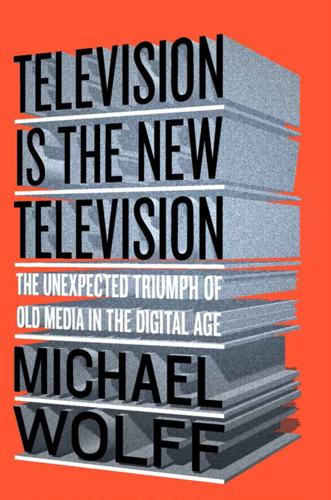
Television Is the New Television: The Unexpected Triumph of Old Media in the Digital Age
by
Michael Wolff
Published 22 Jun 2015
And yet, given that each of the sites did continue to have the wherewithal to generate traffic, with its inherent commodity value, they continued to live, albeit embarrassingly and, arguably, uselessly. A decade ago, Yahoo made a series of outside investments, of low-level value and interest at the time, in the Chinese e-commerce start-up Alibaba, and in Yahoo Japan (a separately traded public company created through a joint venture with Japanese tech giant SoftBank). Alibaba, a site that generates most of its revenue from selling things, not advertising, had a growing value that, by 2011, had come to pretty much equal Yahoo’s share price. That is, Yahoo the site had no value (or even negative value). At some point, too, Yahoo and the other traffic portals came in this sense of pointlessness to resemble media companies at their most hyperbolic worst—television at its emptiest—turning into parodies of hierarchical corporate pass-the-buck protect-your-ass bureaucracies.
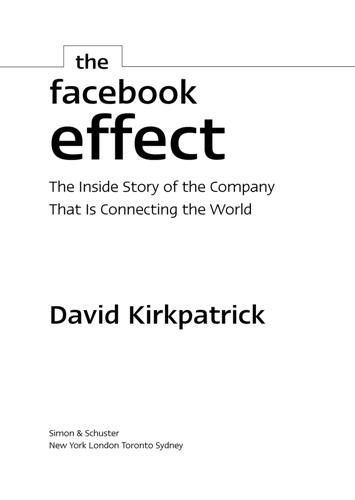
The Facebook Effect
by
David Kirkpatrick
Published 19 Nov 2010
The hapless Friendster, essentially ignored in the United States, was until recently Facebook’s big obstacle in Southeast Asia, where 90 percent of Friendster’s 105 million users were located as of mid-2009. But by late 2009 Facebook had trounced it there and was the number-one website of any type in Indonesia, Malaysia, and the Philippines, Friendster’s three biggest countries. China’s largest domestic Facebook clone, Xiaonei (the name means “in the school”), got a big boost in 2008 when Japan’s Softbank Venture Capital invested $430 million in its parent company. It then renamed itself Renren, meaning “everyone,” to broaden its appeal. Meanwhile, since June 4, 2009, the twentieth anniversary of the Tiananmen Square massacre, Facebook has been completely blocked in China by the government. Part of Facebook’s arsenal against Renren (and Friendster) is Facebook’s close partnership with Hong Kong billionaire Li Ka-shing.
…
, 232 Rojas, Clara, 1–2 Rojas, Emmanuel, 1–2 Romania, 16 Rose, Dan, 178, 239, 244, 250–51, 257, 260, 262, 329 Rosensweig, Dan, 161, 182–83, 186, 252 Rotenberg, Marc, 201, 208–9, 233 Roth, Michael, 177 Rothenberg, Randall, 264 Rothschild, Jeff, 130, 132–33, 137–138, 146, 147, 156, 322 RSS (Really Simple Syndication), 194 Russell, Bertrand, 49 Russia, 276, 282 Ryze, 70, 73 Salesforce.com, 220, 301 Samwer brothers, 246, 256 Sandberg, Sheryl, 207–8, 210, 266, 272, 273, 307, 318, 327 ad meetings run by, 256–60, 270 Facebook’s hiring of, 251–54 on rating systems, 255 Sanghvi, Ruchi, 132, 137, 189, 191 Sapient, 69 Saudi Arabia, 279, 291, 295 “Save Darfur,” 192 Saverin, Eduardo, 42, 43, 44, 45, 47, 52, 64, 129, 320 ads managed by, 37–38, 42, 60, 61–62, 103 in disputes with Facebook team, 59–63, 64, 65, 89, 126 Facebook incorporated by, 41, 62 Facebook ownership of, 62, 126, 322 at Frisson party, 103 investments by, 30, 38, 42, 60 Sawyers, John, 205 Schlender, Brent, 206 Schlesinger, David, 300 Schmidt, Eric, 238, 326, 327 Schoen, Kent, 257 Schrage, Elliot, 327 Schultink, Erik, 46 Scient, 69 Scott, Adrian, 70, 73 Scrabble, 228, 229 Scrabulous, 228–29 Sears, 67, 272 Secret Intelligence Service, 205 Semel, Terry, 169, 182, 183, 186, 195–96, 252 Sequoia Capital, 104–5 Serena Software, 299, 300 Series C, 170, 236, 245 Series D, 245, 246 Seward, Zachary, 295 Singapore, 275 Sittig, Aaron, 56, 110, 144–45, 154, 155, 315 sixdegrees.com, 67–69, 70, 71, 73–74, 76, 85, 87, 228 “Six Degrees of Harry Lewis,” 26 Skittles, 272 Smile State, 176 Smith, Adam, 78 Smith, Adam (economist), 223 Smith, Justin, 232, 262 Smith, Megan, 239 Smith, Peter, 268 SMS (short messages), 50 Social Gaming Network, 230 social graph, 157, 217 Socializr, 71 SocialNet, 72 social networking, 46–47, 66–68, 70, 79–80, 85, 325 Accel’s investments in, 115 patent for, 47, 69, 73–74, 87, 228 as social production, 265 see also specific sites Softbank Venture Capital, 282 software, 216, 217 Sony, 265 Sony Pictures, 300 South Africa, 290, 291 South Florida Sun-Sentinel, 289 Southwestern University, 101 Spain, 16, 274, 276, 278, 282, 283 spam, 231 Spoke, 46 SpongeBob SquarePants Movie, The, 102 Sprite, 177 Sri Lanka, 286 Stanford Daily, 35, 55, 103 Stanford University, 35, 36, 37, 46, 54–55, 77–78, 116 Starbucks, 272 status updates, 12, 30, 325–26 Stealing MySpace (Angwin), 74, 76, 153 Stefani, Gwen, 141, 175, 247 Stellenbosch, South Africa, 290 Sternberg, Seth, 110 Stiller, Ben, 57 Stone Yamashita, 224 “Students Against Facebook news feed,” 189–90, 192, 214 studiVZ, 171 Summers, Lawrence, 90, 253, 307 Summers, Nick, 92 “surround strategy,” 101 Survivors of the Purple Tunnel of Doom, 294 Swann, Kimberley, 211 Symantec security, 213 Synapse, 25, 26, 37, 98 Sze, David, 319 Taiwan, 16, 283 Tapscott, Don, 265 Taylor, Robert W., 66 TechCrunch, 226, 304, 306 TechDirt blog, 245 Tegic, 187 Tequila, Tila, 76 terms of service, 201, 307–10, 324 terrorism, 290–91 Texas, University of, at Arlington, 101 Texas A&M, 101 Texas HoldEm Poker, 228, 233 Thailand, 16 Thefacebook.com, see Facebook TheGlobe.com, 67 Thiel, Peter, 98, 125, 147, 148, 151, 169, 184, 236, 246, 326, 328–29 Facebook investment and ownership of, 9–10, 87–90, 94, 95, 96, 112, 113, 170, 321, 322 Frisson opened by, 103 growth emphasized by, 271 open registration and, 196 PayPal founded by, 9, 87–88 Thompson, Clive, 204 Thomson Reuters, 300 Tiananmen Square, 282 Tickle, 72, 115 Time Inc., 187, 209 Time Warner, 164, 187 Tim Hortons, 263–64 Tipping Point, The (Gladwell), 103 Tocqueville, Alexis de, 223 Top Gun, 57, 98 “trance,” 93 Tribe.net, 46–47, 72, 73, 75, 107, 228 Tripod, 67 Trounson, Rebecca, 110 Troy, 97 TRUSTe, 209 Turkey, 16, 276, 281, 290–91 TweetDeck, 305, 315 Twitter, 6, 8, 203, 289, 294, 296, 297, 304–5, 310, 311–12, 317, 326, 329, 333 Understanding Media: The Extension of Man (McLuhan), 332 “unfriend,” 334 Unilever, 272 United Arab Emirates, 279 United Kingdom, 16, 275, 291 Universal Face Book, 79 Uribe, Alvaro, 1–2, 5 Usenet, 66 UUnet, 114 Van Natta, Owen, 161, 164, 168, 170, 178–79, 182, 238, 239, 251, 322 in departure from Facebook, 268 investors and, 236 in meeting with Microsoft, 240–241, 242, 243, 244 at MySpace, 268, 281 open registration and, 196 on platform strategy, 217–18 Yahoo’s negotiations with, 183, 184, 186 VentureBeat blog, 166 venture capitalists, 41, 46, 48, 53, 70, 87–88, 95–96, 104–5, 109, 112, 113–27, 170, 229, 236, 245, 246 Venuto, Steve, 88, 99, 146, 147 Veritas, 114, 130 Viacom, 113, 125, 159–60, 162, 164, 166–71, 178, 179, 182, 186 Victoria’s Secret, 141 Vietnam, 16 Vigil, Hank, 242 Virgil, 138 virtual community, 67 Visa, 264 Visual Bookshelf, 231 Vitamin Water, 264–65 VKontakte, 284–85 Vogelstein, Fred, 325 wall, 3, 93, 206, 288, 303, 310 Wall Street Journal, 245 Wal-Mart, 115, 176 Warhol, Andy, 206 Warner Bros.

Super Continent: The Logic of Eurasian Integration
by
Kent E. Calder
Published 28 Apr 2019
Huawei has focused single-mindedly in its business strategy on building transcontinental mobile telephony relations with Europe.47 Indeed, over 35 percent of its total sales in 2017 were in Europe, representing three-quarters of its international total, with a special concentration in East and Central Europe, where it outsells Apple.48 Huawei operates large research centers in Sweden and Russia, and an innovation center for supercomputing in Poland.49 In total, it has over 10,000 employees in Europe, including 1,570 across its eighteen R&D centers there, and plays a central role in the increasingly important “Digital Silk Road” across the continent.50 These European research ties helped make Huawei the second-largest filer of patent applications in the world during 2016.51 Since 2009 it has placed special emphasis in its European research on advanced 5G technology, where together with Qualcomm, Nokia, and Ericsson it is one of the world leaders.52 It also collaborates closely with the Europeans in setting telecommunications equipment standards, complicating the task of US majors through such trans-Eurasian collaboration.53 Alibaba, a third variety of national champion, was founded in 1999 by Jack Ma, a former English teacher with extraordinary vision and drive.54 From the start, it had significant foreign support, particularly through investment by Goldman Sachs and Softbank.55 The Chinese government indirectly supported it in its early struggle with eBay, which supported its payments system, while at times placing obstacles in the way of eBay’s alternative. This state backing apparently represented, however, more a broad government policy of limiting foreign access to the financial sector rather than targeted support for Alibaba.
…
See also Silk Road Economic Belt; Twenty-First-Century Maritime Silk Road Silk Road Economic Belt initiative, 45m, 116, 153, 154, 262n65, 262n66; and Xi Jinping address in Kazakhstan, 44, 152 Silk Road Fund (SRF), 96 –97, 99, 106, 147, 153, 227, 228, 248, 249 Singapore: and China’s emergence, 89, 129, 135, 136, 137, 138, 139, 222; geopolitical importance of, 74, 127; overseas Chinese in, 126, 136; and the United States, 244, 245 Singapore–Kunming Rail Link (SKRL), 130 –133, 131m, 139 Singh, Manmohan, 60 Sino–French relationship, 164 Sinosure, 97 Sirisena, Maithripala, 193 Six-Party Talks, 239 16+1 summit-conference series/framework, 4, 13, 15, 21, 99, 179, 180m Slovakia, 92, 172, 201 Snow Dragon (Xue Long), 146 “Socialism in one country,” 4, 50, 51, 54, 56 Softbank, 113 Sogdians, 161 Song dynasty, 123 Son Masayoshi, 84 Sony, 86 South Asian Regional Cooperation Council, 247 South China Sea, 127–128, 129, 130, 156, 158, 245, 247, 287–288n85 Southeast Asia: in broad Eurasian context, 137–138; and China’s domestic transformation, 126 –134, 136 –137; first connectivity experiment in, 122 –139; trade with China, 127.
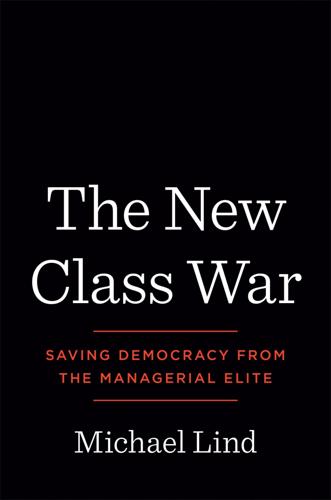
The New Class War: Saving Democracy From the Metropolitan Elite
by
Michael Lind
Published 20 Feb 2020
While many supply chains are now regional or global, the headquarters of the global economy are not only in the triad of North America–Europe–Northeast Asia but also disproportionately in the US, Japan, Germany, and the UK. Of the top ten multinationals by foreign assets in 2016, three were based in the US (Chevron, General Electric, ExxonMobil), two in the UK (the oil companies Royal Dutch Shell and BP), two in Japan (Toyota, SoftBank), and one apiece in Germany (Volkswagen), France (Total), and Belgium (Anheuser-Busch InBev).14 Even when they establish transplant operations in the territories of other developed nations, leading multinational firms, like Toyota, Daimler, and Ford, tend to retain their national identity at the leadership level.
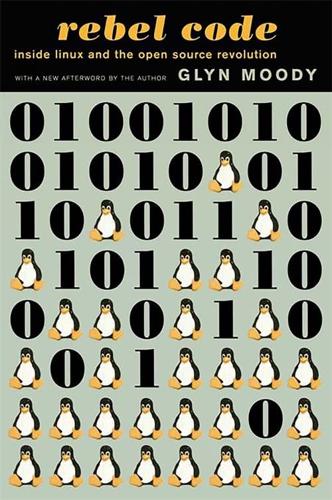
Rebel Code: Linux and the Open Source Revolution
by
Glyn Moody
Published 14 Jul 2002
“I decided that the way to get Linux International launched was to create pavilions, or areas within larger shows” Bolzern says, “where we had a number of small Linux vendors together able to get much more attention than the sum of what any of us could get separately.” Bolzern also organized Birds of a Feather sessions—informal talks—about GNU/Linux at the show. “We ended up having overflow crowds at the Birds of a Feather sessions, which was noticed by Softbank Comdex,” the organizers of the show. This was just what Bolzern wanted, because “as a result,” he recalls, “they went ahead and committed with us for [Comdex] Fall 95 to put together a pavilion of six booths where they contributed the Linux International booth.” This work in the area of increasing awareness about GNU/Linux was crowned later in 1995 when Bolzern’s own distribution Linux Pro was a nominee for Best of Comdex, a major boost given that GNU/Linux was still almost unknown in the wider world of computing at this point, and Comdex was the leading show in the computing calendar.
…
Lycos (Web site) LyX (computer program) MacDonald, Peter Macmillan Publishing Mailing lists, electronic Apache Linux-kernel WWW-Talk Malda, Rob Manchester Computing Centre (MCC) MandrakeSoft (company) Mares, Martin Massachusetts Institute of Technology (MIT) and X license see also Stallman, Richard Mattis, Peter McCool, Robert McNealy, Scott McVoy, Larry Media attention Metzenthen, Bill Mexico Microsoft ActiveX and Kerberos and Mindcraft (company) and Red Hat (company) and ResNova and SMB protocol and Transmeta browsers competition with Red Hat Internet Information Server myths about Linux Office Suite response to Hewlett-Packard support of Linux security success of support for World Wide Web Consortium standards use of Linux by Windows emulators see also Windows Miller, Cliff Miller, Dave Mindcraft (company) Miner, Allen Minix (computer program) and Linux version 0.02 and the Intel 8086 chip competition with Linux complaints about, by Linus Torvalds Mockapetris, Paul Moglen, Eben Molnar, Ingo Monni, Tove Mosaic (computer program) Communications company Netscape browser see also National Center for Supercomputing Applications (NCSA) Motif (computer program) Motorola Mozilla and America Online and distribution of Mozilla and Mozilla Stabilization Schedule party Mozilla Public License (MPL) MS-DOS (operating system) advantages of GNU/Linux over Multiarchitecture support Multiprocessor support Multisoft Murdock, Ian Murphy, Tim Mythical Man-Month, The National Center for Supercomputing Applications (NCSA) see also Mosaic (computer program) Natural languages Navigator (computer program) see Netscape Communications NetBench NetBSD Netscape Communications and Caldera (company) and distribution of Mozilla and IBM and Netscape Public License (NPL) and the Open Directory browser source code Communicator Heresy documents Navigator browser support for World Wide Web Consortium standards Network File System (NFS) Networking and electronic mail and Linux and Windex program New Hacker’s Dictionary, The Newsgroups and development of Linux and Mindcraft (company) and Perl New York Unix NeXT computer Next Generation Layout (NGL) Noorda, Ray Nord, Haavard Novell. 229–231, 232, 249 Ockman, Sam Olson, Greg OpenBSD Open Directory, The OpenProjects (Web site) Open source code see also Source code Open Source Solutions Operation (OSSO) Operating Systems: Design and Implementation Oracle O’Reilly & Associates O’Reilly, Tim Ousterhout, John Pacific HiTech (company) Palmisano, Sam Patch (computer program) Patches Pathworks Pauling, Linus PC Magazine PC Week Penguin mascot PenguinRadio Perens, Bruce Perl (computer program) Peterson, Christine Plattner, Hasso Posix standards Prince of Persia (computer game) Programming as an art form employment Eric Raymond on philosophies profitability of Unix Python (computer program) Qt (computer program) Quarter Century of Unix, A Quasar Technologies Raymond, Eric Red Hat (company) and Compaq Computer Corporation and embedded systems and GNU Network Object Model Environment (GNOME) and Hewlett-Packard (HP) and MandrakeSoft and open source code and proprietary software competition with Microsoft employment of hackers by growth of initial public offering profitability of promotion of GNU/Linux by software marketing by Reisler, Kurt Requests for Comments (RFCs) ResNova (company) Richter, Adam Ritchie, Dennis rn newsreader Roell, Thomas Running Linux Rutgers University Safford, Dave Salus, Peter Salzenberg, Chip Samba (computer program) San Francisco Gate Santa Cruz Operation, The (SCO) SAP (company) Schneier, Bruce SCO (company) Screen Phone, The Scriptics (company) Security, computer Sendmail (computer program) and proprietary software early development of marketing Sequoia Capital Server Message Block (SMB) SGI Shan, Yen-Ping Shareware Shearer, Dan Shields, David Sifry, Dave Silicon Graphics, Inc. Silicon Valley Linux User Group Simputer Sinclair QL microcomputer Sinclair, Sir Clive Slackware Sladkey, Rich Slashdot.org Sm@rt Reseller Softbank Comdex Softlanding Linux System (SLS) Software AG (company) Software, proprietary and business-to-business e-commerce (B2B) and free software and GNU Network Object Model Environment (GNOME) and Red Hat (company) and Sendmail, Inc. and the GNU project hackers and in Japan outside the West Solaris Soundblaster Source code and distribution of Mozilla and Freshmeat (Web site) and Mosaic and Netscape and Open Source Solutions Operation (OSSO) and Red Hat (company) and SAP and SourceForge (website) and VA Linux see also Open source code SourceForge (Web site) SourceXchange Sparks, Bryan Spyglass (company) Stallman, Richard and code-forking and Cygnus and Open Source Definition and profitability of free software and the Artificial Intelligence (AI) Laboratory and the C compiler and the Debian program and the Freeware Summit and the GNU Emacs General Public License and the GNU project and Trolltech (company) and Tcl and Unix coding method of see also Massachusetts Institute of Technology (MIT) Sun Microsystems and Tcl (computer program) use of GNU/Linux by SunOS (operating system) SunScript (company) Sun World SuSE (company) Sustained Development Networking Programme (SDNP) Symbolics Symmetric Multi-Processor (SMP) Systems Development Corporation (SDC) Tanenbaum, Andrew and Linus Torvalds on control of Linux on the Internet Tcl (computer program) TCP/IP and deployment platforms Pathworks program for TECO (Text Editor and Corrector) Texas A&M University TEX (computer program) Thompson, Ken 386BSD Tiemann, Michael Time TiVo Torvalds, Linus Benedict and Andrew Tanenbaum and early PCs and the Commodore Vic–20 microcomputer and the Sinclair QL microcomputer army service college career complaints about Minix early years employment with Transmeta first work on Linux involvement with business activities leadership of Linux master’s thesis media attention to move to United States newsgroup postings by on GNU Network Object Model Environment (GNOME) on K Desktop Environment (KDE) on the Internet on Vger plan for Linux teaching experience Torvalds, Patricia Miranda Transmeta (company) Tribble, Bud Tridgell, Andrew Troan, Erik Trolltech (company) Tsillas, Jim Ts’o, Ted TurboLinux Tweedie, Stephen Tyde, Arthur UItraSparc achitecture Ultrix (operating system) UniForum Unix (operating system) and electronic mail and image manipulation and Novell and Posix standards and Samba (computer program) and X license at University of California at Berkeley development of fragmentation of and problems with newsletters programming Sun Microsystems and version 7 Uytterhoeven, Geert VA Linux and ColdStorage (website) and Intel Itanium chip (IA–64) and OpenProjects (website) and Slashdot.org and SourceForge (website) employment of hackers by see also VA Research Valloppillil, Vinod van Kempen, Fred van Rossum, Guido VA Research see also VA Linux Vaughan-Nichols, Steven J.

Character Limit: How Elon Musk Destroyed Twitter
by
Kate Conger
and
Ryan Mac
Published 17 Sep 2024
Thiel was not a fan of Twitter. “We wanted flying cars, instead we got 140 characters,” Thiel famously once said, mocking Twitter’s original value proposition. His firm passed when approached by Musk’s team. Morgan Stanley also reached out to a diverse group of potential backers including Japanese investment conglomerate SoftBank, former New York City mayor Michael Bloomberg, and Joe Rogan. Even some of Musk’s closest associates couldn’t meaningfully contribute. Kimbal declined to invest. Antonio Gracias, the financier who promised his friend that he’d go “to the fucking mattresses no matter what” for his old friend, did not deploy money from his private equity firm, and only made a personal investment.
…
J., 334 Simpson Thacher & Bartlett, 141, 161 Singapore, 364 Singer, Paul, 49 60 Minutes, 13 Skadden, Arps, Slate, Meagher & Flom, 155–56, 162, 190, 201, 216, 254 Skype, 54 Slack, 80, 114, 128, 165, 171, 194, 200, 231, 272–73, 293, 298, 299, 303–6, 307, 308, 310, 319, 336, 345, 346, 348, 349, 351, 367, 368, 389, 398 Smith, Kiko, 349, 387 Snapchat, 42, 50, 158, 199, 240 Snowden, Edward, 382 social media, 1, 3, 57, 119, 151, 175, 413, 433–34, 436 activist groups and, 294, 392 Bluesky, 87–88, 90–91, 106, 174, 220–21, 413, 433, 435 content moderation on, see content moderation decentralized, 87, 89–90, 221 Facebook, see Facebook global regulations for, 323 Mastodon, 320, 378, 382–83, 433 Nostr, 382, 433 Threads, 413–14, 433 Truth Social, 356, 382–83, 432 verification on, 311 SoftBank, 177 SolarCity, 124, 211 Solomon, Sasha, 347, 348 Sorkin, Andrew Ross, 427–30 Soros, George, 406, 408 South by Southwest, 15 Soviet Union, 37, 184, 193, 364 SpaceX, 1, 23, 24, 31–36, 47, 96, 101, 115, 137, 165, 167, 175, 181, 208, 241, 250, 256, 290, 291, 299, 316, 317, 320, 322–24, 331, 336, 341, 344, 348, 350, 352, 369, 374, 377, 379, 382, 384, 393, 411, 428, 434, 436 acquisitions of, 124 Amos-6 satellite of, 35–36 board of, 115 COVID pandemic and, 63 Musk’s loan from, 253 sexual harassment at, 200–201 Starbase facility of, 78–79 Starlink service of, 102, 103, 244–45, 280, 332, 363, 374, 400 Starship test launch of, 423–25 tunnel project of, 314 Twitter advertising of, 340 Spears, Britney, 290 special purpose vehicles (SPVs), 178 Spiegel, Evan, 199 Spiro, Alex, 27–28, 155, 156, 182, 191, 216, 219, 225, 226, 228–30, 247, 271, 277–79, 283, 293, 298–99, 321–23, 337, 341, 342, 343, 348, 359, 363, 367, 369, 374, 414 sports, 380–81 NBA, 171–72, 380, 403 Super Bowl, 85, 380, 396–97, 407 World Cup, 179, 350, 380–82 Squad, 240 Square, 16, 22, 40, 42, 44, 49, 51, 52, 55, 233 Srinivasan, Balaji, 382 SR-71 Blackbird, 364 Stanley, Christopher, 344–45, 354 Starbucks, 314 Starlink, 102, 103, 244–45, 280, 332, 363, 374, 400 Staudinger, Sarah, 194 Steinberg, Marc, 52 Stewart, Patrick, 17 Stone, Biz, 15, 16, 46 Stone, Roger, 287 Stop the Steal, 392 Strine, Leo, 210, 211, 216 Substack, 367, 433 Sullivan, Jay, 92–93, 146, 147, 172–75, 186–88, 213–14, 221, 229, 267, 271 resignation of, 271, 272 Sun Valley Lodge, 211–13 Super Bowl, 85, 380, 396–97, 407 Swift, Taylor, 118 Swisher, Kara, 420–21 T Taibbi, Matt, 367–68 Tang, Yang, 395 Tarpenning, Marc, 31 Tate, Andrew, 355 Taylor, Bret, 82, 106–9, 111, 119–21, 123–26, 138, 141, 142, 144, 149, 153, 157–59, 209, 211–13, 247, 248, 435 Tech, Media & Telecom conference, 401–2 TED Conference, 43, 124, 127–28, 136–38, 140, 204 Teigen, Chrissy, 46 Telegram, 350 Teller, Sam, 293, 298–300 tender offers, 122 by Musk, 122–23, 128, 140–41, 144, 147–49, 153, 158, 161 terrorism, 392 September 11 attacks, 433 Tesla Motors, 23, 24, 33–37, 96, 100, 101, 103, 107, 120, 135, 137, 165, 175, 181, 205, 207–8, 241, 244, 248–49, 256, 268, 290, 291, 294, 300, 313, 316, 317, 320, 322–24, 331, 334, 336, 341, 350–52, 366, 369, 370, 376, 377, 379, 382, 383, 384, 388, 402, 411, 420, 428, 430, 434, 436 acquisitions of, 124 Afshar at, 115, 134 autopilot team at, 272 board of, 31, 38, 39, 140 COVID pandemic and, 63, 96, 99 Cyber Rodeo gala of, 115–16 Cybertruck, 116 Gigafactory of, 116, 134, 164 initial public offering of, 32 investors in, 376 Model S, 32, 34, 135, 249 Model X, 85–86 Musk as CEO of, 32 Musk as chairman of, 31, 39 Musk’s political views and, 390, 406 Musk’s shares in, 6, 31, 96–97, 101, 140, 152–53, 188–90, 252, 326, 338, 357–58 Musk’s Twitter acquisition and, 189 privatization of, 38–39, 106, 126, 127, 144, 234 racial discrimination at, 100, 114, 197 recession and, 325 Roadster, 31–32, 207 SolarCity acquired by, 124, 211 stock price of, 38, 96–97, 101, 140, 175, 188–91, 216, 358, 376, 383, 434 Texas factory of, 115–16 Thailand cave rescue, 23–25 Thiel, Peter, 30, 31, 177 Thoma Bravo, 139, 149–50 Thorn, 393 Thorne, Bella, 335 Threads, 413–14, 433 TikTok, 42, 88, 240 Time Warner, 139 To Catch a Predator, 20 Toys “R” Us, 216 transgender people, 100, 103, 104, 110, 114, 197, 199, 275, 354, 435 “What Is a Woman?”
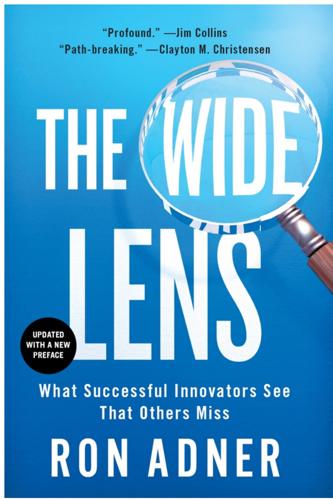
The Wide Lens: What Successful Innovators See That Others Miss
by
Ron Adner
Published 1 Mar 2012
But while it was highly advanced in some features, the iPhone was well behind the curve in others—a substandard still-image camera, an inability to record video, and shockingly, though launched as a data device six years after the start of the 3G revolution, the iPhone was a 2G dinosaur (the 3G version didn’t arrive until July 2008). Even more shocking, the phone was exclusively available from only one carrier in each country where it was launched (AT&T in the United States, T-Mobile in Germany, Orange in France, O2 in the United Kingdom, and Softbank in Japan). In a representative assessment, New York Times technology columnist David Pogue noted, “The bigger problem is the AT&T network. In a Consumer Reports study, AT&T’s signal ranked either last or second to last in 19 out of 20 major cities. . . . You have to use AT&T’s ancient EDGE cellular network, which is excruciatingly slow.”

Broken Markets: A User's Guide to the Post-Finance Economy
by
Kevin Mellyn
Published 18 Jun 2012
More workers, especially young workers, are no longer willing to be salary men, and more women, though not enough, are joining the work force and professions. While institutions to support entrepreneurship and start-ups are weak, there are more of them. Some of the most exciting new concepts in Japanese business are being driven by Softbank, led by the ultimate outsider: a Japanese Korean. There are, of course, problems, but Japan has a national social solidarity and a self-discipline that are very useful under extreme stress. We saw that in the devastating earthquake and tsunami of 2011. Japanese government is highly dysfunctional, even by American standards, and corporate governance and candor sorely wanting.
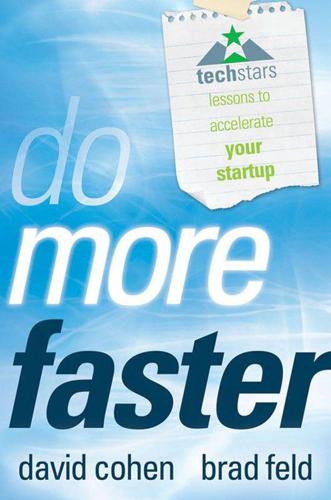
Do More Faster: TechStars Lessons to Accelerate Your Startup
by
Brad Feld
and
David Cohen
Published 18 Oct 2010
At the dawn of the commercial Internet, I co-founded Freeloader with Sunil Paul. As first-time entrepreneurs, we learned as we went along and made plenty of mistakes along the way. What we lacked in experience, we made up for in drive, and before we knew it, we were at the helm of a hot new Internet company funded by Flatiron Partners and SOFTBANK. Four months after our first round of financing, Freeloader was acquired by Individual, Inc. for $ 38 million. While this was viewed as a success, the acquisition happened well before the moment of truth for our business. When I founded my second company, SupportSoft, I had a bit more experience and made building a great startup team a priority.

12 Bytes: How We Got Here. Where We Might Go Next
by
Jeanette Winterson
Published 15 Mar 2021
And when we wind back in time to our own childhood, we realise that we spontaneously formed important relationships with non-human, non-biological, ‘non-living’ creatures of all kinds. Perhaps not even creatures. I had a wall I used to lean against, believing it welcomed me. Here is Pepper, a semi-humanoid robot designed by Soft-Bank Robotics. Some of you may have met Pepper at London’s Eurostar terminal. Pepper is a social-interaction robot designed as a helper-bot. Able to recognise faces, and to respond to greetings and questions, Pepper works in stores, schools, social care, and sometimes in private homes. Results vary. Some folks love the child-size wide-eyed bot.

To Be a Machine: Adventures Among Cyborgs, Utopians, Hackers, and the Futurists Solving the Modest Problem of Death
by
Mark O'Connell
Published 28 Feb 2017
A toy monkey was perched on his shoulder, and in his black leather-gloved hands he held a small device with which he was controlling an arachnoid robot roughly the size of a bull terrier. Standing next to him was another man, who wore a laminated DARPA lanyard around his neck, and who was presumably the father of the sun-hatted toddler, some eight or ten feet away, being chased in a widening circle by the mechanical spider. At the stall of a company called Softbank Robotics, a Frenchman was attempting to convince a four-foot humanoid to hug a three-year-old girl. “Pepper,” he said. “Please hug the little girl.” “I’m sorry,” said Pepper, in an appealingly childlike voice lightly inflected with a Japanese accent and genuine regret. “I didn’t understand.” “Pepper,” said the Frenchman, with elaborate clarity and forbearance.

Fully Automated Luxury Communism
by
Aaron Bastani
Published 10 Jun 2019
‘Social Prosperity for the Future: A Proposal for Universal Basic Services’. University College London Institute for Global Prosperity, 2017. ‘NHS Statistics, Facts and Figures’. NHS Confederation, 14 July 2017. Decarbonisation Klein, Naomi. This Changes Everything: Capitalism vs. the Climate. Penguin Books, 2015. ‘Softbank and Saudi Arabia Announce New Solar Generation Project’. CNBC, 27 March 2018. 11. Reforging the Capitalist State Money for Nothing Martinelli, Luke. ‘Assessing the Case for a Universal Basic Income in the UK.’ University of Bath Institute for Policy Research, September 2017. Van Parijs, Philippe and Yannick Vanderborght.

How Boards Work: And How They Can Work Better in a Chaotic World
by
Dambisa Moyo
Published 3 May 2021
For example, in the wake of the protests, Sundar Pichai—CEO of Google’s parent company, Alphabet—recognized that “the black community is hurting” and pledged $12 million toward organizations that address racial inequality. Some corporations launched public initiatives to help Black people progress within their company ranks, while others created multimillion-dollar funds that target minorities. On June 3, 2020, Goldman Sachs established a $10 million fund to help address racial and economic injustice. SoftBank, a Japanese company focused on technology, launched a $100 million fund to invest in start-ups led by Black Americans and people of color. CEO Tim Cook announced the investment of $100 million in Apple’s racial equity and justice initiative. Beyond this, many executives spoke of the need to educate themselves about the realities of daily racial injustice.

Future Crimes: Everything Is Connected, Everyone Is Vulnerable and What We Can Do About It
by
Marc Goodman
Published 24 Feb 2015
They can play games and carry out limited conversations with speech recognition. Many use the robot’s eyes to transmit live video of your children to your computer or smart phone. NEC’s PaPeRo robot nanny also allows you to speak with your children directly or via text messages, which the robot can read to your child, and SoftBank’s Pepper proclaims that “it can read your child’s emotions and facial expressions and respond appropriately.” Though robo-nannies may prove helpful to sleep-deprived, overworked parents everywhere, another area of personal robotics that is expanding even more rapidly is that of elder-care bots. Given demographic trends and aging populations in developed countries around the world, there is a dearth of caretakers to provide the emotional and physical support required for the elderly.
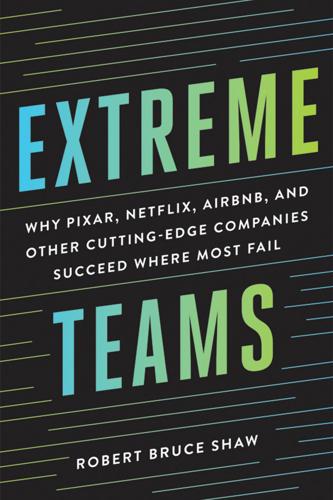
Extreme Teams: Why Pixar, Netflix, AirBnB, and Other Cutting-Edge Companies Succeed Where Most Fail
by
Robert Bruce Shaw
,
James Foster
and
Brilliance Audio
Published 14 Oct 2017
January 9, 2010. 30Brian Cheskey, “Don’t Fuck up the Culture,” Medium, April 20, 2014, medium.com/@bchesky/dont-fuck-up-the-culture-597cde9ee9d4#.sncu86iwl. 31Jack Ma, in a letter to his employees, whom he calls the Aliren, noted, “We believe only a group of people who are passionate about the company and are mission-driven will be able to protect the company from external pressure from competition and temptation to seek short-term gains.” Juro Osawa, “Softbank, Yahoo Support Alibaba’s Partnership Structure,” Wall Street Journal, September 26, 2013. 32Paul Graham, a venture capitalist, notes, “The startup founders who end up richest are not the ones driven by money. The ones driven by money take the big acquisition offer that nearly every successful startup gets en route.

Lab Rats: How Silicon Valley Made Work Miserable for the Rest of Us
by
Dan Lyons
Published 22 Oct 2018
We had spent many hours with them, trying to counsel them. And they were not listening. We had been unable to influence them. We felt we had to hold them accountable. Uber’s culture was toxic.” A few months after the Kapors published their open letter, Uber’s board pushed Kalanick out as CEO. Six months after that, when investment firm SoftBank bought a chunk of Uber, the company’s valuation had dropped by about $20 billion. You can’t blame the Kapors for all of that. Uber had many bigger problems than their open letter. But the incident had been a defining moment. It showed that the Kapors would not be afraid to speak up, even if it could hurt them financially.
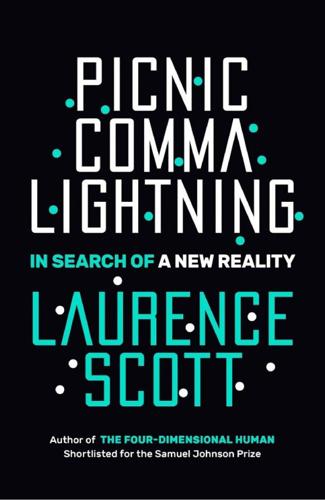
Picnic Comma Lightning: In Search of a New Reality
by
Laurence Scott
Published 11 Jul 2018
Instead they are lumped together under the sign of the sleepy face, with Zs stamped across the brow. Here at last there is a longed-for hint of ambiguity – is this generic snoozer meant to signify the world’s boredom at the troubles of others, or does Facebook assume that the sufferer must simply fall into a swoon at the sadness and unproductivity of it all? Meanwhile, back in the lab, SoftBank corporation’s ‘emotional’ robot, Pepper, has been introduced to the US market after a successful launch in Japan. Pepper can recognise some emotions but, during a demonstration, the boyish, flirtatious machine requested that the Wall Street Journal’s Joanna Stern keep her facial expressions ‘simple’15.

Enshittification: Why Everything Suddenly Got Worse and What to Do About It
by
Cory Doctorow
Published 6 Oct 2025
The majority of US households have Prime, and the majority of Prime households start their shopping search on Amazon and don’t go any further if they find a suitable item. Uber’s a monopsonist, too. Having spent $31 billion of its early investors’ money (mostly drawn from the Saudi royal family, who funneled the funds through the Japanese entrepreneur Masayoshi Son’s venture capital firm SoftBank) subsidizing taxi rides, the company now dominates urban transport. The tens of billions of dollars that Uber blew on subsidies (losing 41 cents on every dollar it brought in for twelve years) convinced many cities that public transit was an irrelevant historical curiosity and that cheap ride hailing would be here forever, prompting a lost decade of disinvestment in transit.
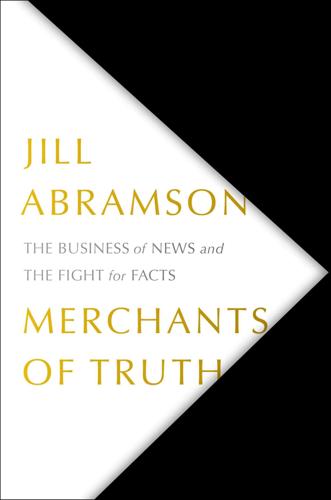
Merchants of Truth: The Business of News and the Fight for Facts
by
Jill Abramson
Published 5 Feb 2019
PART TWO CHAPTER FIVE BUZZFEED II On most summer afternoons, Jonah Peretti raced up the stairs past the Mahjong betting parlor to the experimental lab he had set up in a stuffy, roach-infested workspace in Chinatown. There, with nine others, he pilot-tested humans’ responses to various digital content. He called on some of Ken Lerer’s contacts for his first foray into fundraising and walked away with $3.5 million of venture capital from Softbank, where his friend Eric Hippeau was a managing partner, and Hearst. Peretti now could see search-based publishing waning as the era of social media dawned. “Media and content are human businesses,” he said. At HuffPo he had focused too narrowly on “making content that the robots like.” Moving into position to catch what Lerer would later call “the social wave,” Peretti, for his part, would call on his inexhaustible reserve of analogies to describe the birth of BuzzFeed.
…
Paul Pioneer Press, 424 Samberg, Andy, 54 Samsung, 393 Sandberg, Sheryl, 213 Sanger, David, 371, 382 Saturday Night Live (TV show), 54 Savile, Jimmy, 214 Scaramucci, Anthony, 385–86 Schafer, Gene, 223 Schmidt, Andrea, 358–59 Schmidt, Eric, 54 Schmidt, Michael, 379–80, 392 Schmitt, Eric, 92 Schoofs, Mark, 141–42, 302, 323, 345 Schreiber, Liev, 268 Schumpeter, Joseph, 153 Schweizer, Peter, 378–79 Scroll, 247 search engine optimization (SEO), 30, 31, 74, 242 Seattle Times, 249 September 11, 2001, terrorist attacks, 27, 49, 172 Sessions, Jeff, 416 Shadid, Anthony, 208–9 Shapiro, Ben, 290 Sheehan, Neil, 402 Shepherd, Jack, 38, 112 Shireman, Robert, 252 Shirky, Clay, 75–76, 193, 196 Shitty Media Men, 361 Shulgin, Alexander, 180–81 Sicardi, Arabelle, 117 Siegal, Al, 152, 189 Silver, Nate, 190, 248, 290, 375 Silverman, Craig: on BuzzFeed dress color story, 309 BuzzFeed joined by, 311 cognitive biases studied by, 309–10 fact-checking business of, 310–11 fake news investigations of, 294–95, 296–98, 299–300, 309, 320, 322, 340–41 as online media watchdog, 310 Simkins, Modjeska, 235 Simpson, Glenn, 323 Slim, Carlos, 5, 9 Times loan of, 188, 430 wealth of, 188, 259 “small world” networks, 15–16 smartphones, impact on digital news of, 32–33, 95 Smith, Ben, 224, 301, 411, 427 background of, 125 and blue-black/white-gold dress story, 146 in BuzzFeed 2016 election night coverage, 320, 321 BuzzFeed news team assembled by, 128–29, 130–31 BuzzFeed opinion pieces and, 345 in debate with Sullivan on native advertising, 137 hired as head of BuzzFeed news department, 127–28 IM interviews conducted by, 135 on impact of Facebook’s “sentiment data,” 304–5 importance of Facebook in 2016 election predicted by, 303, 305 journalism career of, 125–26, 131, 133–34 as master of chasing scoops, 131 NewsFeed podcast of, 342 news team expanded by, 141–43 at Politico, 126, 131, 134 posts critical of BuzzFeed advertisers deleted by, 139 in search for new revenue sources, 344 Steele dossier publication approved by, 323–24, 328 Twitter followers of, 126–27, 130 and use of Facebook “sentiment data,” 304 Smith, Shane, 4, 176 authenticity as prized by, 351 in buyback of Vice, 47 CEO title relinquished by, 369, 426 controversial Liberia documentary of, 169–70 embroidered background story of, 42 and evolution of Vice into serious news brand, 158, 171 extravagant spending by, 175–76 HBO weekly show as priority of, 357 international expansion stressed by, 368 Obama interviewed by, 179, 180 as out of touch with Vice employees’ concerns, 364 overtaking CNN as goal of, 346, 348, 369 sexism of, 59 transformative vision of, 60–61 and Trump’s election, 353 as Vice Media cofounder, 43–44 Vice News as envisioned by, 346, 369 and Vice News Tonight, 353 and Vice’s move into video, 56–57 and Vice’s sexist culture, 363–64 on Vice TV show Emmy nomination, 179 Virtue advertising agency created by, 158 Snapchat, 178, 249, 329, 412 Snowden, Edward, 80 NSA documents leaked by, 80, 215, 259–60, 268, 382 Times mistrusted by, 215 Social Intelligence Report, 110–11 social media, 232 credibility of news services as unimportant on, 294–95 explosion of, 30–32, 103 as news platforms, 294–95 Post content posted by, 412 power of, 5–6 as primary source of news for majority of Americans, 274 Social Network Soiree, 19 Softbank, 103 Sontag, Deborah, 402 Sorkin, Andrew Ross, 375 DealBook and, 189–90 Southern Poverty Law Center, 368 Spayd, Liz, 384, 385 Spencer, Richard, 353 Spicer, Sean, 339 Spotlight (film), 198, 255, 268 Steel, Emily, 362–63 Steele, Christopher, 323, 384 Steele dossier: critiques of BuzzFeed’s publication of, 324–25 lawsuits over, 326, 327–28 unverified claims in, 323 Steiger, Paul, 223, 408 Steiger, Wendy, 223 Steinberg, Jon, 120, 132, 135 Stelter, Brian, 184 “stickiness,” 23, 30, 204 Stopera, Dave, 116 Stopera, Matt, 104, 107, 108, 116, 288 as BuzzFeed early hire, 37–39 and BuzzFeed “List” formula, 117–18 as BuzzFeed’s relatability expert, 115–16 as expert on trend dynamics, 123 gender politics stories emphasized by, 140–41 on importance of adding reporting to BuzzFeed mix, 123–24 and “making a thing a thing,” 287 in move to BuzzFeed newsroom, 128–29 nostalgic posts by, 118 as trend dynamics expert, 123, 144 in 2012 election coverage, 135 Strange Justice (Mayer and Abramson), 196 Sullivan, Andrew, 22, 94, 137 Sullivan, Margaret, 324, 380, 385 Sulzberger, Annie, 65 Sulzberger, Arthur Gregg, 193, 203, 426 Abramson’s relationship with, 395, 396 as candidate for Times publisher position, 65, 394–96 innovation demanded by, 396, 398 named Times editor, 395, 396 reporting career of, 395 “Times Innovation Report” and, 218–20, 394 Times news staff joined by, 197 as Times publisher, 373, 430 on Times’s mistakes in election coverage, 376 Sulzberger, Arthur Ochs, Jr., 1, 5, 9, 407 Abramson fired by, 221–24 Abramson named as executive editor by, 201–2 Abramson’s relationship with, 197–98, 207–8, 216, 402 and blurring of line between news and business departments, 69–70, 189 business-side job cuts by, 191 Chinese princelings story and, 206, 207 Google investment declined by, 97 Keller and, 66, 67–68 lasting achievements of, 427, 429 “last man standing” strategy of, 70–71 liberal views of, 78 news staff cuts and, 70–71, 186, 187, 190–91 premium projects envisioned by, 189 and purchase of Post’s share in International Herald Tribune, 66, 86 retirement party of, 429–30 Robinson fired by, 202–3 shareholder unhappiness with, 63, 74 Times’s future as envisioned by, 62–63 unflattering articles on, 64, 74–75, 79, 183, 187 and Wall Street Journal rivalry, 183 website paywall ordered by, 193–94 Sulzberger, Arthur Ochs, Sr.

The Corruption of Capitalism: Why Rentiers Thrive and Work Does Not Pay
by
Guy Standing
Published 13 Jul 2016
This is not competition based on quality of service. It is a surrogate war waged by big-player financial capital on both sides. A similar battle is taking place in India between Uber and Ola Cabs, which has raised capital from investors including Russian billionaire Yuri Milner’s DST Global investment company, Japanese technology company SoftBank and Didi Kuaidi itself. In late 2015, Uber was operating in twenty-two Indian cities with about 250,000 drivers, while Ola, operating in 102 cities, claimed even more. In the first round of this predatory model, the taskers (in this case drivers) may be among the beneficiaries, receiving loyalty premiums.
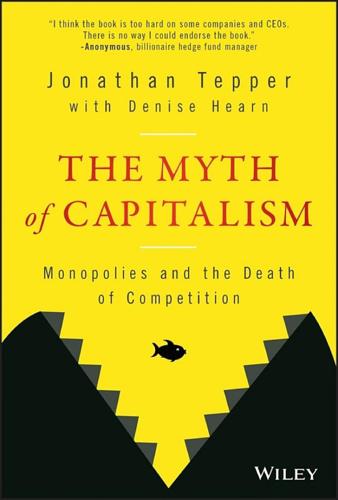
The Myth of Capitalism: Monopolies and the Death of Competition
by
Jonathan Tepper
Published 20 Nov 2018
Jeremy Conrad, a partner at hardware incubator Lemnos Labs, said, “These were some of the most exciting robotics companies, and they're just gone.”52 Google faced internal fears of being associated with terrifying machines that may take over human jobs, and Boston Dynamics was not part of its key search ad business.53 In June 8, 2017, Google announced the sale of the company to Japan's SoftBank Group. The phenomenon is not new. We've seen giant monopolies throw away innovation before. During the 1960s and early 1970s, Xerox had a monopoly on its copying technology, protected by its patents. Xerox's Palo Alto Research Center basically invented the modern computer and internet, yet failed to profit from it.
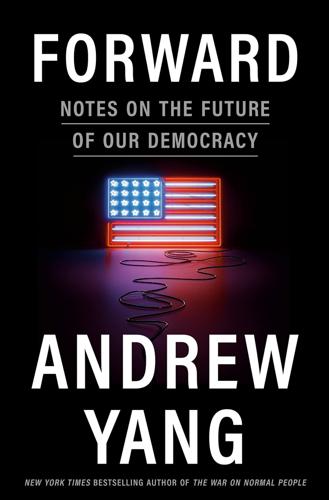
Forward: Notes on the Future of Our Democracy
by
Andrew Yang
Published 15 Nov 2021
A beloved institution, the Register was owned by the Cowles family of Des Moines until 1985, under whom it won six Pulitzer Prizes for National Reporting. In 1985, it was sold to Gannett, which owns and publishes hundreds of newspapers, before Gannett itself was bought by GateHouse Media in 2019. GateHouse is a holding company managed by the private equity firm Fortress Investment Group. Fortress, in turn, is owned by SoftBank, a Japanese conglomerate. The combined entity, which kept the name Gannett, owns and operates five hundred newspapers in addition to The Des Moines Register, including USA Today, the Detroit Free Press, and the Milwaukee Journal Sentinel. When The Des Moines Register was changing owners in 2019, a reporter from the paper confided to me that “people at the paper are nervous.
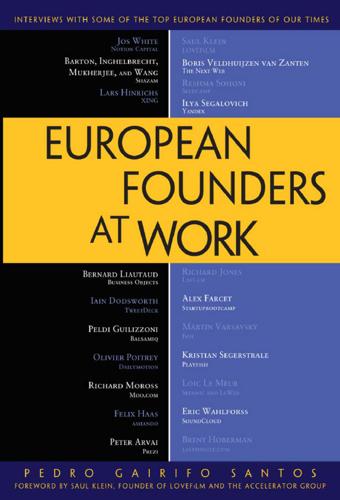
European Founders at Work
by
Pedro Gairifo Santos
Published 7 Nov 2011
But then I had the third idea of Fon, which was to work with the people who were supposed to be our enemies to begin with … the telecom companies. And then we ended up creating BT Fon, for example, British Telecom, and many other associations like that in other countries around the world. Like with SoftBank in Japan, or MTS in Russia, or Zon in Portugal, SFR in France, or Belgacom in Belgium, and so on. And then Fon really worked. But the other thing that made Fon work was the advent of the iPhone. The iPhone and Androids, but first the iPhone massively created a need for public Wi-Fi, or Wi-Fi everywhere.
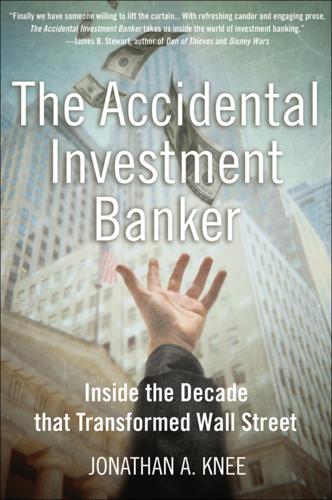
The Accidental Investment Banker: Inside the Decade That Transformed Wall Street
by
Jonathan A. Knee
Published 31 Jul 2006
Where a banker’s job ends once the deal closes, an investor’s job is just beginning once the investment is made. Yet every major bank had high-profile defections to the worlds of private equity and venture capital. Rex Golding, the able head of Morgan Stanley’s technology group, went to be a partner at a venture fund backed by Softbank. Chris Flowers, leader of Goldman Sachs’s financial institutions practice, joined up with Ripplewood Holdings. Steve Rattner, the hugely successful media banker from Lazard, raised $1 billion with three partners. Bruce Wasserstein’s well-earned nickname, “Bid ‘em up Bruce,” might sound attractive if one had a company to sell but much less so if one had money to invest.

Empire of the Sum: The Rise and Reign of the Pocket Calculator
by
Keith Houston
Published 22 Aug 2023
Then, in 1959, Fairchild’s Robert Noyce combined two breakthroughs—an improvement in chip fabrication pioneered by his colleague Jean Hoerni, and his own novel process* for depositing electrical circuits directly onto silicon chips—to transform the integrated chip from a hand-soldered curiosity to a mass-produced commodity.6 The Japanese semiconductor industry leaned heavily on Noyce’s “planar” technique, and Sasaki’s own rise at Sharp owed much to his licensing of it.7 “Rocket” Sasaki was a formidable figure in his own right.8 He had persuaded Rockwell, an American semiconductor firm, to gamble on a new type of low-power, high-density microchip and had negotiated an exclusive contract to buy Rockwell’s production of such chips.9 These metal-oxide semiconductor large-scale integrated chips—MOS LSI, for short—powered Sharp’s handheld QT-8D and QT-8B calculators and helped make them persuasive alternatives to Canon’s Pocketronic.10 Sasaki would go on to become a doyen of Japan’s electronics industry, with both Apple’s Steve Jobs and Masayoshi Son of Japan’s giant SoftBank conglomerate happy to call him a mentor.11 For now, though, Sasaki had bad news for his guests. Sharp’s deal with Rockwell forbade the Japanese company from buying chips from anyone else, even the one and only Robert Noyce.12 But perhaps Sasaki could help in another way. He had been keeping a close eye on the fortunes of Busicom, a much smaller calculator maker led by a fellow alumnus of Kyoto University, and he thought that Busicom and Intel might do business together.

Palo Alto: A History of California, Capitalism, and the World
by
Malcolm Harris
Published 14 Feb 2023
He put $380 million in Twitter, and in 2011 he teamed with famed Silicon Valley angel Ron Conway to offer $150,000 to each and every start-up in the Bay Area tech accelerator Y Combinator, laying down a bet on the whole regional ecosystem.29 When it came out in 2017 that a significant amount of DST’s capital originated with the Russian state, the news yielded shrugs in the industry.30 No one could suck that kind of money out of the country without close ties to the government.vii And besides, sovereign wealth funds invest in Silicon Valley all the time. Saudi prince Al Waleed bin Talal made a crucial nine-figure investment in Apple in 1997.31 SoftBank, one of the biggest investment funds hunting in Silicon Valley, got most of its game-changing $100 billion Vision Fund from Gulf monarchies.32 Why wouldn’t Putin want to put money in Facebook? As far as the gangster state was concerned, there was no better place to allocate the nation’s cash. Based on the numbers, it’s hard to disagree, and in Silicon Valley, which Milner now calls home, he’s in good standing in the highest reaches of the capitalist elite.
…
Peltz and Tracey Lien, “Russian Billionaire Yuri Milner’s Early Backing of Facebook, Twitter Had Kremlin Ties,” Los Angeles Times, November 7, 2017. 31. Bloomberg News, “Saudi Arabian Prince Says He Bought Stake in Apple,” New York Times, April 2, 1997. 32. Alexander Martin, Alec Macfarlane, and Margherita Stancati, “SoftBank and Saudi Arabia Team Up for $100 Billion Tech Fund,” Wall Street Journal, October 14, 2016. 33. Joanna Glasner, “These Are the US Startups That Russian Investors Are Backing,” TechCrunch, November 11, 2017, https://social.techcrunch.com/2017/11/11/these-are-the-us-startups-that-russian-investors-are-backing. 34.
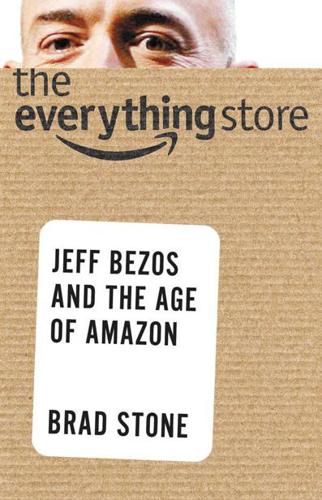
The Everything Store: Jeff Bezos and the Age of Amazon
by
Brad Stone
Published 14 Oct 2013
Nevertheless, by 2000, according to an internal company memo, Bezos was telling colleagues that by the time Amazon got to $200 billion in annual sales, he wanted revenues to be split evenly between sales from products it sold itself and commissions that it collected from other sellers who used Amazon.com. Ironically, it was the industrywide overreach of 1999 that finally sent Amazon down the path of becoming a platform. Toys “R” Us, though it had taken a $60 million investment from SoftBank and the private equity firm Mobius Equity Partners to create the Internet subsidiary ToysRUs.com, stumbled badly during the 1999 holidays. The offline retailer suffered a raft of negative publicity from frequent outages of its website and late shipments of orders, which in some cases missed Christmas altogether.

The Upstarts: How Uber, Airbnb, and the Killer Companies of the New Silicon Valley Are Changing the World
by
Brad Stone
Published 30 Jan 2017
By doling out generous subsidies in 2014, Didi was burning through a hundred thousand dollars every day in the proxy war with Kuaidi, according to one of its investors. That year it raised $800 million in two separate rounds of funding from Tencent and the Russian venture capital firm DST Global, among other investors, while Kuaidi raised nearly as much from Alibaba, the Japanese tech conglomerate Softbank, and the private equity firm Tiger Global.15 Cheng Wei was proving himself a clever and adaptable CEO, but at this rate, the battle with Kuaidi was going to be financially ruinous for everyone involved. Didi’s and Kuaidi’s investors eventually realized the folly of their mounting rivalry. With Travis Kalanick starting to eye China as Uber’s next big opportunity, they urged an armistice between the two startups and their corporate backers.
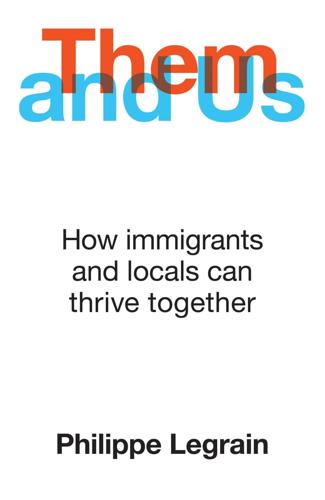
Them and Us: How Immigrants and Locals Can Thrive Together
by
Philippe Legrain
Published 14 Oct 2020
Some 12.5 percent of migrants were starting a business or running a young firm in 2017, compared to 8.2 percent of UK-born lifelong residents.14 Non-whites were nearly twice as likely – 14.5 percent – to be starting a business as whites: 7.9 percent.15 Contrary to the belief that migrants tend to become entrepreneurs out of necessity – because they can’t find a suitable job – almost all say they do so to seize opportunities that they spy. Immigrants founded many longer-established UK companies too. The country’s most valuable technology company, Arm Holdings, which designs the chips in most smartphones and was bought by Japan’s Softbank in 2016 for £23.4 billion, was co-founded by Austrian-born Herman Hauser. EasyJet, Britain’s biggest – and Europe’s second-biggest – low-cost airline, was set up by a Greek entrepreneur, Stelios Haji-Ioannou. Sukhpal Singh Ahluwalia arrived in the UK in 1972 at the age of thirteen as a refugee from Idi Amin’s regime in Uganda.

Careless People: A Cautionary Tale of Power, Greed, and Lost Idealism
by
Sarah Wynn-Williams
Published 11 Mar 2025
If they come back from that, maybe they attempt their own start-up or fund or, most likely, philanthropy. None of this sounds very enticing. Given the scale of Mark’s affluence, what actually matters to him? It’s unfathomable to me. This endless wealth. I try to explain that to him over dinner. “I was actually talking about this with Masa the other day,” Mark responds. Masayoshi Son is CEO of SoftBank, a Japanese conglomerate that invests heavily in technology companies, including many of the buzzy start-ups Mark’s interested in. “And we both agree.” “Agree on what?” “The most important thing.” “What is it?” “Food,” he says, lifting a chopstick toward his mouth. A dangling piece of fried deliciousness hangs in the air near his lips.
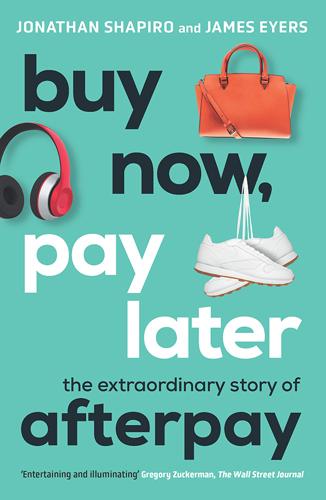
Buy Now, Pay Later: The Extraordinary Story of Afterpay
by
Jonathan Shapiro
and
James Eyers
Published 2 Aug 2021
Tencent provided a comment via chief strategy officer James Mitchell, a former Goldman Sachs banker, who complimented Afterpay’s ‘customer centric, interest-free approach as well as its integrated retail presence and ability to add significant value for its merchant base’. There was speculation that Tencent’s arrival had been opportunistic and made by stealth. But the coordinated press release suggested an alliance of sorts. Afterpay’s success had not gone unnoticed by Big Tech. The company had been in dialogue with the likes of Tencent and Japan’s Softbank, which had invested aggressively in promising tech plays. But it was no coincidence that Tencent had found itself investing alongside the Tiger Cubs. The Chinese tech giant also became a savvy investor in both private and public technology companies, and had a stake in Epic Games, the maker of the smash hit video game Fortnite.
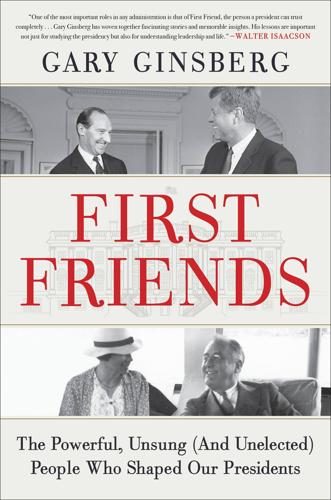
First Friends: The Powerful, Unsung (And Unelected) People Who Shaped Our Presidents
by
Gary Ginsberg
Published 14 Sep 2021
A lawyer by training, he has spent his professional career at the intersection of media, politics, and law. He worked for the Clinton administration, was a senior editor and counsel at the political magazine George, and then spent the next two decades in executive positions in media and technology at News Corporation, Time Warner, and SoftBank. He has published pieces in the the New York Times and the Wall Street Journal and was an on-air political contributor in the early days of MSNBC. He lives in New York City with his wife and two sons. This is his first book. Bibliography 1. Thomas Jefferson and James Madison: Founding Partners Brant, Irving.

Surveillance Valley: The Rise of the Military-Digital Complex
by
Yasha Levine
Published 6 Feb 2018
And now we are on the front end of the spear that is commercializing this technology” (Brian X. Chen, “Google’s Super Satellite Captures First Image,” Wired, October 8, 2008). 141. John Markoff, “Google Adds to Its Menagerie of Robots,” New York Times, December 14, 2013; Alex Hern, “Alphabet Sells Off ‘BigDog’ Robot Maker Boston Dynamics to Softbank,” Guardian, June 9, 2017. 142. Yasha Levine, “From Russia, with Panic: Cozy Bears, Unsourced Hacks—and a Silicon Valley Shakedown,” The Baffler, March 2017, https://thebaffler.com/salvos/from-russia-with-panic-levine. 143. Started as Google Ideas in 2010, it was rebranded as JigSaw in 2016. Eric Schmidt described its mission when announcing the name change.
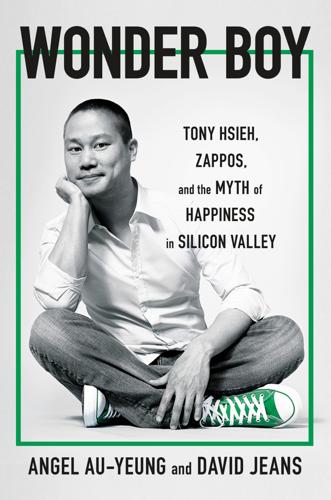
Wonder Boy: Tony Hsieh, Zappos, and the Myth of Happiness in Silicon Valley
by
Angel Au-Yeung
and
David Jeans
Published 25 Apr 2023
It would go through several iterations, including noodle dishes and boba. At one point its menu had a tech industry theme, with cocktails named after venture funds on Sand Hill Road, the famous street in Palo Alto where all the biggest firms like Kleiner Perkins and Accel were located. The dishes, meanwhile, were named after tech companies, like SoftBank Chicken Satay and Cisco Chinese Chicken Salad. More than a decade before Adam Neumann, the Israeli entrepreneur and marketing spin doctor who blurred the lines between work, play, and other parts of life with the ethos of the co-working venture WeWork and its residential arm WeLive, Tony fused those elements together at 1000 Van Ness, just as he had done at Harvard.
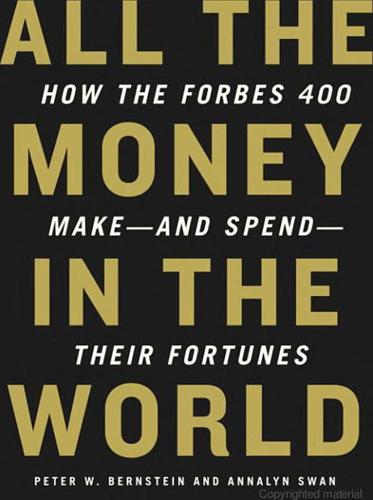
All the Money in the World
by
Peter W. Bernstein
Published 17 Dec 2008
But people are afraid to lose, and one of the main characteristics of practicing entrepreneurship is to be unafraid of losing. If you are afraid of losing you will never attack something. It’s good to have a risk-taking mentality. Even if I do lose I am not frightened to get up and try again.” Adelson showed no fear in his attack on the Vegas gaming and hotel industry. In 1995 he sold COMDEX to the Japanese firm SoftBank for $862 million (Adelson’s stake was worth $510 million). Rather than cash in his chips, he plowed them right back into a new venture. He demolished the loss-making Sands hotel and built in its place the four-thousand-room Venetian at a cost of $1.5 billion. Adelson’s stake in the venture was almost $450 million in cash and land, with a further $500 million raised in bonds underwritten by Goldman Sachs.
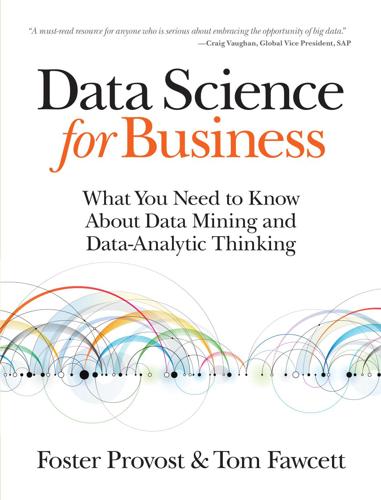
Data Science for Business: What You Need to Know About Data Mining and Data-Analytic Thinking
by
Foster Provost
and
Tom Fawcett
Published 30 Jun 2013
Superficially, these stories were similar, though the specific topics varied: Apple introduces iPhone "push" e-mail software Apple CFO sees 2nd-qtr margin of about 32 pct Apple says confident in 2008 iPhone sales goal Apple CFO expects flat gross margin in 3rd-quarter Apple to talk iPhone software plans on March 6 Cluster 5. This cluster’s stories were about the iPhone and deals to sell iPhones in other countries: MegaFon says to sell Apple iPhone in Russia Thai True Move in deal with Apple to sell 3G iPhone Russian retailers to start Apple iPhone sales Oct 3 Thai AIS in talks with Apple on iPhone launch Softbank says to sell Apple's iPhone in Japan Cluster 6. One class of stories reports on stock price movements outside of normal trading hours (known as Before and After the Bell): Before the Bell-Apple inches up on broker action Before the Bell-Apple shares up 1.6 pct before the bell BEFORE THE BELL-Apple slides on broker downgrades After the Bell-Apple shares slip After the Bell-Apple shares extend decline Centroid 7.

Amazon Unbound: Jeff Bezos and the Invention of a Global Empire
by
Brad Stone
Published 10 May 2021
He pursued the acquisition earnestly, according to several colleagues—even over any concerns from Amit Agarwal, who would have the frightening responsibility of integrating two disparate brands and money-losing supply chains. In March 2018, Bezos hosted Sachin Bansal and Flipkart CEO Kalyan Krishnamurthy in the boathouse behind his home on Lake Washington. A few weeks later, he spoke over the phone with two of Flipkart’s most influential backers, Tiger Global partner Lee Fixel and SoftBank chairman Masayoshi Son, aka “Masa,” who particularly favored a deal with Amazon over Walmart and seemed determined to enlist Bezos as a long-term ally. The sticking point in the Amazon-Flipkart talks was a breakup fee. Flipkart’s investors feared the uncertainty of the regulatory review process and knew of Amazon’s infamous reputation for engaging in discussions only to not follow through, or to try to raise the price for a more determined rival.

Fancy Bear Goes Phishing: The Dark History of the Information Age, in Five Extraordinary Hacks
by
Scott J. Shapiro
The Hiptop came with a free email account, but you could use several email accounts at the same time. The email client was so sophisticated that it could display images and download attachments. It even supported a limited set of emojis, including the smiley face (the full set, unfortunately, was under copyright to Japan’s SoftBank). As for apps, the Hiptop came with a notepad, to-do list, address book, and calendar. It came loaded with a web browser, instant messaging for multiple platforms (AOL, Yahoo, and Microsoft), and, of course, texting. The most revolutionary aspect of the Hiptop was that it was always connected. As soon as data was entered into the phone, it was backed up to the cloud.
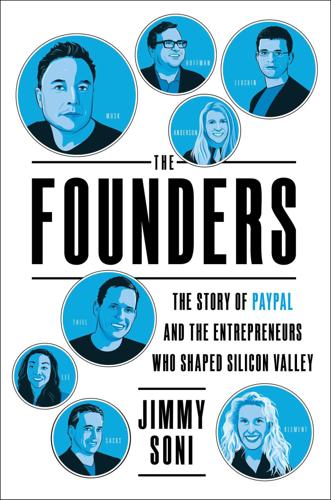
The Founders: The Story of Paypal and the Entrepreneurs Who Shaped Silicon Valley
by
Jimmy Soni
Published 22 Feb 2022
“Zip2’s groundbreaking maps and directions are some of the most powerful real-world applications of Java on the internet today,” said Dr. Tucker in a (much-improved) Zip2 press release. “The true convergence of advanced technology and everyday practicality.” Zip2 grew throughout late 1996 and 1997, as Knight Ridder, SoftBank, Hearst, Pulitzer Publishing, Morris Communications, and the New York Times Company invested millions. Only two years into its existence, the company powered sections of 140 different newspaper websites. “By mid-1997… Zip2 had become an entity that, in effect, functioned as a kind of mini-Microsoft,” wrote one industry observer.
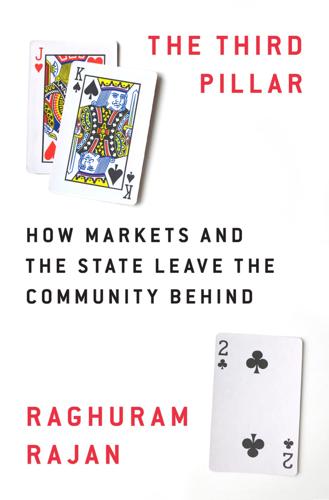
The Third Pillar: How Markets and the State Leave the Community Behind
by
Raghuram Rajan
Published 26 Feb 2019
Its workers are staying in the workforce longer, beyond the normal retirement age, and women are working outside the home at a greater rate. At some point, these additional sources of labor will reach their limits. Recognizing this, Japan also plans to automate more, using robots to substitute for the lack of workers. For example, Pepper, a big-eyed humanoid robot made by SoftBank, can lead exercise activities for a group of the elderly, talk to lonely patients in nursing homes, and patrol corridors at night. There is another solution, though: Allow more immigration. After all, humans are still considerably more flexible than robots in accomplishing a variety of tasks.
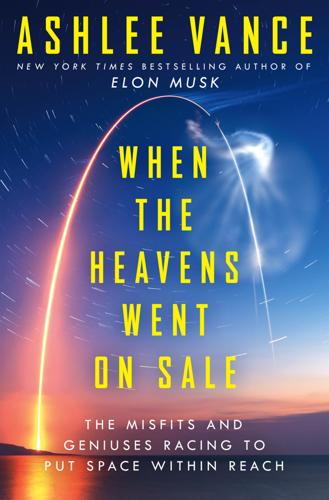
When the Heavens Went on Sale: The Misfits and Geniuses Racing to Put Space Within Reach
by
Ashlee Vance
Published 8 May 2023
Like SpaceX, it was inspired by Planet’s technology and began planning a massive space internet system at the same time as Elon Musk. It has already put up hundreds of satellites with the help of European and Russian rockets. None of this is cheap. Through the early part of 2022, OneWeb had raised a staggering $4.7 billion from investors such as the UK government, Coca-Cola, SoftBank, and Richard Branson’s Virgin Group. Though SpaceX has the advantage of owning its own rockets, it, too, has needed to raise billions of dollars to fund Starlink. Outside these major players, there are yet more companies of various shapes and sizes hoping to build space internet systems. They’re all competing for the communications spectrum that will carry their signals from orbit down to the ground and for space in space.

On the Edge: The Art of Risking Everything
by
Nate Silver
Published 12 Aug 2024
GO TO NOTE REFERENCE IN TEXT expanded far too quickly: Amy Chozick, “Adam Neumann and the Art of Failing Up,” The New York Times, November 2, 2019, sec. Business, nytimes.com/2019/11/02/business/adam-neumann-wework-exit-package.html. GO TO NOTE REFERENCE IN TEXT enormous annual losses: Rani Molla, “The WeWork Mess, Explained,” Vox, September 23, 2019, vox.com/recode/2019/9/23/20879656/wework-mess-explained-ipo-softbank. GO TO NOTE REFERENCE IN TEXT reported on elsewhere: Kate Clark, “Andreessen Horowitz’s AI Crusader Emerges as a Confidant of the Founders,” The Information, June 3, 2023, theinformation.com/articles/andreessen-horowitzs-ai-crusader. GO TO NOTE REFERENCE IN TEXT common to find: “Elon Musk Reveals He Has Asperger’s on Saturday Night Live,” May 9, 2021, bbc.com/news/world-us-canada-57045770.
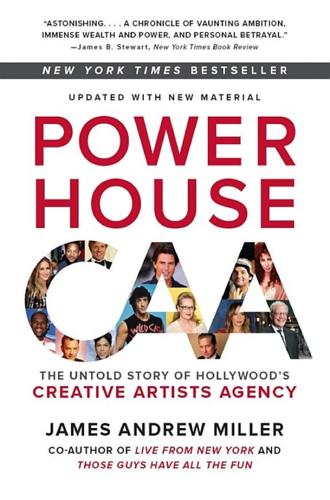
Powerhouse: The Untold Story of Hollywood's Creative Artists Agency
by
James Andrew Miller
Published 8 Aug 2016
Both CAA and WME/IMG are structured in ways that might have seemed outlandish a few decades ago. CAA is 52 percent owned by TPG, whose roots and primary focus lie, generally speaking, far from Southern California sunshine. WME/IMG is now on the receiving end of investments from Silver Lake, which has the largest stake in the company at 49 percent, Softbank, the Japanese media and telecommunications giant, that has 8 percent, and Fidelity Management, which has roughly 2 percent. (WME/IMG holds approximately 41 percent of the company’s equity, and there are several smaller investors as well.) WME/IMG’s estimated market cap is around $5.6 billion, compared to CAA’s just over $1 billion, with WME boasting more than twice the workforce that CAA employs.
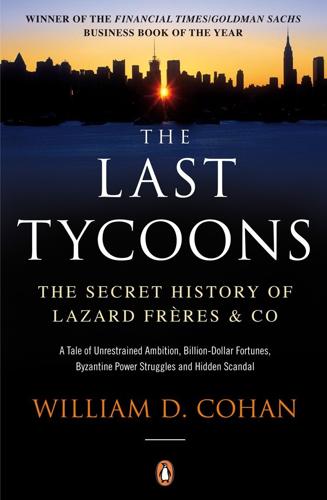
The Last Tycoons: The Secret History of Lazard Frères & Co.
by
William D. Cohan
Published 25 Dec 2015
Before long, Steve had contacted Forstmann Little, and the firm quickly made a preemptive bid, buying 95 percent of the company for $1.4 billion. Forstmann's offer of speed and certainty to the seller had prevented other buyers from having a chance to get the business. But others were still interested. Ten months after Forstmann closed the Ziff Davis deal, the SoftBank Corp. of Japan formalized its interest and bought the company for $2.1 billion, a profit of $700 million for Forstmann--one of the more stunning and lucrative buyout deals of the 1990s. Steve advised Forstmann on the sale. Then, if all this wasn't enough, Steve represented another buddy, Amos Hostetter, in the sale of his cable company, Continental Cablevision, for $10.8 billion to the telephone company US West.